
- South Africa
- Czech Republic
- United Arab Emirates
- Puerto Rico
- South Dakota
- West Virginia
- Accommodation
- Travel Gear
- Itineraries
- Travel Blogging + Photography
- Where I’ve Been
- Bucket List

A Local’s Mongolia Itinerary for First Timers (and Why it Needs to Be on Your Bucket List)
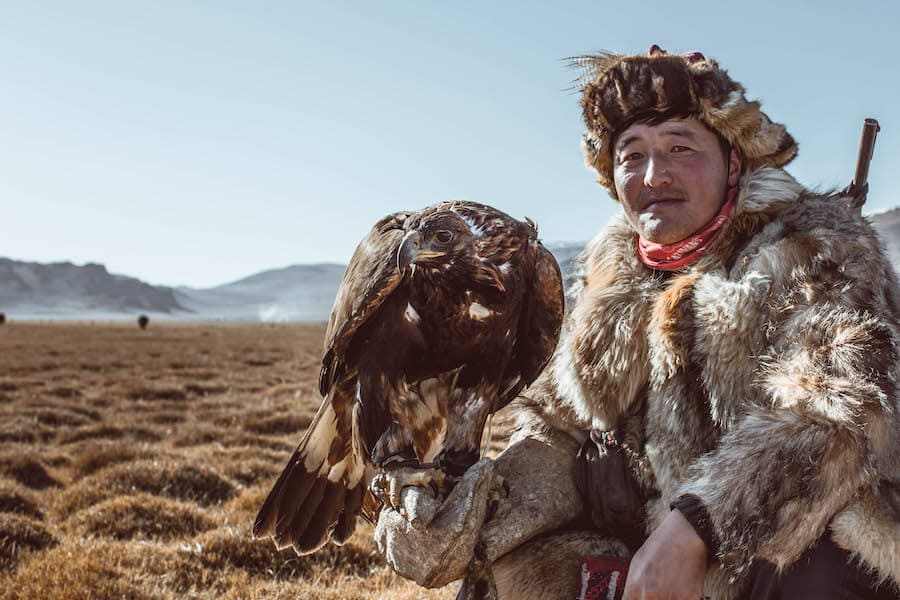
Ever dreamed of visiting Mongolia? The thought might seem daunting or a bit out of your comfort zone, which is why I’ve enlisted Mongolia expert Breanna Wilson to share her top tips and Mongolia itinerary–3 in fact–to jumpstart your planning process. Keep reading for a deep dive into everything you need to know about exploring this vast country.
It was by accident that I visited Mongolia a few years ago. I knew nothing about the place (except for some hazy memory from high school history of a Mongol ruler named Genghis who did that one thing, that one time, 800 years ago).
But I had just quit my full-time job, had a hefty tax refund in my bank account, and had just been introduced to some guy on Instagram. “That guy” quite literally changed my life. (And not in some mushy rom-com kinda way. We’re better than that, girls. He’s now one of my dearest friends in life as well as a badass business and adventure partner. We all need an Erik Cooper in our lives.)
Today, Mongolia is my part-time home (I split my time between Ulaanbaatar and Tbilisi, Georgia) and is a place that I’ll forever have a fascination with and passion for. It’s not an easy place to live (by any means), but that’s what I love about it.
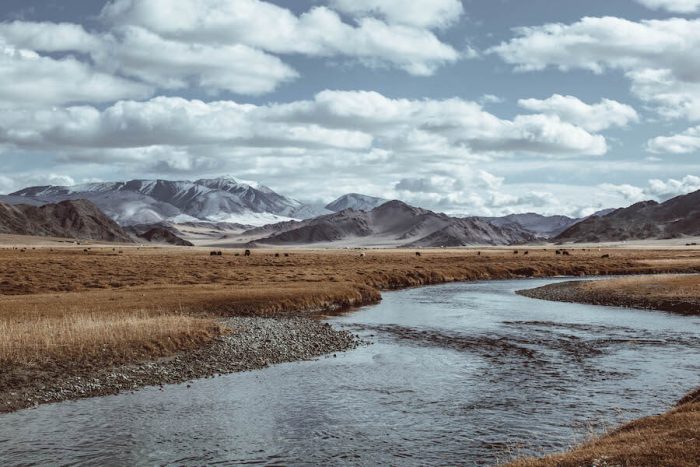
Everything about Mongolia pushes you. Pushes you to your limits. Pushes what you thought you knew about yourself. Pushes you to open your eyes and your mind. Mother Mongolia, as I like to call her, doesn’t mess around; just when you think you have everything under control, she throws something unexpected your way.
It’s a place where you truly have to let go–let go of control, schedules, and yourself. The only way to truly experience Mongolia and everything she has to offer is to let go. Once you do, she’ll show you everything you’ve ever wanted to know about yourself, and so much more.
After two years in the country, I still discover new things every day. From befriending reindeer riders, Kazakh eagle hunters, and Gobi Desert camel herders to uncovering unexpected street art and fashion scenes, underground jazz clubs, and experimental cuisines, I never grow tired of what this country has to offer.
Which is exactly what led me to launch Meanwhile in Mongolia –to share my experiences of scuba diving in the world’s most landlocked country to hiking volcanic craters, and everything in-between.
That’s why I love Mongolia and why I think it should be on everyone’s bucket list. But don’t just take it from me, it’s a place that you need to experience for yourself. And when you do, well, here’s everything you need to know about visiting Mongolia for the first time.
See you there.
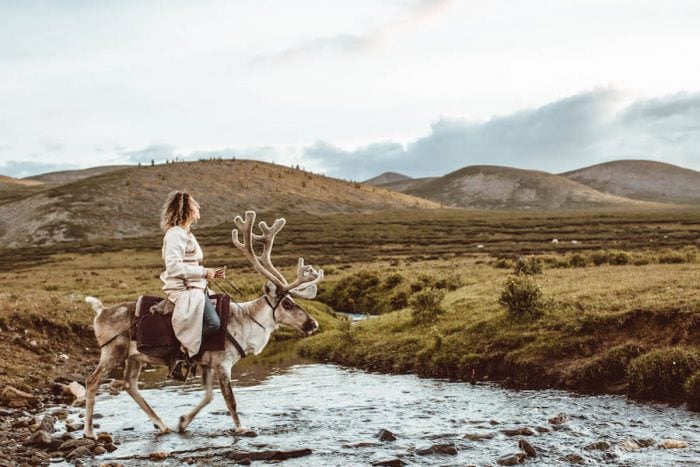
Why Mongolia Should Be at the Top of Your Bucket List
From riding reindeer to hunting with eagles, swimming in color-changing lakes or cruising on camels across the Gobi Desert, visiting Mongolia puts your wanderlust into overdrive.
Some of my favorite adventures include:
- Winter Dog Sledding in Gorkhi Terelj National Park
- Motorcycling Across Mongolia in Vintage Russian Urals
- Learning to Hunt with Eagles from the Kazakh Eagle Hunters in the West
- Riding Reindeer Across the Taiga in the Northern Provinces
Is Mongolia Safe for Female Travelers?
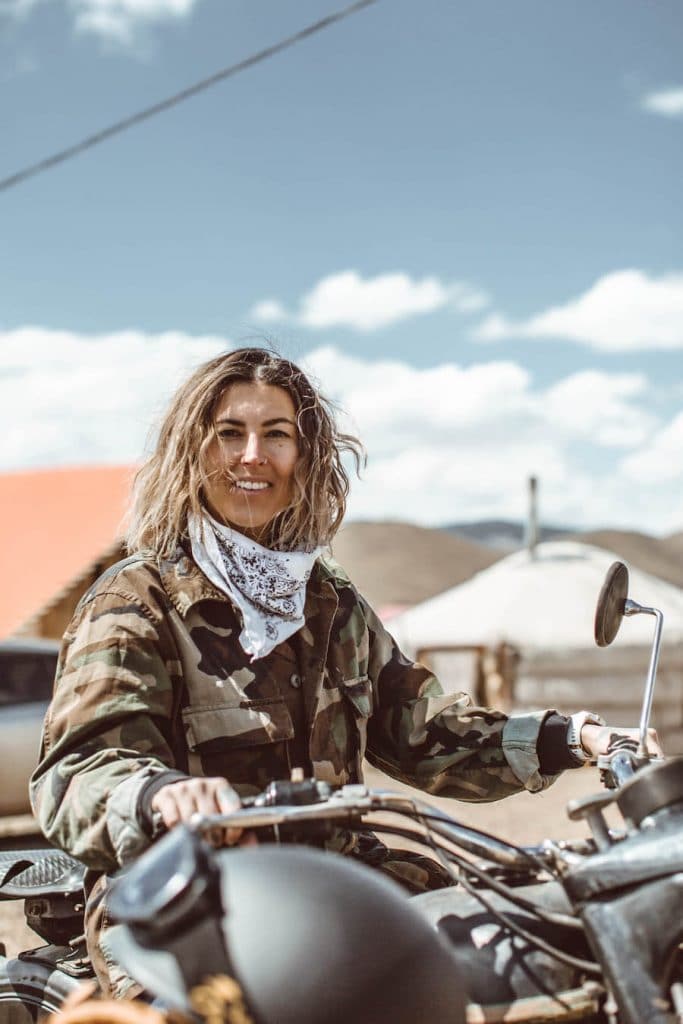
Is Mongolia safe? It’s the number one question people have about traveling to Mongolia, especially solo female travelers like myself (it was my biggest fear about moving here as well).
Mongolia is like any other country–there are parts that are extremely safe, and parts where you’ll need to be cautious. There’s no point in sugarcoating this: foreigners absolutely stand out here. Because of this, I do not recommend females travel around the country by themselves. I say this for a few reasons.
First, you’re remote. Like, remote, remote. There’s no one around for miles and miles. So, if you’re driving solo in a rental car and get a flat tire (or worse), you’re all alone. No AAA. No 911. It’s up to you to figure out this problem, and I can almost guarantee it won’t be a little one. Mongolia is a rough and rugged place.
Second, alcoholism is very common among locals. I’m not saying this to make you think all Mongolians are alcoholics, but only to provide 100% clarity on what you’re getting into.
So, if you’re staying in a ger (also known as a yurt) with a family, be aware of both your and the family’s alcohol consumption. We all know that alcohol can increase aggression, and miscommunication without a clear understanding of cultural nuances or the language leads to increased frustrations. Create a safe experience for yourself by avoiding these situations altogether.
Overall, Mongolia is a place where guns are rare (unless you’re in the countryside protecting a herd), and although pick pockets and petty theft are common, that’s the worst of it. Wars and political unrest are practically unheard of, and natural disasters are nearly impossible.
Read More Travel Guides:
7 things you have to do on your first trip to morocco, an india bucket list for photographers, how to spend one day in abu dhabi, a 1-day north bali itinerary from ubud.
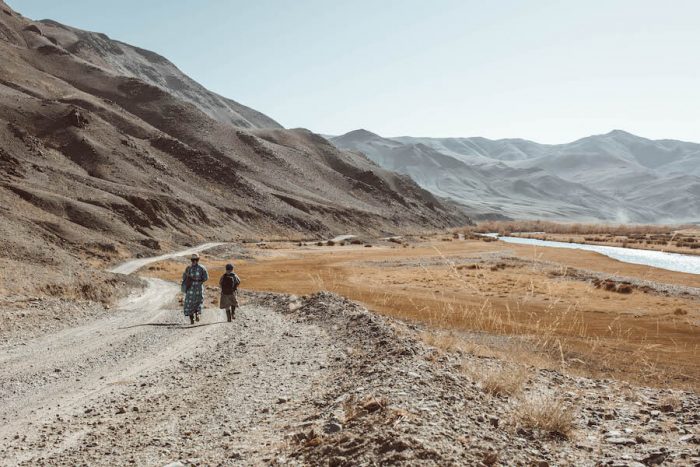
When to Go to Mongolia
Summer is the absolute best time to visit Mongolia (unless you really enjoy -40 C/F weather).
In May you still face the risk of getting stuck in a snowstorm, but by June temperatures are warm. Rain is common, but it won’t ruin your trip.
July is when Naadam, the biggest festival of the year, takes place. The entire country shuts down for about two weeks usually starting around the second weekend of the month. Horse races, wrestling matches, and archery all take place across the country during this time. It’s an incredible way to experience Mongolian culture.
August is hot and a great time to escape north to higher elevations or to Lake Khovsgol, the second largest freshwater lake in Mongolia (after Lake Baikal).
September and October are just as wonderful but be prepared for cold nights. Ger camps start to close down for the season during this time, and some nomads begin moving towards their fall and winter camps.
Summer summary: Nights are chilly. The weather is dry, and usually in the 80s F. Overall, it’s a place where layers are your friend and you can adventure freely without delays.
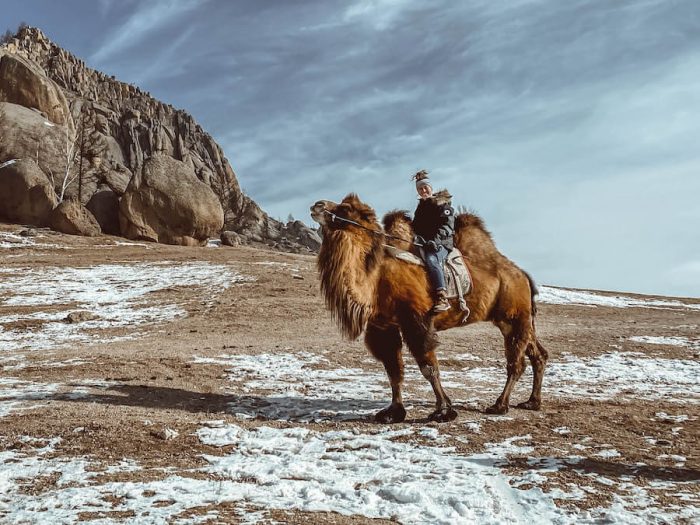
How to Get There
Getting to Mongolia from the US is, well, a journey. It’s going to take at least 24 hours, and you’ll have to go through Istanbul (my preference), Hong Kong, Beijing, Seoul, or Moscow. ( Note : these are all pre-Coronavirus flight patterns and not all of these routes may have reopened, so research accordingly.)
The country’s main international airport is located in Ulaanbaatar, Mongolia’s capital. Though there’s a smaller international airport in Bayan Olgii, it’s mostly for “local” international flights out of Kazakhstan and Russia.
The main airlines that fly to Ulaanbaatar include Turkish Airlines, Korean Air, Cathay Pacific, Aeroflot, and Air China. Turkish Airlines is my airline of choice as flying through the new Istanbul airport offers plenty of food options and quiet corners for sleeping.
Aeroflot flights typically leave from New York City through Moscow, but I know more people than I’d like to tell you about who’ve lost their baggage on this route. If you’re heading out of the city shortly after landing, I’d recommend avoiding Aeroflot since it’s a bit of a process to recover lost luggage once in Ulaanbaatar.
From the west coast, flying through Seoul, Beijing, or Hong Kong are fairly good options. Layovers in Beijing or Hong Kong can be 12 hours, but if you’re on a budget, it usually offers a good fare.
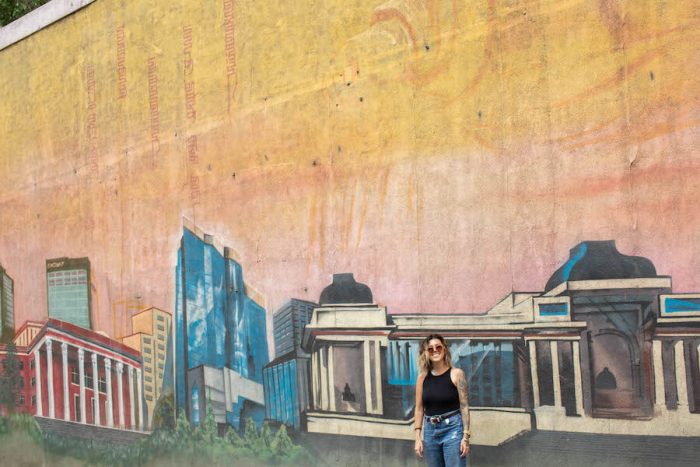
Where to Eat, Sleep, and Play in Ulaanbaatar
If you ask me, Ulaanbaatar is one of the most misunderstood cities in the world. It’s not exactly pretty at first glance. There’s an insane amount of traffic. Things don’t open early–or even on time. It’s a place–like the rest of Mongolia–where you have to go with the flow.
Service is slow (or nonexistent). Food quality is hit or miss. And complicated orders are a recipe for disaster (sorry vegans and eaters with dietary restrictions, this is not going to be an easy place for you).
But, when it comes to things to do in Ulaanbaatar, the possibilities are endless. It’s the hidden gems that really make this place stand out. No matter where you stay, most activities are either walking distance or a short taxi ride away. Plus, you’ll have to fly in and out of Ulaanbaatar regardless, so adding it to your Mongolia itinerary is non-negotiable.
Where to Stay:
- Budget: Zaya Hostel
- Mid: Holiday Inn
- Luxe: Shangri-La Ulaanbaatar
Search for more Ulaanbaatar hotels on Booking.com:
Where to Eat:
- La Rosa Tapas & Tequila Bar
- Rosewood Ulaanbaatar Kitchen + Enoteca
- ROC Caffeine Bars (Coffee)
Where to Play:
- Fat Cat Jazz Club
- MB Beer Plus
- Republik Pub
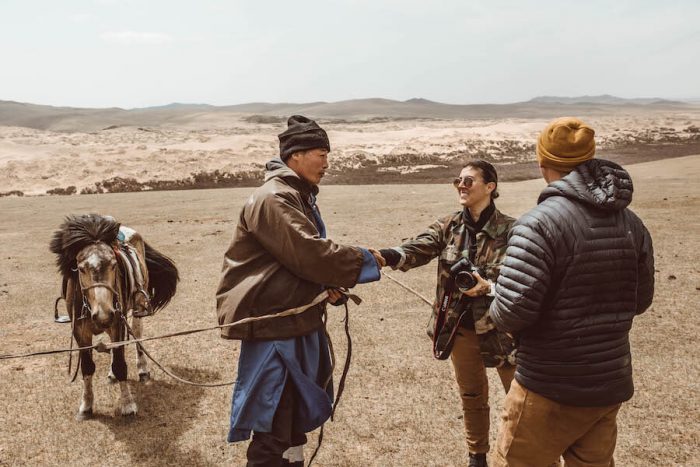
Quick Tips for Planning Your Mongolia Itinerary
Here are a few quick tips for planning your trip that will make your Mongolia itinerary run more smoothly:
Plan *almost* everything in advance
Mongolia is not a place to “wing it”. You won’t find hotels everywhere. Or water, for that matter. Wi-Fi won’t necessarily work once you leave the city. And don’t expect people to speak English.
Stock up on some solid gear
While I hate pushing gear on travelers, I’d recommend stocking up on some solid staples before leaving. You DO NOT need the best of the best to travel/hike/adventure/overland here, but it can get cold at night so a down puffer jacket is an absolute must.
A portable water purifier just might save your life. And never underestimate the power of quick-dry socks, a waterproof rain jacket and pants, and a knife.
Buy travel insurance
Just do it. Trust me. It personally saved me $3,000 when I broke my collarbone in Mongolia last summer.
[Note: For travel insurance, Live Like it’s the Weekend recommends World Nomads or SafetyWing for the best budget options with the most coverage. If you want to read more about my experience with travel insurance, click here ).
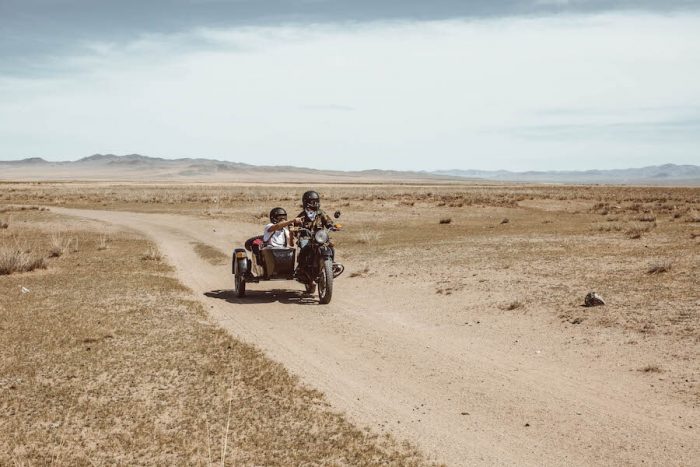
Three Bucket List Mongolia Itineraries for First Timers
Mongolia isn’t an easy place to plan for or explore on your own. Here are three ways to explore Mongolia without feeling overwhelmed, because these badasses have done the work for you.
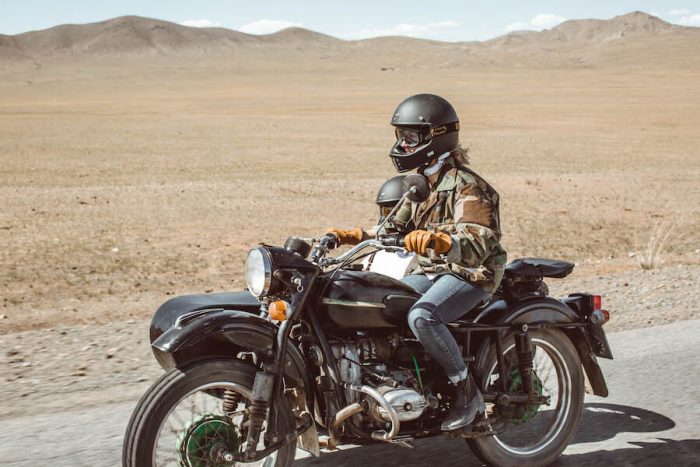
How to Explore Mongolia by Motorcycle: Moto Trip Mongolia
Who this trip is perfect for: New and experienced motorcyclists looking to adventure in style.
I may be biased since I designed this trip with some friends, and I personally lead this adventure … but it’s good .
Along with the nomadic herders and translators we bring along who will open your eyes to Mongolian life and culture in one of the most unique ways possible, this experience will make you rethink everything you thought you knew about life, travel, and most importantly–yourself.
What to expect on a Moto Trip Mongolia itinerary :
- A vintage Ural motorcycle with sidecar (so, 2 riders per motorcycle– perfect for bringing a friend).
- A motorcycle driving experience that includes off-roading across the Mongolian steppe.
- All drivers must have a motorcycle license and proof of travel insurance. Riders in the sidecar do not need a motorcycle license but must have travel insurance. The tour is set up so that drivers and riders will switch throughout the trip, but if someone doesn’t want to drive (or doesn’t have a motorcycle license), that’s okay too–they can be the passenger the entire duration of the trip!
- While it is required that you have a motorcycle license for this trip, this is a great trip for new and beginner motorcyclists! These Urals are easy to manage since you’re on three wheels, and there isn’t much chance of a traffic accident out on the steppe–it’ll be just us out there!
- And I can’t forget to mention, this is a great trip for females since it’s led by me !
- All meals, accommodations, transportation, motorcycles, and fuel are included.
- The trip also includes a follow car for carrying luggage, a translator, and motorcycle mechanic who will repair and tune up the bikes all along the way.
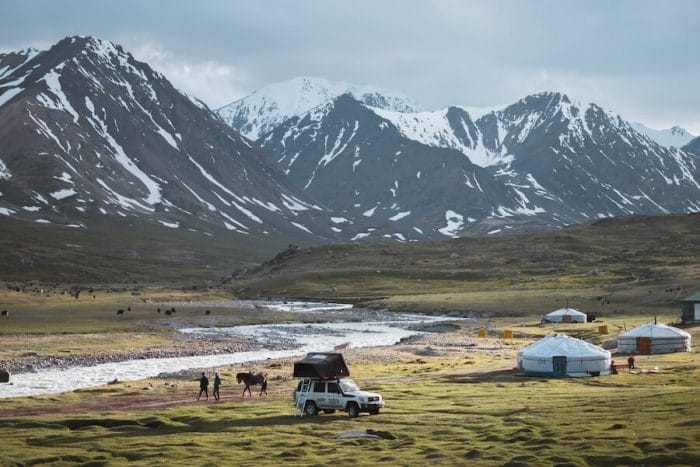
Self-Drive Mongolia and Take a Photography Masterclass Along the Way: Follow the Tracks
Who this trip is perfect for: Self-sufficient explorers looking for great photos for the ‘gram.
I really, really like the Follow the Tracks model. It’s a self-driving tour plus a photography masterclass designed by Max Muench, a guy you’ve almost certainly seen (more like, stalked) on Instagram .
You can choose from a few different routes (I recommend the Gobi Desert one), all of which start and end in Ulaanbaatar. You’ll have your own rental car, car camp essentials, and an iPad loaded with everything you need to make the most of this go-at-your-own-pace adventure.
I recommend grabbing enough friends to do this trip with at least two cars so you can tow each other in case of any hairy situations. Plus, more people equal more fun.
What to expect from the Follow the Tracks experience:
- A rental car from Sixt Rent a Car will be waiting for you in Ulaanbaatar at the start of your trip.
- Each car has 4-wheel drive and is equipped with a rooftop tent for sleeping.
- The car will have a GPS system loaded onto an iPad for your use during your self-driving adventure. This iPad will also act as your photography masterclass workbook, pointing out the best spots to capture photos along the route, and the best camera settings to do so.
- Additionally, the car will have camping and kitchen equipment, but you are responsible for purchasing your own food–and fuel–for the duration of your trip. (I suggest stocking up on food in Ulaanbaatar before hitting the road. Once you reach the tiny soums (tiny villages) in the countryside, you never quite know what you’re going to find.)
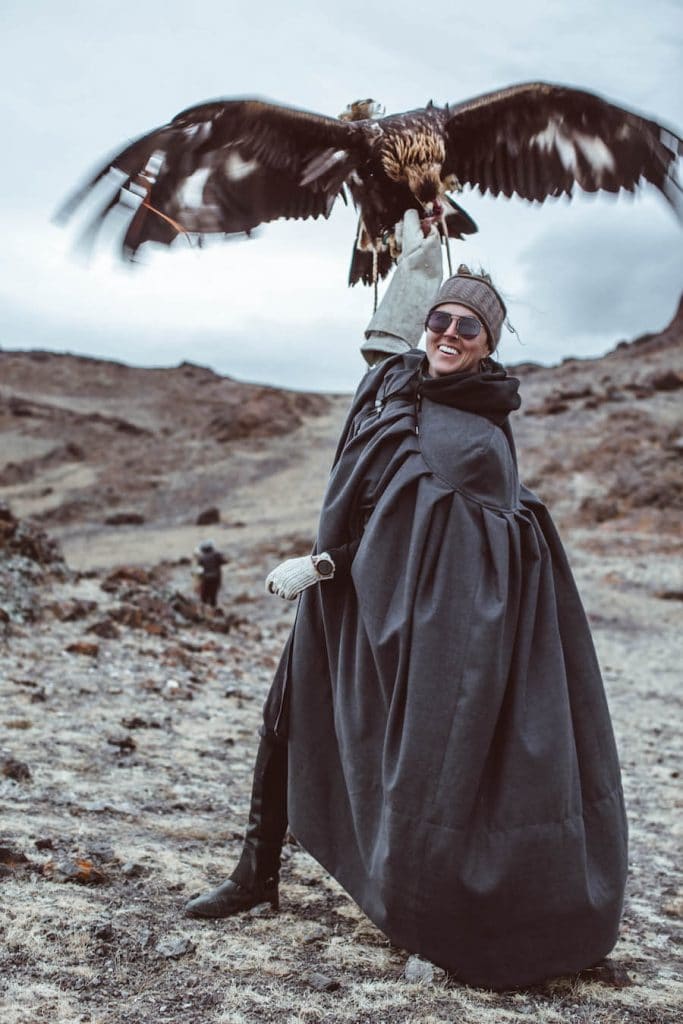
Ride Reindeer and Learn the Ancient Tradition of Hunting with Eagles: Erik Cooper Adventures
Who this trip is perfect for: Equestrians looking to really embed themselves with Mongolia’s unique–and very remote–tribes.
Erik is the gateway to the Tsaatan Tribe and Kazakh eagle hunters (he’s also the reason I fell head over heels in love with Mongolia). He’s spent the last eight summers in Mongolia and his connections are truly the reason why his tours are the most immersive, unique, and bang-for-your-buck.
You are thrown into the lifestyle, into the steppe, and into everything Mongolia has (for better or worse) to offer, with a touch of boujee along the way. There isn’t anyone that I trust more in Mongolia–or with my life. You can tell him I said that.
What to expect on an Erik Cooper Adventures Mongolia itinerary:
- All meals, accommodations, and transportation included. A translator will also accompany you during the duration of the trip.
- You MUST be comfortable on a horse. Because there are no roads where you’re going, you’ll be riding semi-wild horses for two days just to get to the Tsaatan Tribe’s home on the taiga, for example. If you are inexperienced on a horse, or afraid of riding, this trip is not for you. Erik will vet you before the trip, so don’t expect to fake your way into this experience, it’s simply too dangerous to do that.
- Each of Erik’s trips is different. You never know if you’ll get to ride reindeer across a glacier, watch locals compete in a reindeer race, or watch on as Eagle Hunters battle in ancient Kazakh games. No matter which trip of Erik’s you join, each one is specially curated and pulls out all of the stops.
Hope to see you all in Mongolia. You know where to find me when you do.
Planning a trip right now don’t miss my go-to websites for booking everything from flights and tours, to accommodation and more:.
- Booking.com for the best hotel deals
- World Nomads for flexible travel insurance
- VRBO for awesome rentals
- Skyscanner for finding the best flight deals
- Hostelworld for budget accommodation
- Rentalcars.com for easy car rentals

You Might Also Like
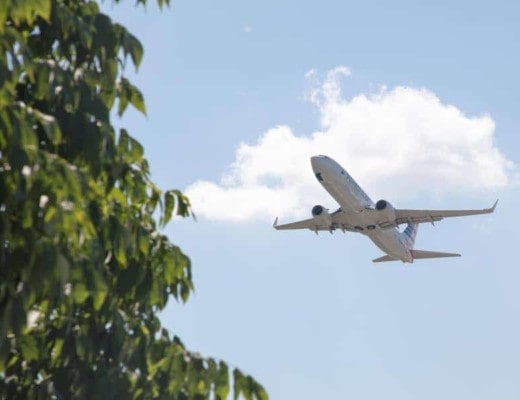
A Beginner’s Guide to Travel Hacking and Flying For Free
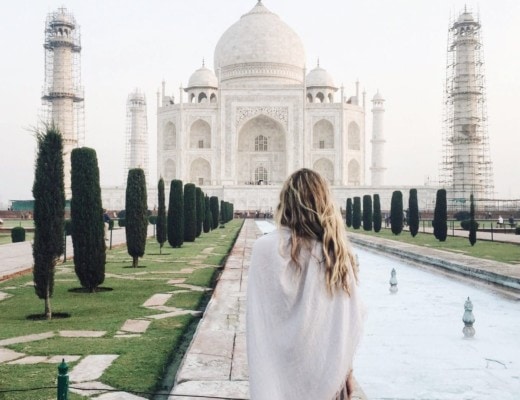
Your Ultimate Guide: What To Do In Ljubljana
On the contrary, it’s very easy to eat vegan in Ulaanbaatar. There’s plenty of great vegan spots to eat there.
That’s helpful to know, Joe thank you. Can you share some of your favorite vegan spots and maybe we can update the post?
That’s an incredibly detailed and well thought out guide. Thank you
Leave a Reply Cancel Reply
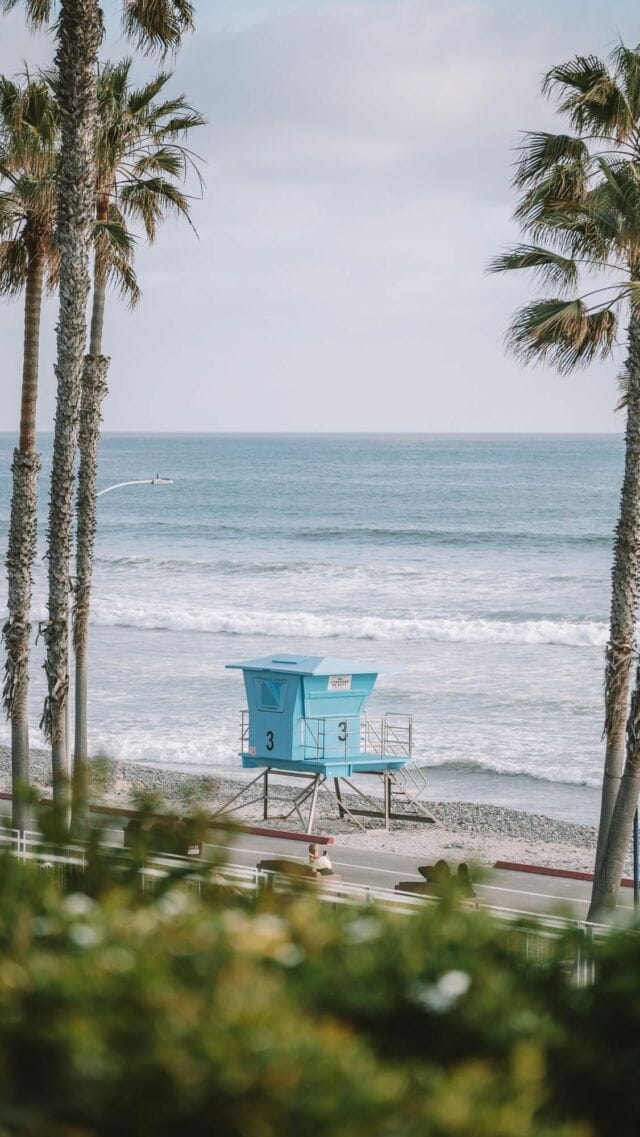
2023 © Live Like It's the Weekend - All Rights Reserved
Privacy Policy • Affiliate Disclaimer • Terms of Service
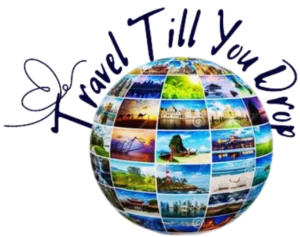
- Destinations

Solo Travel Adventures: Tips for Safe and Rewarding Exploration
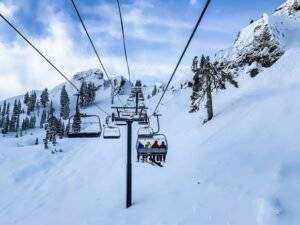
The Best Active Luxury Adventures for Solo Travellers 2024

Best Places for Solo Female Travel in India: Complete Guide 2024
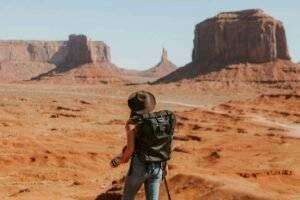
Discover The Top 10 Best Places for Solo Female Travelers in the USA
Travel Safety Tips | How to Travel Safer and Mitigate Risk
Business Travel to China a Comprehensive Guide 2024
Best Nashville Party Tractor: A Ride You Won’t Want to Miss
Best Female Friendly Activities in Miami
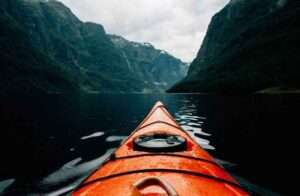
Golden Escapades: Embracing Adventure in the Prime of Life
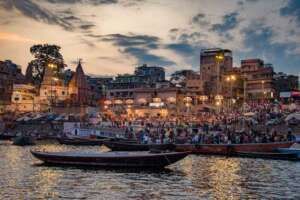
Varanasi Wonders: Must-See Destinations in the Spiritual Heart of India
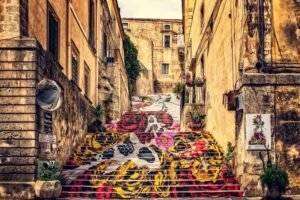
The Best Things to Do in Sicily
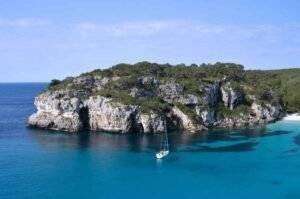
The Best Spanish Islands to Go Hiking
Best Budget-Friendly Trip To Kashmir & Ladakh 2024
How to Travel on a Budget Without Compromising the Experience 2024
Top 10 Budget Friendly Trips to Europe
32 Clever Budget Travel Tips For Saving Money on Your Trip
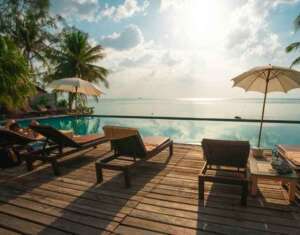
The Rise of Luxury Travel: Exploring Exclusive Destinations and Experiences
What is the Most Luxurious Destinations in the World – Top 7
The Ultimate Guide to the Luxury Travel Experiences
Unveiling the Secrets of Luxury Travel Hacks in South Africa
- Travel Shop

9 Top Reasons to Visit Mongolia: A Once-in-A-Lifetime Destination 2023

There are many tourist attractions in this beautiful country and we’re going to cover 9 Reasons to Visit Mongolia . You may be wondering why we’re talking about Mongolia. Isn’t that a little…off the beaten path? Yes, indeed, Mongolia is not the most visited destination, but that’s what makes it so special.
It’s one of the last places on Earth that feels truly untouched by modern civilization. If you’re looking for an adventure and want to experience something truly unique, then Mongolia is the place for you. In this article, we’ll share some of the reasons why I think Mongolia should be on your bucket list !
Mongolia is a landlocked nation, meaning it does not have direct access to the sea. It is nestled between two powerful neighbors, Russia to the north and China to the south. To the west and east , Mongolia shares its borders with Russia’s Siberia and the Chinese regions of Inner Mongolia and Xinjiang. This strategic location has played a significant role in shaping the country’s history and culture .
Ulaanbaatar: The capital and largest city of Mongolia, Ulaanbaatar is located in the north-central part of the country. It serves as the cultural, economic, and political hub of Mongolia, with a mix of modernity and tradition. Visitors often begin their Mongolian journey in Ulaanbaatar, exploring its museums, monasteries, and vibrant markets.
Darkhan: Situated in the northern part of Mongolia, Darkhan is the country’s second-largest city. It’s known for its industrial activities, including mining and manufacturing, and provides a glimpse into urban life beyond the capital.
Erdenet: Located in the Orkhon Valley of northern Mongolia, Erdenet is celebrated for its massive copper mining operations. Travelers can explore the city’s mining culture and nearby natural attractions.
Table of Contents
9 Reasons Why You Should Visit Mongolia
Mongolia, a land of captivating landscapes and rich cultural heritage , offers an extraordinary adventure like no other. If you’re contemplating a visit to this remarkable country, we present you with nine compelling reasons that will ignite your wanderlust and make Mongolia an unforgettable destination .
From its vast expanses of untouched wilderness and nomadic traditions to the warm hospitality of its people and the fascinating history of the Mongol Empire, this guide will showcase the enchanting allure of Mongolia. Get ready to immerse yourself in the mesmerizing beauty of the Gobi Desert, witness the thrilling spectacle of the Naadam Festival, and explore the timeless landscapes of the Mongolian steppe.
Join us as we unveil the captivating wonders that await you in Mongolia, a land that will capture your heart and leave you with unforgettable memories.
Serenity and landscapes
Imagine rolling landscapes dotted with traditional gers (yurts), horses grazing in the distance, and clear blue skies overhead. This is the picture-perfect image of Mongolia, a destination that’s gaining in popularity for its serenity and untouched landscapes. What’s not to love about Mongolia?
It’s one of the most sparsely populated countries in the world, making it a haven for nature lovers and adventurers. And with a history dating back to the 13th century, there’s no shortage of things to see and do. So, if you’re looking for an unforgettable travel experience , put Mongolia at the top of your list. You won’t regret it!
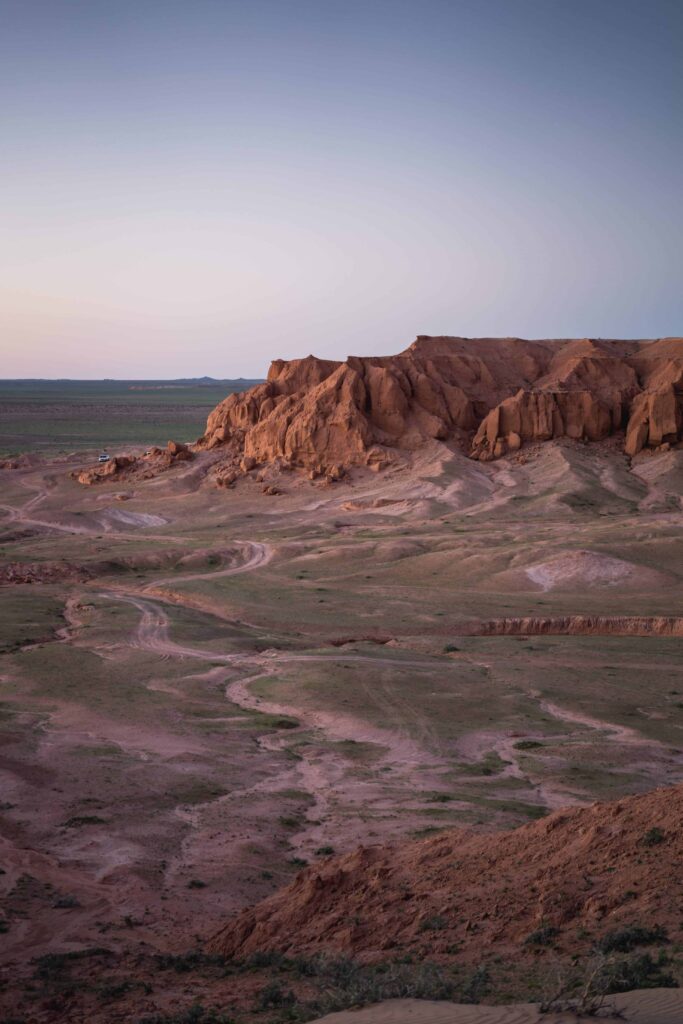
Wildlife In Mongolia
If you’re an animal lover, Mongolia is the place for you. This country is teeming with wildlife, from the elusive snow leopard to the majestic Tibetan antelope. And if that’s not enough to tempt you, there are also vast herds of gazelle, as well as deer, wolves, and bears. So, pack your binoculars and your sense of adventure—Mongolia is waiting for you!
Snow Leopards: Mongolia is one of the few places in the world where you can encounter the enigmatic snow leopard. Known for its elusive nature, this magnificent feline roams the remote mountains and rocky outcrops of the Altai and Sayan Mountains. Conservation efforts are underway to protect these elusive big cats and their fragile habitats.
Birds of Prey: Mongolia boasts a rich avian diversity, with numerous species of birds of prey soaring through its skies. The country’s nomadic culture is intertwined with falconry, an ancient tradition where eagles are trained to hunt.

Nomadic culture
Oh, Mongolia, the land of hospitality and nomadic wonder! Let’s talk about the enchantment of the Mongolian people and their oh-so-warm and open hearts. Seriously, these folks roll out the red carpet (okay, maybe not literally, but you get the point) for visitors, offering a tantalizing peek into their vibrant cultural tapestry.
Traditional Ger Camps
Now, if you really want to dive headfirst into the heart of Mongolian hospitality, you’ve got to stay in one of those traditional ger camps. These bad boys aren’t your run-of-the-mill accommodations; they’re a freaking gateway to the nomadic way of life. Picture this: cozy felt-covered dwellings amidst the vast Mongolian landscapes. It’s like living in a real-life Instagram post, complete with comfort and authenticity that’ll have you feeling like family.
Warmth and Generosity
And speaking of family, these nomadic folks take immense pride in sharing their homes and traditions with guests. We’re not talking about your average “thanks for the place to crash” situation. Oh no, my fearless wanderers, this is an all-out extravaganza of warmth, generosity, camaraderie, and friendship. It’s like joining an extended nomadic family, where you’ll be showered with kindness and open arms.
Learning Traditional Crafts
Nomadic life in Mongolia is a treasure trove of traditional crafts that have been passed down through the generations. This is your chance to unleash your inner artist and learn from skilled artisans within the community. Get your hands dirty and dive into the art of crafting traditional clothing or creating intricate felt designs. It’s a hands-on experience that’ll make you appreciate Mongolian craftsmanship like never before.
Plan Your Nomadic Stay
Now that we’ve dabbled in the hospitality, the cozy gers, and the rich world of Mongolian craftsmanship, it’s time to make a plan, my brave adventurers. If you’re seeking a truly immersive cultural encounter, a stay in a traditional ger camp is an absolute must. It’s not just about witnessing the rhythms of nomadic life, it’s about actively participating and forging connections that’ll last a lifetime.
Unique Mongolian Cuisine
The food in Mongolia is something special. It’s a unique blend of Chinese, Russian, and Turkish flavors, and it’s the perfect way to experience the local culture. Some of the traditional dishes you’ll find in Mongolia include buuz (steamed dumplings), khorkhog (a type of stew made with mutton and vegetables), and baijig (fried dough pieces served with honey). Yum! So, if you’re looking for an unforgettable culinary experience, be sure to add Mongolia to your list of places to visit . You won’t regret it!
The Gobi Desert
If you’re looking for an adventure, you need to put Mongolia on your list. This is a destination that’s full of surprises, and one of the most amazing things about it is the Gobi Desert. The Gobi is one of the most remote places on Earth, and it’s not what you expect. It’s a vast and stunning landscape that’s full of dunes, canyons, and wildlife. Sure, the Gobi is challenging to get to, but that’s all part of the fun. Once you’re there, you’ll feel like you’re in a whole other world. If you’re looking for an unforgettable travel experience, Mongolia is worth considering .
Hospitality
The hospitality showcased by Mongolians is unmatched. The nomads would host a visitor in the main ger – a tent made from wood and felt – while they stay in the spare ger. They are extremely proud yet very welcoming and warm, they always want to entertain and show off their culture.
Exploring Genocide Camps Around the World: From Rwanda to Bosnia
No Other Tourists
With half of the Mongolian population located in Ulaanbaatar – with a total population of under 3 million people – coming across other travelers in this region is quite unlikely. Still, Mongolia is steadily becoming a preferred destination to a lot of travelers owing to the increased number of direct flights from countries in the West. The sooner you visit Mongolia, the sooner you get to experience the untouched landscapes all to yourself.
Mongolian History
The world perceives Chinggis Khan, or Genghis Khan as one of the most ruthless emperors in history who founded his territory stretching to Eastern Europe from Asia. However, Mongolians view him as the father and founder of nations. There is a silver statue with a height of 40m close to the capital of him riding his horse. Tourists and other travelers are allowed to climb on the horse’s back and give themselves a view across Khan’s land.
Eagle Hunters
Locally known as the Berkutchi, the Kazakh people of the Western region of Mongolia are known for training Golden Eagles – selecting nested chicks – to hunt prey as huge as wolves. There is also a Kazakh Eagle Festival in the western Altai mountains every September and October.
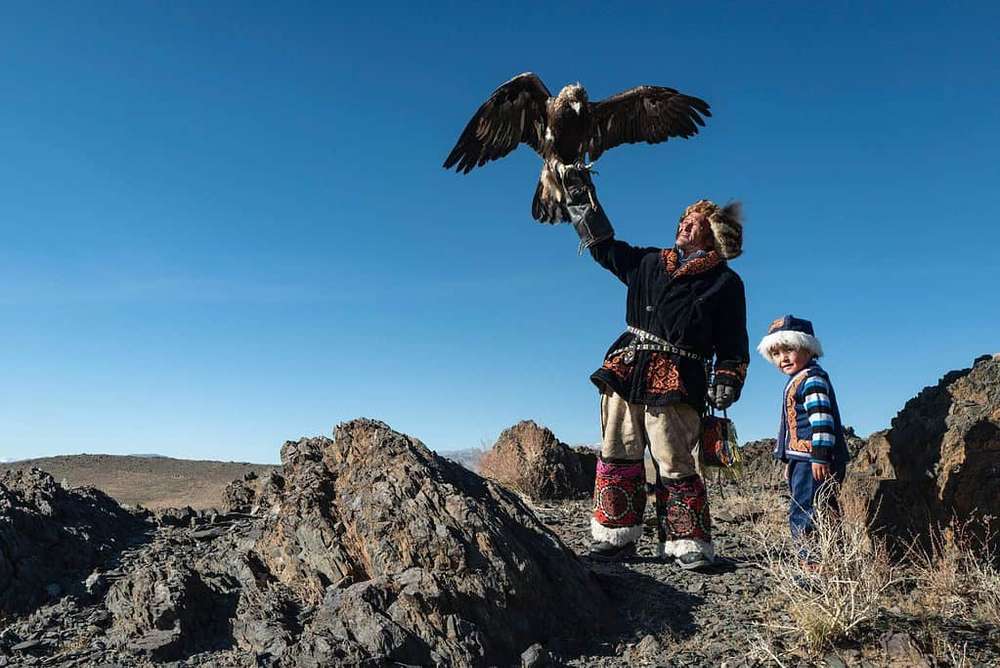
Naadam Festival
Naadam Festival is reason enough to visit Mongolia. The festival is a tradition and essential that celebrates the ‘manly’ aspects of Mongolia. The Festival is held in the month of July and is celebrated countrywide, with the largest gathering and climax happening at the capital of Mongolia. During the festival, Men compete in archery, wrestling, and horse riding.
First on the agenda is traditional Mongolian wrestling, where these competitors flex their muscles and show off their strength, technique, and agility. Picture this: skilled wrestlers, decked out in their traditional costumes, going head-to-head in matches that’ll have you on the edge of your seat. It’s like watching a centuries-old tradition come to life, with each bone-crushing throw and gravity-defying move showcasing their badassery and dedication.
Horse Racing
We can’t forget about the thundering hooves of the racing horses that add an electrifying energy to the whole shebang. These horse races ain’t your run-of-the-mill derby at the local track. Oh no, these races span long distances across the vast open steppes, reflecting the nomadic lifestyle where horses are valued like gold. It’s not just a race; it’s a celebration of the deep bond between the nomads and their trusty four-legged companions.
This ain’t no Robin Hood wannabe shooting arrows into a target. Nope, we’re talking precision, skill, and a dash of vibrant attire. Picture participants, dressed to the nines, demonstrating their marksmanship with traditional bows and arrows. The archery competition adds a layer of grace and artistry to the festival, completing the trio of what they like to call the “Three Manly Games.” It’s a feast for the eyes and a showcase of the ancient Mongolian art of hitting the bullseye like a boss.
Beyond the Games
But hold on to your hats, my fierce travel mavens, because Naadam is about more than just sports. It’s a time for traditional music, dance, and vibrant festivities. The air is filled with mouthwatering aromas of traditional Mongolian cuisine as locals come together to celebrate their identity with pride and joy. It’s a whirlwind of colors, sounds, and tastes that’ll leave you feeling a part of something bigger than yourself.
You may have never heard of Mongolia, but it’s time to add it to your list of must-see destinations. This beautiful and exotic country is home to some of the most stunning landscapes in the world, from the Gobi Desert to the snow-capped mountains of the north. No matter where you choose, though, always remember to Travel Till You Drop!
- jill charpia
- April 28, 2023
- No Comments
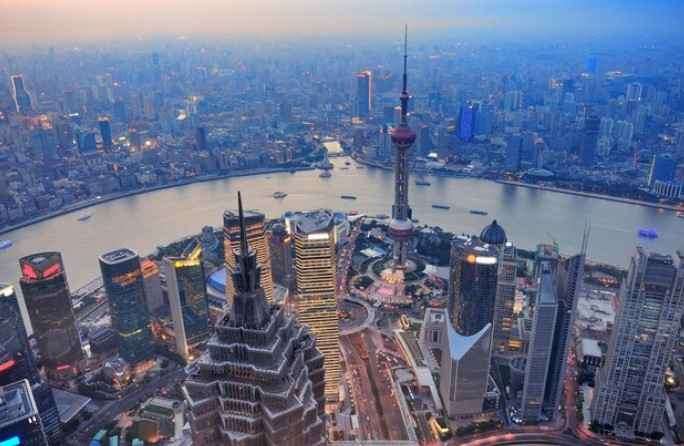
Your Ultimate Guide to How to Travel to China
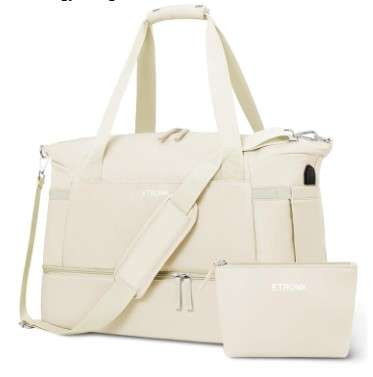
10 Unique Travel Essentials for Women: Keeping It Sassy, Stylish, and Smart
Trekking in Manali: The Best of Himalayan Trails In 2024
Leave a Reply Cancel reply
Your email address will not be published. Required fields are marked *
Save my name, email, and website in this browser for the next time I comment.

Hi, Jill Here
Hi! I’m Jill, a Dallas, Texas girl traveling the world. After a career in the Air Force and touring over 50 countries later, my need to explore keeps going! It’s time to rock & roll and find all those places I never knew I was missing.
Join me to get exclusive travel tips, giveaways and more!

Quick Links
Useful Links
Subscribe to get special offers, free giveaways, and once-in-a-lifetime deals.
Get Connected
Copyright © 2023 | All Right Reserved
Review Cart

- Staying with a Mongolian Nomadic family tour Hot
- Holiday with Mongolia's nomadic family tour
- Springtime Nomadic Adventures Hot
- Mongolia Naadam Festival tour 2024 Hot
- Gobi Desert and Grand Naadam Festival tour 2024
- Ancient Capital of Mongol empire tour
- Horse Trekking in the Orkhon Valley 2024 (15 days) Hot
- Sacred Rivers Horse Trek
- Trekking in the Altai mountains tour
- Mongolia honeymoon tour Hot
- Discover True Mongolia (September) Hot New
- Gobi Odyssey (6 days) Hot
- Discover True Mongolia tour 2024 Hot
- Mongolian Gobi desert & Beijing Highlights tour New
- Endangered species in focus tour Hot
- Karakorum & Bayangobi desert gateway (4 days)
- The Highlights of Central Mongolia tour
- City tour of Ulaanbaatar Hot
- All group tours enlisted here for your and linkable to tour calendar page
- Mongolia visa and assistance
- Getting to Mongolia
- Medical info
- Climate of Mongolia
- Mongolian food and meals
- Mongolia customs
- Mongolia Accommodation Guide
- ( Suggested hotels )
- China visa assistance
- Getting to China
- China Travel Medical Info
- China Weather and Climate info
- Chinese Food Info
- China Customs
- Accommodation in China
- Russia visa assistance
- Getting to Siberia
- Climate of Siberia
- Food info for Siberia travel
- Russia customs
- Accommodation in Siberia
- Flights to Mongolia
- Trains to Mongolia
- Mongolia FAQ
- Travel Insurance
- Mongolia overview
- Mongolian culture
- Mongolia travel inspiration
- Mongolian History
- China overview
- Chinese Culture
- China Travel Inspiration
- ( China Destinations )
- Siberia overview
- Siberia travel inspiration
- Siberian culture
- Travel photos and Videos
- Why travel Mongolia with us
- Company profile
- Meet the team
- Responsible Travel
- Cooperate with us
- Subsidiaries
- Book a tour
- Tailor-made tours form
- Tour calendar
- Payment Instructions
- Terms and conditions
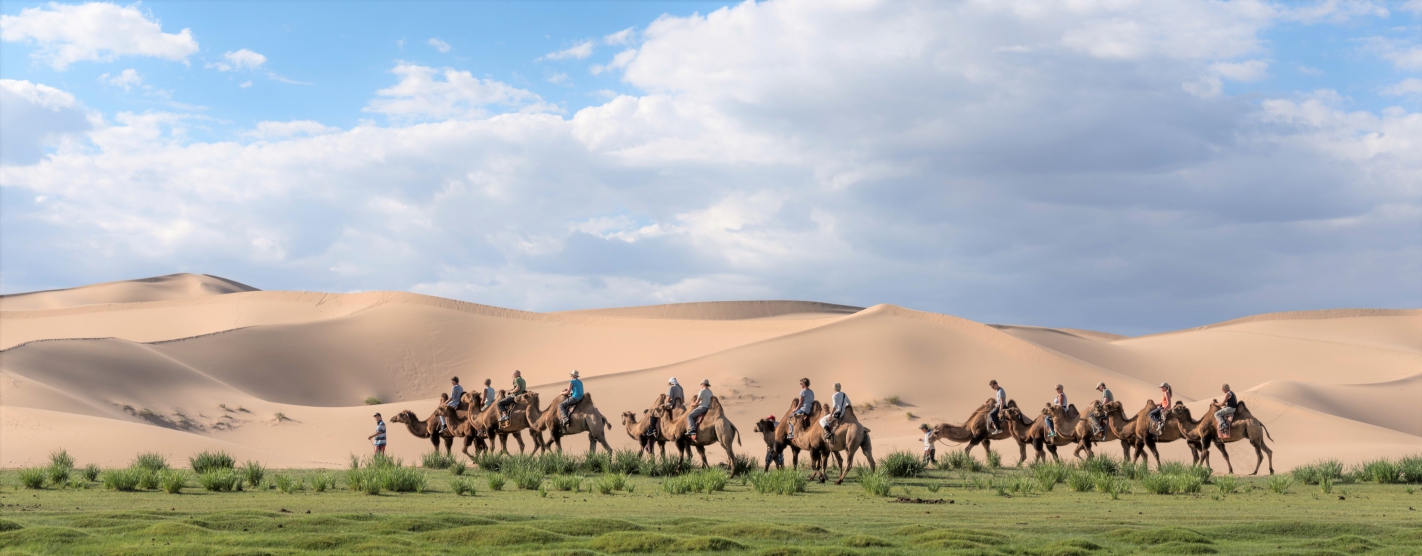
Why visit Mongolia
- Timeline of History
- Geography of Mongolia
- Nature and Wildlife
- Ulaanbaatar city & Around
- Central Mongolia
- Southern Mongolia
- Northern Mongolia
- Western Mongolia
- Eastern Mongolia
- Naadam Festival
- The Nomads' Day festival
- Mongolian Lunar New Year
- Golden Eagle Festival
- China Destinations
- Siberia Destinations

You may find yourself asking "Why Mongolia?"
Mongolia, the motherland of great Genghis Khan who built the mighty Mongol Empire back in 13th century, is located in the Central Asian plateau. Despite being landlocked between Russia and China throughout the history, Mongolia has existed millennia. Mongolia’s heroic, patriotic ancestors survived this harsh climate for generations, and developed a lot of culture.
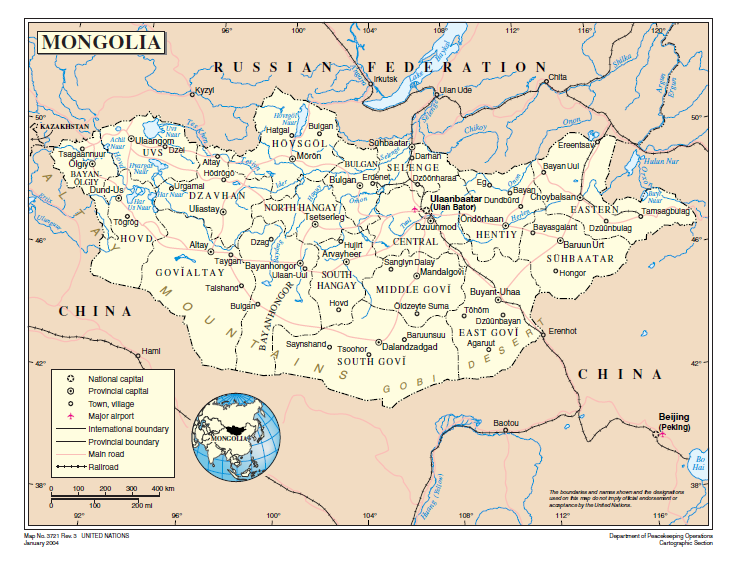
Today’s Mongolia sits on a considerable territory. The country has an array of pristine landscapes and nomadic people whose lives in many ways are still unchanged from the past. Here, nomadic herders still depend on nature for their survival.
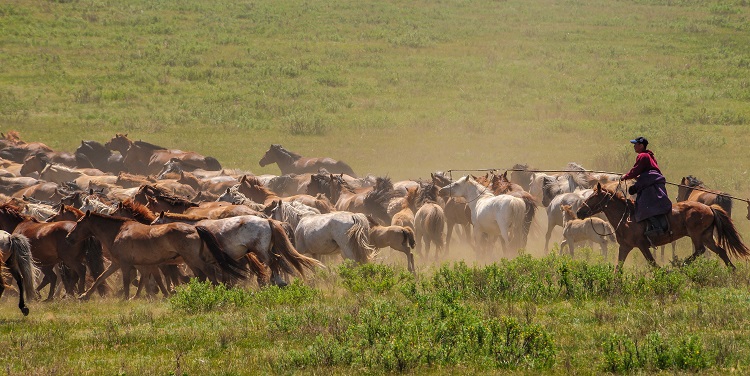
Mongolia’s priceless treasures like untouched wilderness, fresh air and water are cherished dearly by all the people of Mongolia. Happily for a traveler, Mongolian people are helpful, friendly and warm. The following are the top 10 reasons why you need to travel to Mongolia right now!
1. See the The Gobi Desert . Dinosaurs’ native land where numerous dinosaurs remain including the first complete dinosaur egg was found.
2. Mongolia is one of the last remaining authentic Nomadic culture and has unrivaled hospitality.\
3. It is the home of Genghis Khan and one of the largest empires in world history.
4. The Naadam Festival is one of the coolest and most unique sporting events in the world.
5. Mongolia is also one of the most peaceful destinations for travelers.
6. The country is host to pristine nature and abundant wildlife you can immerse yourself in.
7. Mt. Khuiten and Five Holy Peaks of Altai Mountain Range are one of the most exciting hiking and mountain climbing destinations in the world.
8. The famous Trans-Siberian Railway goes through Mongolia. You can take a train through 8 time zones and end up in one of the coolest capitals of the year.
9. The New York Times and CNN included Mongolia in the “Travel Wish List”, and the country is still an amazing place to visit.
10. Mongolia is Adventure Travel at its best – you can experience so many wild trips and tours all in one enormous country.
Mongolia today remains a place of natural and cultural diversity and offers endless possibilities of discovery and adventure for every kind of traveler. Mongolia is a land of marvels, waiting to be discovered by you!
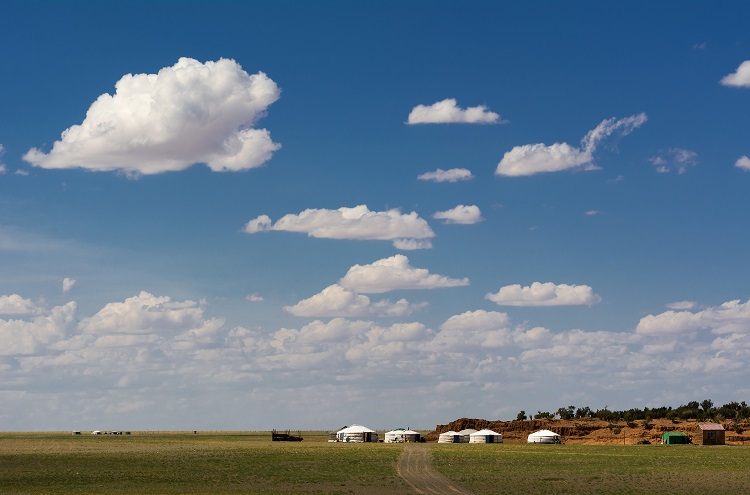
Related Tours
Discover true mongolia tour 2024.
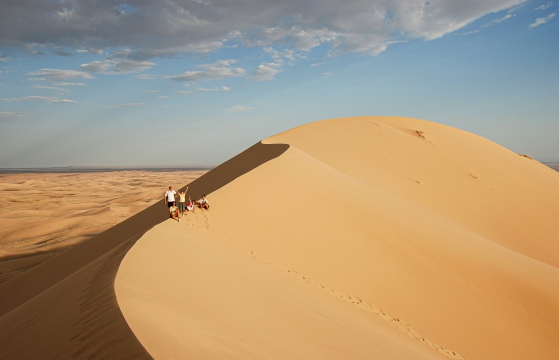
Join us on this epic tour through Mongolian untouched wilderness, sleep under millions of stars and ...
Mongolia Naadam Festival tour 2024
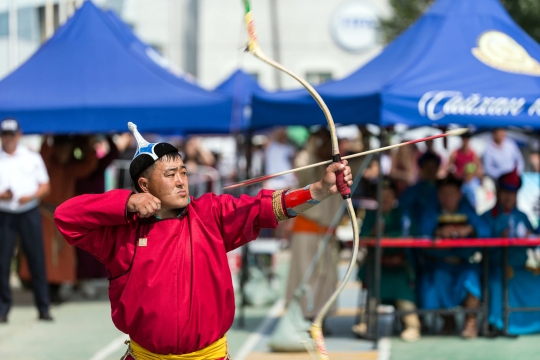
Selena Travel Mongolia invites you to join the Great Naadam Festival tour which offer a unique oppor...
Horse Trekking in the Orkhon Valley 2024 (15 days)
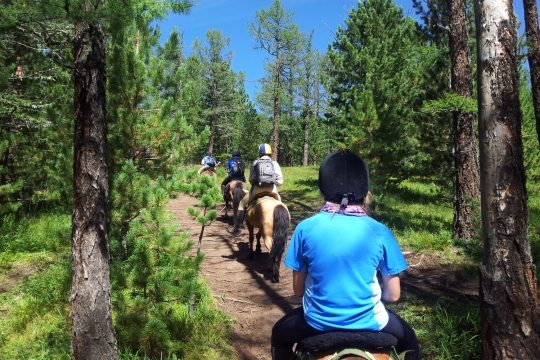
This epic horse trekking tour allows you to discover the Central Mongolian highlights on Mongolian p...
The Gobi Desert and Karakorum beyond tour 2024
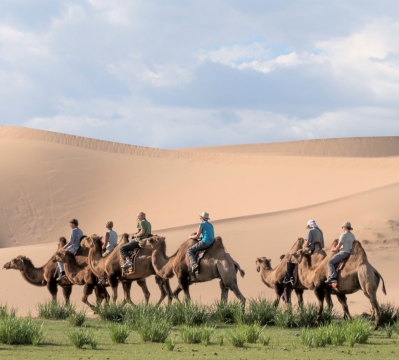
Your expedition will lead you across diverse landscapes, from the arid Gobi Desert to the vast centr...
Sign Up for Our Newsletter
Stay in touch with us

We are members of

- South Korea
- United Arab Emirates
- New Zealand
- Travel Tips
- travel resources
- Get In Touch
- Start A Blog

- Destinations
Ultimate 9-Day Mongolia Travel Itinerary & What To Expect
- May 13, 2024
- 20 minute read
Psst, FYI – this post may contain affiliate links, which means I earn a small commission (at absolutely no extra cost to you) and ads keep this blog free for you to enjoy. Thanks for supporting the free content on this site (and for sponsoring more doggy treats for little Albus!)
Are you ready to embark on a journey to the wild and untamed beauty of Mongolia? To date, I’d easily say this was one of my favorite trips so far. And if you’re still unsure about this offbeat destination, let me share my experience so you’ll know why Mongolia should be on your bucket list, and what to expect along the way.
Mongolia was a travel destination my friend and I picked a few years ago before the blip in time we all know as COVID-19 happened.
We were throwing out ideas like Bhutan and Nepal… basically, anywhere we could seemingly go off the grid and experience a place at its rawest.
No bustling cities or tourist traps.
We wanted to go somewhere we could be alone with nature.
Finally, we settled on Mongolia.
Once the borders opened, we booked our tickets and we were in for the ride of our lives.
Now, Mongolia is no walk in the park.
Here, you have to surrender yourself to Mongolia’s embrace. Forget about schedules, let go of control, and open your eyes to the unexpected.
Once you do, you’ll discover sides of yourself you never knew existed. Leave the comforts of home behind and just— experience .
Mongolia will push you to your limits, challenge your preconceptions, and force you to let go of control. But hey, that’s what makes it so thrilling!

In this itinerary, we will be spending 7 days out in the Gobi Desert , a region that will test your spirit of adventure. Mother Mongolia doesn’t mess around; just when you think you’ve got it all figured out, she throws a wild card your way.
So, why should Mongolia be on everyone’s bucket list?
It’s simple – you have to experience it for yourself.
And when you do, get ready for an epic adventure. With so much to explore, it can be difficult to decide where to start and what to include in an itinerary.
In this blog post, I’ll outline an 11-day Mongolia travel itinerary that covers some of the rawest highlights of the country which includes Central Mongolia and the Gobi Desert.
But don’t worry, I’ve got you covered.
Here’s everything you need to know about embarking on your first journey to Mongolia.
Get ready to embrace the wild, discover your true self, and create memories that will last a lifetime. Mongolia awaits, my fellow adventurers!
- 1 Why Mongolia Should Be at the Top of Your Bucket List
- 2 The Ultimate Mongolia Itinerary
- 3 Where is Mongolia?
- 4 How do I get to Mongolia?
- 5 How do you get around Mongolia?
- 6 Is Mongolia safe?
- 7 What’s the best month to visit Mongolia?
- 8 How many days do you need in Mongolia?
- 9 Do you need a visa in Mongolia?
- 10 Can you go to Mongolia without a tour?
- 11 Money in Mongolia
- 12 SIM Cards in Mongolia
- 13 Drinking water in Mongolia
- 14 MY TOP TRAVEL TIPS & RESOURCES
Why Mongolia Should Be at the Top of Your Bucket List
Prepare for an adventure that will kick your wanderlust into high gear!
In Mongolia, you can ride reindeer, join the ranks of eagle hunters, or hop on a camel for a wild ride across the magnificent Gobi Desert. It’s a thrill-seeker’s paradise where every moment is packed with excitement and wonder.
It’s no wonder CNN named Mongolia the country to visit in 2023.
Jaw-Dropping Landscapes
Get ready to have your mind blown by the epic beauty of Mongolia’s vast steppe, rugged mountains, and mind-boggling deserts.
I don’t think I’ve been so awe-struck every single day in a row before.
The ability to start every day surrounded by nature in its most pristine and unaltered form was such a treat to my senses. And seriously, your Instagram feed will thank you!
Nomadic Vibes
This might have been my favorite part of my entire Mongolian adventure (if picking a favorite was even possible).
It was the most precious experience getting to immerse myself in the nomadic culture of Mongolia and learn about their culture and traditions.
Some of my favorite moments were in the evenings when we would sit in the ger preparing dinner with our hosts; or playing traditional games with them.
We even got to witness a yak giving birth! Seeing a newborn calf arrive before our own eyes was wild.
And we didn’t just observe the nomad life, we lived it too.
They’d let us hop on their motorbikes in the evenings to go round up the yak herd before dark.
It’s like stepping into a whole new world!
Adventure Awaits
Mongolia is a paradise for adventure junkies. From galloping on horseback across the open plains to riding camels through the desert during sunset, it’s a thrill-seeker’s dream come true.
Definitely unlocked a core memory for me!
Soul-Stirring Moments
Through the course of my trip, I had countless “pinch-me” moments that touched my soul.
The serene landscapes, the simplicity of life, and the genuine connections you’ll make left an indelible mark on my heart.
I kept pondering how amazing life would be if we could just replicate this life in the city.
Mongolia just has a way of changing you for the better.
Animal-lovers Paradise
Mongolia’s five jewels are its animals, namely horses, goats, camels, cows, and sheep.
We got to meet and interact with all five which was an absolute dream come true for me. I even got to carry a few kids (baby goats)!!!!
Here you’ll get up close and personal with these animals in their natural habitat.
No fences, no ticket prices, no barbed wires. Just you and these glorious creatures.

So, pack your sense of adventure, a camera with lots of storage space, and an open mind. Mongolia is calling, and it’s time to answer that call.
The Ultimate Mongolia Itinerary

When planning our Mongolia trip, we were spoilt for choice with all the beautiful sights the country has to offer.
We ended up opting for a more authentic experience that focused on nature and nomadic living.
In this Mongolia itinerary, we explore the Gobi Desert and Orkhon Valley where we get to walk on frozen rivers, go horseback riding, and experience the nomadic way of life.
Without further ado, here we go!
Day 1: Arrival in Ulaanbaatar
Start your Mongolian adventure in the capital city of Ulaanbaatar.
Spend the day exploring the city, or if you’re arriving late just like us, get lots of rest and enjoy a good shower as you won’t be having one for a while!
It’s also a good opportunity you’ll need for the next 9 days away from civilization.
Yes! Did you know that if you’re opting for the most nomadic experience in the Gobi Desert, you’ll have to be comfortable forgoing a few showers!
Day 2: Journey into the Mongolia desert

Today we met up with our tour guide and driver from Sunpath Mongolia who were going to be with us for the next 9 days.
Once you leave Ulaanbaatar, most of the journey will be off-road so hiring a local company to take you will be your best bet as roads are unmarked and you’ll literally be driving through the desert!
Our journey begins with a 450km (279 miles) drive to the iconic White Stupa, also known as Tsagaan Suvarga.
We stopped for lunch in a town called Mandalgovi where we tried local food for the first time!
Mongolian dishes mostly consist of meat. Meat, meat, and lots more meat.
You’d be hard-pressed to find much vegetables here. Most of the time, you’ll only find carrots and potatoes. Sometimes , you’ll find cabbage.
But remember, out in the desert, it’s hard to grow leafy vegetables so say goodbye to your spinach and kale for a couple of days.

Located in the Middle Gobi Province, the White Stupa is a geological formation that stands out with its towering cliffs of white and orange limestone, resembling ancient ruins.
The White Stupa holds significant geological importance, with its layers of sediment representing millions of years of natural history.
The unique colors and shapes of the cliffs create a surreal and magical atmosphere, making it a photographer’s dream.
It is a popular tourist attraction due to its stunning white and orange cliffs that resemble a massive stupa or temple.

The cliffs offer a fantastic opportunity for photography, especially during sunrise or sunset when the colors become even more vibrant.
Aside from the visual appeal, the White Stupa holds significance for the local nomadic herders who consider it a sacred place. It is believed to have spiritual and healing properties, and visitors are encouraged to show respect and be mindful of the cultural and natural significance of the site.
After we were done exploring the White Stupa, we headed to our ger for the night situated just a few minute’s drive away.
Days in Mongolia are mostly like this as distances between sights can be quite long, so you’ll often be visiting one sightseeing spot per day while spending most of your time on the road.
We were very excited for our first night in our ger! Our host was a lovely Mongolian lady who made us dumplings for dinner! I met my first herd of sheep here which had me squealing in delight.
Our first night out in the ger was so surreal. Having to get used to no running water, no showers, and no toilets – living with the bare minimum but we still found it bearable.
There also wasn’t any service there so it was a great opportunity for us to get to know each other better and actually talk!

Day 3: Walk on ice at the Yol Valley

Our journey continues as we make a stop in Dalanzadgad , the capital of the South Gobi Province.
This small town serves as a gateway to the Gobi Desert so we were able to stock up on some amenities and… take a hot shower!
There are public showers in the town where you can freshen up, and I was pleasantly surprised by how clean and spacious these shower rooms were!

From Dalanzadgad, head to the enchanting Yol Valley , also known as the Eagle Valley.
This deep and narrow gorge is renowned for its dramatic rock formations, icy streams, and stunning wildlife.
As we embarked on a 5km walk through the valley, we were surrounded by towering cliffs that harbor rare and endangered species, such as the bearded vulture and Siberian ibex.

In the evening, we retreat to our gers nestled within the Yol Valley.

Day 3: Marvel at the Khongor Sand Dunes and ride camels into the sunset

This morning we woke up to a sudden snowstorm which covered the ground and our gers in a blanket of white! I told you to expect everything when you’re in Mongolia – haha!
After walking on ice yesterday, today we’re off to the mesmerizing Khongor Sand Dunes , also known as the “Singing Sands.”
I told you you’ll be experiencing all sorts of conditions in Mongolia!
These expansive sand dunes stretch across the southern part of Mongolia, covering an area of over 180 kilometers.

Upon arrival, we are immediately captivated by the grandeur of the sand dunes, with some reaching heights of up to 300 meters.
The Khongor Sand Dunes are known for their shifting patterns, shimmering golden colors, and the melodic sound produced when the sand is disturbed by the wind, hence the name “Singing Sands.”

It is quite a climb, so make sure you’ve got your stamina in tow. I only managed to climb up to the halfway point before giving up.
I’d say you’d have to be relatively fit to reach all the way up to the peak. Because you sink into the sand with every step, so it takes relatively more effort than walking on solid ground. But it’s definitely worth a shot if you can muster up the strength and stamina!
Once we reached our nomad family for the night at Ongi River, we were surprised with a camel riding experience through the sunset which was truly magical.

And after the camel ride, I got to cuddle some baby goats! I feel like I died and went to heaven!

Tonight we rest, and for the first time, going a whole day with no showers!
There was also no service in the area, so the experience was as authentic as it comes!
We spent the evening playing some local games with the host family using ankle bones (yes, goat bones!).

Day 4: Walk in the footsteps of the dinosaurs at the Flaming Cliffs

This morning we set off at 7 am to the Flaming Cliffs , also known as Bayanzag .
These towering red and orange cliffs hold great significance, most famous for yielding the first discovery of dinosaur eggs . It was so fascinating imagining dinosaurs once roaming on the very ground we were walking on!

Continuing our journey, we make a stop in Bulgan for lunch. We were supposed to have another shower here but the public showers were closed. Accepting hiccups is all part and parcel of traveling in Mongolia!
And in the nomadic spirit of flexibility, we trudge on and continue on our journey. At this point, we might even be getting used to this level of hygiene (or, maybe not)!
Next, we visit the historic Ongi Monastery , which once stood as one of Mongolia’s largest Buddhist monastic complexes.
Sadly, it was destroyed during the communist era, leaving behind evocative ruins that still hold immense spiritual significance.
Day 5: Visit Mongolia’s ancient capital, Kharkhorin
Today’s drive is especially long, but it’s going to be a relaxing day.
We set off for Kharkhorin , the ancient capital of the Mongol Empire and an important historical site. This historic city served as the political, economic, and cultural center during the reign of Chinggis Khan and his successors.

Upon reaching Kharkhorin, we satisfied our hunger with a delicious lunch before visiting the renowned Erdene Zuu Monastery .
This architectural masterpiece stands as a testament to Mongolia’s spiritual heritage and is considered one of the country’s most important monasteries.
Not pictured is us walking through the monastery braving an epic sandstorm ! And to think we were just hit with a snowstorm the day before.
Never a boring moment in Mongolia!

Despite the weather conditions, we were lucky that tonight we would be staying in a hotel !
That’s one of the great things about Sunpath —they knew to break up our itinerary of staying in the gers every night with a 1-night hotel stay! Awfully thoughtful of them and much needed by us.
We hugged our toilet bowls, marveled at the water faucets, and reveled at the rain shower—comforts we so often take for granted in our daily lives.
Day 6: Immerse yourself in Orkhon Valley’s breathtaking landscapes
Today we start our journey to what would become my absolute favorite part of this Mongolia itinerary — Orkhon Valley, a UNESCO World Heritage Site known for its natural and cultural significance.
The valley encompasses breathtaking landscapes, including rolling hills, lush meadows, and the Orkhon River, which meanders through the region.

Everywhere you turn was a postcard view waiting to be snapped. Rolling hills and frozen rivers with horses grazing nearby. I had to pinch myself to make sure I wasn’t dreaming.

In the Orkhon Valley, we had the privilege of staying with a nomadic family. We got to experience daily life with them, helping them herd their cattle, and even experienced a yak giving birth!

This was our favorite nomad ger of all too. I mean, look at that landscape! Waking up to that view does wonders for the soul.

Day 7: Orkhon Valley
Today was the day we had been excitedly anticipating. We get to ride horses!
We were a little nervous as most of us had never ridden horses in the wild before (I only did once when I was in Sydney ), but our host was great at making us feel comfortable throughout the whole process.
They dressed us up in their traditional riding outfits and off we went on a thrilling 20km horse riding journey to the magnificent Red Waterfall , also known as Ulaan Tsutgalan .

The feeling of riding through the open plains like this is just simply indescribable . It felt so surreal; like something right out of a movie scene!
I playfully compared myself to Mulan, riding on her horse to protect her country.
Then, our guide quipped, “Do you know who Mulan’s enemies were?”
Instantly, I retracted my statement, and we all shared a good laugh.

We were even lucky enough to capture a herd of yaks crossing the river! Here, we stopped for a nourishing picnic lunch which we absolutely enjoyed!

Continuing our exploration of Mongolian traditions, we engage in archery, a sport deeply rooted in the country’s nomadic heritage. Can’t say I got the hang of it, but at least I gave it a shot! Pun intended.

Day 8: Return to Ulaanbaatar
Today was the bittersweet day we were dreading.
While we were excited about returning to the comforts we were accustomed to, like running water and a clean bed, there was a palpable sense of sadness knowing that we would soon be leaving behind the closeness to nature and the serenity it granted us.
It was a 10-hour drive back to the city, but it allowed us to reflect on the remarkable experiences we’ve had and the profound connections we’ve forged with the land and its people. Or in other words, sleep .
Day 9: Chinggis Khan Statue and Ulaanbaatar City Tour

Before concluding our Mongolian adventure, we set aside a day to visit the magnificent Chinggis Khan Statue , a colossal tribute to Mongolia’s legendary leader.
The statue stands at an impressive height of 40 meters and offers panoramic views of the surrounding countryside. It’s a sight worth seeing if you have the time!
In the afternoon, we take a walk around the city of Ulaanbaatar, the bustling capital of Mongolia. It definitely shot down many misconceptions I had about the city. It’s much more developed and modern than I imagined!
Where is Mongolia?
Mongolia is a landlocked country located in East and Central Asia. It is bordered by Russia to the north and China to the south, east, and west. The capital city, Ulaanbaatar, is situated in the north-central part of the country.
How do I get to Mongolia?
Mongolia is a relatively remote country, but it is possible to reach it by air or overland. Here are some of the most common ways to get to Mongolia:
- Chinggis Khaan International Airport in Ulaanbaatar is the main gateway to Mongolia and is served by several airlines from various countries, including Korean Air, Air China, Turkish Airlines, and MIAT Mongolian Airlines.
- From Russia: The Trans-Siberian Railway connects Moscow to Ulaanbaatar, with a journey time of around 4 days. It is also possible to cross the border by road.
- From China: There are several border crossings between China and Mongolia, with regular buses and trains connecting major cities in China to Ulaanbaatar.
It is important to note that visa requirements vary depending on your nationality and the purpose of your visit. Be sure to check the current visa requirements and regulations before traveling to Mongolia.
How do you get around Mongolia?
Getting around Mongolia can be an adventure in itself, as the country is vast and its infrastructure is still developing. A lot of the time we found ourselves driving through the desert on unmarked roads. And we were left wondering how our driver even knew where he was headed to, but we always made it to our destination safely.

With that said, I highly discourage first-time travelers from renting a car and driving on their own.
You might be able to do that in Ulaanbaatar, but if you’re venturing any further than that, I highly recommend going with a reputable tour company that’ll arrange a professional guide and driver for you.
It is important to note that road conditions and transportation options may vary depending on the season and weather conditions. Be sure to research and plan ahead to ensure a safe and enjoyable journey in Mongolia.
Is Mongolia safe?
Mongolia is generally considered a safe country for travelers. The crime rate is relatively low, and violent crime is rare. However, as with any travel destination, there are some risks to be aware of.
One potential risk in Mongolia is the harsh and unpredictable weather, particularly in the winter months when temperatures can drop below -40°C (-40°F) and blizzards can occur. Travelers should be prepared for extreme weather conditions and follow the advice of local authorities.

Another potential risk is the condition of the roads and transportation infrastructure. Many roads in Mongolia are unpaved and can be difficult to navigate, especially in rural areas. Travelers should exercise caution when driving or riding in vehicles and ensure that their chosen mode of transportation is safe and reliable.
Finally, as with any travel destination, it is important to take precautions to protect your personal belongings and avoid scams or tourist traps. It is also recommended to avoid political demonstrations or protests, as these can sometimes turn violent.
Overall, with proper planning and precautions, Mongolia can be a safe and enjoyable travel destination.
What’s the best month to visit Mongolia?
The best time to visit Mongolia is during the summer months from June to August when the weather is warm and dry, and the countryside is in full bloom.
This is the peak tourist season, and the days are long, providing ample time to explore the vast landscapes and experience the rich cultural traditions of the nomadic herders.
Tourist ger camps are open during this time so those seeking a little more comfort while traveling in the desert can opt for this period.

During the summer months, temperatures can range from 20°C to 30°C (68°F to 86°F) during the day but can drop significantly at night, so it is important to bring warm layers for evenings and early mornings.
Mongolia is notorious for experiencing 4 seasons in a day. While we were there in April, we experienced 15°C days and subzero nights, so a good layering strategy is essential when traveling in Mongolia.
I’ll be posting a Mongolia packing guide soon to share my packing list tips and tricks.
If you are interested in attending the Naadam Festival, a traditional Mongolian festival featuring sports competitions, music, and dance, it takes place every year from July 11th to 13th in Ulaanbaatar and other parts of the country. I highly recommend visiting during this time. I plan to revisit Mongolia just for this festival in the future!
While the summer months are the most popular time to visit Mongolia, it is worth noting that the shoulder seasons of April, May, and September can also be good times to visit, with fewer crowds, cooler temperatures, and beautiful autumn foliage in September.
We visited in late April, one week before the tourist camps opened, and we had almost if not all the tourist attractions to ourselves. The weather was great, and we could take everything at a leisurely pace. If you can, I highly recommend coming during this time!
How many days do you need in Mongolia?
The number of days you need in Mongolia depends on your travel preferences and what you want to do and see during your trip. However, for a general Mongolia itinerary, a minimum of 7-10 days is recommended to fully experience the country’s unique culture, stunning landscapes, and traditional nomadic way of life.
With a 7-10 day itinerary, you can explore the capital city of Ulaanbaatar, visit the famous Terelj National Park, hike in the Altai Mountains, ride horses or camels with nomadic herders, and experience the Naadam Festival if your trip coincides with it.
Of course, if you have more time, you can explore additional regions and activities in Mongolia, such as visiting the Gobi Desert, Khovsgol Lake, or the ancient city of Karakorum, the former capital of the Mongol Empire.
It is worth noting that Mongolia is a vast country, and travel times can be long and sometimes challenging, especially in rural areas. On some days, we were on the road for 5-8 hours. It is important to plan your itinerary carefully and factor in travel time between destinations to ensure a comfortable and enjoyable trip. But if you go with a tour company, they will plan everything out for you according to how much time you have.

Do you need a visa in Mongolia?
Whether or not you need a visa to enter Mongolia depends on your nationality and the purpose and length of your visit.
Visa-free entry:
- Citizens of 26 countries, including the United States, Canada, the United Kingdom, and many European countries, can enter Mongolia visa-free for up to 30 days for tourism and non-work-related purposes.
Visa-on-arrival:
- Citizens of several other countries, including Australia, New Zealand, Japan, and South Korea, can obtain a visa on arrival at the airport in Ulaanbaatar for a fee. The visa is valid for up to 30 days for tourism and non-work-related purposes.
Visa required:
- Citizens of some countries, including India and China, are required to obtain a visa in advance from a Mongolian embassy or consulate before traveling to Mongolia.
It is important to check with the Mongolian embassy or consulate in your home country to confirm the visa requirements for your specific situation and plan accordingly.
Can you go to Mongolia without a tour?
The answer is yes and no. If you’re just planning to travel around Mongolia’s capital city, Ulaanbaatar, then yes it is possible. However, if you’re planning to venture out of the capital city, independent travel can be challenging, especially if you are not familiar with the local language, customs, and geography.
If you decide to travel independently, you will need to arrange your own transportation, accommodation, and activities. While there are some public transportation options available in Mongolia, they can be infrequent and unreliable, especially in rural areas.

Additionally, the nomadic way of life in Mongolia means that many attractions, such as traditional ger camps and horseback riding experiences, are often owned and operated by local families rather than large tourist companies, which can make it more difficult to book directly without local connections.

We personally booked a tour with Sunpath Mongolia , and it was the best decision we made on the trip.
Although I ordinarily prefer to travel independently and take the less touristy route, traveling through the Gobi and the more remote areas in Mongolia requires the help of a tour guide and driver. But Sunpath managed to let us experience Mongolia as authentically as possible while still making it as comfortable as possible for us.
Money in Mongolia
The official currency of Mongolia is the Mongolian Tugrik (MNT). Cash is the most commonly used form of payment in Mongolia, especially in rural areas, so it is recommended to carry cash with you during your trip. However, some larger businesses, hotels, and restaurants in urban areas also accept credit cards.
Here are some tips and information regarding money in Mongolia:
- ATMs: ATMs are available in Ulaanbaatar and other major cities in Mongolia, but they may not be as widely available in more remote areas. Some ATMs may only dispense Mongolian Tugrik, so make sure you have a currency conversion calculator or app to ensure you withdraw the correct amount.
- Currency exchange: It is recommended to exchange money at banks or exchange offices in Ulaanbaatar or major cities. Avoid exchanging money on the street, as this can be unsafe and unreliable.
- US Dollars: US Dollars are widely accepted in Mongolia, and some hotels and tour operators may also accept payment in USD.
- Tipping: Tipping is not expected in Mongolia, but it is becoming more common in tourist areas. If you feel that the service was exceptional, a small tip is appreciated.
- Budget: The cost of travel in Mongolia can vary widely depending on your travel style and itinerary. Budget accommodation and food can be found for around $20-30 per day, while mid-range hotels and restaurants can cost around $50-80 per day. Tours and activities can range from $50-100 per day and up.
Overall, it is recommended to have a mix of cash and credit cards with you during your trip to Mongolia and to plan your budget carefully to ensure you have enough funds for your entire trip.
SIM Cards in Mongolia
Getting a local SIM card is a good option for travelers to Mongolia who want to stay connected and have internet access on their phones during their trip.
The three main mobile network operators in Mongolia are Mobicom, G-Mobile, and Unitel. They all have booths at the airport and in Ulaanbaatar, and SIM cards can also be purchased at some convenience stores and supermarkets. We picked up a Mobicom SIM card for 15,500MNT (USD4.40) which gave us 15GB for the duration of our trip.
We were lucky to have picked Mobicom as our guide told us that Mobicom has the best coverage in the desert. However, coverage is still spotty regardless, and we had no service when we were traveling on the roads on certain days, and in certain ger guesthouses. In general, we had an internet connection about 60% of the time, which is a lot more than I was expecting!
Alternatively, if you don’t want the hassle of changing SIM cards, you can download the Airalo app , purchase a package, and get connected instantly! This is my favorite way to stay connected as it saves all the hassle of buying a SIM card and messing about with these tiny SIMs. PLUS, you can purchase the package in advance and get connected instantly even when you’re still on the plane! Find out more about Airalo.
Drinking water in Mongolia
Access to safe drinking water can be a concern in Mongolia, especially in rural areas. Our guide bought us enough bottled water to last us throughout our trip, and we used this water for drinking and for brushing our teeth. There is no running water while we’re out in the desert!
The nomads usually get their water from nearby wells and filter them before drinking or cooking. To be safe, make sure to have bottled water with you or bring a filtered water bottle for travel that provides clean drinking water anywhere on Earth. It filters almost any type of water, including from river streams, and turns it into clean drinking water.
This 9-day Mongolia travel itinerary has been a journey of discovery, allowing us to connect with nature, immerse ourselves in nomadic culture, and witness the beauty and authenticity of Mongolia. Mongolia has enriched my life, and I hope I’ve inspired you to embark on your own unforgettable journey through this captivating country.
Has Mongolia been on your bucket list? Or have you been to Mongolia and have your own stories to share? Leave me a comment below!

MY TOP TRAVEL TIPS & RESOURCES
Here are my top travel tips and resources to help you save money and plan your trips effectively! If you're looking for more tips, head over to my travel tips resource page or my comprehensive guide on trip planning .
- Booking Flights: When it comes to finding great flight deals, I always start my search on Google Flights or Skyscanner . To save some cash, consider flying mid-week or on the weekends, opt for carry-on only with budget airlines, and be open to red-eye or early morning flights. Check out my in-depth guide on how I find the cheapest flights .
- Accommodations : I'm a stickler for finding the absolute best deals on my stays, so I will obsessively oscillate between a few booking sites: Booking . com (in general) and Agoda (for Asian destinations). When it comes to vacation rentals, there's Airbnb or VRBO .
- Travel Insurance : It's always a wise decision to purchase travel insurance for international trips. I can't stress this enough - it's highly recommended! For international travel insurance, I suggest considering World Nomads or SafetyWing . SafetyWing , in particular, stands out as one of the few policies that cover Covid-19. They also offer excellent monthly policies that are perfect for digital nomads and long-term travelers!
- Travel Credit Card : My go-to travel credit card for booking trips is the Wise travel card. I love that there are no foreign transaction fees, so I can pay like a local and never get any surprises at the end of my trip. You can also withdraw cash from the ATMs wherever you are. With Wise , you are always guaranteed the best exchange rate, and I have saved sooo much money just by using this card. Most of the time, I get charged the exchange rate I see on Google, plus or minus a few cents.
- Tours: Most times, I prefer traveling independently but sometimes, getting a guide and a local's perspective makes the experience all the more enriching. When it comes to tour bookings, I trust Viator and GetYourGuide to provide me with excellent options. In Asia, I choose Klook as they are the biggest provider in the region. Plus, you can often get entrance tickets and discounted prices!
- Transportation : To navigate through public transit options and plan my journeys from one place to another, I rely on Rome2Rio. When it comes to rental cars, I compare rental companies and find the best deals through DiscoverCars .
- Connection : It's essential to me to have seamless connectivity wherever I go. I need it to navigate to new places, Google what's around me, and keep in touch with my loved ones. But fumbling around with multiple SIMs has always been a nightmare, which is why I choose Airalo when I travel. No more switching SIMs, just purchase a plan on your phone, on the go, anywhere, and stay connected.
- Luggage Storage : Whenever I need to check out early or take advantage of a long layover, I securely store my luggage with LuggageHero . It's a reliable service that allows me to roam around freely. As a bonus, you can use this link to enjoy your first hour of FREE luggage storage on me!
- What to Pack : I always have packing anxiety once I've left home— you know the phantom feeling that you've forgotten something even though you've checked 372836 times . So I made my own packing list and use it religiously before every trip, and by religious I mean I tick off that list at least 7 times before I zip up my bag. Check out my in-depth packing list here.
You might like these posts!

Hi! I’m Steph. You probably ended up here because just like me, you have an insatiable thirst for trotting the globe, or are just curious about travel. Get ready for brutally honest and in-depth travel guides that will be your trusty companions on global adventures. No fluff, just real talk and practical tips to make your journeys smooth. Join me as we conquer the globe, one epic destination at a time! Together, we’ll uncover hidden gems, laugh at mishaps, and create unforgettable memories. So grab your passport, pack your sense of adventure, and let’s embark on this thrilling journey!

The Ultimate DIY Tour Of Stockholm Subway Art (Maps included!)
You may also like.

How to Hike Little Adam’s Peak for the Best Sunset in Ella, Sri Lanka

Plan Your Own Perfect 2-3 Day Tbilisi Itinerary: Best Things to Do in Tbilisi
- May 9, 2024

- North America
The Ultimate 3 Days in Vancouver (A Local’s Guide!)
- May 4, 2024

20+ Gossip Girl Locations in New York – Free DIY Gossip Girl Tour!
- May 1, 2024

46+ Best Things to Do in Vancouver (For First-Timers!)
- April 30, 2024

3-Day Baku Itinerary + Everything you need to know!
- April 25, 2024

- Coffee Guides
36 Best Cafes in Johor Bahru For the Serious Coffee Lover (A No-Nonsense Guide)
- April 11, 2024
Hi there, I really enjoyed your Mongolia travel itinerary ! May I know which travel agent did you use for your trip? Thanks!
Hi Rose, I went with Sunpath Mongolia and only have good things to say about them! Please go, I promise you will have the trip of a lifetime!
Love this 7-10 day itinerary to experience Mongolia. This was not on my radar but is now! Love the nomadic vibe and Gobi Desert would be a fascinating adventure!
Leave a Reply Cancel reply
Your email address will not be published. Required fields are marked *
Notify me of follow-up comments by email.
Notify me of new posts by email.
Input your search keywords and press Enter.
Discover more from The Atlas Edit.
Subscribe now to keep reading and get access to the full archive.
Type your email…
Continue reading

Mongolia Travel: 19x Why You Must Visit Mongolia
By Author Roxanne & Maartje
Posted on Last updated: August 25, 2021
Have you ever thought of traveling to Mongolia, or is it on your bucket list already? We can tell you: you must go! Mongolia travel is amazing, and we are going to tell you why you must visit Mongolia.
Mongolia is one of the world’s most sparsely populated countries and has one of the last surviving nomadic cultures in the world. More pure, authentic experiences are hard to find in a world where, nowadays, no place seems unexplored.
It’s a country that’s still authentic. But with a tourism industry that’s growing, we aren’t surprised to see major changes coming in the next couple of years. That’s why you should travel to Mongolia as soon as you can!

Around 3.3 million people live in Mongolia. Nearly half of the population lives in the capital city, Ulaanbaatar. You can travel around the rest of Mongolia without seeing people for hours. Just sit back and enjoy the landscapes.
Landscapes that are super diverse. The country has deserts, huge mountain ranges, grasslands, rocky valleys, sand dunes, and canyons. It’s an adventurous country to travel to.
We traveled to this amazingly diverse country and had the most amazing time ever! Together with a driver, we drove around the country in three weeks and enjoyed every second of it.
Here’s our list of 19 reasons why you must travel to Mongolia!
Reasons Why You Must Visit Mongolia
We also include the best places in Mongolia to visit, the tourist attractions in Mongolia (yes there are a few), facts about Mongolia, the best time to visit this amazing country, and so much more!
Mongolia travel is amazing, and we hope more people get the chance to experience it.
Mongolian People

Mongolians are arguably the most friendly & warmhearted people in the world. We were welcomed open-armed everywhere.
It doesn’t matter that they do not speak English, and we didn’t speak the local language (please do learn some basic words for greetings and a polite ‘thank you’). Mongolians speak with their warm smiles. Mongolian people are one of the reasons to travel to this beautiful country!
Around 3.3 million people live in Mongolia. Nearly half of the population lives in the capital city, Ulaanbaatar. It’s one of the most sparsely populated countries in the world. In comparison, the country is over 4 times bigger than Germany, but about 80 million fewer people live in Mongolia.
More and more people Mongolians move to the city. One quarter still lives a traditional Mongolian nomadic life, but as life is changing, there are fewer people living nomadically.
The official language spoken in Mongolia is Mongolian and is spoken by most Mongolians. Many Mongolians also speak Russian, so if you speak Russian, it could be to your advantage when traveling around Mongolia.
Untouched by Western Life

Except for the big capital, Ulaanbaatar, Mongolia is untouched by western life. And more importantly: undiscovered by mass tourism. But with a tourism industry that’s growing, we aren’t surprised to see major changes coming in the next couple of years.
When we visited Mongolia, we saw many paved roads being constructed in the countryside. The infrastructure is changing quickly.
That’s why Mongolia is the place to go, now. More pure, authentic experience is hard to find in a world where nowadays no place seems unexplored.
Festivals in Mongolia
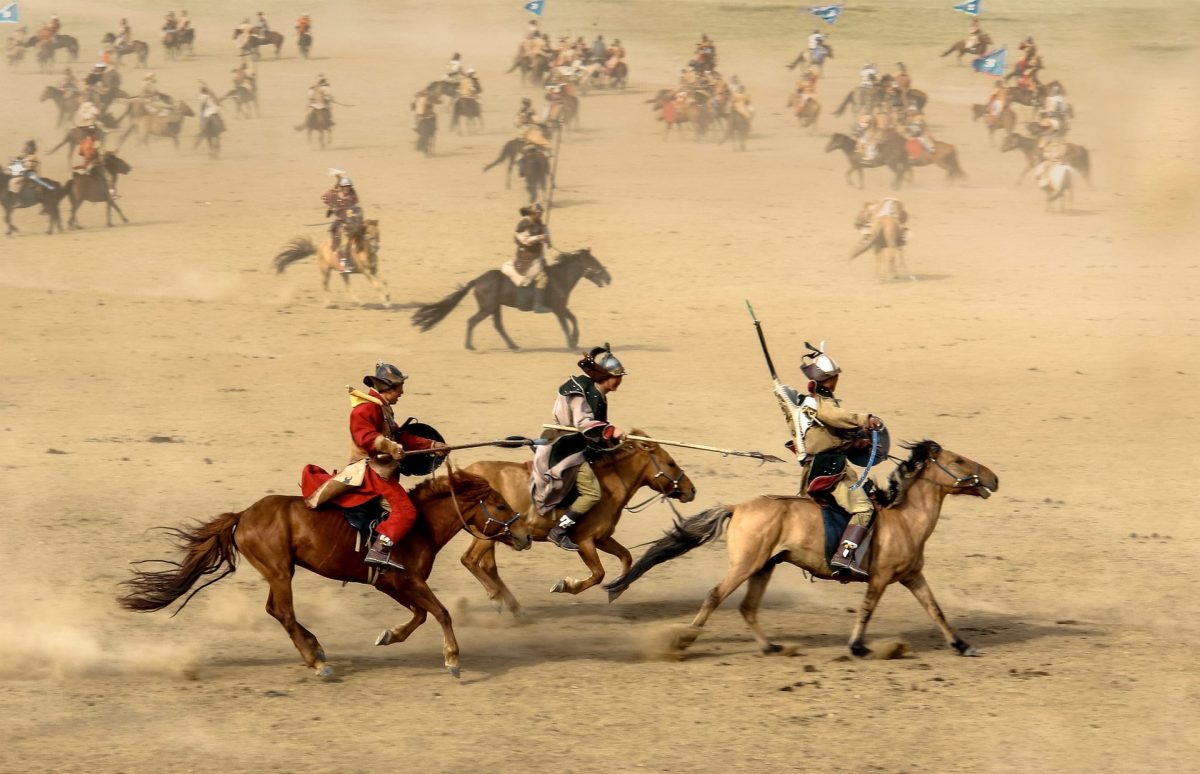
There are some great festivals in Mongolia! So if you can visit Mongolia during this time, your Mongolia trip would be extra special.
A popular time to travel to the country is during the national Nadaam Festival. It’s the most famous festival in the country and a national holiday for the locals.
Every summer, usually around mid-July, this festival is held. There will be wrestling, horse riding, and archery. Nadaam literally means a feast of sports, but it is much more than just a festival about games and sports.
People get together, eat together, have fun, probably empty one or two bottles of strong drinks, sing, dance, and perform. Mingle with the locals and learn about the authentic Mongolian culture.
You have to visit northern Mongolia to see the most traditional Nadaam Festival celebrations, for example in the area of lake Khuvsgul. And make sure to bring your camera with you, as it’s a picturesque happening.
Another amazing festival in Mongolia is the Altai Eagle Festival in West Mongolia. In the Altai mountains, eagle hunters and their trained eagles will showcase their traditional culture. The festival is the start of the eagle hunting season.
We stayed with a Kazakh family of eagle hunters and had the most amazing time.
Off the Beaten Track Travel

Looking for an off-the-beaten-track destination? Mongolia it is! When traveling to Mongolia, we heard so many people saying ‘Mongolia is on my bucket list too’ and ‘one day I will go there’. But as it’s really an off-the-beaten-track destination, the country sits on people’s travel bucket-list forever.
There are not many paved roads in Mongolia, so your Mongolia trip will get adventurous. In 2007, there were just 2600 kilometers (1615 miles_)of paved roads in the country. In recent years, this changed to 10,000 kilometers (6214 miles) of paved roads.
Most of those paved roads are in and around Ulaanbaatar. This is just 20% of the total roads in Mongolia, so imagine how many unpaved roads there are.
And those roads are often very bumpy, or sometimes roads are fully gone! For our trip, we hired a local driver (and his 4×4 car). We know some people rent their own car and drive around the country, but we don’t understand how they managed.
Our driver had to ask other Mongolians multiple times a day if roads were accessible. And sometimes, after multiple hours of driving, we had to turn around to find another road. Sometimes we were unable to drive on it; there was too much water on the road or roads were too muddy, for example.
If you are going to drive yourself, it might be handy if you know how to change a tire!
And if you are sitting back in the back of the car, it will get bumpy. Adapt and enjoy the ride – and the gorgeous views. Bring medication with you if you get motion sick!
Mongolian Culture

Mongolia’s culture – one of the world’s last surviving nomadic cultures – is world-famous. These days, we all know “digital nomads”. Working remotely, online, and moving places all the time.
But the Mongolian nomads have been doing this for many, many years already. But they don’t work online, they work in and around their portable home.
The nomads in Mongolia live in a yurt, which is a portable and round tent covered with skins and felt. A yurt is also known as a ger, this is how the Mongolians call their home. They pack everything they own twice or three times a year to move to a different location.
Usually, the nomadic families move in spring and just before winter. The nomadic families move according to the natural circumstances of the season. They do this to provide new food for their herds and to protect themselves from the cold weather in wintertime.
It’s not like they move from north to south, but from the lowlands to highlands, or from open valleys to more hidden places against the wind. It gets very cold in winter in Mongolia.

Normally, nomadic families don’t move far from one camp to another and stay within the region.
When traveling around Mongolia in spring, we saw many families moving around. That was so impressive, to see them moving places with their stuff and their animals.
The nomadic families often have cows, goats, sheep, horses, and/or camels. They keep them for food (meat and milk), and for trading.
About 25-40% of Mongolia’s population still preserve a Mongolian nomadic way of life. And the nomadic cultural heritage and lifestyle are still very similar to the traditions of centuries ago.
Sleeping in a Yurt Mongolia

Sleeping a ger is a must when visiting Mongolia! We got the opportunity to stay with nomadic families in their ger, and it’s an adventure to never forget.
There are ger camps in Mongolia, especially for tourists. It’s like a lodge setup but with gers. These ger camps are great to go to, as they give tourists an idea of how it is staying in a ger, but with western amenities.
The gers of nomadic families are often very modest, so there’s not always a bed, shower, or toilet. But we stayed at one nomadic family who had electricity, walkie-talkies to communicate with each other, a television, solar panels, and lights.
So some western life is integrated into the traditional Mongolian nomadic lifestyle in some families, but this is still rare. And we can imagine they don’t want too much stuff. As the more stuff you have, the more you need to move around!
Nomadic culture

Everything nomadic people need is there in their ger. Each ger has a fireplace in the middle, for cooking and to keep the Ger warm. Smoke from the fireplace escapes through a hole in the center of the roof, like a chimney.
These large portable tents protect nomadic families from some of the coldest temperatures on the planet during winter.
If you get the opportunity to stay with a Mongolian nomadic family in their ger, definitely take it! As this is such an authentic experience.
As a whole family lives in the yurt, there’s not really any privacy. There are no walls or separated places in the yurt, and they live, sleep, and eat together. Not sure how you can be really intimate this way, but it’s obviously been done like this for ages (and we saw many little children walking around)!
Don’t expect comfort when staying with a nomadic family, it’s the perfect way to leave the western way of living behind for a bit.
Because of its beautiful open culture, Mongolia’s people make the country feel surprisingly accessible and warm (even during the cold spring!).
Wildlife Mongolia

In the countryside of Mongolia, you will not see normal traffic jams, but traffic jams caused by herds of cows, sheep, goats, horses, or camels. They are just walking on the road, standing on it, or are trying to cross.
Animals can wander wild and free in Mongolia’s countryside (which is almost the whole country). They can go where they want to go!
There are no fences for animals, and nomadic families keep their herd together with help of herding dogs. The dogs also keep wolves away, who see the free-roaming animals as easy prey.
Be prepared to see many animals while traveling around the country. When you are on the road, opening your ger, or when you are squatting behind a bush and out of a sudden there’s a camel looking at you.
There are also many wild animals living in Mongolia. Like the famous Prezwalski horse, snow leopards, yaks, gray wolves, the Siberian ibex, Gobi bears, and gazelles!
We searched for snow leopards in the mountains on a tour but didn’t see them, sadly.
The Feeling of Being the Only One

In Mongolia, you can truly feel like you are the only one on earth. We already talked about the fact Mongolia is one of the least populated countries in the world.
But it’s not only a low populated country, it is also the 19th biggest country on earth. Only 2 people live per square kilometer (5 people per square mile).
You can drive around the country for hours. Hours of seeing nothing but limitless open space. And you can visit the most incredible places without other tourists around. It makes you feel like you are the only person in the world.
This is not something you can experience in many countries in the world. Especially not in the Netherlands (where we are from) and many other countries in Europe.
Trans-Mongolian Railway

Want to make your trip extra adventures? Why not travel by train to or from Mongolia? We visit Mongolia during our Trans-Mongolia Railway trip.
Initially, we were supposed to do the Trans-Siberian Railway route through Russia only, but we are so happy we changed our minds.
The Trans-Mongolian Railway travels from Moscow to Beijing, via Mongolia. One of the reasons you must visit Mongolia is because of this epic train ride. It’s the longest continuous rail line in the world, traveling across two continents, covering almost 10,000 kilometers (6214 miles).
Yes, you can stay on the train and enjoy the ride while looking outside the window. But you have to experience Mongolia yourself!
Mongolia’s Nature

If you love the outdoors, Mongolia is your paradise. Mongolia’s nature is incredibly diverse, and driving through Mongolia amazed us every minute.
From the beautiful desert steppe and incredible sand dunes in the Gobi in the south to the mountainous regions in the west to the lakes in the north: Mongolia’s nature will never bore you.
The best places to visit in Mongolia are: Lake Khövsgöl, the Gobi Desert, the Orkhon Valley, Khustain Nuruu National Park, Gorkhi-Terelj National Park, and the Altai Mountains.
Looking for more stunning nature in Asia? Visit Khao Sok National Park in Thailand!
Horse Riding Mongolia

Mongolia is heaven for everyone loving horses! Here you can find wild Przewalski’s horses , the only species of wild horses left on earth. Once, they were nearly extinct, but they were imported back into Mongolia. And now you can find them in Khustain Nuruu National Park! They are beautiful to see.
Of course, the Przewalski’s horses aren’t meant to ride on, but horse riding is a very important part of Mongolian culture (on other horses than the Przewalski’s horses). Nomadic families use their horses to move around.
Horse riding tours in Mongolia are popular as it’s an amazing way to see true Mongolia, become part of Mongolia’s wilderness, and experience and see the nomadic lifestyle first hand.
You can do a short horse riding tip of a couple of hours in Mongolia. But if you love horse riding, a multiple day-tour might be the best way to see (a part of) Mongolia.
The Beauty of Every Season

Mongolia is called the country of the blue sky because it has over 250 sunny days a year! The summers are hot and the winters extremely cold.
And in spring, the weather is everything. Literally. In the Altai Mountains in the west, you can see all four seasons, from snow to sun to rain, in just ten minutes. Every season shows a different Mongolia.
The winter shows a beautiful white wonderland, the summer its green mountains, and spring its newborn animals jumping around happily.
Driving around Mongolia is most recommended during (late) spring, summer, or early autumn. This way, it’s easiest to travel around the country without being delayed because of the weather and undrivable roads.
Gobi Desert Mongolia

The Gobi Desert in Mongolia is one of the places you have to visit when you travel to Mongolia! It’s the second-largest desert in Asia and the sixth in the world.
And it has super unique ecosystems, amazing natural formations, real dinosaur fossils, huge dunes, many camels live here. Plus, the desert was an important place of the ancient Silk Road.
The desert is also famous for its dust and wind storms, so be prepared! During wintertime, the temperatures can reach minus 35 degrees Celsius (-31 Fahrenheit) in the desert, and during summer temperatures can reach plus 35 degrees Celsius (95 Fahrenheit).
Must-visit spots in the Gobi Desert are the flaming cliffs and the Sand Dunes of Khongoryn Els. We camped next to the dunes with our own tents and had the best night ever.
Camping in Mongolia

You could say sleeping in ger is kinda camping in Mongolia, but another option is to bring your own tents! We hired a driver, and he arranged tents, so we could overnight everywhere we wanted. You can wild-camp in Mongolia almost everywhere.
Camping is especially a great option if you travel to Mongolia between May and mid-October, for the best weather.
We only had great experiences camping in Mongolia, only one time it got a little too cold when staying in the mountains searching for snow leopards. We can’t recommend camping with -10 degrees Celsius (14 Fahrenheit) at night.
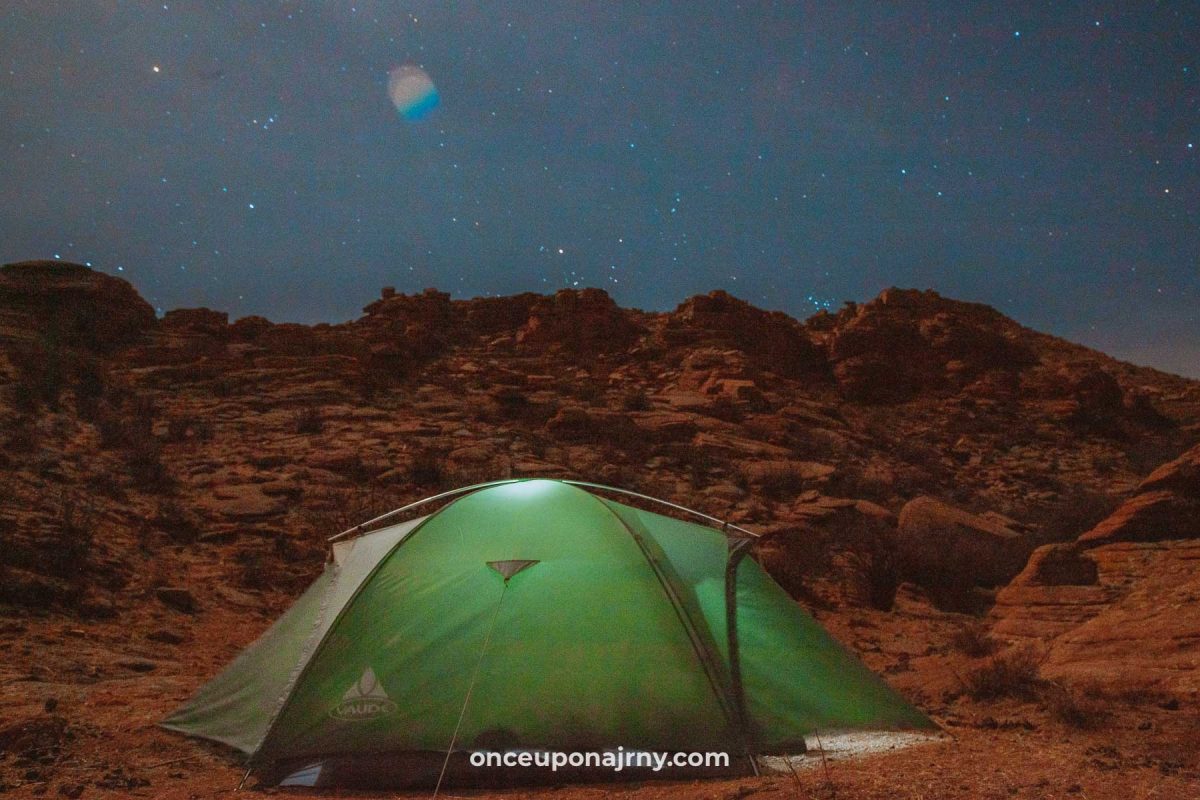
There’s no light pollution in Mongolia (if you stay in the countryside), so make sure to admire the sky at night. The skies filled with stars are incredible!
Some basic camping tips: don’t set up your tent under a tree, you never know if a storm sets up and branches might fall. And don’t set up your tent too close to water or riverbeds that are dry. Heavy rain can change everything!
Eagle Hunters and The West

Most tourists go from the capital to the Gobi Desert in the south, or to Lake Khövsgöl in the north, and they miss out on the best part of the country: the west.
The more we travel west, the friendlier the people become; we drive into the Kazakh area. These people are known for their hospitality and… for eagle hunting!
We visit the family of the Eagle Huntress and have the best time. Besides Kazakh people, West Mongolia is also famous for its nature.
Our driver proudly tells us that you don’t have to travel all of Mongolia: all things can be found right there, in the west. Mountains, sand dunes, and lakes: everything!
The Altai mountains are located in western Mongolia, which is the highest and largest mountain range in the country. If you visit this area during the right time, you might even get the chance to see the Altai Eagle Festival.
Hiking Mongolia
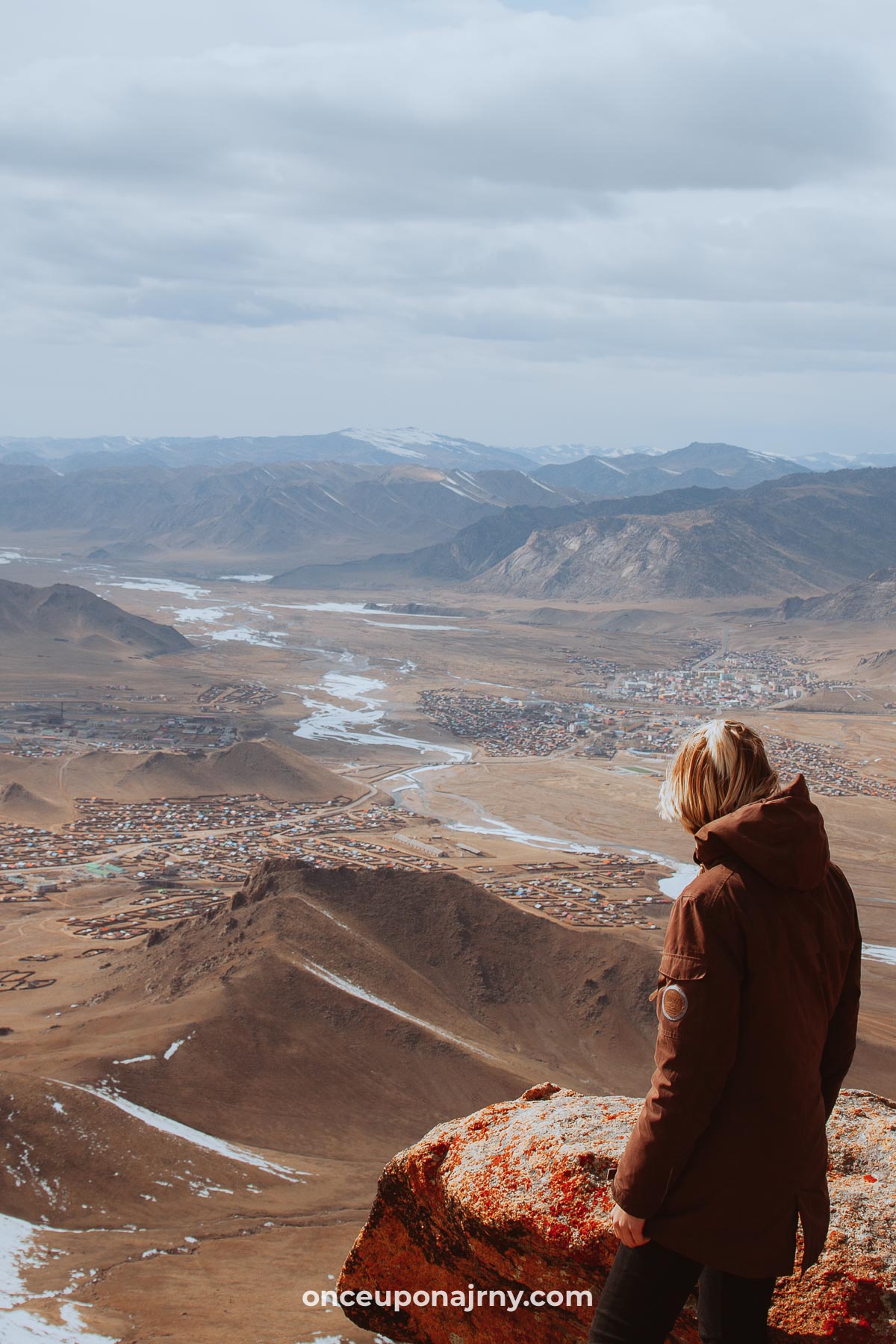
Horse riding is one option to experience the wilderness of Mongolia, hiking is another option! Mongolia is a paradise for hiking lovers. And there are hikes for everyone, from beginners to pros.
If you have enough time and are an experienced hiker, then the Altai mountains are the place to be for hiking. Walk through the amazing snow-capped mountain ranges and enjoy the wildlife, beautiful landscapes, and culture you will experience on the way.
The Khangai Mountains in central Mongolia are great for hiking if you are looking for an easier area for hiking. And if you don’t want to travel too far from Ulaanbaatar, other options are Lake Khövsgöl, the Terelj National Park, and Bogd Khan Mountain.
Mongolian Food
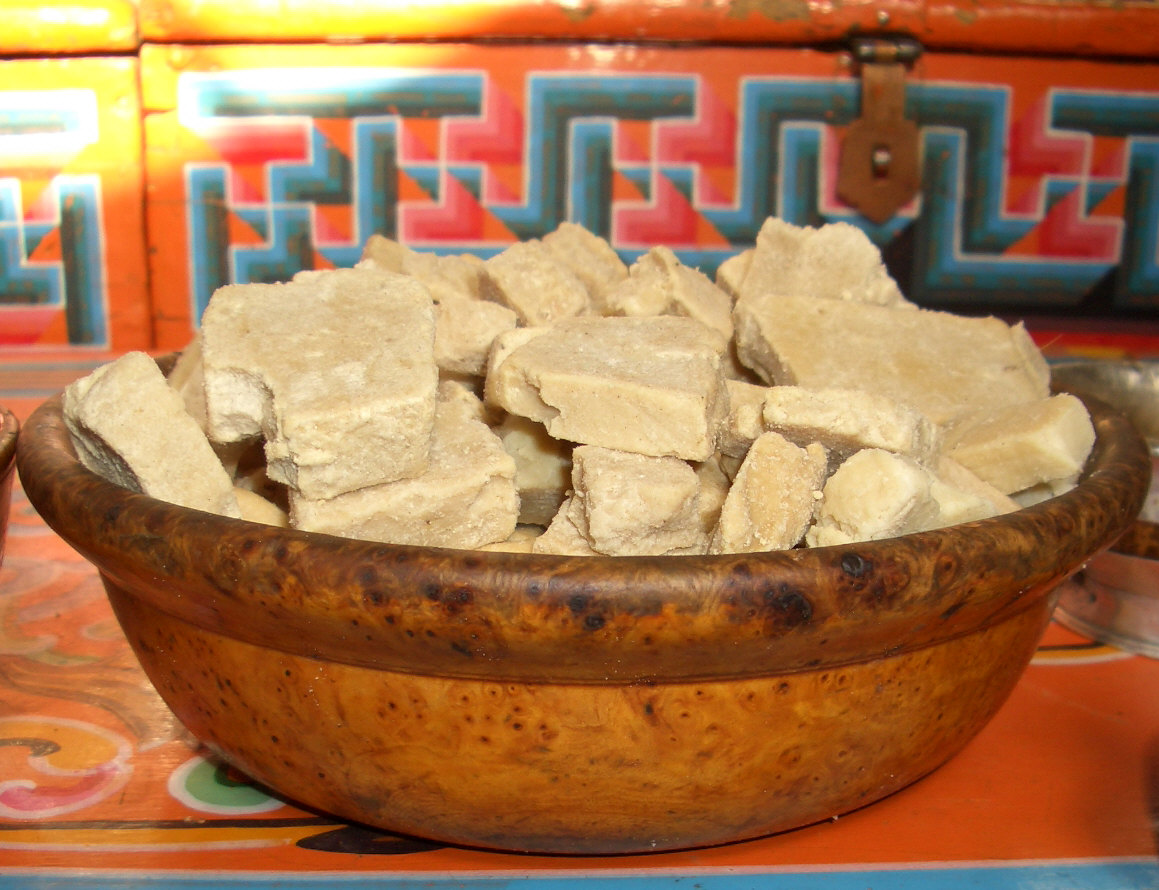
Okay, for some people this might be the reason to not visit Mongolia. Mongolian food is interesting as it features a lot of meat and milk products. Especially when you visit Mongolia in winter or just after. At that time, there aren’t many vegetables available.
We traveled through Mongolia in early spring and were happy when we found a carrot or potato somewhere, something else than meat.
Mongolians eat and use everything from the animal, which we think is amazing. You shouldn’t be surprised if they serve a dish with intestines. So if you like meat and don’t mind experimenting, Mongolia is a great place for you.
Besides the meat, they also use other things from animals. Mongolians make warm clothing from animal skin, and they use cow poo to make fire.
There are also many dairy products available in Mongolia. They are very creative with the use of milk from their local animals like camels, horses, cows, goats, yaks, and sheep.
The most interesting dairy snack we got was Aaruul. Aaruul is dried curd, and quite difficult to eat (it’s very hard)!
Ulaanbaatar

Although it is the coldest capital city in the world, Ulaanbaatar – or just UB – is a lively capital with a rapidly growing population.
The capital city is located 1,350 meters (4,430 feet) above sea level and reaches temperatures of -42 degrees Celsius (-44 Fahrenheit) during winter.
But summer temperatures can reach 39 degrees Celsius (102 Fahrenheit), so the city experiences extreme differences between seasons.
Nowadays, almost half of Mongolia’s entire population lives in Ulaanbaatar. No wonder the rest of the land is so empty people-wise. It is crazy to think that UB is also Mongolia, as the feel is the opposite of that of the countryside.
The capital attracts young people from rural areas and this makes the city feel alive! For tourists, it’s the international gateway to Mongolia’s wilderness.
But we also recommend spending at least one day in UB. There are some great cultural sights, art galleries, and museums in the capital city. The National History Museum is great to visit.
You can also see many remains of the Communist regime in for example buildings, featuring Soviet architecture.
Visiting other cities in Asia too? Bangkok and Kuala Lumpur are among our favorite cities!
Adventure is Out There

Last but not least, and I think you will get this one by now: adventure is out there in Mongolia! We visited many countries in the world, and Mongolia travel is by far our most adventurous travel experience of all.
For seventeen days, we saw barely any paved roads, no shower, no toilets, and no electricity. We were totally off the grid and lived the nomadic life ourselves. The real one, and not the digital nomad lifestyle we were used to. It is adjusting, but amazing. We had the time of our lives!
Best Time to Visit Mongolia
What’s the best time to visit Mongolia? In winter, the temperatures can be very harsh, reaching -45 degrees Celsius (-49 Fahrenheit). It doesn’t snow a lot in Mongolia. But the snow that falls stays for a long time as the temperatures stay freezing cold at least for four months. The snow simply doesn’t melt!
Winter in Mongolia is from November to February. With good equipment and good preparation, Mongolia travel is possible this time of the year.
The landscapes in winter are extra magical. You probably see many ice sculptures made by Mongolians. And nomads will give you an extra warm welcome because they don’t see many foreigners this time of year.
But, it’s also good to know your Mongolia trip will get extra adventurous. As there aren’t many roads and the infrastructure isn’t there, it isn’t always safe to travel outside of Ulaanbaatar this time of year.
In our eyes, the best time to visit Mongolia is during spring and summer. The temperatures are getting warmer, and nomadic families will move places. This makes for amazing sights.
And in summer the Nadaam Festival happens, which is a great moment to visit Mongolia!
Good to know: it’s possible to experience every season of the year in one day. Especially in intermediate seasons, in May or September. It doesn’t rain often in Mongolia, but the most in summer.
Map of Mongolia
Mongolia travel is amazing, and we hope you are enthusiastic to travel to this beautiful country too! Do you have any questions? Drop them below or send us a message.
Find us on Instagram , YouTube , and Facebook .
If you enjoyed our blog post, don’t forget to share it with all your friends and family! Thank you so much!
PIN THIS ARTICLE
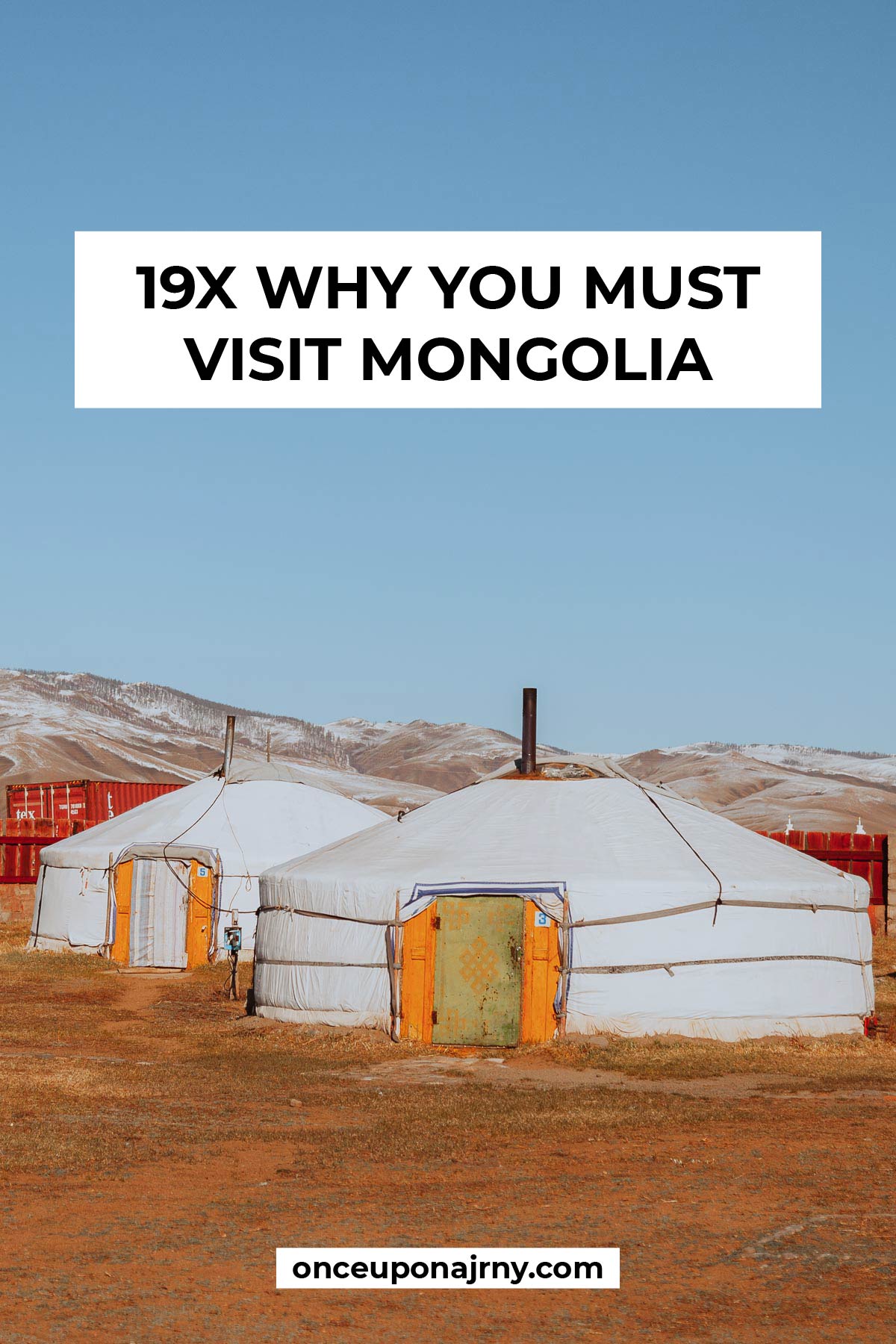
Bren Broussard
Friday 18th of February 2022
Thanks for the article on Mongolia. Yes, it has ALWAYS been on my wish list. I was especially impressed when I saw the eagle huntress a few years back when she was making headlines. How did you grt to stay with the Eagle Huntress family? It it possible for me and my partner to pay to also stay with them? Or other nomadic family in the west? Please assist, before its too late and overrun by tourists… oh wait, that’s me! Oh deer…
Sincerely, Bren
Roxanne & Maartje
Monday 21st of February 2022
Hi Bren! We connected with Ishee Battulga (Ishbaljir Battulga) and he had all the connections to make it happen! Ishee's brother drove us and was our tour guide. I don't think his website is working, but you can find him on Facebook and reach out.
Ratnakor Dosshu
Sunday 14th of June 2020
What is the minimum money needed to stay in Mongolia for 6 month?
Wednesday 24th of June 2020
That really depends on what you do! For a trip through the desert, you need at least $40 per day for the tour. But in Ulaanbaatar, you can definitely do with less!
Wednesday 8th of January 2020
Incredibly beautiful places. I was impressed with your trip! Thanks for sharing!
kimberleygriffioen
Monday 4th of December 2017
Wauw, ziet er echt heel indrukwekkend uit. Wil ik zeker een keer naartoe!
Friday 8th of December 2017
Het is nog veel indrukwekkender in real life!!
Wij deden hier o.a een gobi dessert tour....fascinerend landschap
We hadden echt nog nooit zoiets gezien!

The 101 Best Places to Visit in Mongolia
Looking for Mongolia’s best places to visit ? This guide will tell you the best tourist attractions and historical landmarks listed by region.
- December 4, 2022
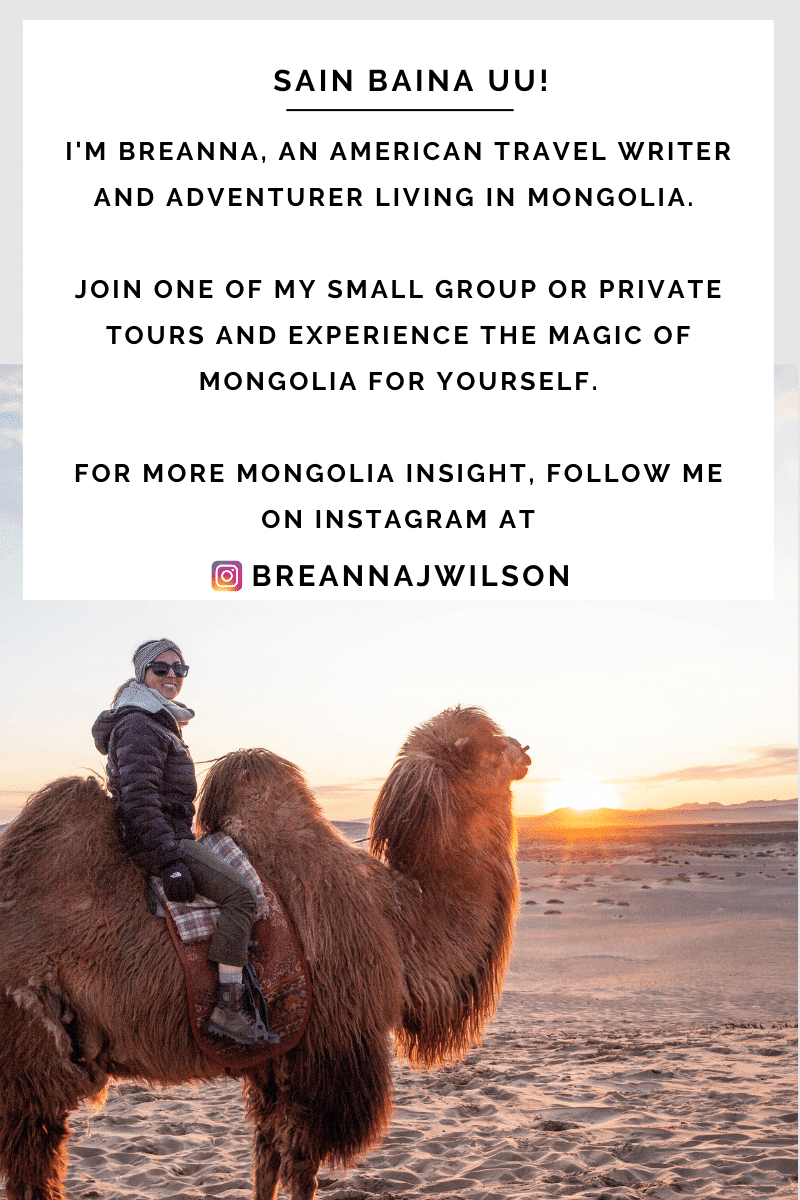
The Best Restaurants in Ulaanbaatar

Where to Buy a Mongolian Deel in Ulaanbaatar
Table of contents.
With 2024 and 2025 being the years to visit Mongolia thanks to a relaxed visa policy for tourists, now really is the time to visit. (Check now if you need a visa to visit Mongolia .)
Slightly smaller than the size of Alaska and with a population of 3.3 million, I love calling Mongolia home. Not only are the landscapes stunning, but so are the people, culture, and traditions. Especially if you’re interested in seeing and experiencing nomadic living firsthand.
Here, almost a quarter of the population still lives this way. Following their herds and moving across the steppe seasonally. Mongolia’s nomadic herders pack up their entire lives, sometimes on camels or yaks, and relocate to greener pastures, quite literally.
It’s an incredible thing to see and be a part of, but it isn’t the only thing Mongolia has to offer. Mongolia’s natural wonders and historical landmarks are some of the best, and most ancient, in the world.
There are pristine mountains and lakes, museums dedicated to the man, the myth, the legend – Genghis Khan himself, as well as Buddhist temples and sacred shrines that have remained untouched for centuries. You can be amazed by dinosaur eggs one minute and lost for words at watching cliffs change colors before your eyes the next. There really never is a dull moment and shortage of things to see here.
In this guide to Mongolia’s 101 best places to visit , I started with my favorite places to visit in and near Ulaanbaatar first. From there, I move east, central, south, north, and eventually west, picking out each of the best sights and attractions to visit across the country.
While many of these tourist attractions and landmarks are well-known, hopefully there are more than a few on this list that will surprise and delight you. You never know what will inspire a trip to Mongolia .
Ulaanbaatar
The best places to visit in Ulaanbaatar aren’t always the most obvious. Sure, you’ll have heard of some of these, but this city still has more than a few tricks up its sleeves. Here are my favorite things to do and see in Ulaanbaatar.
1. Gandantegchinlen Monastery
The “great place of complete joy” is just that, especially around 9 am when the monks start their daily chants. After listening to the monks chant your stresses away, pop into the main temple to see the 26.5 meter tall, gold leaf and gemstone adorned Avalokiteśvara. This also happens to be the largest indoor statue in the world .
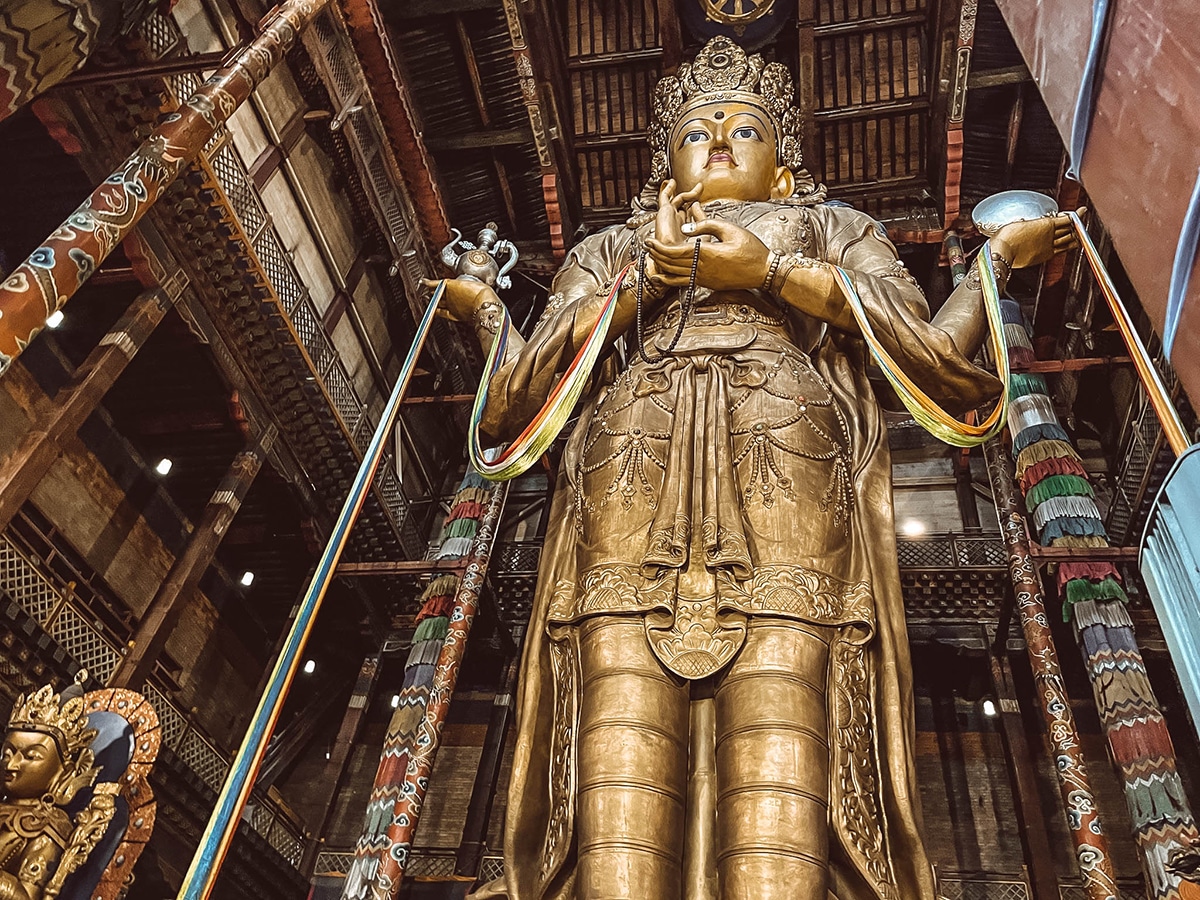
2. Chinggis Khaan Museum
One of the best museums in Ulaanbaatar , visiting the Chinggis Khaan Museum should be on everyone’s list. With more than 11,000 artifacts sprawled over eight floors of exhibition halls, and covering 2,000 years of Mongol history, it’s to spend an entire day here. Go earlier in the day to avoid the crowds.

3. Sukhbaatar Square
Also known as Chinggis Square, Sukhbaatar Square marks the center of town, and life, in Ulaanbaatar. Head there in the summer to sit on the fake greens and people watch as Mongolians dressed in deels (traditional Mongolian robes) come here to take photographs and celebrate special occasions.
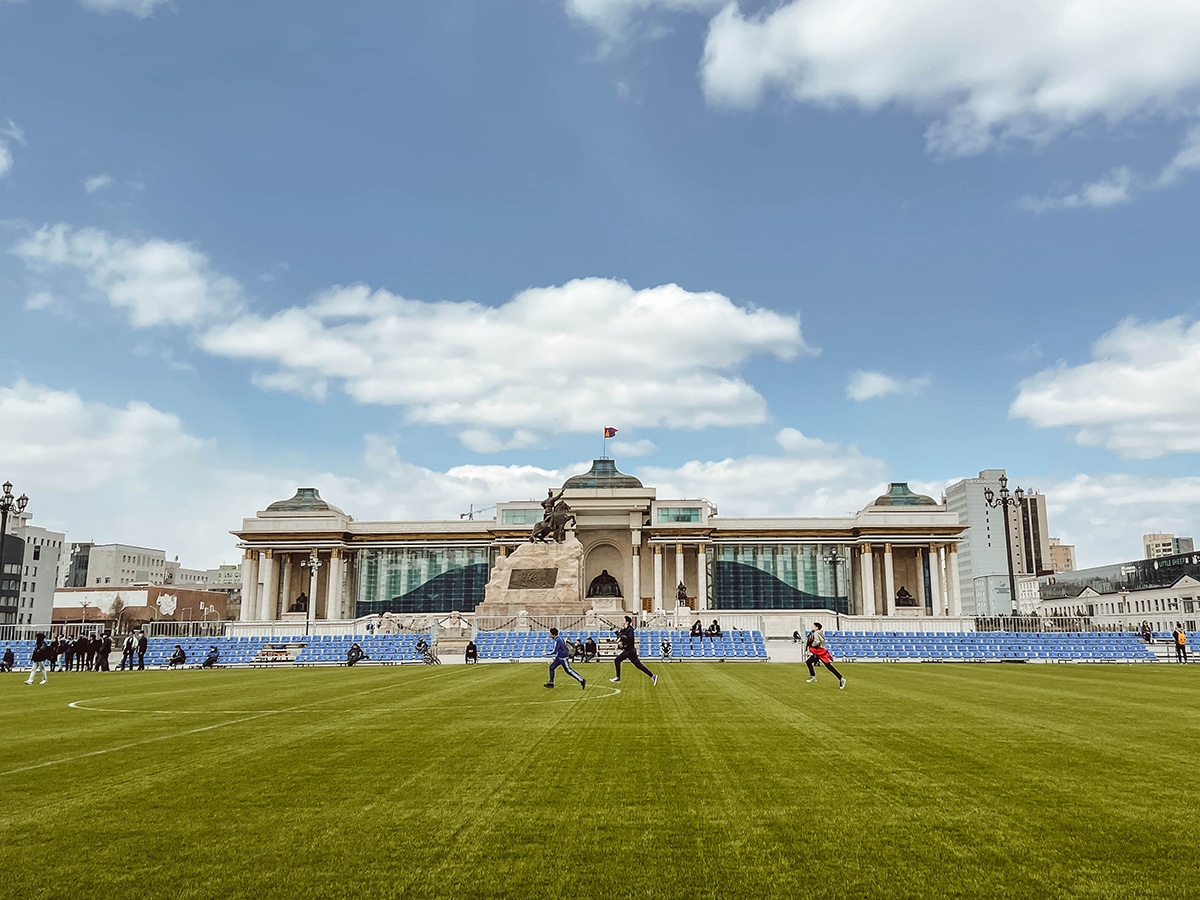
4. The Parliament Building
One of the most impressive and important landmarks in Ulaanbaatar, Mongolia’s Parliament Building can’t be missed. Both the President and Prime Minster have their offices here.
Protecting the front of the building is one of the best Genghis Khan statues in the world. Come here on holidays to see special parades and military processions, especially on Genghis Khan’s birthday when the ceremony of the Nine White Banners takes place.
Genghis Khan’s birthday is celebrated on the first day of winter on the Lunar calendar.
5. Gobi Cashmere at the Galleria
Mongolia is famous for its cashmere and Gobi Cashmere is the best place to shop for cashmere in Mongolia. Not to mention, this is also the world’s largest cashmere store . So, there’s that. Drop in and pick up a cashmere sweater, or three, and don’t forget to try on a coat for good measure. Cashmere is one of the best souvenirs you can buy in Mongolia and this is the best cashmere store in Ulaanbaatar for doing just that.
6. State Opera and Ballet Academic Theatre
Opened in 1963, Mongolia’s opera house is a perfect example of a neoclassical building lost in time. The pink building is hard to miss when you’re in Sukhbaatar Square. From Swan Lake to Aida, purchase tickets to any of the theater’s many different shows on the State Opera and Ballet Academic Theatre website .
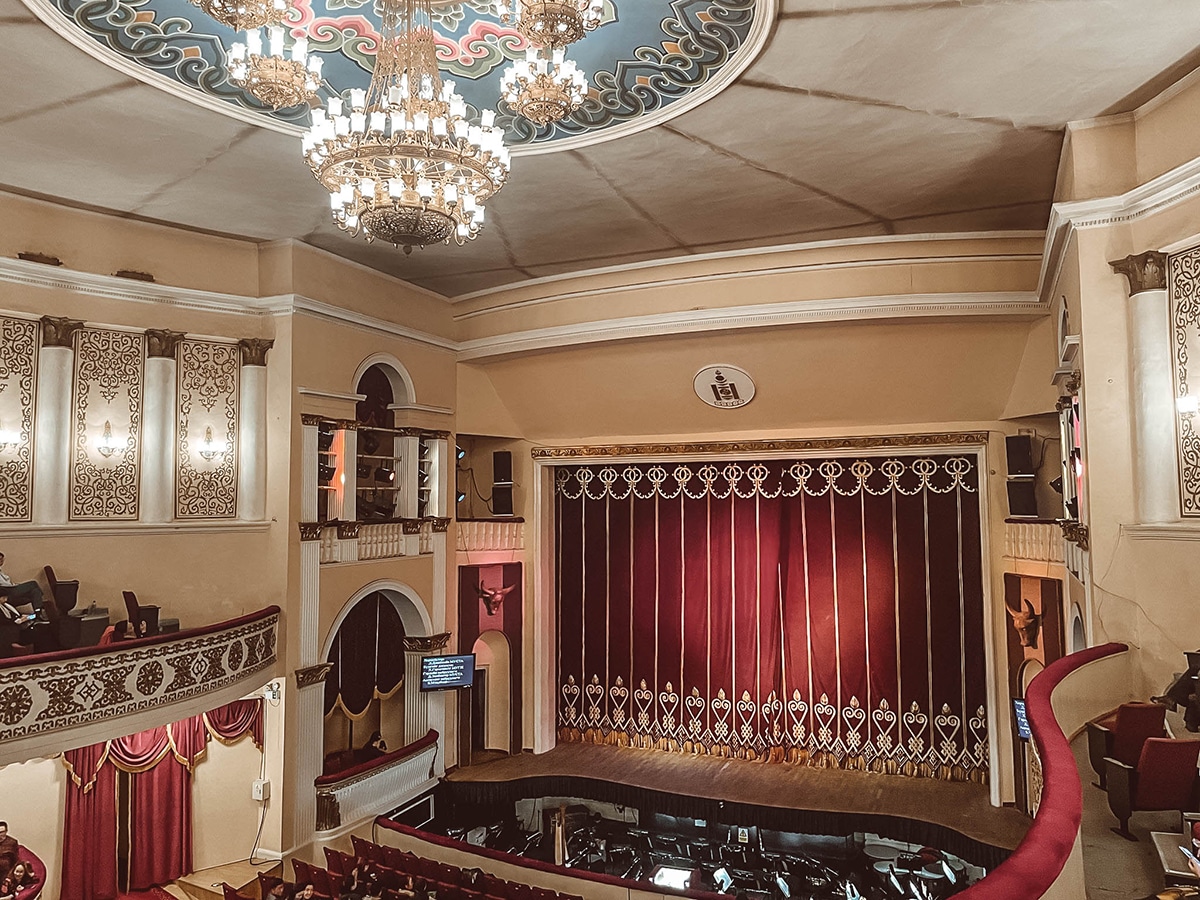
7. Mongolian Grand Theatre of National Arts
Not to be confused with the other pink theater above, the Mongolian Grand Theatre of National Arts is where Mongolian heritage thrives. Here you can see folklore come to life, portraying the nomadic lifestyle, watch Mongolian contortionists, or simply watch a concert or orchestra performance.
8. Ulaanbaatar National Amusement Park
The only place to ride a rollercoaster in the city, the National Amusement Park is a cheap way to spend an afternoon in Ulaanbaatar on a sunny afternoon, especially with children. Visit the castle surrounded by a moat, ride the Ferris wheel and carousel, or just take a leisurely stroll through the park.
9. Black Market
Naaran Tuul, also known as the Black Market , is one of the best places to visit in Ulaanbaatar . The market sprawls in every direction and is hands down the best, and cheapest, place for buying souvenirs. It’s also where you want to come to buy a deel, the traditional robes Mongolians wear, as well as authentic herder boy horse riding boots, and more, to complete your new Mongolian look.

10. Central Dinosaur Museum of Mongolia
Ulaanbaatar’s dinosaur museum is a fun, quirky exhibition hall where you’ll find some of Mongolia’s greatest archeological discoveries. From a full-size Tarbosaurus Bataar skeleton to dinosaur eggs and plenty of Protoceratops skulls, the museum is great for kids and adults.
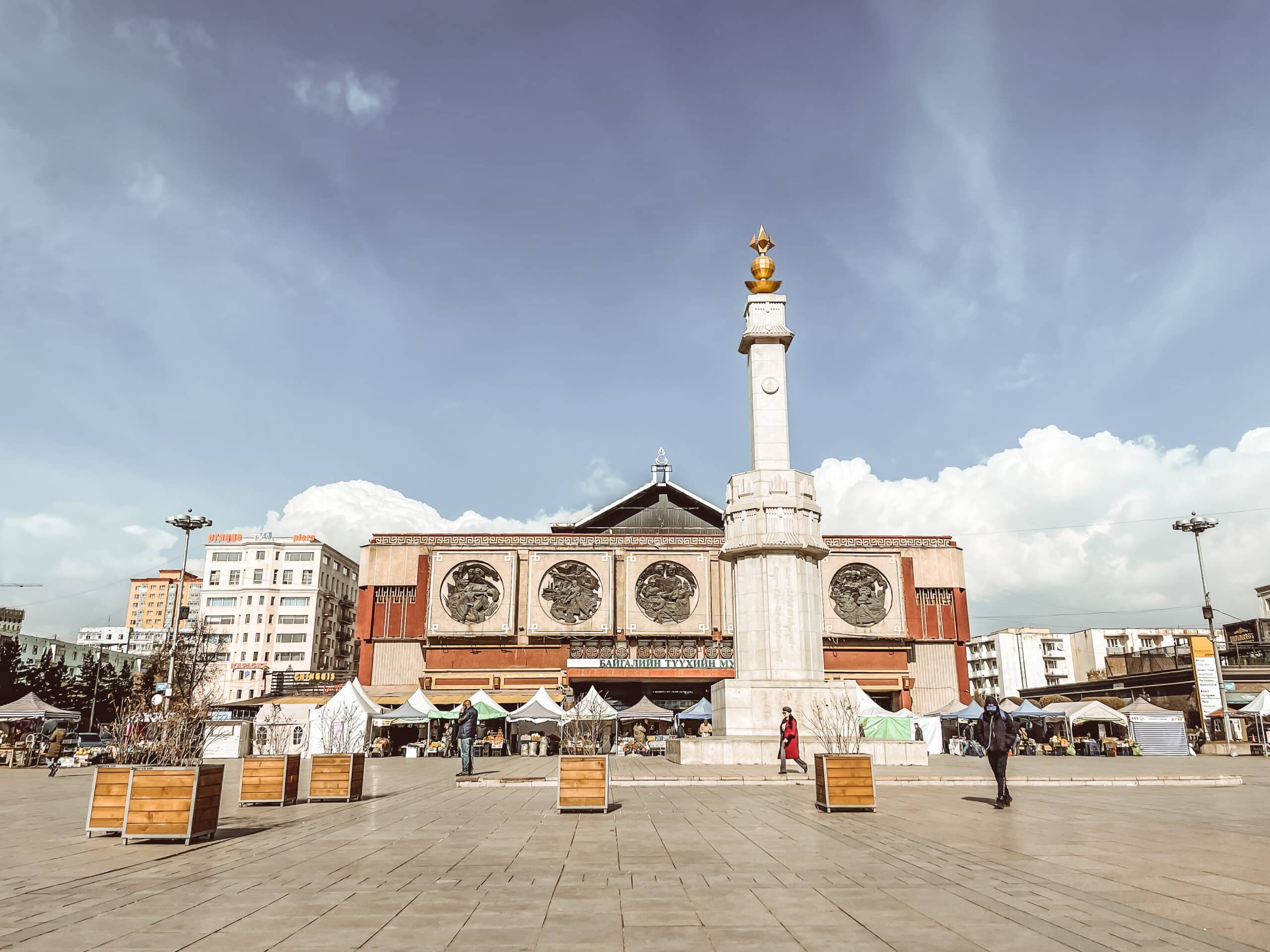
11. The Fine Arts Zanabazar Museum
Buddhists and non-Buddhists alike will find the Fine Arts Zanabazar Museum an interesting thing to do and see in Ulaanbaatar . Here, many of Mongolia’s most famous painter’s works can be seen in person. Learn about the famous Mongolian painter Balduugiin Sharav before moving on to see some of the most famous Buddhist artifacts in the world, including the red coral mask of Jamsran.
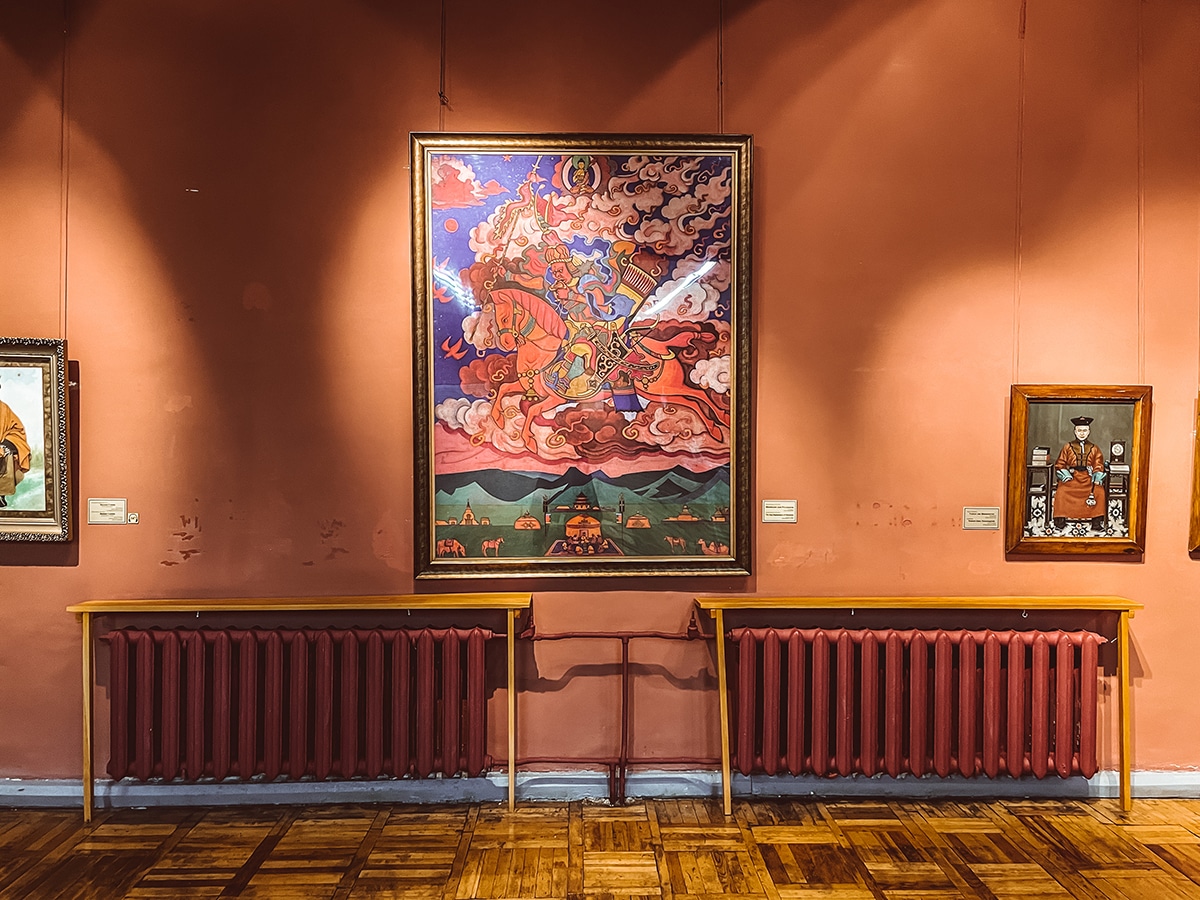
12. Mongolian National Modern Art Gallery
One of the best museums in Ulaanbaatar , the Mongolian National Modern Art Gallery is where you’ll find one of the most impressive collections of modern and contemporary Mongolian art in the world. Opened in 1991, the gallery is home to the most famous painting in Mongolian history, including “One Day in Mongolia” by Balduugiin Sharav.
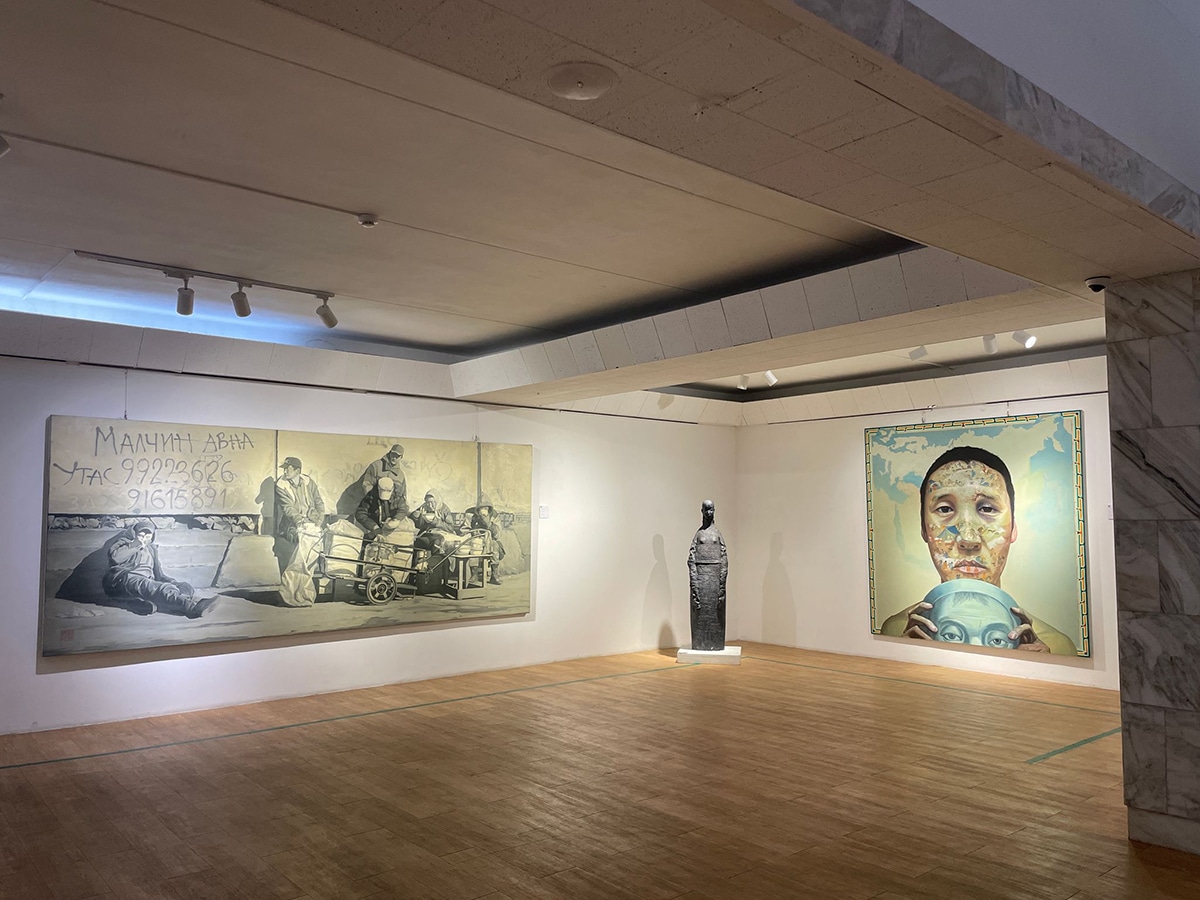
13. Mongolian National Museum
As the largest museum in Mongolia, the Mongolian National Museum covers it all. More than 57,000 objects cover Central Asian history and the history of Mongols from prehistory to the end of the 20th century. Traditional dress exhibitions lead way into medieval ger recreations, eventually ending at a collection of modern historical objects, photographs, and documents.
14. Dashchoilin Monastery
Follow the sound of chanting to these circular, yellow structures, and you’ve found the spot. A hidden gem in Ulaanbaatar, you’ll find about 100 monks inside this often overlooked monastery. Almost 90% of Mongolians are Buddhist, so spend the morning learning about – and participating in – the importance of these practices in Mongolian culture.
15. Choijin Lama Temple and Museum
Built in 1904, the temple was active until 1937 when it was closed during the Communist repression against Buddhism. Only one of a few temple complexes in Mongolia the Communists didn’t destroy, today, Choijin Lama Temple is one of the best museums for Buddhist artifacts in the world. Inside, visitors will find religious instruments, thangka paintings, silk embroideries, wood carvings, statues, and the biggest collection of cham dance masks in Mongolia.
16. Bogd Khan Palace Museum
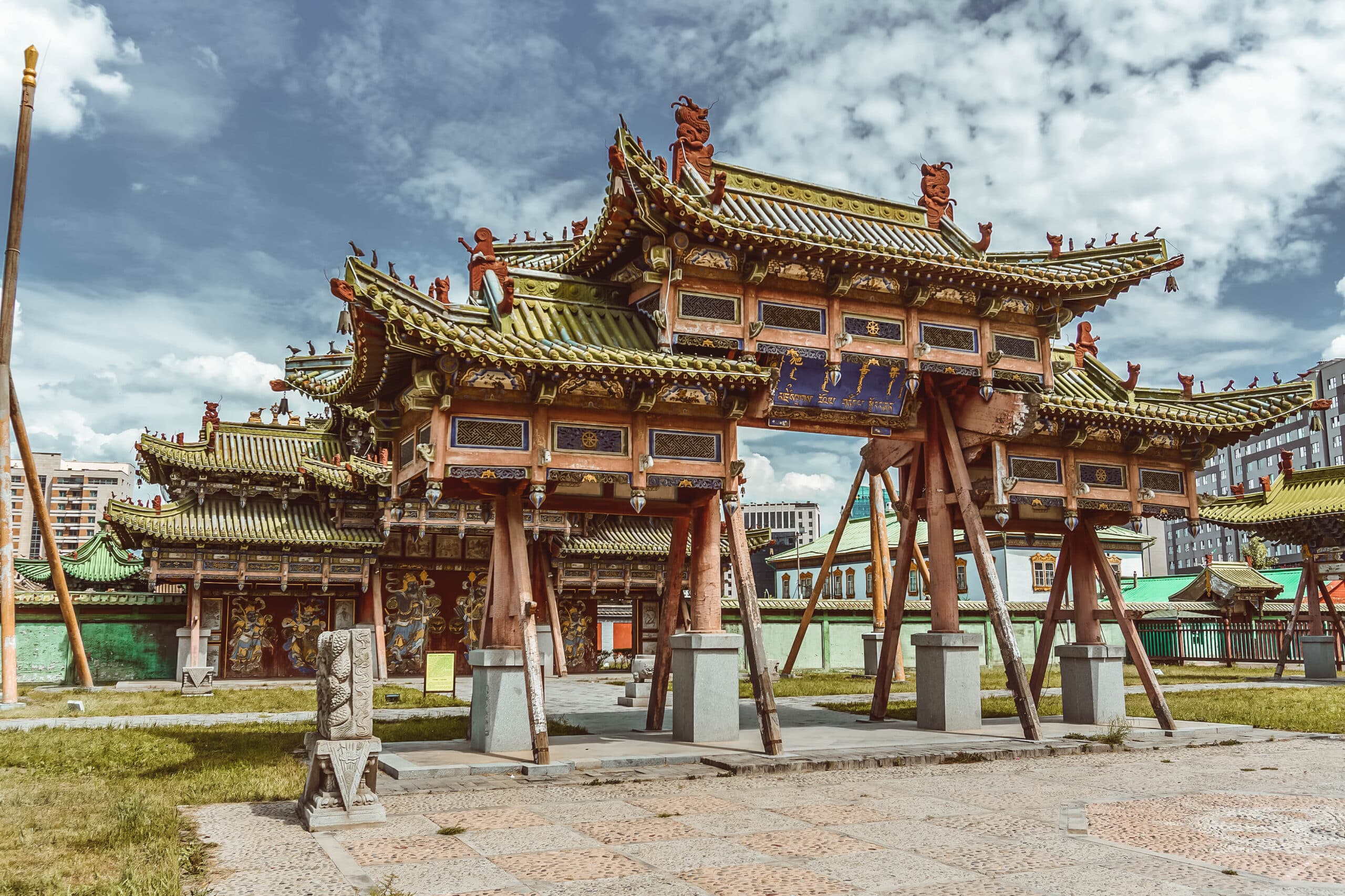
17. National Sports Stadium
Ulaanbaatar’s National Sports Stadium is most associated with Naadam, Mongolia’s biggest national festival. The festival’s opening ceremonies are held here annually each July 11 and tickets to the Nadaam opening day are some of the hardest tickets to get in town. With only 12,500 seats in the stadium, book a Naadam tour for the best way to secure tickets to this culturally important festival.
18. Mongolian Military Museum
On the outskirts of Ulaanbaatar, this often overlooked museum screams Sovietism. An interesting look into Mongolia’s military history and the weaponry they use, veterans and history buffs especially will find this museum interesting.
19. Mongolian Rail Museum
Also known as the Steam Locomotive Museum, according to Google Maps, these Soviet train cars are relics lost in time. This weird, free thing to do in Ulaanbaatar, is worth the detour from the Black Market to check out. The museum is currently closed, but the train cars are clearly visible from the street.
20. Mongolia Mounted Archery Camp
Mongolia’s mounted archers were once known as the fiercest warriors in history thanks to their archery skills and the ability to shoot with insane accuracy while galloping at full speed. It was thanks to these skills that Genghis Khan and his army were able to conquer and expand his empire so rapidly to reach from China to Europe. These days, this lost art is making a comeback in a big way. Join an indoor training session in Ulaanbaatar or turn on your warrior mode and schedule a full day or archery and horseback training outside of the city.
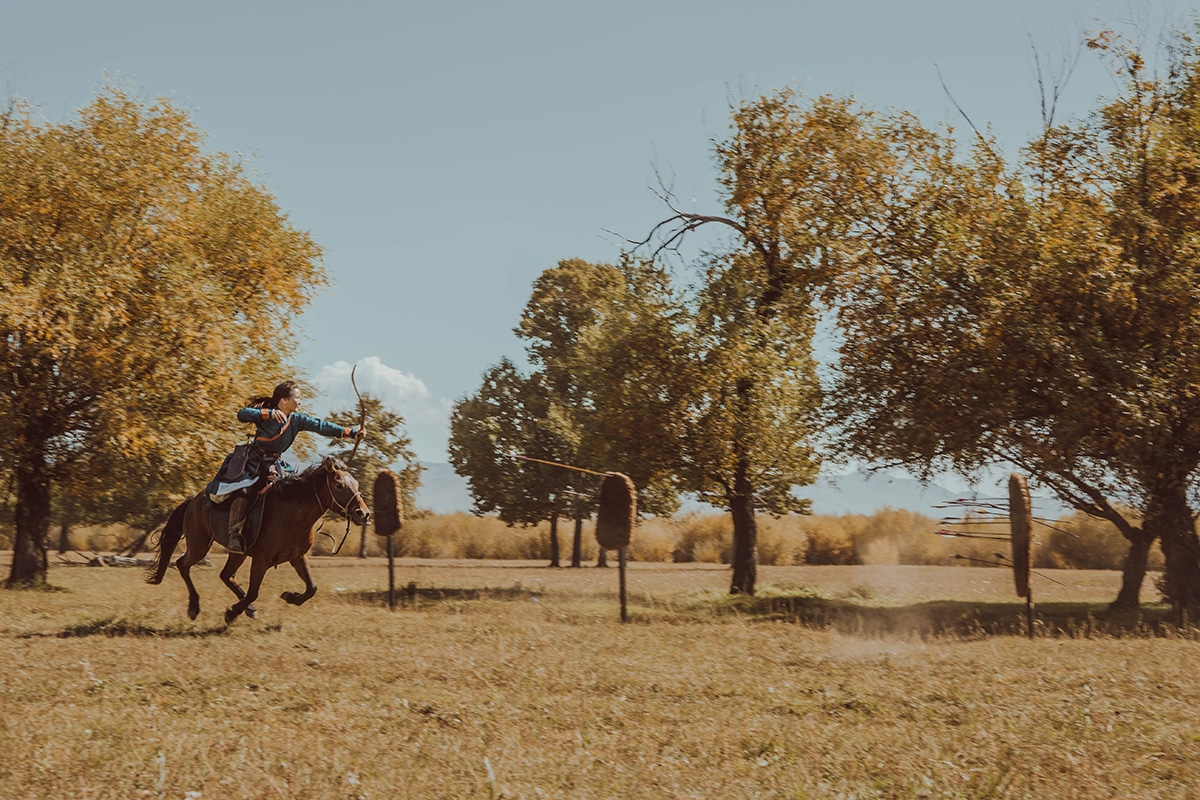
21. Eatopia Food Hall
Get to know a different side of Mongolian food by eating your way through some of the city’s best restaurants. Warm up with a bowl of ramen at Miso Ramen, chow down on some sushi at Noka Japanese, or sip on a classic cocktail at Cocktail Bar.
22. Zaisan Memorial Monument
Sitting at the base of Bogd Khan Mountain, the Zaisan Memorial Monument is one of Mongolia’s best Soviet monuments to visit. Celebrating a friendship between Mongolia and the former USSR, the details on the monument are spectacular. Look for Jugderdemidiin Gurragchaa, the first Mongolian to go to space, before taking in your own space views of a sprawling Ulaanbaatar below. Head to the Zaisan Memorial Monument at sunset for the best views in Ulaanbaatar.
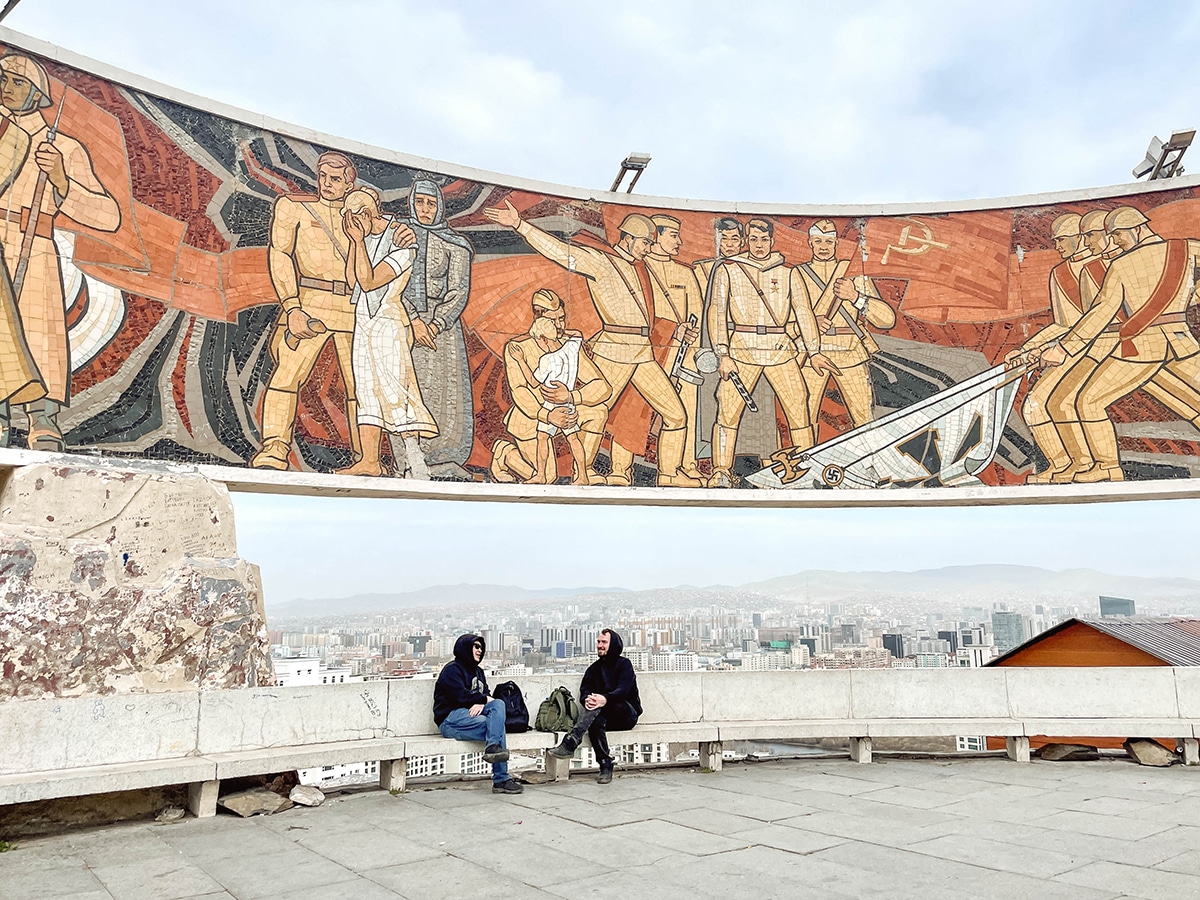
23. Tsetsee Gun, Bogd Khan Mountain
No matter where you are in Ulaanbaatar, you can’t escape the views of Bogd Khan Mountain in the distance. Looming over the city, it’s Tsetsee Gun peak that calls out to true adventurers. Spend the day hiking these lesser-explored mountains in hopes of getting closer to Tengger, Mongolia’s sky god. Bogd Khan National Park also happens to be one of the oldest national parks in the world , established in the 18th century.
Day Trips from Ulaanbaatar
You’ll need a day away from the city to experience these monasteries, natural wonders, and other great tourist attractions in Mongolia .
24. Manzushir Monastery
A former gompa, meaning a Buddhist ecclesiastical fortification for learning, Manzushir Monastery dates back to 1733. Eventually destroyed by Communists in 1937, parts of the complex still remain and worth making a pilgrimage to today. Visiting the monastery is a great day trip from Ulaanbaatar, where avid hikers and trekkers can stretch their legs. Hikers up for a challenge can even cross over Bogd Khan Mountain to Tsetsee Gun Peak before continuing on into Ulaanbaatar.
25. Dambadarjaa Buddist Temple
Dating back to 1761, more than 50 monks can be found practicing at this ancient temple when you pay a visit today. The temple is an iconic landmark, recognized by the white stupas sitting on top. Only two old temples and two shrines are all that remain of the original 25 buildings where 1,500 lamas called home at the height of the temple’s presence. Daily chanting takes place from 10 am to 1 pm and readings of requested texts are offered until 1 pm.
26. Gorkhi-Terelj National Park
Gorkhi-Terelj National Park is one of Mongolia’s most-visited national parks , and for good reason. The park is only 55 km northeast (1.5 hours by car) from Ulaanbaatar making for an easy and exciting day trip. Inside the park, ride horses year-round, and climb atop a two-humped Bactrian camel, or brave the cold and go dog sledding in winter. Famous tourist attractions in and around Gorkhi-Terelj National Park include the Chinggis Khaan Equestrian Statue, Turtle Rock, Aryapala Temple Meditation Center, and the nearby 13th Century Complex.
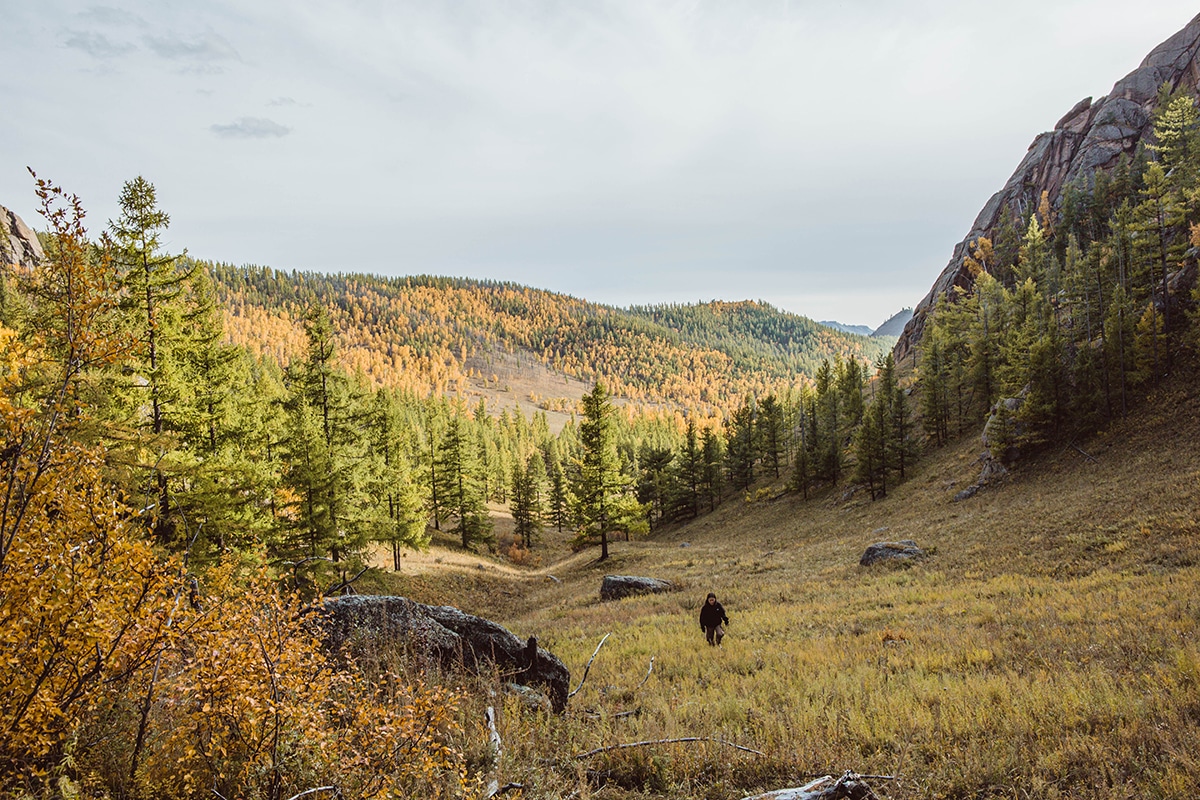
27. Genghis Khan Equestrian Statue
Not only is the Genghis Khan Equestrian Statue Mongolia’s most iconic monument, it’s also the tallest equestrian statue in the world. Standing tall at 40 meters high, climbing to the top of the horse’s head to stare the Great Khan in the face makes it one of the most picture-perfect places to visit in Mongolia .
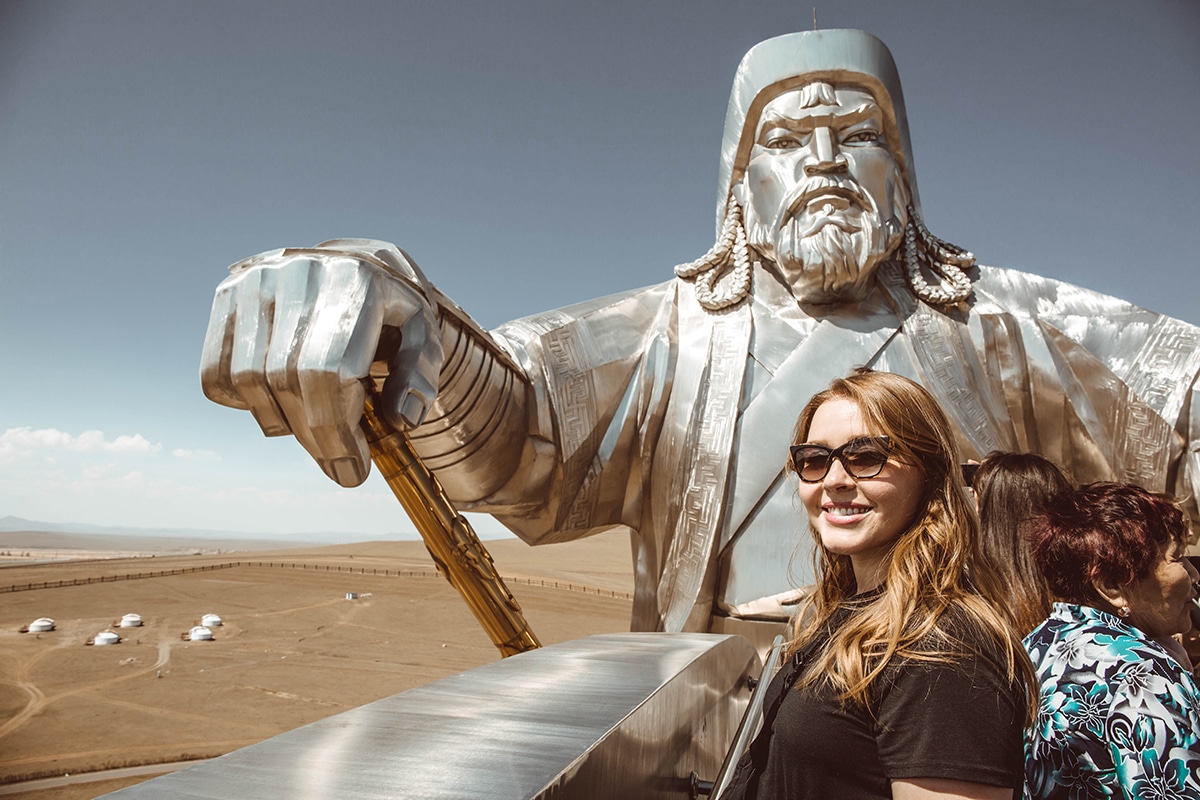
28. Aryapala Temple Meditation Center
Climbing the steps up to the Aryapala Temple Meditation Center is a sort of meditation all in itself. Because of this, the views from the top are the best you’ll find in all of Gorkhi-Terelj National Park. Head here in autumn to see a beautiful display of fall foliage or even in winter, when the park’s rolling hills and mountains are blanketed in a layer of pristine white snow. Don’t forget to look up when you’re at the temple, you never know what the temple be trying to tell you.
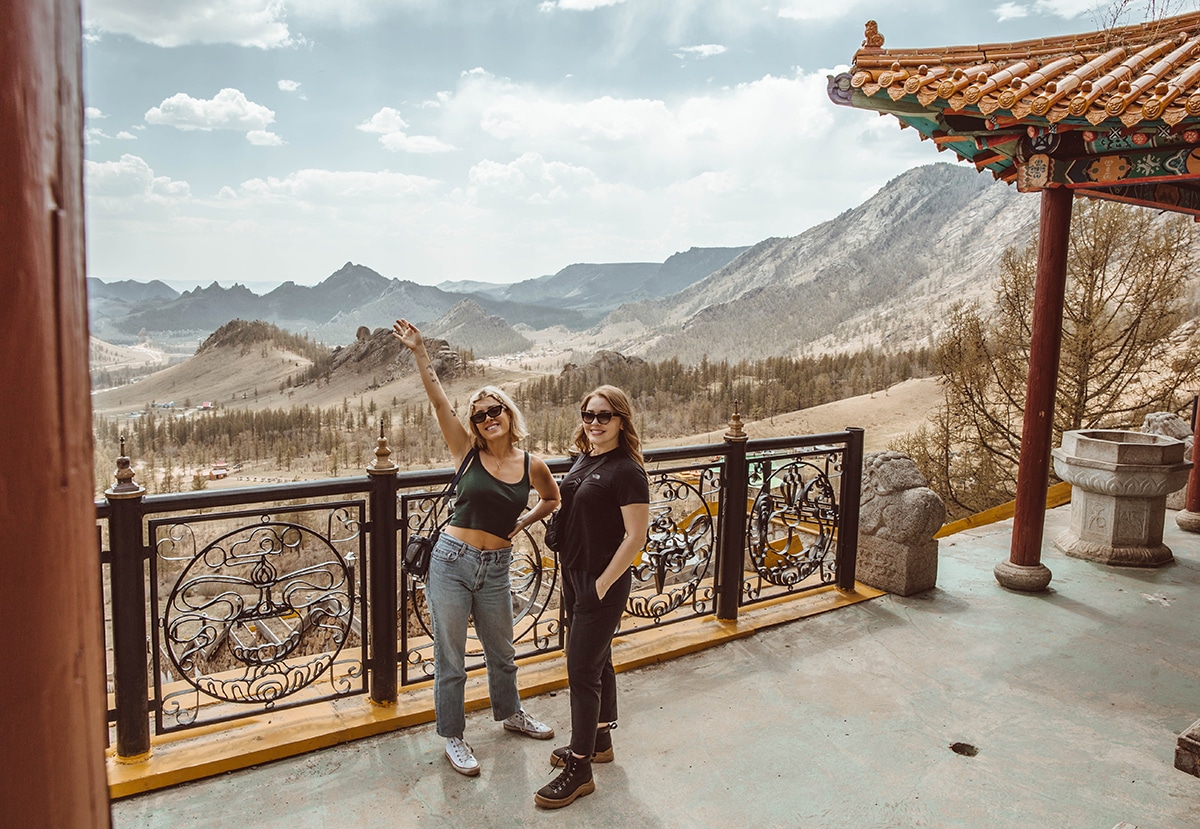
29. Turtle Rock
Legend has it there’s more than just a turtle to see at this rock – there’s buried treasure here, as well. In the summer find rock climbers and tourists alike scaling and crawling their way over and through this Gorkhi-Terelj National Park main attraction . Stop into the nearby store for an ice cream or water, or just a mid-day bathroom stop.
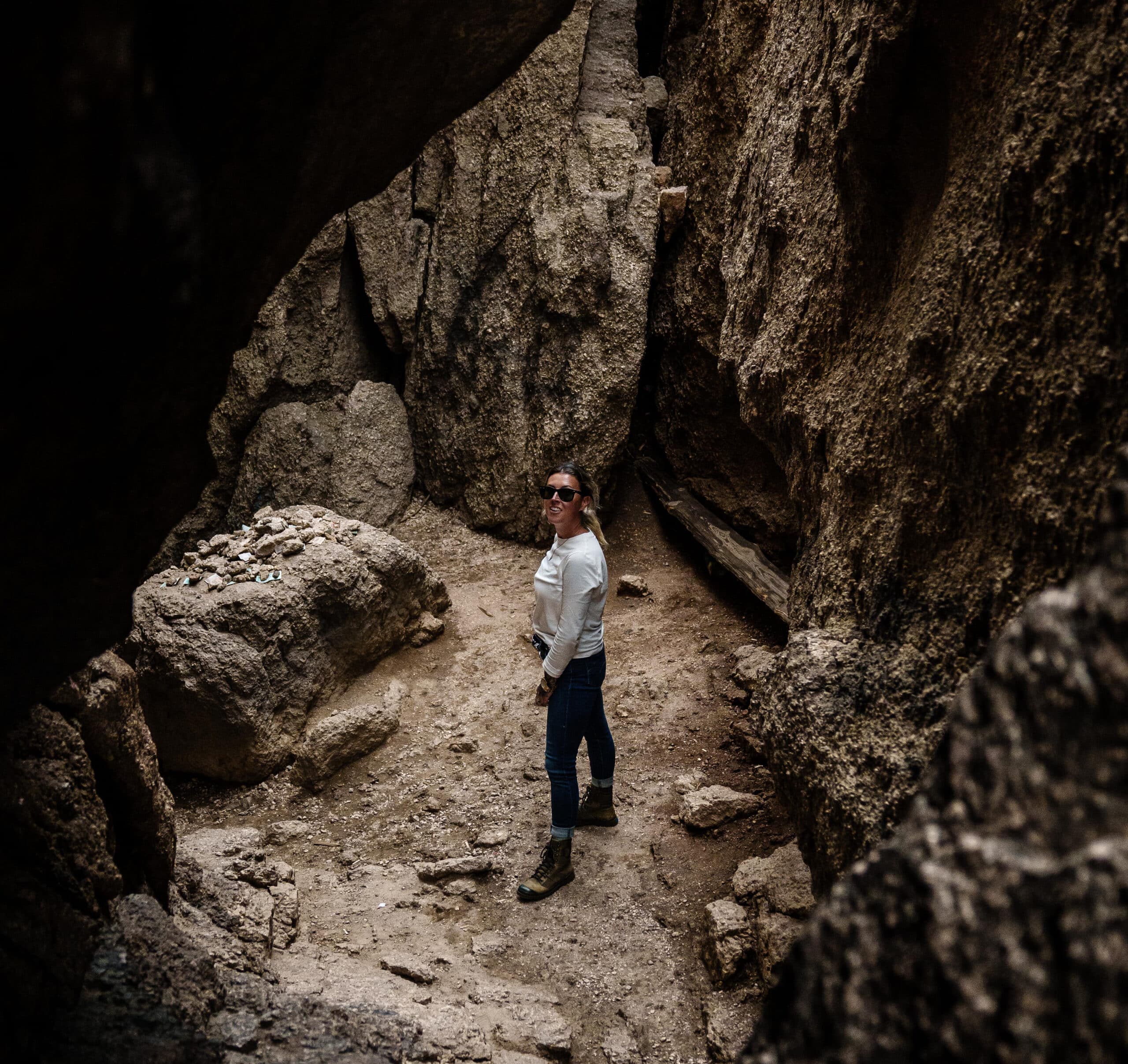
30. Terelj Luxury Hotel
The best hotel for a luxury stay in Gorkhi-Terelj National Park, Terelj Luxury Hotel is not what you’d expect to find in Mongolia. Opulent and grandiose, the hotel is worth the splurge, even if it’s just for one night. Take a swim in the hotel’s indoor pool, book a spa appointment, and eat breakfast next to the river all while channeling your best Wes Anderson vibes.
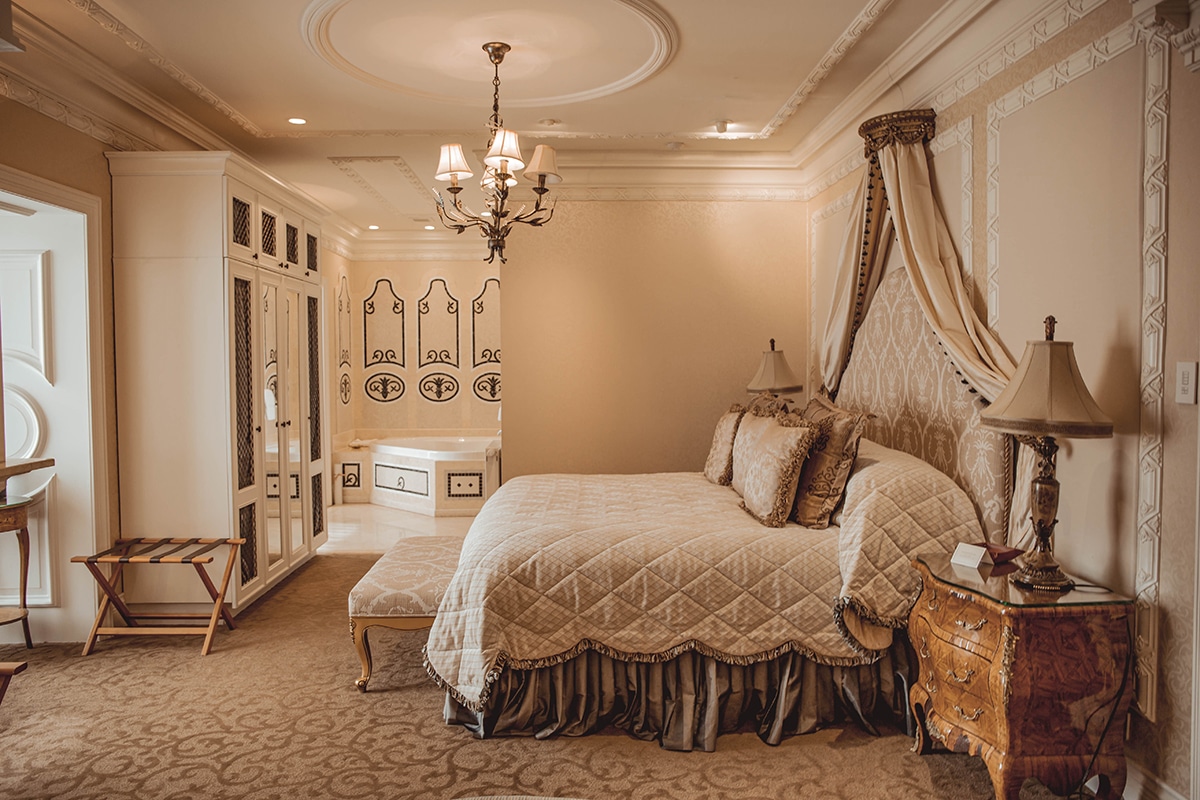
31. Tuul Riverside Lodge
A stay at this small, sustainable yurt hotel is the best way to experience Mongolian living without having to travel deep into the steppe to do it. Book a private yurt and the boat transfer for your arrival into the hotel – this is what makes staying here so fun and unique.
32. 13th Century Complex
This 13th century village complex is an important historical sight for anyone interested in seeing what it was like to live in Mongolia during the days of Genghis Khan. Just like in the 13th century, don’t expect cell phone service, electricity, or running water. Instead, learn archery, how to write old Mongolian script, have a meal suitable for a khan, and simply enjoy the beautiful nature in the area.
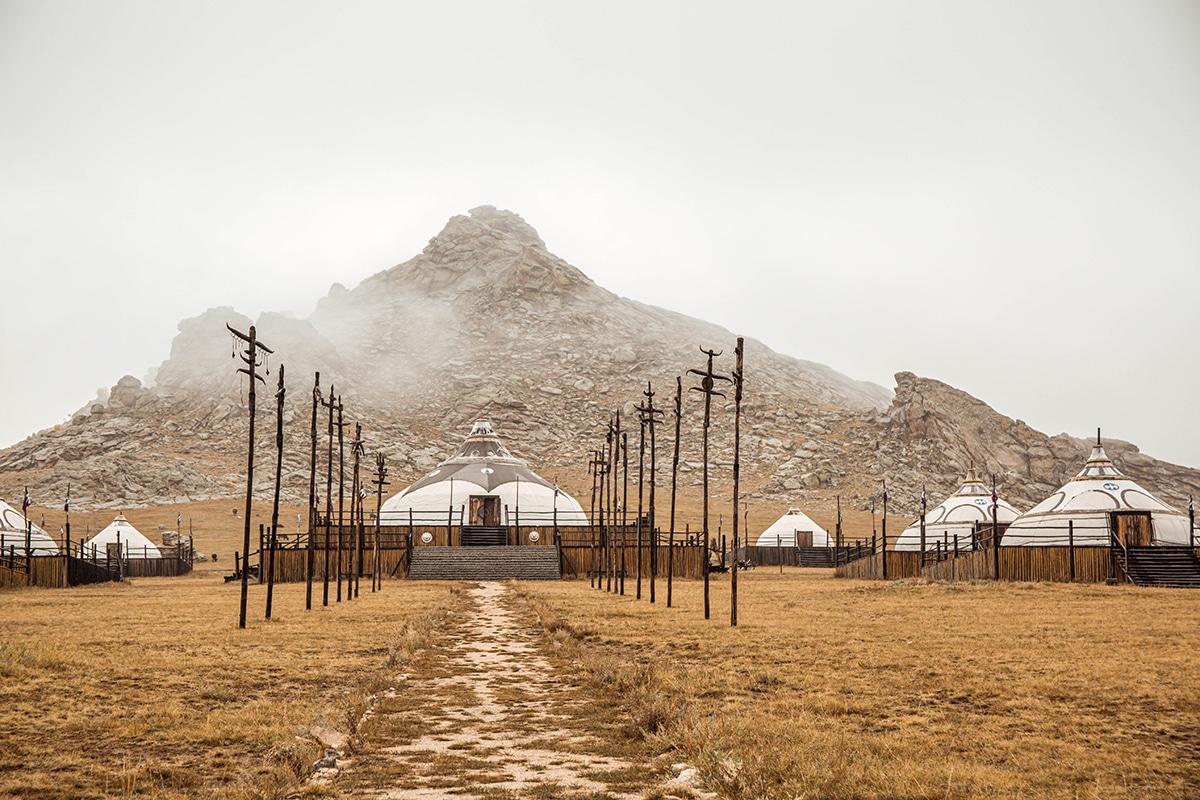
33. Khar Zurkhnii Khukh Lake
From the 13th Century Complex, head northeast for another 149 km until you reach Khar Zurkhnii Khukh Lake. This beautiful lake in Khentti Aimag is surrounded by forest with statues and totems dedicated to Genghis Khan. It’s believed this is where Genghis Khan became the king of the Mongol tribes in 1189.
34. Aglag Monastery
Aglag Monastery is one of the most underrated and unique monasteries in Mongolia . Not your traditional temple complex, Aglag is both weird and wonderful. Start by walking the paths through the incredible stone statues before heading inside the monastery’s main temple. Inside the temple, it’s the beautiful thangka paintings will leave you mesmerized and the animal, half-hybrids with body parts that don’t match, that you’ll remember most after a visit here.
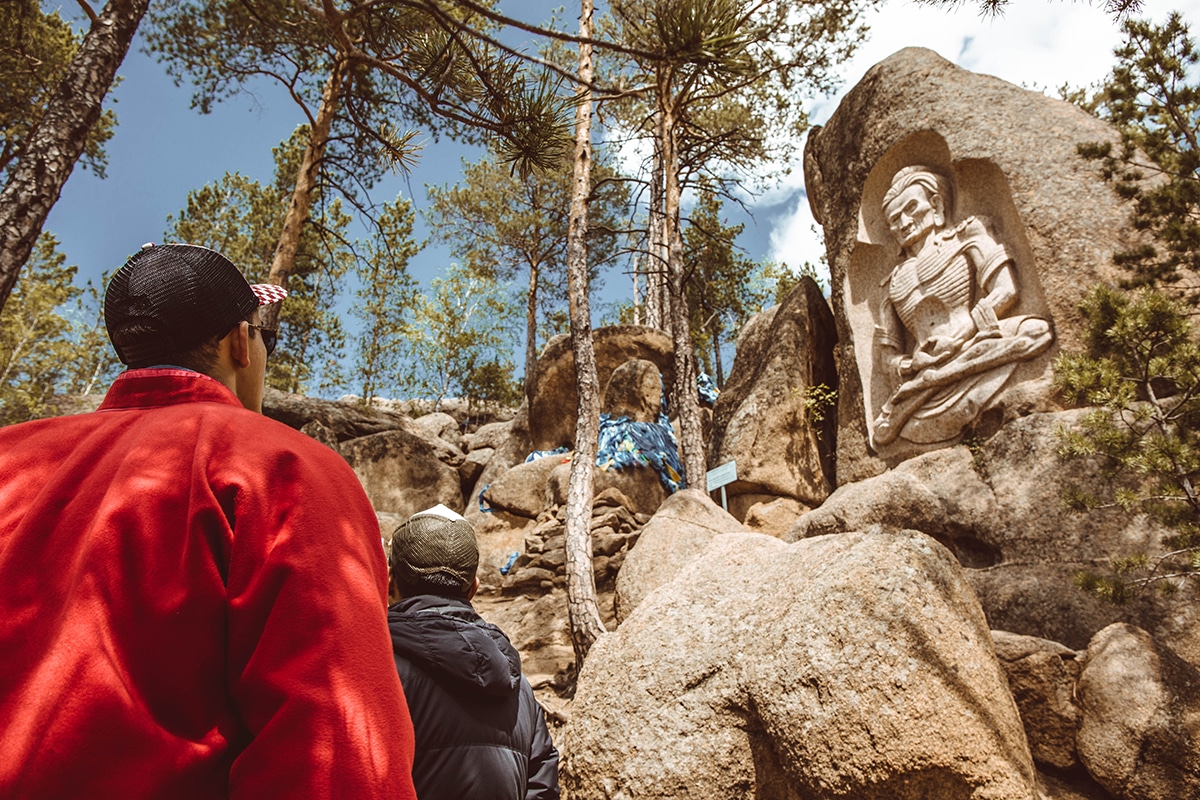
35. Hustai National Park
Hustai National Park is one of the last places in the world where you can find wild Przewalski’s horses, or takhi, as they’re called in Mongolian. Venture out into the park in search of this rare and endangered horse. Mongolia has the largest population of Przewalski’s horses in the world.
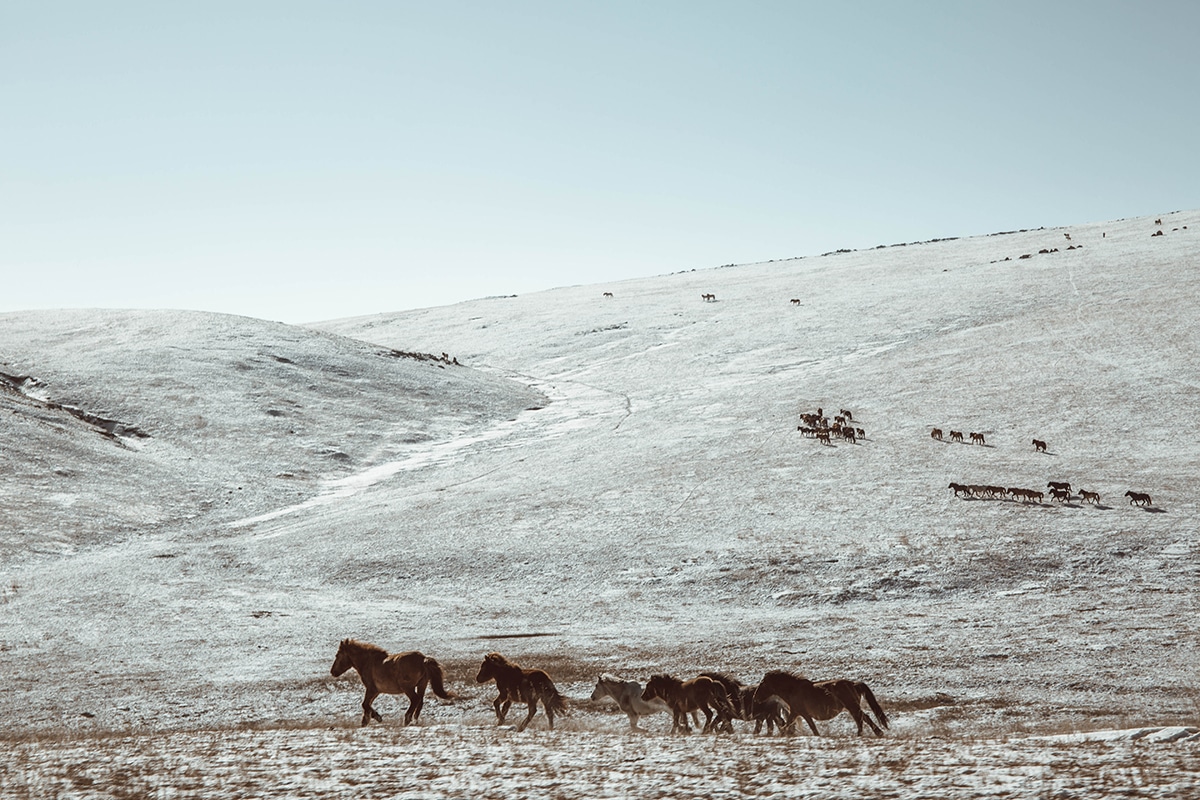
36. Amarbayasgalant Monastery
A UNESCO cultural heritage site, Amarbayasgalant Monastery was built between 1727 and 1736. Located near the Selenge River, it’s one of the three main monasteries in Mongolia. Built in honor of Zanabazar, the first Bogd Gegeen leader of Mongolian Buddhism, a sculptor and painter who lived from 1635 until 1723, it’s here where his mummified body remains.
37. Baga Gazariin Chuluu
Located in Dundgovi Province, 250 km south of Ulaanbaatar, Baga Cazariin Chuluu is one of the best places for hiking in Mongolia . This granite canyon has been molded over time into a place your eyes won’t believe exists, especially in Central Asia. Look for the ruins of a temple dating back to the 17th century while you’re here. Legend has it the water collected on these rocks can cure eye diseases. Look for the ladle where you can wash your eyes with this sacred water and test the legend for yourself.
Eastern Mongolia
The birthplace of Genghis Khan is one of the least discovered places in Mongolia, which is exactly what makes it so interesting to visit.
38. Buir Lake
On the border with Inner Mongolia, China, Buir Lake’s sandy beaches and surrounding wetlands make it one of the best places to visit in Mongolia . Birdwatchers and fishers will agree. The lake is home to 34 species of fish, 37 species of sedentary birds, and 199 species of migratory birds. While the lake also boasts 4 species of pearl oysters, it’s not advised to eat them. They are an essential part of this delicate and balanced ecosystem.
39. Dariganga National Park
Patrolled by three full-time and ten seasonal rangers, Dariganga National Park is one of the only national parks in Mongolia to be managed by a female ranger . Most travelers visit the national park for Ganga Lake. Because of the park’s location, volcanic craters, small lakes, and dunes can all be found here. As an area where aristocrats used to graze their animals, there are still tales of a Sain Er (meaning good man), similar to Robin Hood in the west.
40. Genghis Khan Birthplace Memorial
While there are plenty of mausoleums and memorials dedicated to Genghis Khan, this one in Dadal Soum in Khentii Province is the best. That’s because Temuujin, Genghis Khan’s real name, was born here in 1162. Legend says he was born near Burkhan Khaldun Mountain and in 1962 a large white stone monument was erected here for his 800th birthday.
41. Onon-Balj Basin National Park
Straddled between two of Central Asia’s most important ecosystems – the Siberian conifer forests to the north and the Daurian steppe to the south – Onon-Balj Basin National Park is one of Mongolia’s most important national parks . As the area where a young Genghis Khan was born and raised, you can feel the importance of this area. Outdoor lovers come here to climb the park’s mountains and camp along the banks of the Onon and Balj rivers.
42. Khan Khentii National Park
As a strictly protected area, visitors need special permission to visit this national park in eastern Mongolia. Inside the park, the sacred Burkhan Khaldun mountain is where Mongolians believe Genghis Khan was born and where his burial tomb still lays untouched and undiscovered. The mountain is a UNESCO World Heritage Site and a national monument in Mongolia.
43. Ikh Burhant
Built in 1864, this giant sculpted statue of Janraiseg, a God who sees in every direction and is known as a great protector, is one of the least visited, but also best tourist attractions in Mongolia . The statue, built into the ground, lays horizontally and is surrounded by 12 stupas and 20 smaller statues of Gods. The statue was built to protect Mongols from neighboring Manchuria.

44. Dornod Aimag’s Salt Lakes
In a country where more than 170 salt lakes can be found, the salt lakes in Dornod Aimag are the best to visit – and most impressive. Start by setting your GPS to Toson Khulstai and from there head across the province to Yakhi Lake and down to Dund Shavar Nuur.
45. "Heart" Island, Onon River
A lush, green part of Mongolia, the Onon River is one of the world’s longest rivers . Before it flows from the base of the Khentii Mountains into Russia, water flows around a Heart Island located right in the middle of the river. It’s unclear where exactly this heart island can be found, adding to the alure of this natural wonder.
46. Shiliin Bogd Mountain
This extinct volcano in eastern Mongolia sits 1,778 meters above sea level and has a 2 kilometer-wide, 300 meter deep crater. While the area is home to 220 extinct volcanoes, Shiliin Bogd Mountain is the most impressive and important. The mountain is a pilgrimage site for Mongolian men who believe it will improve their heavenly fortune. They climb the volcano at dawn to see the sunrise and make their offerings and say their prayers to the mountain.
Central Mongolia
Central Mongolia is often considered one of the best places in Mongolia for hiking, camping, and other outdoor activities . The roads aren’t easy to navigate but taking the time to reach these remote tourist attractions is always worth it.
47. Sweet Gobi Geolodge
Located in the Mini Gobi, Sweet Gobi Geolodge is the best place to stay in Central Mongolia. The lodge’s private yurts can sleep from one two three people where travelers will find beds topped with satin sheets and cashmere quilts. The lodge has a dining yurt, compostable bathrooms, and a salon where women can get their hair washed for free. Hot towels and complimentary tea and coffee are delivered to each yurt throughout the day.
48. Elsen Tasarkhai
The best place to visit in Central Mongolia , the Elsen Tasarkhai dunes are the best place for riding camels and getting the full Mongolia experience. Giant dunes are surrounded by steppe, making for one of the most beautiful landscapes you’ll find anywhere. Hire a nomadic herder to lead you on an adventure through the dunes atop a Bactrian camel. This place doesn’t disappoint.
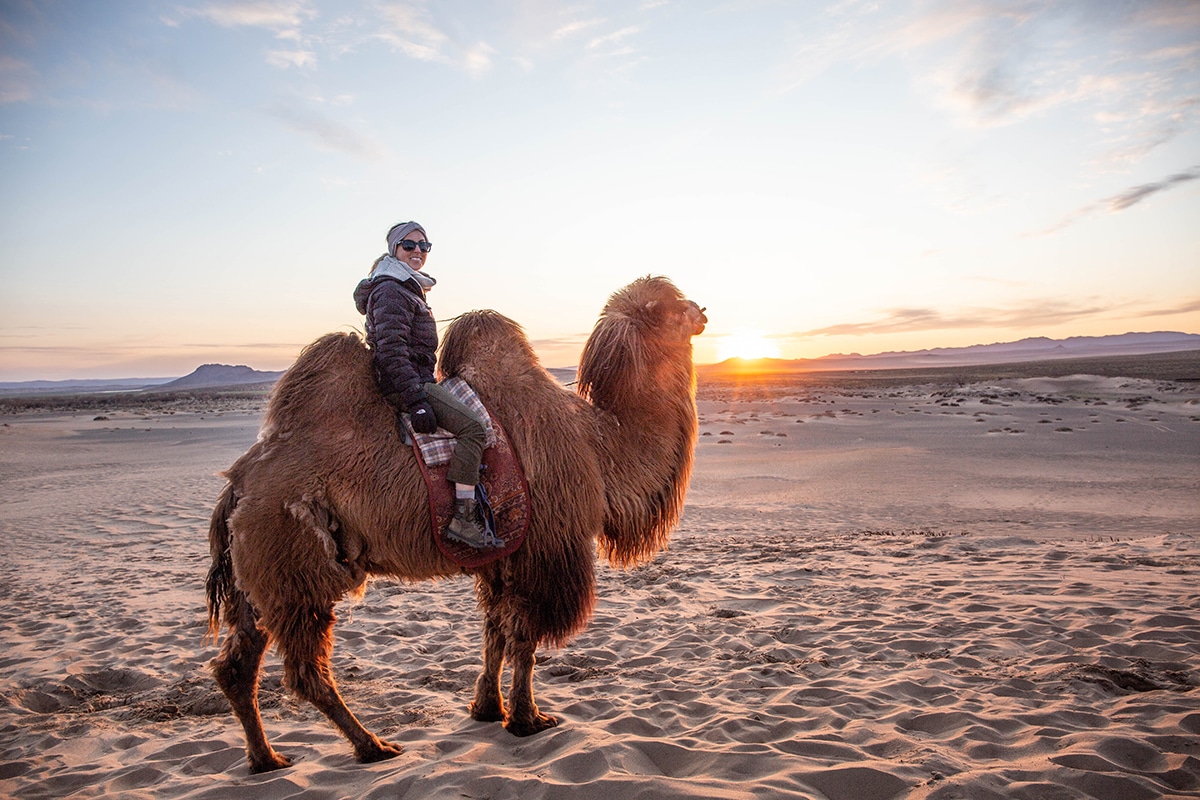
49. Erdene Zuu Monastery
Built atop the old capital city of Kharakhorum, Erdene Zuu Monastery is made from the stones and rubble from this important Silk Road stop. The oldest and most elaborate monastery left in Mongolia, Erdene Zuu dates back to 1586. At its peak, Erdene Zuu Monastery was home to almost 100 temples and 1,000 monks. Only three temples remain standing today, but the monastery still holds an impressive number of statues, tsam masks, and thangkas from throughout the monastery’s history.
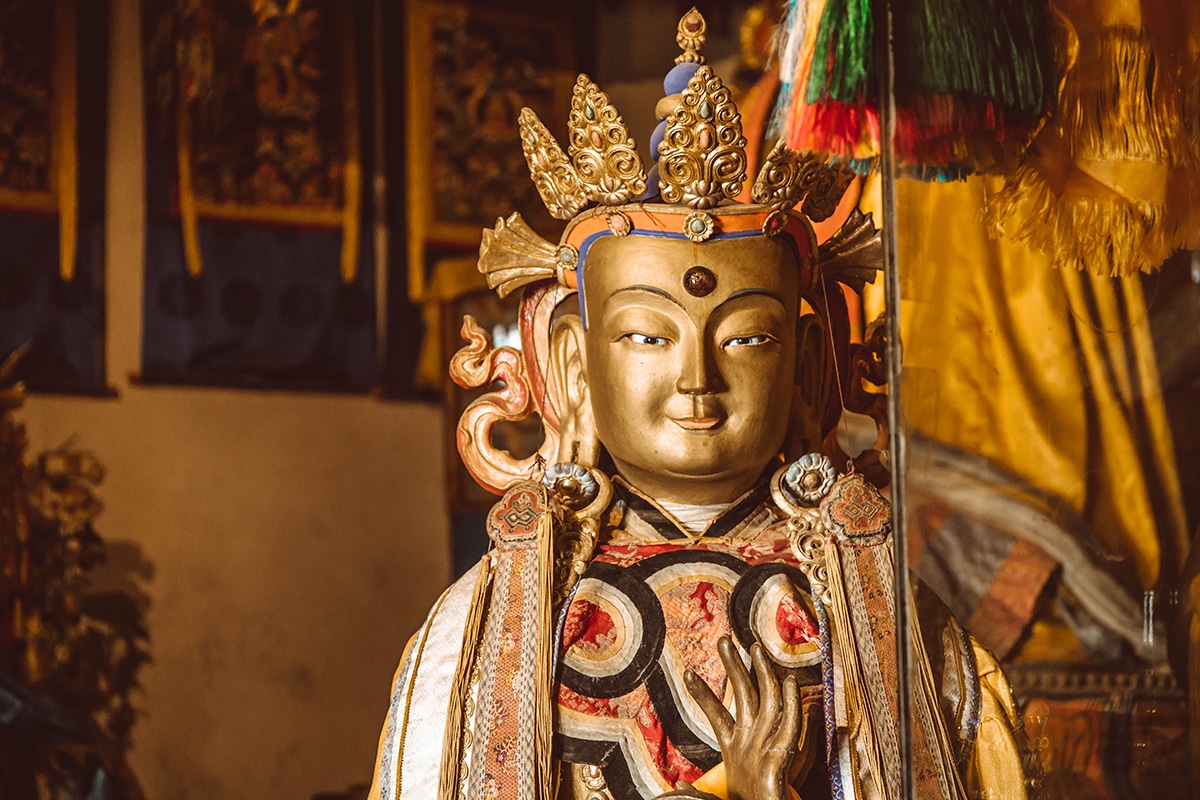
50. Kharakhorum Museum
To see what the former capital city of Kharakhorum was like at its peak, stopping into the Kharakhorum Museum is a must visit place in Mongolia . The museum is great for history buffs, and anyone interested in seeing some of Mongolia’s best artifacts from excavations done around Kharakhorum. Coins, ceramics, a model of the ancient city, old Mongolian passports, sculptures, jewelry, and even a letter from one of the ancient Khan’s to the then Pope make this museum one of the best museums to visit in Mongolia .

51. Erdenesiin Khuree Mongolian Calligraphy Center
Another one of Mongolia’s best places to visit , the Erdenesiin Khuree Mongolian Calligraphy Center is a great way to spend a few hours learning about Mongolia’s ancient script. Under the direction of Tamir Samandbadraa Purev, Mongolia’s best calligraphy artist, visitors can browse through life-size pieces of artwork while learning about the techniques used to create and preserve this style of writing. Children (and adults) can even sit and learn a few letters and simple phrases for themselves.

52. Monument for Mongol States
The Monument for Mongol States is a Soviet-style monument with great views overlooking Kharakhorum. While the view of Kharakhorum in front of the monument is what most people come here to find, it’s the view at the back of the monument that will blow you away. The Orkhon River flows through this beautiful valley where you’ll find semi-wild horses and incredible sunsets. Pack a picnic and eat lunch down by the river after taking in everything the monumnet has to offer.
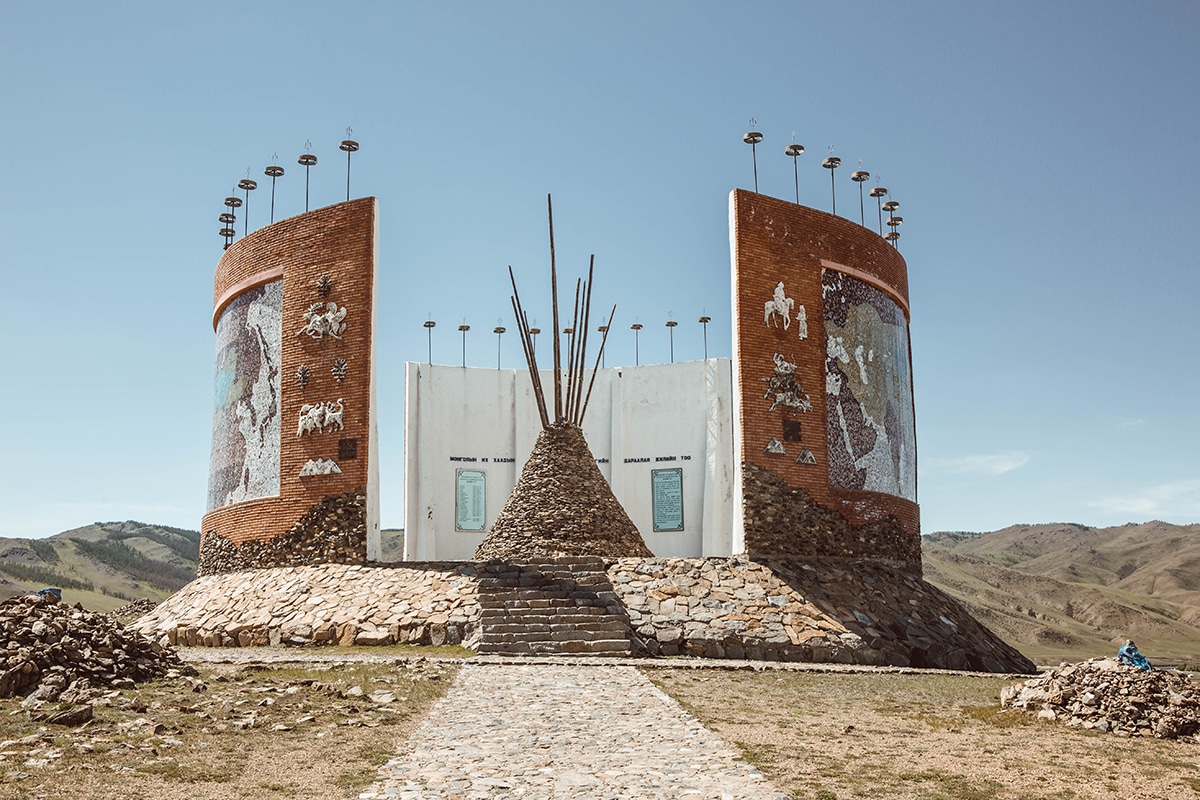
53. Ursa Major Geolodge
With the UNESCO World Heritage Orkhon Valley sprawled out in front of you, there’s no such thing as a bad view at the Ursa Major Geolodge . Especially after the sun sets. Take in some of the best views of the Milky Way and Mongolia’s dark skies you’ll find anywhere in the world. While the lodge has the best telescope in the country, a MEADE LX 200 ACF, visitors will also learn how nomadic people use the stars to navigate through the vast steppes and deserts, determine the time and date, and predict weather.
54. Tövhön Monastery
As one of Mongolia’s oldest monasteries, Tövhön Hiid (Monastery) was built in 1653 for Öndör Gegeen Zanabazar, the first spiritual leader of Mongolian Buddhism. That’s not the only reason this place is one of Mongolia’s best tourist attractions, the views from the monastery are something special to see. Perched on a cliffside, you’ll have to hike 5 km up the mountain to see where two of the original temples and two stupas from the 17th century still stand.
55. Khar Balgas Ordu Baliq
Another must visit place in Mongolia and the Orkhon Valley, the Khar Balgas “Black City” of Ordu Baliq dates back to 744. At the time, the city was the capital of Uyghur Khaganate, a Turkic empire that existed for about a century between the 8th and 9th centuries. It was a destination of major importance to the Silk Road and parts of the city were solely devoted to crafts and trades.
56. Ugii Lake
A great place for birdwatchers and bird lovers, Ugii Lake is most known for the 150 species of birds found here. This includes several endangered species and rare migratory birds, including the Dalmatian Pelican, Swan Goose, Baikal Teal, Palla’s Fish Eagle, Lesser Kestrel, Siberian Crane, Great Bustard, and Relict Gull. While several yurt camps surround the lake, finding a spot to camp is the best way to spend the night at Ugii Lake.
57. Duut Resort Mongolia
Mongolia’s hot springs are one of its best kept secrets . A place that’s great for weary travelers, families, or just a weekend of rest and relaxation, Duut Resort is our favorite place to stay at the Tsenkher hot springs. Mongolia’s hot springs are rich in minerals and an enjoyable 86-degrees. Slipping into one of the resort’s hot spring baths is known to relieve fatigue, treat joint, and skin disease.
58. Fairfield Guesthouse and Café
The best place to stay in Tsetserleg , Fairfield Guesthouse has it all – comfortable rooms, a great café, and warm and hospitable hosts. Staying here means you can have a hot shower in the shared bathrooms, the best pizza and burgers in Arkhangai, and plenty of tourist attractions are just outside the door. Walk to the Arkhangai Aimag Museum for an interesting look into the history of the area or go out on a horse riding adventure with one of the local herders as your guide.
59. Arkhangai Aimag Museum
One of the most underrated museums in Mongolia , the Arkhangai Aimag Museum is a beautiful museum worth making any Central Mongolia itinerary. Housed in the former Zayain Gegeenii Süm monastery, a temple complex dating back to 1586, the museum would make the 1,000 monks who once lived here proud. Traditional Mongolian deels, paintings, and a room dedicated to Mongolian games keep traveler’s coming here.
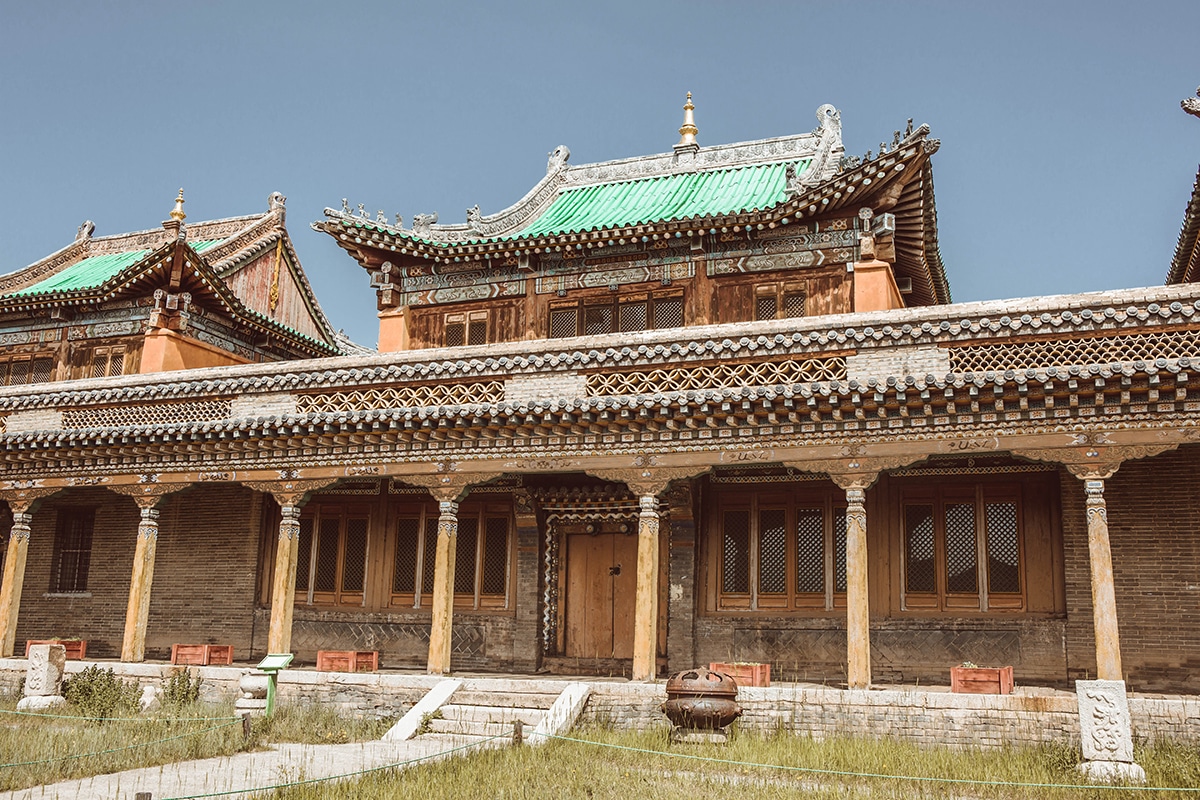
60. Buyandelgeruulekh Monastery
This mountainside monastery is a hidden gem in Central Mongolia . Walk to the top of the steps, pay your respects inside the temple, and then keep walking to the giant boulders behind the temple. Climb the rocks, find the secret oovo (small rock shrine) and ground yourself as you take in the best views of Tsetserleg .
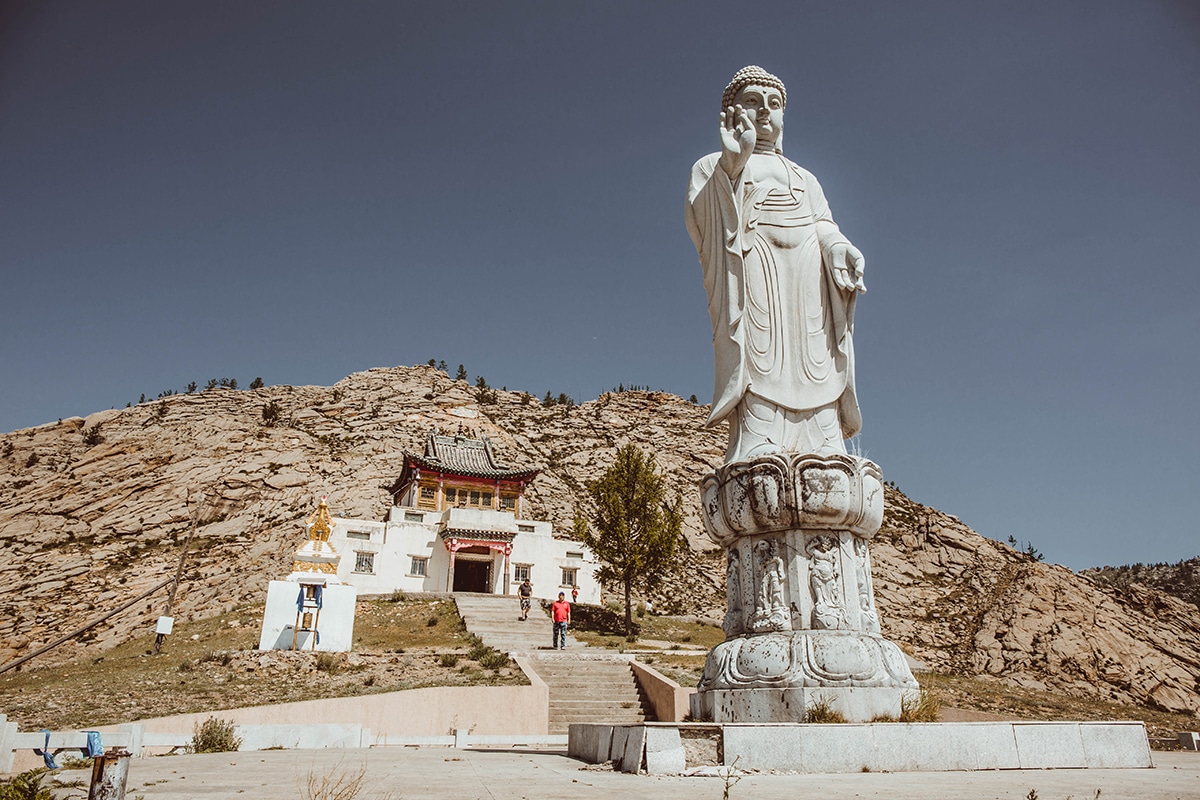
61. Taikhar Rock
This 20-metre tall granite rock is so much more than a rock. There are 150 writings in different languages covering the rock, the oldest being runic writing from the Turkish period of the 6th and 7th centuries. Legends surround the strange placement of the rock, saying a giant warrior named Bukhbilegt once threw it at a snake that was coming out from the ground.
62. Uurtiin Tokhoi Cliff
Once named Khuurtiin Tokhoi, or “the cliff of corpses,” today Uurtiin Tokhoi Cliff is a popular photo stop for tourists and locals. Driving to the Orkhon Valley Waterfall, the cliff can’t be missed, it’s a popular area for taking pictures and taking a break from the inevitably long car ride it takes to get here. From the cliff, it’s another two hours off-roading to the Orkhon Valley Waterfall, which is the water that flows here.
63. Orkhon Valley Waterfall
The Orkhon Valley Waterfall is a popular tourist spot in the summer for both Mongolians and visitors. The trip to get there involves several hours of off-roading and should only be done in a 4×4 vehicle. Once you’re at the waterfall, find the hidden hiking path that will take you down to get a better view from below. Visit in September for the best weather and to see the best fall foliage in all of Mongolia .
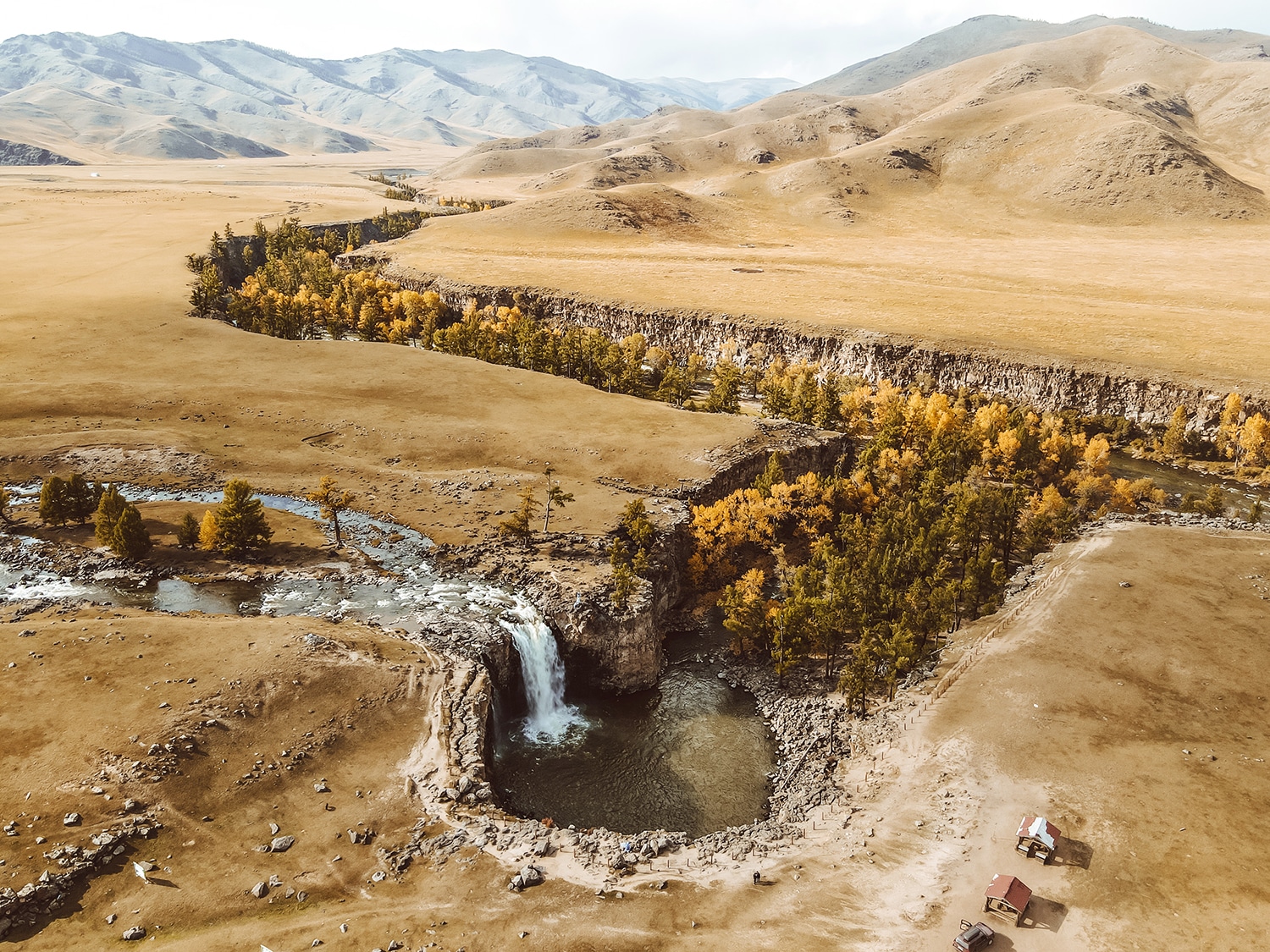
64. Khan Khujirt Med Wellness Resort
One of Mongolia’s best wellness resorts, Khan Khujirt Med Wellness Resort is a must visit when you’re traveling through central Mongolia. Book packages that are 7, 10, 14, or 21 days, or just stay for a night, and take advantage of all the spa treatments the resort has to offer. Go from the massage table to a mud bath and revitalize your mind and body in the healing waters and natural elements this part of Mongolia is known for.
65. Khuisiin Naiman Lake
The name Khuisiin Naiman Lake translates to the Eight Lake thanks to the eight lakes that make it up. These separate lakes – Shireet, Khaliut, Bugat, Khaya, Khuis, Mukhar, Duruu, and Bayan-Uul – are all connected via underwater canals. Several extinct volcanoes can also be found around the lake, which can only be reached by horseback. Cars are unable to make the difficult journey back here.
66. Terkhiin Tsagaan Lake
One of the most beautiful lakes to visit in Mongolia , Terkhiin Tsagaan Lake is 16 kilometers long and 10 kilometers wide. Because of the lake’s size, it’s easy to find great camping spots around the lake’s shores. The lake is part of Khorgo Terkhiin Tsagaan National Park and driving to the lake is like being transported to Iceland thanks to the volcanic rock and lava fields that make up this unique area. This is one of the most interesting roads to drive in Mongolia .
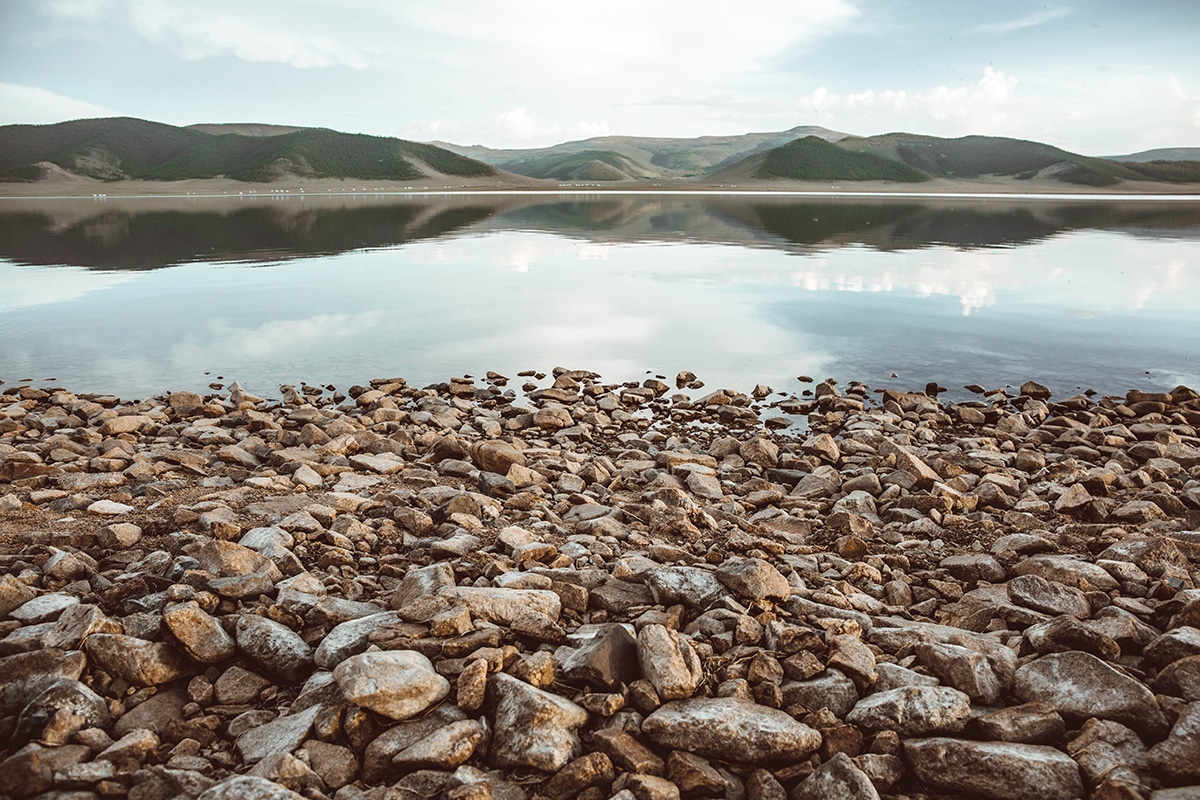
67. Khorgo Mountain
The Khorgo Mountain volcano crater is one of the most unique natural wonders you’ll find anywhere in Mongolia. That also makes it one of the best places to visit on a trip to Mongolia . A popular spot for hiking and picnicking, the mountain is close to Terkhiin Tsagaan Lake, so you’ll be able to experience both places together. The hike up the side of the mountain so you can peer down into the crater takes about 30 minutes and is clearly marked with signs and stairs.
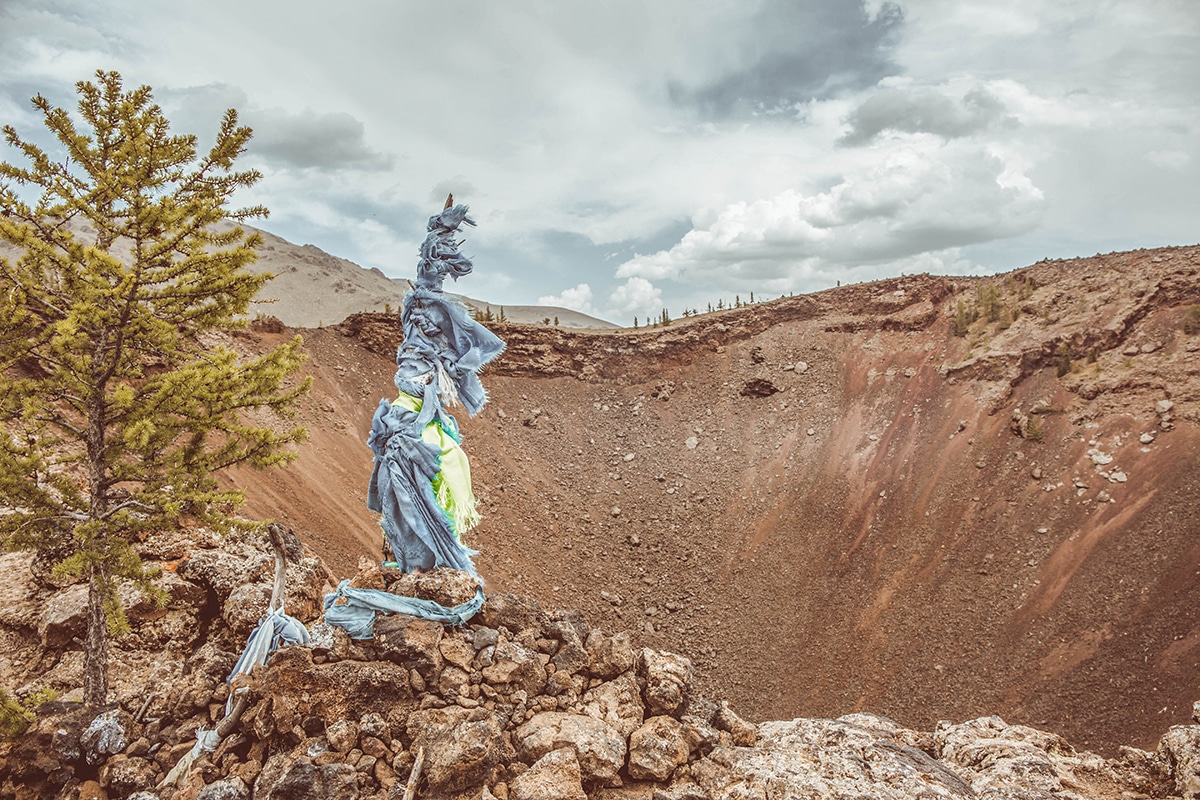
68. Yellow Dog’s Hell Cave
Between the Khorgo Mountain volcano and Terkhiin Tsagaan Lake, most travelers miss the small roadside sign that says, “Yellow Dog Cave.” Stopping here gives travelers the chance to see something most other people miss, an underground cave and waterfall.
Southern Mongolia and Gobi Desert
Often the most popular place for tourists to travel in Mongolia , southern Mongolia has it all. Singing sand dunes, friendly camel herders, and natural wonders that will leave you breathless.
69. Ikh Gazariin Chuluu
The largest granite rock formation in Mongolia, this natural wonder is one of the best things to see in Mongolia . More than 40 caves can be found in the formation. Look for the cave locals call Olgii, mysterious books and sculptures were once housed inside. Crystal hunters will also appreciate this area – pure crystal, cloudy crystal, jade, chalcedony, fluorite, and bezoar can be found here.
70. Ongi Monastery Complex
Two of Mongolia’s oldest and most historical monasteries , Barlim Monastery and Khutagt Monastery, split the Ongi River to make up the Ongi Monastery complex. Both built in 1660, the 30 temples and 4 study centers were destroyed in 1939 and more than 200 monks were killed by the Communist Party of Mongolia. Today, one of the temples has been rebuilt and a small yurt museum stands proudly in front of it.
71. Gimpil Darjaalan Khiid
If you haven’t noticed by now, Mongolia is the land of monasteries . Buddhism was brought to Mongolia in 1271 by the Yuan Dynasty at a time when Mongolians believed in Shamanism. Though they converted to Buddhism, they briefly reverted back to Shaminism until Buddhism became the official religion of Mongolians in the 16th century. Gimpil Darjaalan Khiid (khiid meaning monastery) was one of the few monasteries to survive communist times and the current Dalai Lama even visited it in 1992.
72. White Stupa
If nature is your religion, Mongolia’s White Stupa, or Tsagaan Suvarga will be your shrine. This 400 meter long limestone formation used to be underwater. That means you’ll find marine fossils, clamshells, and more at this popular tourist destination. Head here at sunrise (no later than 6:30 am in the summer) for the best colors and light, photographers especially love this Mongolian natural wonder.
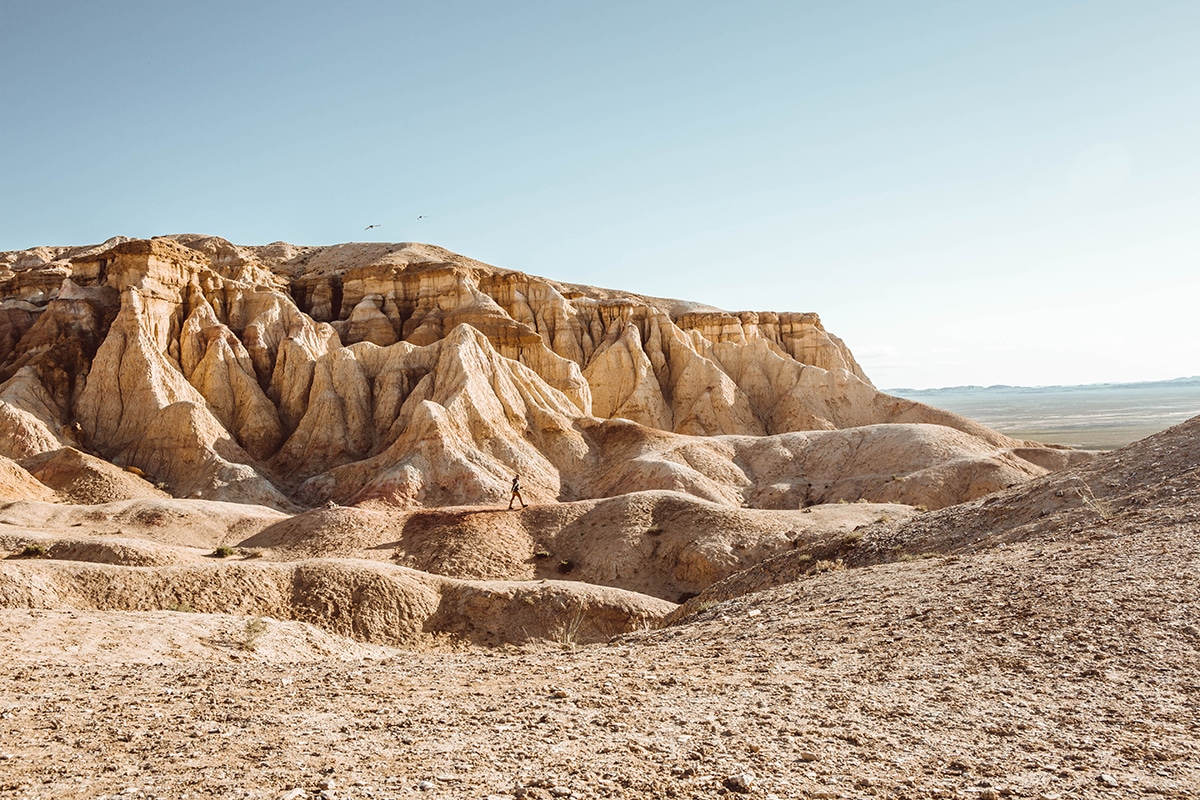
73. Gobi Caravanserai
When visiting Tsagaan Suvarga , be sure to book a night at Gobi Caravanserai , one of the best hotels in Mongolia. The hotel looks like something out of Star Wars, which is exactly why people love staying here. This minimalist eco-lodge is less than 10 minutes by car from the White Stupa and staying here means a hot shower (bathrooms are shared, not private), complimentary breakfast, and a night’s sleep without worrying about Mongolia’s often-times unpredictable elements.
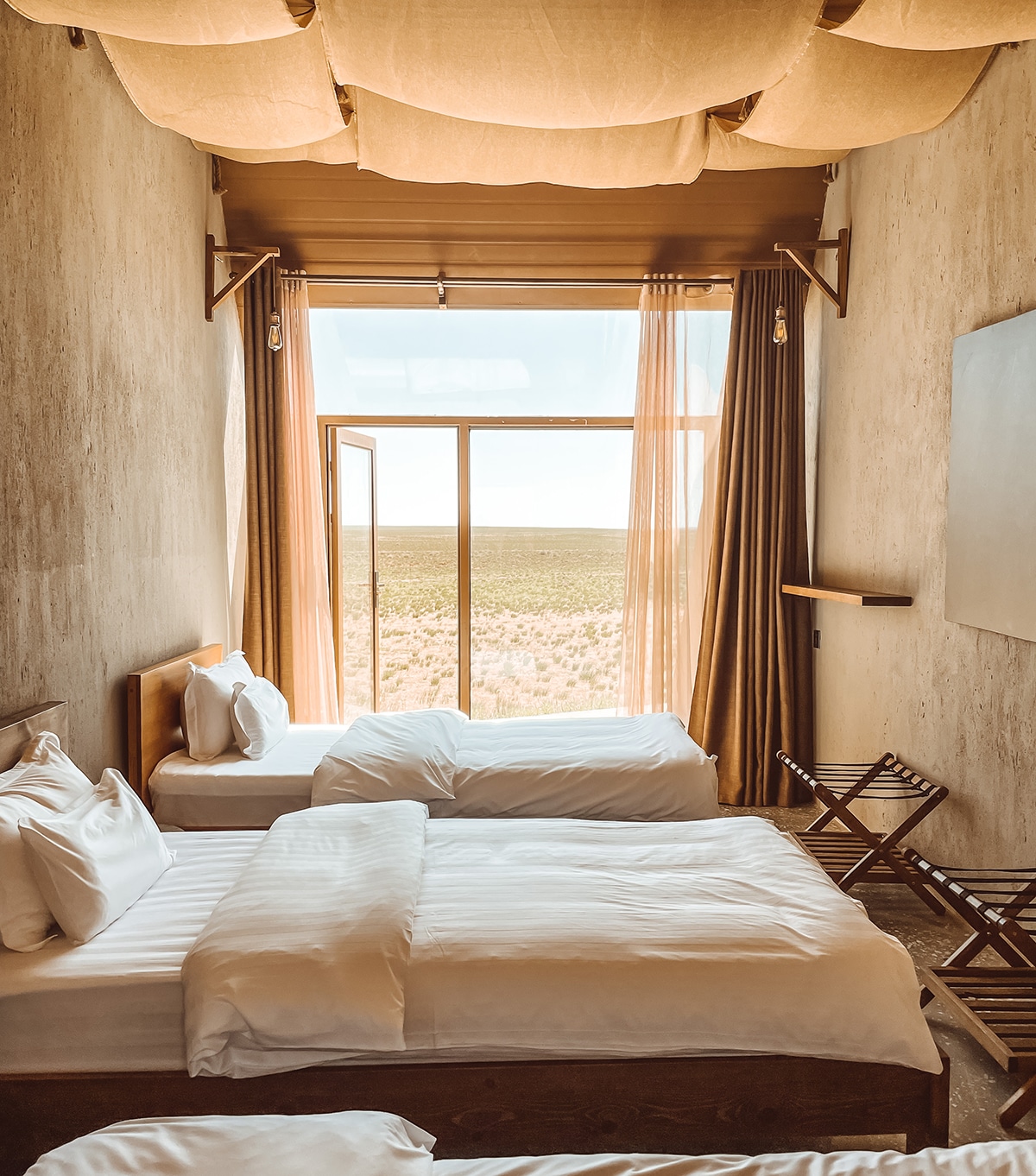
74. Overnight Train from Ulaanbaatar to Sainshand
The overnight train from Ulaanbaatar to Sainshand is one of the most unique things you can do in Mongolia. As part of the Trans-Mongolian Railway, Sainshand is the train’s last stop going south. The train is a must-have experience because of the Soviet-vibes and the way it seemingly transports you to another time, and planet. Once you arrive in Sainshand, the surrounding desert is quiet, peaceful, and otherworldly. Use your time in Sainshand to disconnect from technology and connect with the earth, it has a lot of things to say here.
Contact us for help booking your train tickets in Ulaanbaatar .
75. Khan Bayanzurkh Mountain
Known as Wishing Black Mountain, and one of the most sacred mountains in Mongolia, Khan Bayanzurkh Mountain is one of the top sites to experience in southern Mongolia . Locals say if you climb to the top of the mountain and whisper it a wish, the mountain will grant it. Unfortunately, women are not allowed to climb to the top of the mountain, where there’s a sacred cairn, or ovoo, as it’s called in Mongolian. Women, children, and elders who can’t climb to the top will find a small temple 100 meters from the bottom of the mountain where they can sit, pray, and make wishes of their own.
76. Yolyn Am Valley
One of the most unique landscapes in Mongolia , driving through Yolyn Am Valley is like transporting yourself to Jurassic Park. The deep gorge was shaped by glaciers and ice fields millions of years ago and you’ll even find the remnants of such things when you visit. Hiking through the valley can be done without a guide, or you can hire one of the local herders sitting at the trailhead and cross the valley on horseback for a more adventurous experience.
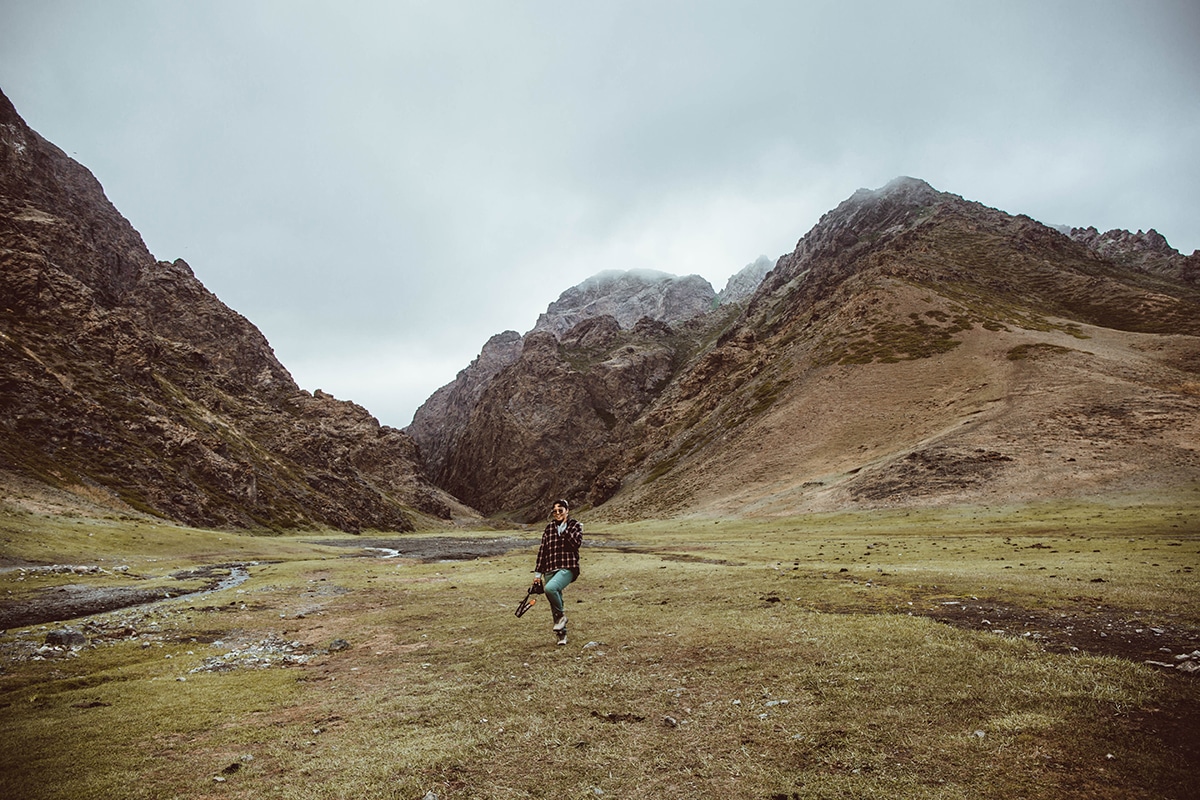
77. Yolyn Am Ice Field
A hike through Yolyn Am Valley is one of the coolest ways to spend a day in southern Mongolia . Not only are the views beautiful, but because the valley leads to the Yolyn Am Ice Field, this is an absolute can’t miss experience. Thanks to the high gorge ice remains here year-round, which is a surprising break from the sweltering temperatures typically associated with southern Mongolia. Spend the day in the gorge before booking a yurt at one of the nearby yurt camps for the best experience.
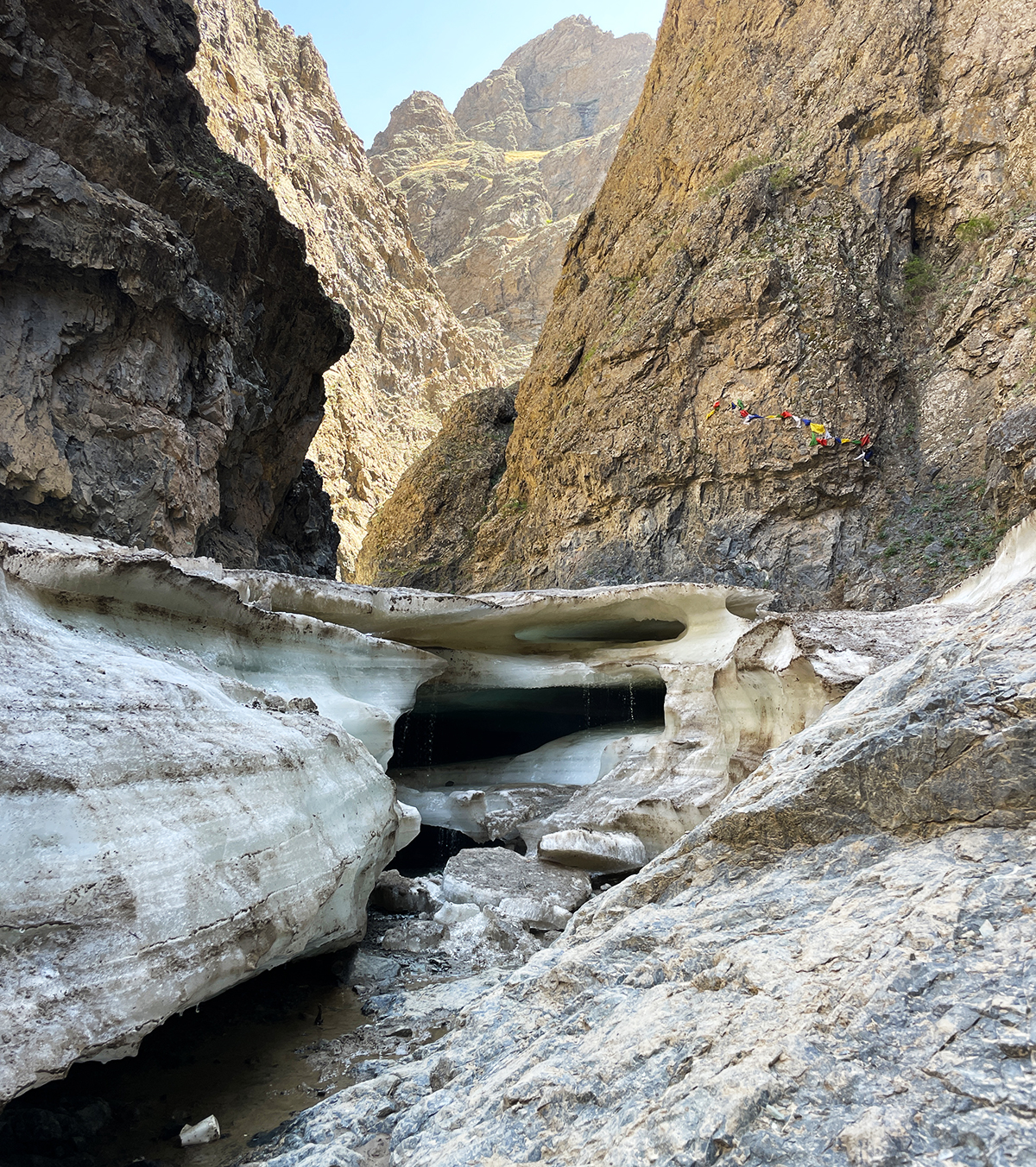
78. Flaming Cliffs
If there’s one tourist attraction that shouldn’t be missed in Mongolia, it’s the Flaming Cliffs, or Bayanzag. Known as the Grand Canyon of Mongolia, these cliffs are famous for both their color and because dinosaur eggs were discovered here almost exactly 100 years ago. If you look carefully enough, you can still find 70 million year old dinosaur eggshells and unexcavated dinosaur skeleton fossils scattered around the cliffs. Camping is allowed next to the Flaming Cliffs for a small fee and witnessing sunrise here is a bucket list worthy travel experience .
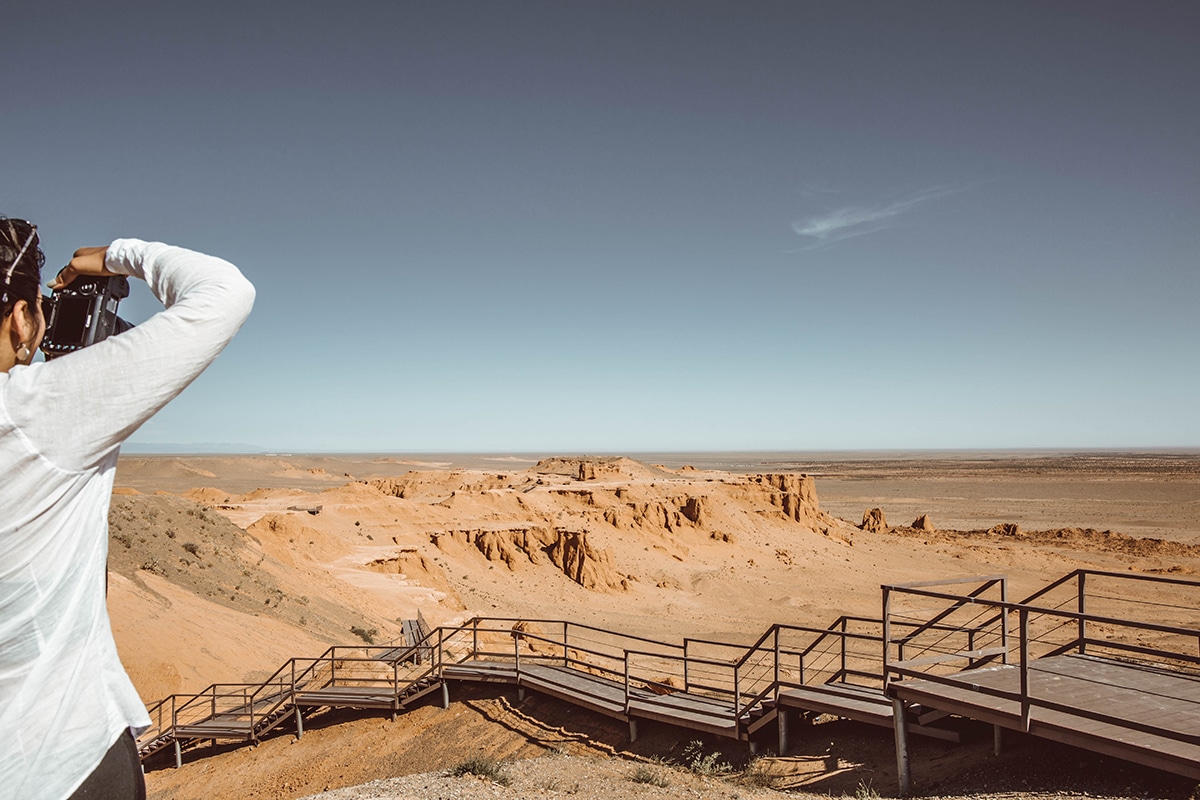
79. Three Camel Lodge
Often called the best luxury hotel in Mongolia , the now 20-year-old Three Camel Lodge is Mongolia’s very first eco-lodge. The lodge is close to the Flaming Cliffs (about an hour’s drive by car) and sits on the side of small mountain. The private luxury yurts have private bathrooms with rainfall showers, a very nice touch for any hotel in Mongolia, and all meals are included in a stay. The food here is some of the best you’ll find at any restaurant in Mongolia and the chef only uses locally grown fruits and vegetables as well as locally sourced meat. At the end of the day, a whiskey at the Thirsty Camel Bar will have you checking ‘have a drink at the most remote whiskey bar in the world’ off your bucket list.
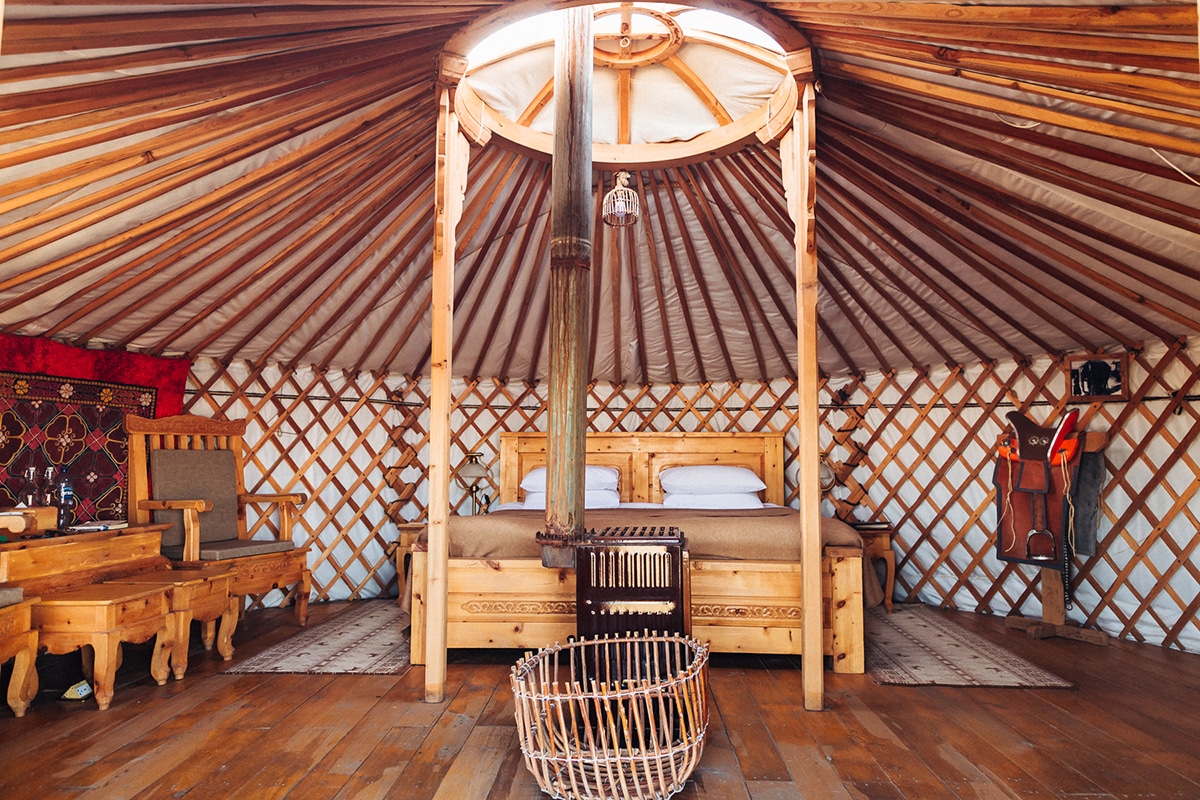
80. Bulgan Soum Tomato Harvest
Bulgan soum might not seem like much at first glance, but come fall, this is tomato central. The soum is known for both their greenhouses and green thumbs, and tomatoes from here are famous across Mongolia. Visit Bulgan Soum in September and help with the harvest so you can see and learn about Mongolia’s new agricultural and sustainability efforts firsthand.
81. Khongoryn Els
The most famous tourist attraction in Mongolia’s Gobi Desert , the ‘singing sands’ are worth the journey to get there. The singing sands get their name from the sounds the dunes make when the winds blow and it’s one of the only deserts in the world where snow accumulates on the dunes in winter. Climbing to the top of these dunes is no easy feat, which can take 45 minutes to an hour. Camel herders can be found around the dunes, but don’t expect to find wild camels in the dunes when summer temperatures reach 40 degrees or higher.
82. Gobi Gurvan Saikhan National Park
As the largest national park in Mongolia at 27,000 sq km, Gobi Gurvan Saikhan National Park is a must see and explore when you’re in this part of the country. The park is home to Khongoryn Els, but also mountains, rare and endangered animals, and dinosaur fossils. Block off a few days to roam and explore everything the park has to offer without being in a rush. You won’t regret it.
83. Khermen Tsav
Khermen Tsav is famous because it’s where the first dinosaur skeleton was discovered in Mongolia . But even before dinosaurs inhabited this part of Mongolia, scientists believe this area was underwater more than 200 million years ago. Here, red canyons meet giant dunes making for one of the best landscapes you’ll find anywhere. Don’t be surprised if you don’t run into any other travelers when you travel here, not many tourists know this place exists.
Northern Mongolia
Northern Mongolia is known for sprawling green landscapes, the harsh taiga, and its most famous tourist attraction – Khuvsgul Lake.
84. Khuvsgul Lake National Park
Recently added to the World Network of Biosphere Reserves by UNESCO, Khuvsgul Lake and the surrounding National Park are one of the most important protected areas in Mongolia .
Khuvsgul Lake is the world’s second largest freshwater lake and is considered a ‘sister lake’ to Lake Baikal in the north. The lake freezes over completely in wintertime and the annual Ice Festival is one of the best festivals in Mongolia . In summertime, the lake is a popular place for locals who come for kayaking, fishing (with a fishing permit), horseback riding, and hiking. Fishing permits can be purchased from park rangers or at local guesthouses.
85. Khuvsgul Lake Shipwrecks
One of the last places in the world where you’d expect to find sunken military ships is Mongolia. But in Khuvsgul Lake, a few remain. Rent a glass-bottomed kayak and go out in search of the few that remain close to shore – seeing them from above is a surreal experience.
86. Dinosaur Bay, Khuvsgul Lake
Khuvsgul Lake is the only place in Mongolia where you can go scuba diving and Great Sea Resort is the first PADI certified dive center in the country. The best time to go diving in Khuvsgul Lake is August, when the water is at its warmest. Otherwise, expect to wear thick wetsuits, gloves, and hoods when diving here. Popular dive sites include Dinosaur Bay, where dinosaur statues greet you under the surface.
87. Mongolian Taiga
As the home of the Tsaatan Tribe, Mongolia’s famous reindeer riding tribe, the Mongolian Taiga is one of the best places to visit in Mongolia . Getting there takes some patience, and a few different modes of transportation, including by horseback. Once you’re there, expect to find yourself in one of the last truly wild places in the world. Life here revolves around the herds of reindeer and surviving in this vast forest on the Siberian border can be tough. Spend a few days learning from the Dukha people who live here, ride reindeer, live in a teepee, eat reindeer cheese, and sip on reindeer milk tea. These are some of the most things you can do in Mongolia.
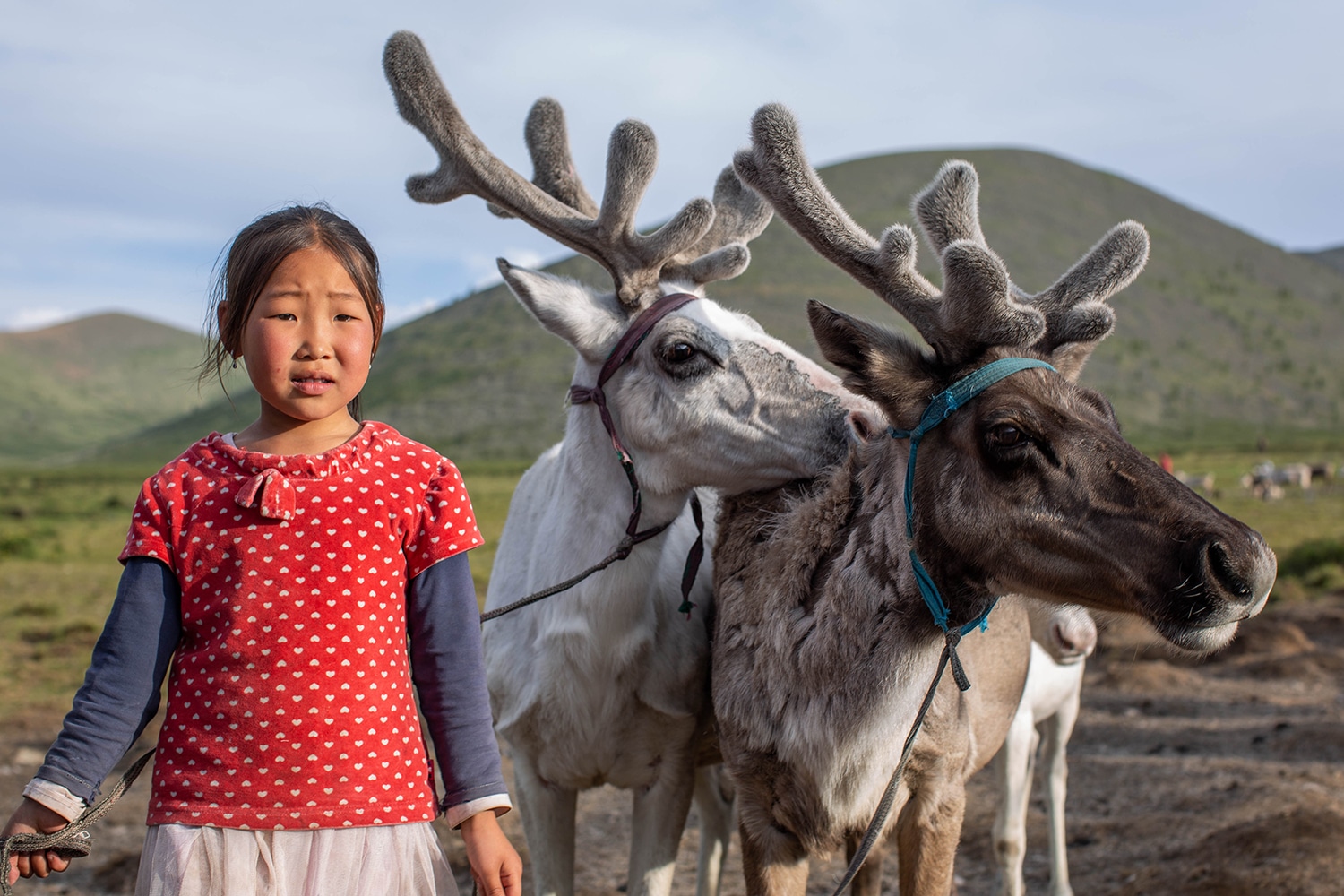
88. Mongolia’s Taimen Sanctuaries
In Mongolia, taimen are the king of fish. These Siberian giant trout, or Siberian salmon as they’re often called, are the world’s largest trout like salmonid . Though they’re found in Russia and China, Mongolia is the best place in the world for taimen fishing thanks to protected sanctuaries and strict fishing policies. There are only four rivers in Mongolia where international anglers may legally fish, including the Delger River, and special permits are issued only by two fishing outfitters, Fish Mongolia or Mongolia River Outfitters.
89. Khoridol Saridag Mountains
Snowcapped mountains and the famed Khoridol Pass, one of the most dangerous roads to travel in Mongolia , the Khoridol Saridag Mountains are a can’t miss place in Mongolia for adventure lovers and thrill-seekers . The 150 km long range is home to Delgerkhaan Uul, the range’s highest peak at 3,093 meters, as well as the 2,961 meter Ikh Uul peak and equally impressive 2,702 meter Uran Dösh Uul.
A city with many different pronunciations, Mörön is the capital of Khusgul Province. Most travelers arrive here by plane from Ulaanbaatar. The 1.5 hour flight eliminates an otherwise 12 hour drive from the capital. Lovers of Soviet architecture will love the Mörön Stadium Wrestling Palace and visiting the market is a great way to meet and mingle with locals and pick up any gear you might have forgotten before adventuring this far north.
91. Tsagaannuur
Tsagaannuur is the main town of the Darkhad people, also known as Mongolia’s reindeer riders and Tsaatan Tribe. Located on the shores of Dood Tsagaan Lake, to reach the Tsaatan Tribe from Tsagaannuur you’ll need to go by horseback for two days. It’s absolutely necessary to hire a guide to help navigate the difficult terrain and manage the horses, don’t be fooled, this is no easy horse trek. Travelers coming to this area will need to acquire a border permit in Mörön before beginning this adventure. This is also the best place in Mongolia to learn about authentic Mongolian shamanism .
92. Selenge Soum
Located on the banks of the Selenge River, Selenge Soum is the heart and soul of Mongolia’s northern provinces. This is where 45% of Mongolia’s grain is grown and more than 570,000 livestock roam. Here you’ll find hot springs, the petroglyphs of Duut Khad, and the vast endlessness of Saikhanii Khutul National Park. Saikhanii Khutul National Park is famous for inspiring General D.Sukhbaatar to start the Mongolian Revolution of 1921 which helped Mongolia claim their independence from China.
93. Eruu Hot Springs
A sacred place where even animals come to heal, the Eruu hot springs are a must visit place in Mongolia . For anyone interested in natural healing, a dip in the Eruu hot springs shouldn’t be missed. The springs reach 42 degrees and are easy to visit in winter. They are rich in carbonate, sulphate, and sodium, and are known to cure joint and nerve pain.
Western Mongolia
You know what they say, west is best and that’s certainly not untrue for seeing some of the most beautiful and hard-to-reach landscapes in Mongolia .
94. Khyargas Lake
One glimpse at Khyargas Lake and many travelers don’t believe this is Mongolia. One of the few saltwater lakes in the country, this is a great place for travelers thanks to the natural springs on the northern part of the lake. Visit the eastern shores to see the Khetsuu Khad rock cliff proudly sticking out of the water, a sight that looks more like it belongs in Baja, Mexico than Mongolia.
As the capital of the Bayan-Ölgii Aimag (Province), Ölgii is the center of life in the west. Sitting at an altitude of 1,710 meters, the city is predominantly Kazakh. This means travelers get a totally different travel experience than they’ll find in the rest of Mongolia. Speaking of Kazakhs, did you know Mongolia and Kazakhstan don’t actually touch? They’re only separated by 50 kilometers by Russia and China. Ölgii is most famous for the annual Golden Eagle Festival held here each October.
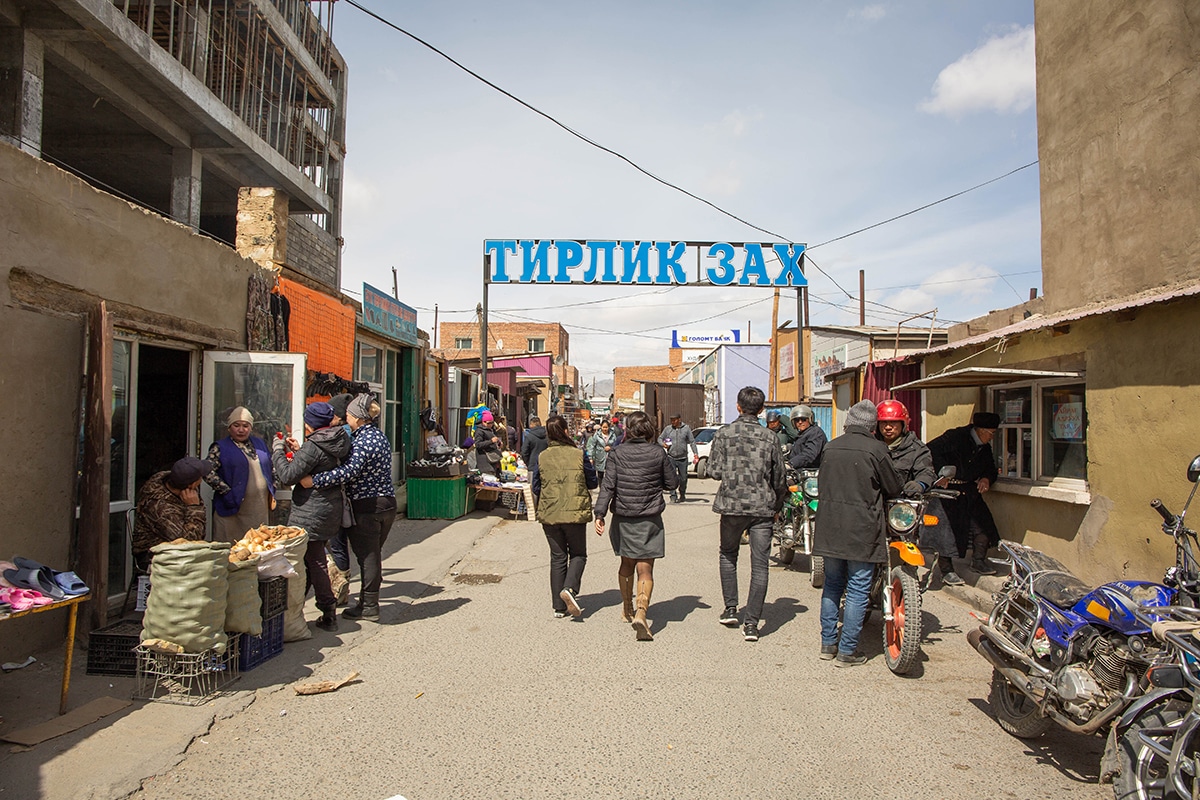
96. Altai Tavan Bogd National Park
The best place to visit in western Mongolia , Altai Tavan Bogd National Park is known for its stunning views, incredible natural wonders, and towering mountains. The park is home to nomadic Eagle Hunters and ethnic-Kazakh herders who will show you a completely different side to Mongolia. Argali sheep, ibex, red deer, moose, snow leopard, snow cock, and golden eagles all live in the national park. It’s one of the most popular areas for snow leopard conservation and research projects in the world .
97. Burkhan Buudai Mountains
A unique red and orange rock and snow-covered mountain formation in the Gobi-Altai Province, the Burkhan Buudai Mountains are one of the most unique mountain ranges in Mongolia . Don’t miss the Thousand Tombs of Khyar Lake and Uert White Gate for the most spectacular views – and photos.
98. Tolbo Lake
Taking the AH4 paved highway from Ölgii and Khovd City, travelers can visit this popular tourist attraction in the heart of the Altai Mountain range. The best time to visit is mid-July, when temperatures are at their warmest, otherwise travelers face the risk of encountering unpredictable snowstorms and blizzards – which makes for a great travel story but not the most pleasant travel experience.
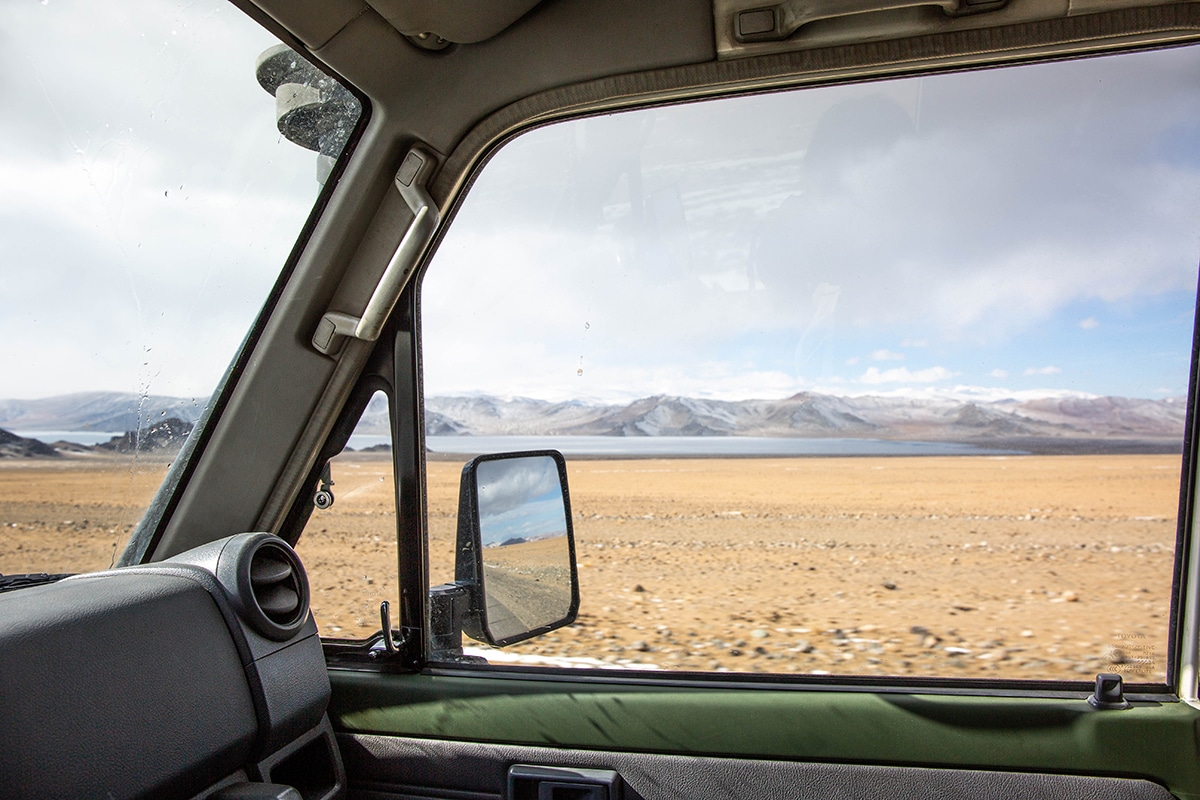
99. Potanin Glacier
The longest glacier in Mongolia is also the most popular for tourists and locals to visit. Potanin Glacier stretches 14 kilometers through Altai Tavan Bogd Mountain and is difficult to reach, a 4-wheel drive vehicle and experienced off-road driver are recommended. The glacier is steadily shrinking and is at risk of disappearing. Meaning, get here now before it’s too late.
100. Malchin Peak
With an elevation of 4,050 meters, Malchin Peak is one of the best mountains for climbers and trekkers to visit in Mongolia . Translating to Herder Peak, it’s one of Altai Tavan Bogd National Park’s ‘Big Five Peaks.’ Climbers don’t need technical experience to take on this mountain and, if you’re lucky, you’ll even run into some nomadic Eagle Hunters along the way.
101. Friendship Peak
While Khüiten Peak, also known as Friendship Peak, is located on the border with China and is one of the least accessible mountains on earth , you can still get a glimpse of the mountain from below. Named for being the point where Mongolia, China, and Russia meet, Khüiten Peak is the tallest mountain in Mongolia at 4,374 meters above sea level.
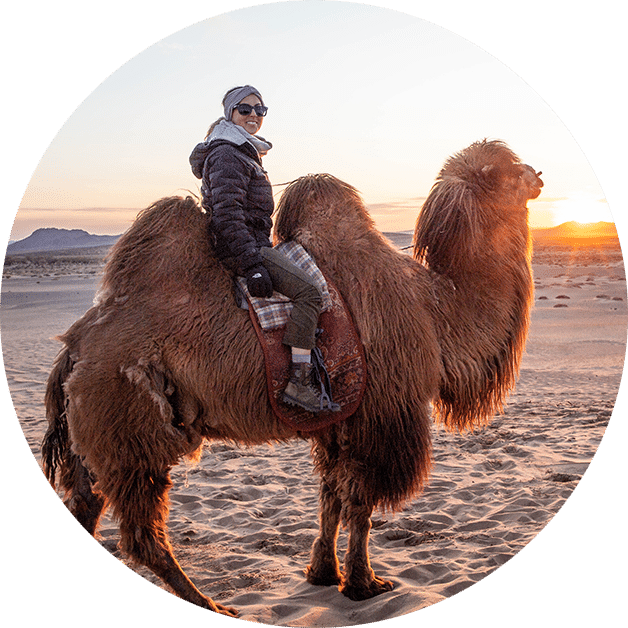
Author: Breanna Wilson
Hi! Sain uu! I’m Breanna, an American travel writer and adventurer living in Ulaanbaatar, Mongolia for more than 5 years. I’ve written for and been featured in Condé Nast Traveler, CNN, Forbes, and the New York Times, among others. Read more of my Mongolia travel articles here .
6 Best Places To Eat Mongolian Food In Ulaanbaatar

Naadam Opening Ceremony 2-Day Small Group Tour
Privacy policy, terms & conditions, join my private travel group on facebook.
Proudly Based in Ulaanbaatar, Mongolia © 2024 Meanwhile in Mongolia
AFFILIATE NOTICE
This website contains links to products and services where I may make a commission when you purchase. This supports the continued upkeep and development of this website. For an explanation on this policy, read my Advertising Policy page .
- Privacy Policy
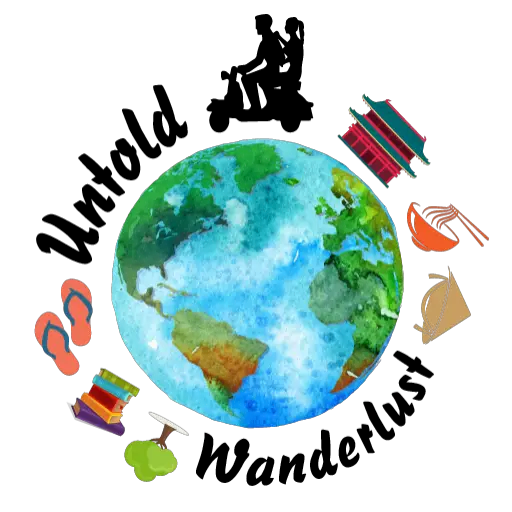
- Disclosure Policy
- Travel Tips
- 109 Genius Travel Hacks
- Teach Abroad
- Work With Us
Asia Guides
Is mongolia worth visiting reasons you have to visit.
Is Mongolia worth visiting? YES, YES, and YES again! When we arrived back in Vietnam, after 4 months of backpacking through Hong Kong , Macau , China , Mongolia , South Korea and Japan, many people were curious to know where exactly was our favourite destination. Without hesitation, both of us, hands down would say Mongolia! Mongolia is a unique country that will forever hold a special place in our hearts. Here, we have compiled a list of 9 reasons why you should DEFINITELY visit Mongolia.
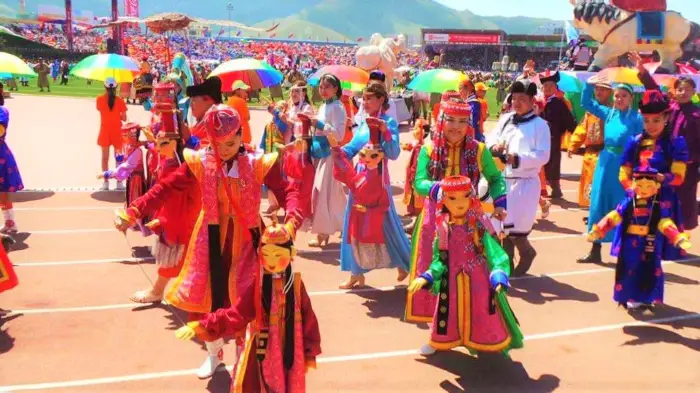
Disclosure: Untold Wanderlust contains affiliate links. If you click on these links and make a purchase, we will earn a small commission at no extra cost to you. You can find our full disclosure policy and privacy policy here.
Travelling to Mongolia is a path less trodden
Many people have heard of Mongolia and the Mongol Empire, but how many people do you know who have been? Probably not many, right? Mongolia is one of those countries that are less travelled , but we think this is definitely going to change over the next few years. Infrastructure is rapidly improving, and the country is becoming more popular and modernized. We recommend you book a Mongolian tour fast before the culture and natural preservations are overshadowed by mass amounts of tourism and international influences. However, for now, the country is still a relatively undiscovered and untouched corner of the Earth.
Make sure to check out our ultimate backpacking Mongolia itinerary for more inspiration!
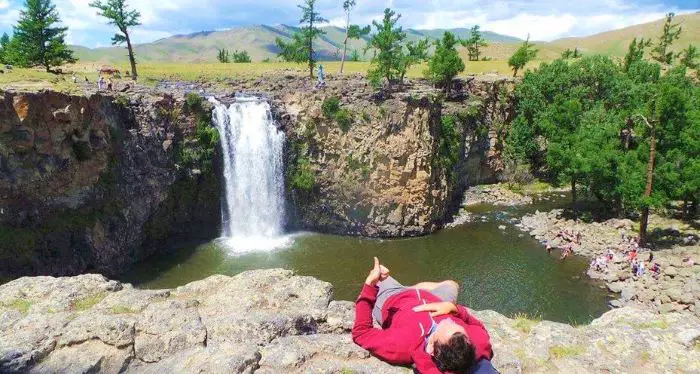
The incredible landscape throughout Mongolia
Is Mongolia worth visiting for its landscapes? Of course! Mongolia boasts landscapes that will blow you away! One of the most interesting things about Mongolia is that it has the lowest population density in the world, and half of Mongolia’s 3 million population lives in the capital city, Ulaanbaatar. Therefore, the land outside of the city is untouched and ready to take your breath away. Mongolia has a vast amount of open land that constantly changes as you venture further away from the city. From the dunes in the Gobi Desert, the glaciated snow-capped mountains in the west, to the lush green forests in central Mongolia; you are sure to discover landscapes so different, yet so close by like you have never seen before. Honestly, it is out of this world, and it somewhat reminded us of landscapes that are so unrealistic that you would see them in a cartoon.
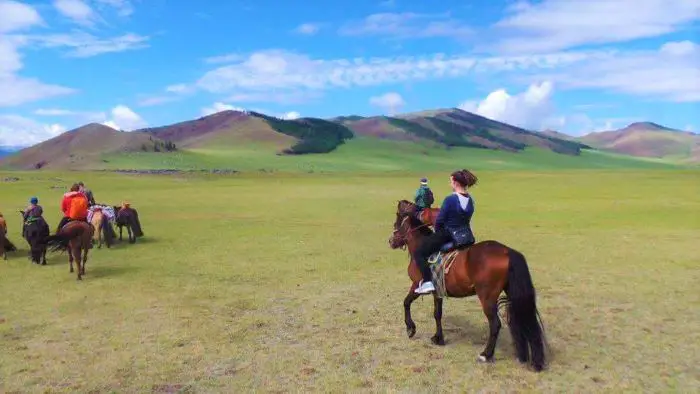
Go for a Mongolia adventure
Amazing adventures await! A sense of adventure is certainly out there, even for the most well-organised travellers. Once you hop into your old Russian mini-van and leave the city, who knows where you will end up for the night, what you will eat, or what you will see along the way? You could go days before you get the chance to take a shower, eat a nice warm meal, or even sleep in a comfy bed free of creepy crawlies. But what we can be sure of is the amazing wildlife and animals you will see, the kind-hearted families you will meet, and the lifelong lessons you will learn along the way.
The adventure is continuous, with opportunities to watch heavenly sunsets at the top of dunes, ride on horseback through lush steppes and lakes, camel ride into the sunset in the desert, bike through an ice glacier in the summer heat, or sleep under the magical night stars.
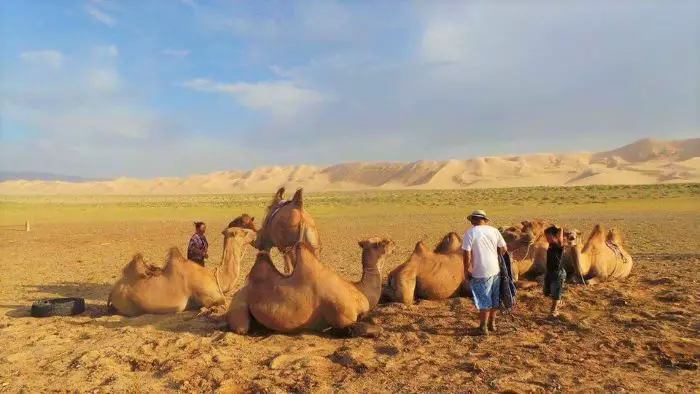
Mongolia culture
There is nothing quite like Mongolia’s distinctive culture! Mongolian culture is unique, and you will find no other culture like it. From the fascinating nomadic lifestyle to the colourful and rich traditional dress sense; you will be intrigued to learn more about this captivating culture that has been preserved, despite living in a fast-advancing world. Immerse yourself into the culture by sleeping in a traditional ger with a local nomadic family and eating freshly made goat cheese biscuits and slabs of mutton meat. You may even get the chance to become a farmer for a day, by helping the family herd their sheep.
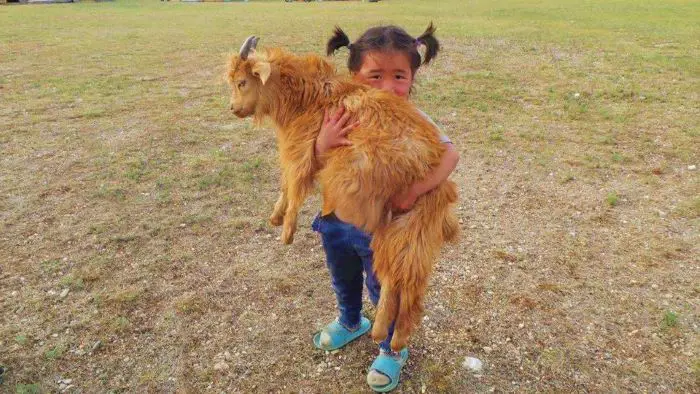
Go to Mongolia alone and take a break from civilization
Take a break from people! Mongolia is one of the least populated countries on Earth. Once you leave the city it’s not hard to get lost in your thoughts. The mass open landscapes, no houses, no buildings, and no people will truly make you feel like you’re the only one in the world. Find fun in the simpler things in life; like skipping stones in the lakes and chasing goats and sheep off the road. Or even hanging your head outside of a fast-moving van, to feel the wind gliding through hair.
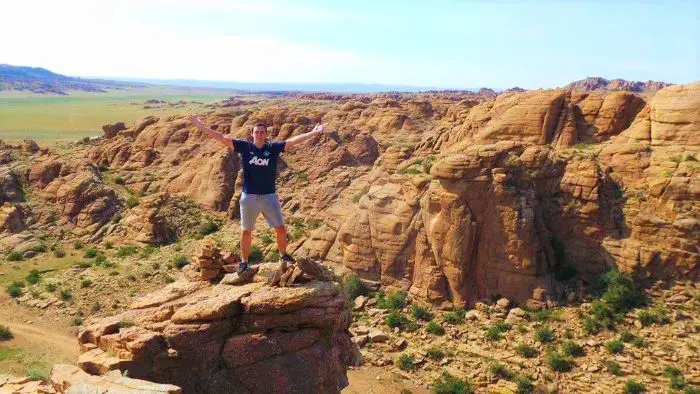
The epic Naadam Festival
Is Mongolia worth visiting for its festivals? Absolutely! The epic annual Naadam Festival takes place around the middle of July and lasts for 3 days. We were very lucky to have had the chance to witness the festival, despite not having originally planned to be there during the festival time. The festival kicks off with a huge opening ceremony that plays out the history of Mongolia. Afterwards, you will have the chance to watch traditional Mongolian wrestling, archery and, of course, horse riding.
This festival has even been dubbed the ‘Mongolian horse racing festival’, for the number of horse races that take place; from wee babies riding horses, to fully grown adults. Aside from being astonished at children as young as 5 years old galloping around on their horses, make sure to feel the suspense as 115+ kg wrestlers take each other to the ground. If you can, we highly recommend planning your trip to Mongolia around the Naadam Festival. Make sure to buy your tickets in advance, as you don’t want to miss out on the day’s events.
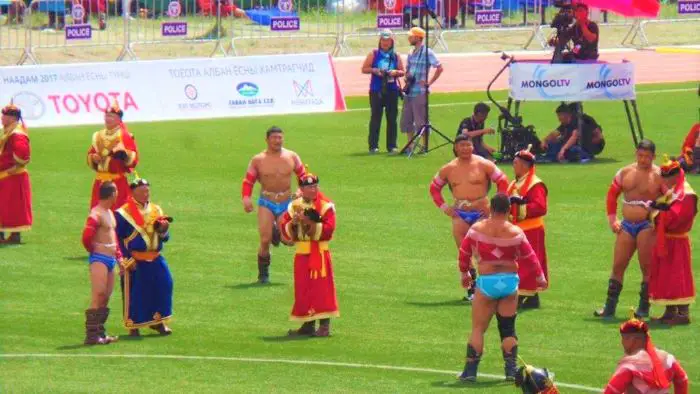
The kind-hearted people of Mongolia
Of course, Mongolia is worth visiting for the welcoming people! The people of Mongolia are among the most kind-hearted people we have ever come across. They are just as much intrigued about you, as you are about them. Despite a language barrier, the people will go out of their way to help you, make you feel welcome, feed you, and make sure you are comfortable for the night. We experienced nothing but kindness from our host families across the entire country. One family even went as far as moving out of their bedroom ger to make room for us for the night.
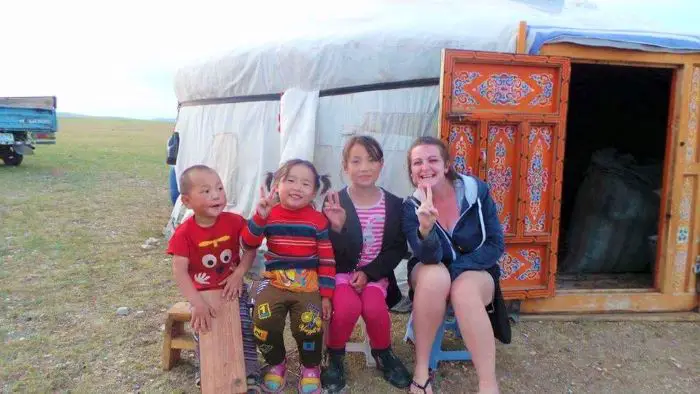
The funky capital of Mongolia – Ulaanbaatar City
The funky, old-soviet style city of Ulaanbaatar is a great place to hang out for a few days. With half of the population in Mongolia living in the capital, you would expect the city to be relatively big. Nope! You can easily cover the city on foot, as it is quite small. Surprisingly, despite the rest of the country living on a farm with little technology, the city is built up. Ulaanbaatar has all the conveniences that you would find at home. The city has a Russian feel to it and is worth taking a few days to explore. Not only is Ulaanbaatar a nice city to spend a few days in, but it’s also the perfect place to start your trip. It’s easy to reach from both Russia and China via train. For more information on how to reach Mongolia from China the cheapest way , check out our post.
If you’re looking for somewhere to stay in Ulaanbaatar, make sure to check out the latest prices HERE.
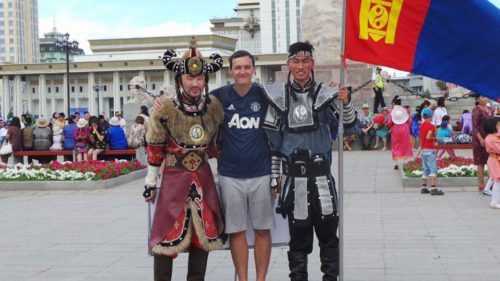
Fascinating Mongolian history
The history of Mongolia is utterly fascinating! If you’re a history sponge, then Mongolia is undoubtedly a country for you. The history of Mongolia spans way back to the 13th century when the Mongols rose to rule the world. Relive the past at the National Museum or follow in the footsteps of Genghis Khan, with a trip on horseback through Mongolian forests, steppes and lakes. The possibilities to unfold centuries worth of history are endless. But a cool place to visit is the Genghis Khan Statue , which can easily be combined with a trip to Terelj National Park .
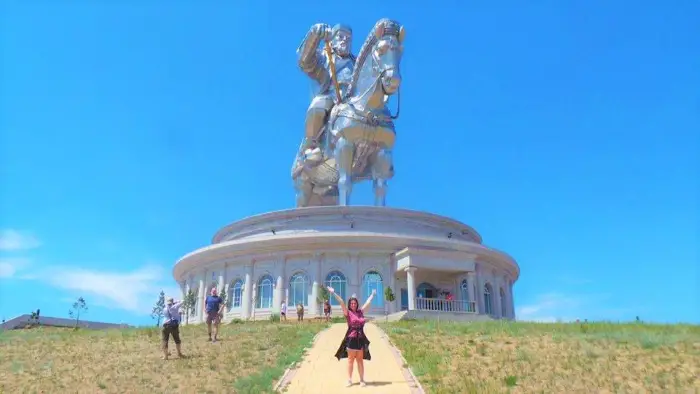
Essential resources for travelling in Mongolia
Travel Insurance – No matter where you’re travelling to, it’s a good idea to make sure you’re covered for any accidents or losses. We spent days and weeks searching for insurance, but most insurers would not allow us to take out a policy as we were already abroad. Our personal choice is Safteywing . You can opt for automatic monthly payments, just like a subscription. More importantly, it is available in 180 countries and can be purchased whilst already travelling. There is no cap on the duration of travel.
Visa – Before you travel to any country, make sure to check if you need a visa. iVisa is a fantastic website that is super easy and quick to use. Just type in where you are from. and where you are going. to check if you need a visa. If you do, you can quickly make an application online.
Accommodation – Booking.com is our go-to when looking to pre-book accommodation online. Booking.com tend to almost always have the best rates and a FREE cancellation policy for most properties.
Tours & Activities – If you want to book tours and activities online, make sure to check out Get Your Guide . Get Your Guide takes the stress out of booking activities abroad. You will also find a range of benefits, such as skip-the-line passes, lunch included in your tours, and so much more.
Travel tips ebook -Before you head off on your adventure, make sure to download our free ebook. It has a whopping 109 budget travel tips to help you make your hard-earned cash go further. Click here to download your FREE ebook.
So, what do you think? Is Mongolia worth visiting? We hope this list of reasons to visit Mongolia has inspired you to visit this amazing country! It’s quite clear that Mongolia is the perfect retreat for nature lovers and cultural enthusiasts. Don’t hold back from visiting; book that flight, change cars for horses, houses for gers, and roads for gravel dirt paths.
If you’re inspired to visit Mongolia (which you should be), find out how to get a Mongolian visa here.
Like this post? Pin it!
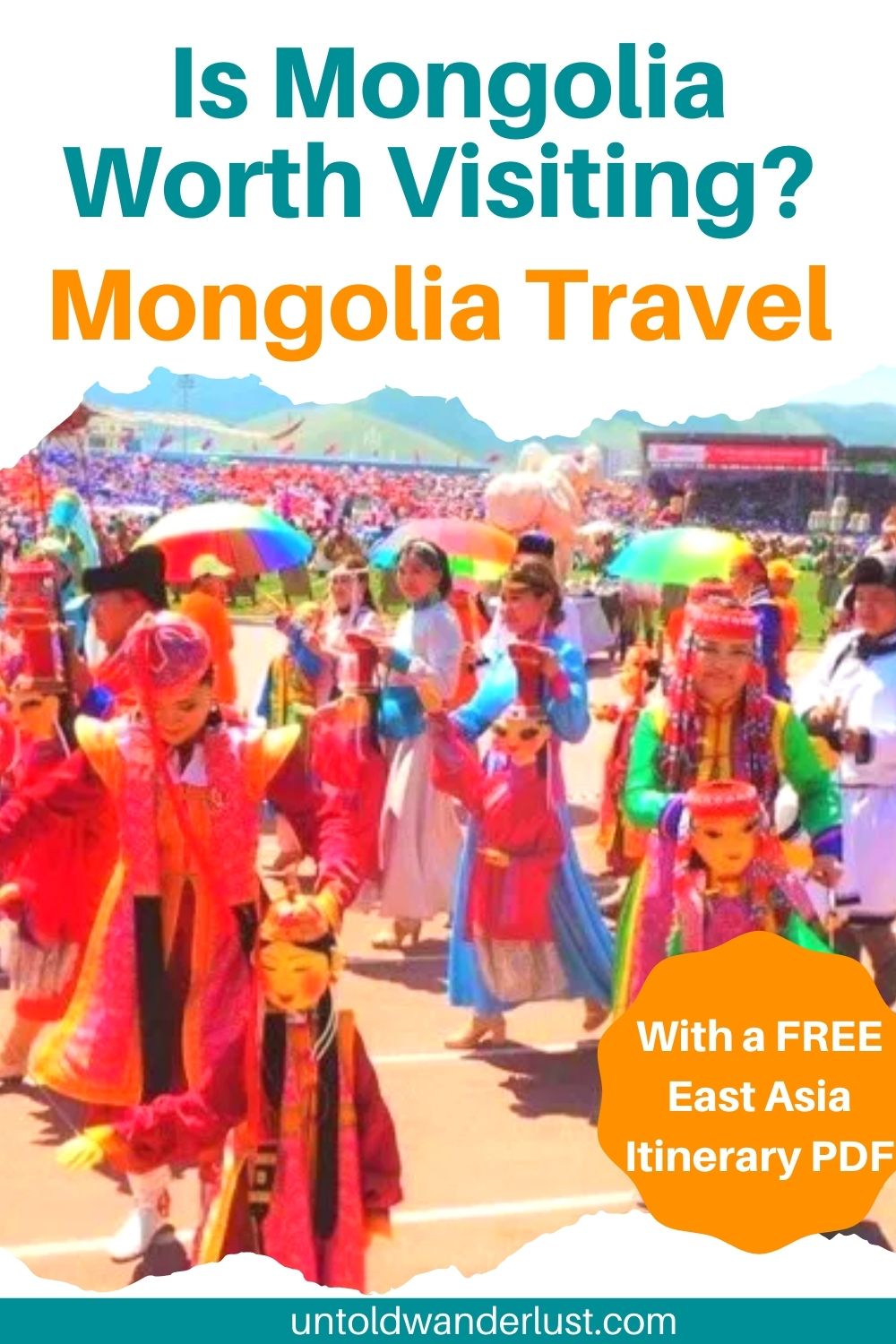
9 thoughts on “ Is Mongolia Worth Visiting? Reasons You Have to Visit ”
Mongolia looks great and your information is also helpful. I am not sure how it will be to visit Mongolia with kids.
It always seems a bit strange that Mongolia is not that populous anymore, especially as it was such a great empire in the past. I have heard nothing but amazing things about Mongolia and it looks like a must-do for the travel bucket list. That said, I like your short tips on why to visit, nice heads up about the Naadam festival.
I know right ! I do think that it is going to rapidly change in the coming years though. It won’t be long before it is a tourist hot spot. Hope you get to visit one day soon.
I legitimately didn’t need any more reasons to add Mongolia to my 2018 list, but this definitely makes me want to go even more!
Glad it makes you want to go more 🙂 Do you have plans to go this year ?
Neither of us is a huge fan of roughing it, but honestly, the experience you had is almost enough to change that. Anytime you get to immerse yourself in a culture is a true gift, and it sounds like you got that. Amazing!
To be honest, we are not huge fan of roughing it either but it’s totally worth it in Mongolia. The gers are actually really cosy too, when the fire is lit.
Oh yeah! Looks great. I am planning on hitting Mongolia early next year. I have also been listening to a Mongolian band called Huun Huur Tu who are great also.
Awesome ! You are going to love it. Seems like you are getting into the Mongolian vibe already.
Leave a Reply Cancel reply
You must be logged in to post a comment.
This site uses Akismet to reduce spam. Learn how your comment data is processed .


Touropia Travel
Discover the World
10 Best Places to Visit in Mongolia
By Alex Schultz · Last updated on October 3, 2023
Renowned around the world for its endless steppe, nomadic culture, and of course, Genghis Khan, Mongolia is a breathtakingly beautiful place to explore that will delight nature lovers and outdoor aficionados alike.
While it is precisely for its wild and rugged landscapes and endless nothingness that people visit Mongolia, the landlocked nation also has a number of gorgeous alpine lakes for you to enjoy, as well as towering mountains and the desolate Gobi Desert.
Map of Mongolia
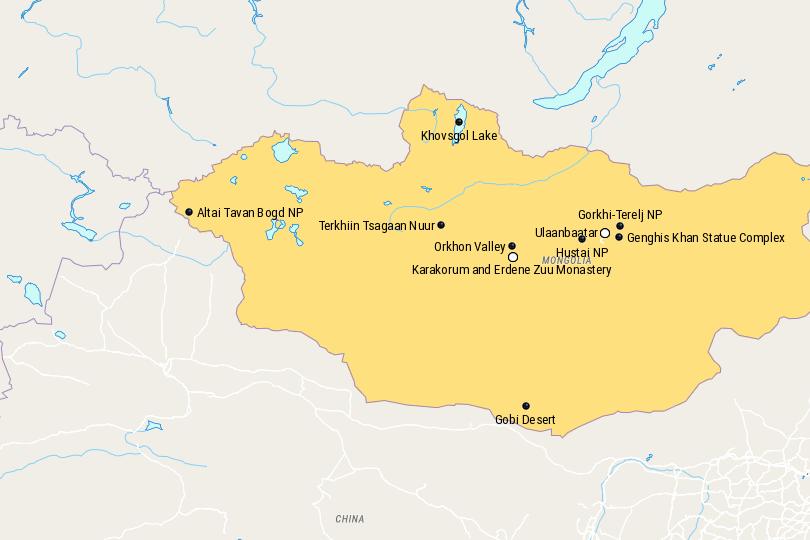
Hidden away among the vastness of the scenery are remote yurt camps for you to experience the time-honored traditions of Mongolian nomads and their famed generosity and hospitality. Plan your trip to this undiscovered Asian travel destination with our list of the best places to visit in Mongolia.
10. Karakorum and Erdene Zuu Monastery
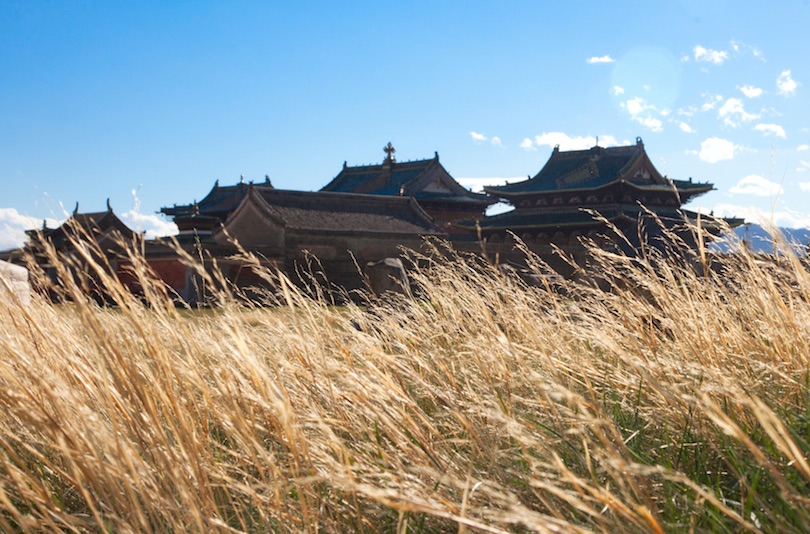
Once the capital of the Mongol Empire, Karakorum is a fascinating place that is certainly worth a visit if you’re interested in learning more about the history and culture of the Mongols. Known to locals as Har Horin, the ancient city was visited by Marco Polo all the way back in the 13th century. Nowadays, however, the once-great city is but ruins, with endless sky and steppe in every direction.
The main sight is the majestic Erdene Zuu Monastery, which was built out of the remnants of the ruined city in 1585; the plethora of stupas lining its long wall certainly do look incredible. One of the earliest surviving Buddhist monasteries in the country, Erdene Zuu has three beautiful temples, with lots of lovely statues and carvings.
Besides this impressive sight, Karakorum has some smaller ruined stupas, buildings, and archaeological sites for you to wander around, although these are decidedly less spectacular.
9. Terkhiin Tsagaan Nuur
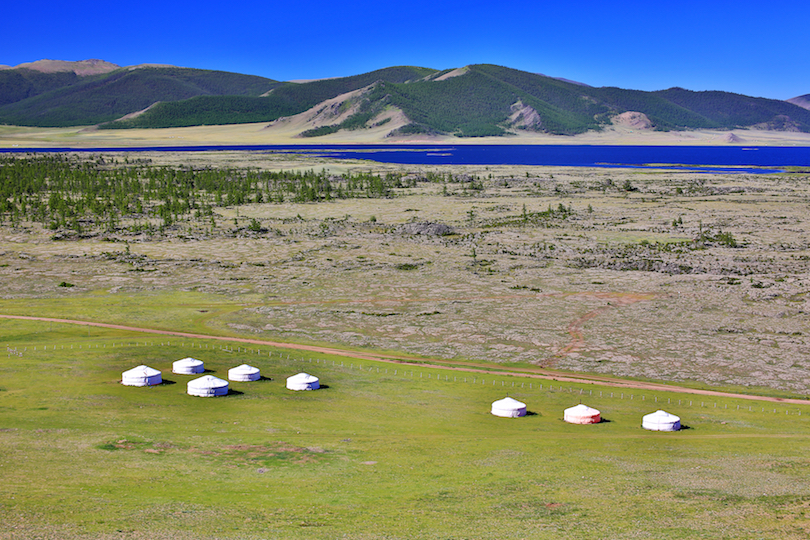
Meaning ‘Great White Lake’ in English, Terkhiin Tsagaan Nuur is aptly named, as its reflective waters beautifully mirror the skies and clouds above. Stretching into the distance, the lake’s tranquil waters are surrounded by gently rolling hills, and the idyllic scenery is perfectly complemented by the white yurts and scatterings of horses that line its shores.
Due to its remote nature, Terkhiin Tsagaan Nuur is a very peaceful place to camp for a couple of nights. There are several great hikes you can do in the surrounding area, with Khorgo Volcano particularly worth a visit.
In addition, many people go horseback riding around the freshwater lake or climb to the top of one of the nearby hills for an even better look out over the gorgeous scenery.
8. Orkhon Valley
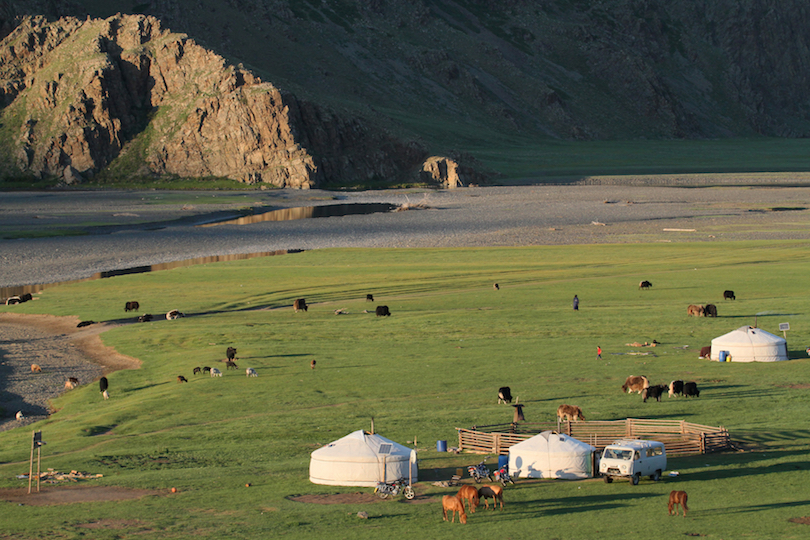
Lying almost slap bang in the middle of Mongolia, it’s in the scenic Orkhon Valley where the sacred mountain-forest of Otuken was believed to be. Ruling over the place where the ancestor spirits resided granted the ruler the divine right to rule on Earth. This meant that its possession was considered to be absolutely crucial to each Turkic state that rose, ruled, and declined amongst the steppe.
Consequently, a wealth of interesting historic sights and cultural landmarks litter its mountainous terrain. The eighth-century Orkhon monuments and the Tuvkhun Hermitage are the most impressive of the lot, alongside the ruins of Karakorum and Erdene Zuu Monastery.
There is something quite spiritual about traveling through the endless empty landscapes surrounding the valley; you barely see another soul for days other than the flocks of livestock and the herds of horses that meander across the steppe in between the occasional yurt.
7. Genghis Khan Statue Complex
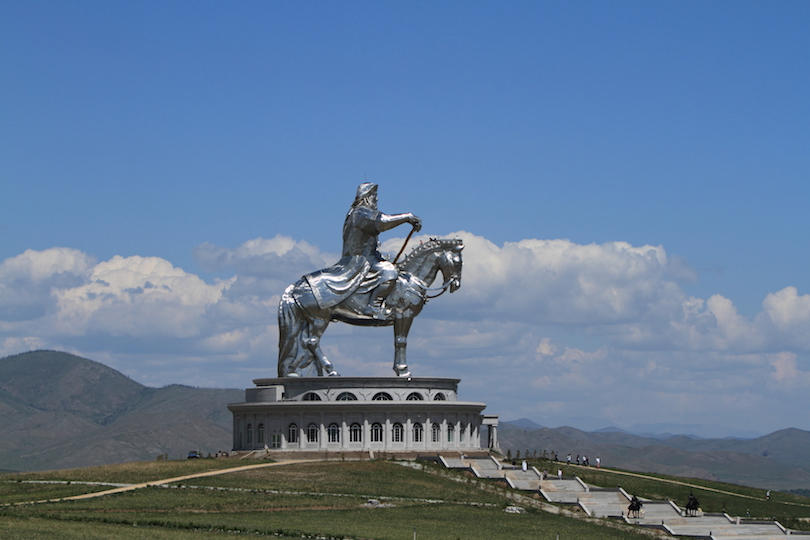
Simply breathtaking, the gigantic statue of Genghis Khan atop his horse glimmers in the light as he imperiously looks out over all the steppe and mountains surrounding the complex. Towering to a height of 40 meters, the statue was built in 2008 to honor the 800th anniversary of the founding of the Mongol Empire. Its sheer size and scale are certainly fitting of the man who rose to rule such a huge swathe of territory and is a national hero in the country.
The Genghis Khan Statue Complex lies around 50 kilometers outside of Ulaanbaatar. Once you arrive, you’ll find souvenir shops, a restaurant, and an archaeological museum for you to check out. From the top of the horse’s head, you can enjoy some awesome views out over the surrounding countryside, and a close-up view of Genghis Khan gazing out towards the horizon.
6. Ulaanbaatar
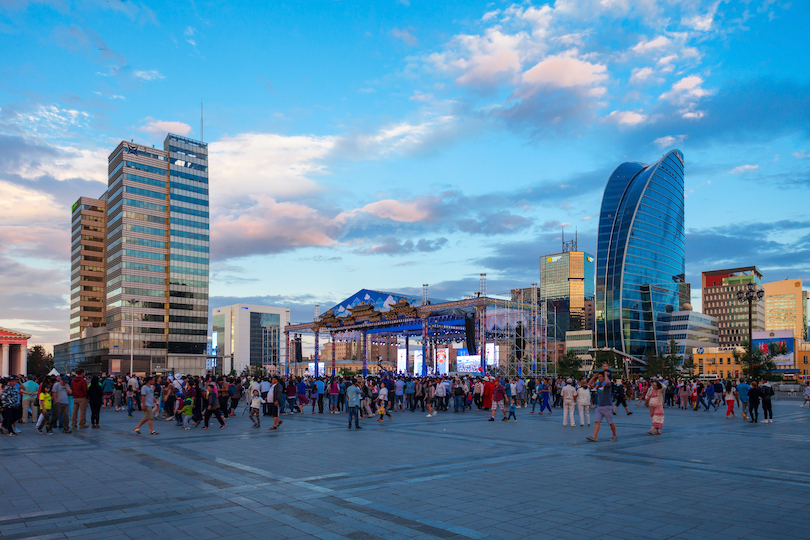
Home to almost half of the country’s population, the sprawling city of Ulaanbaatar is Mongolia’s capital, as well as its cultural, administrative, and commercial heart. Located in the delightfully named Valley of the Golden Cradle, at the point where the Selbe and Tuul Rivers meet, the city is a strange yet intoxicating mix of urban and nomadic lifestyles.
While its downtown is a bit of an eyesore, with Soviet-era buildings lying alongside modern monstrosities, there are some enchanting old monasteries scattered about here and there: Choijin Lama and Gandantegchinlen are the best of the bunch and tucked away in the endless sprawl, you can still find a yurt or two.
When it comes to its museums and art galleries, Ulaanbaatar is truly blessed. It is well worth spending a couple of days trawling its extensive collections and artifacts: the Bogd Khan Winter Palace and Mongolia National Modert Art Gallery are particularly delightful to peruse.
5. Altai Tavan Bogd National Park
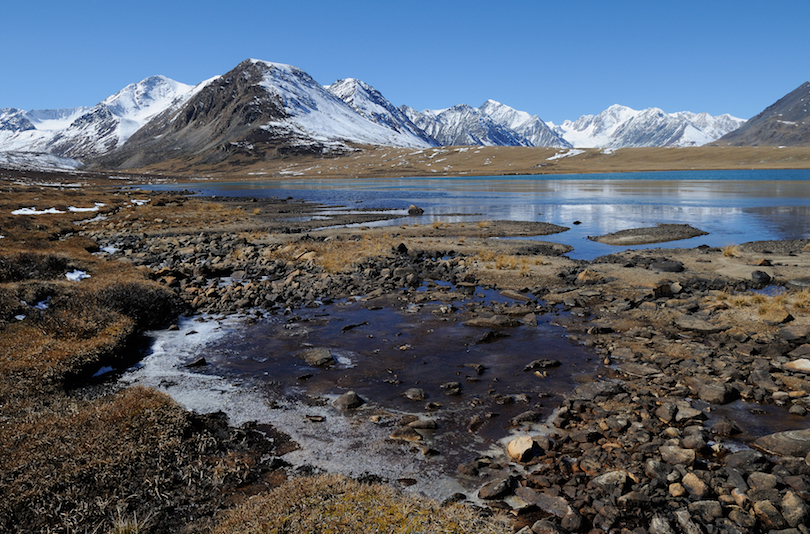
Covering a vast expanse of territory that includes everything from the Tavan Bogd massif to the glittering lakes of Dayan, Khoton, and Khurgan, Altai Tavan Bogd National Park will delight nature lovers and outdoor aficionados alike.
Located in the western corner of the country, the national park is home to some of the most spectacular scenery in Mongolia. The towering Tavan Bogd Mountains loom over the three large freshwater lakes that lie among them.
Due to its remote location, there is a very untouched and unspoiled feel about the place, with lots of wonderful fauna and flora to discover. You may be lucky enough to see ibex, brown bears, and grey wolves, with majestic golden eagles swooping overhead.
Besides the many stunning landscapes that lend themselves perfectly to hiking, rock climbing, river rafting, and skiing, the park is also a fantastic place to head if you want to gain a deeper understanding and appreciation for nomad life: there are many Kazakh and Tuvan families that you can either visit or stay with.
4. Khovsgol Lake
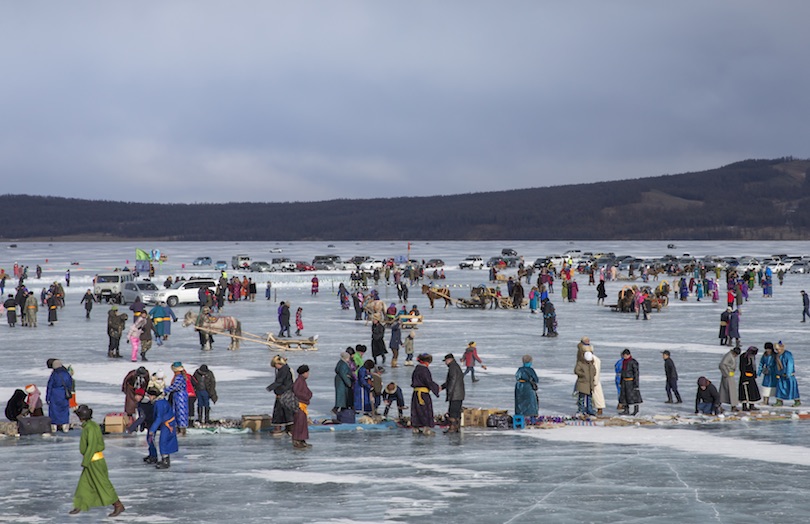
One of the largest lakes in the whole of Mongolia, Khövsgöl is often nicknamed ‘the younger sister,’ due to its proximity to the famous Lake Baikal that lies around 200 kilometers to its northeast in Russia. Surrounded by a glorious national park of the same name that is home to lots of towering mountains and sweeping valleys, Khövsgöl Lake is set in a stunning location.
While its waters are relatively poor in terms of fish and marine life, Khövsgöl Lake remarkably contains almost 70 percent of the country’s freshwater and was formed over two million years ago.
In stark contrast to the glimmering lake, the national park boasts a wealth of wildlife. While hiking along its scenic trails, you can sometimes spot ibex, elk, and the occasional brown bear, with incredible views of the lake and its many dramatic landscapes also on display.
3. Hustai National Park
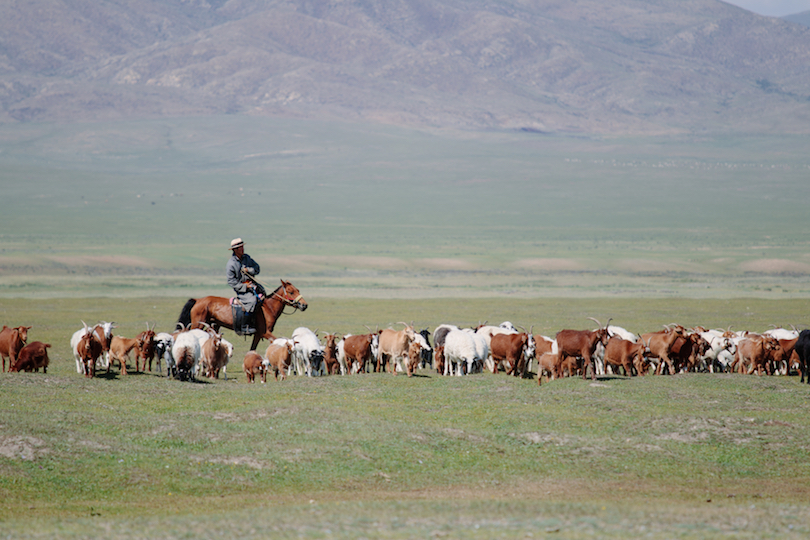
Lying just a short distance away from the capital of Ulaanbaatar, Hustai National Park is a fantastic place to head if you want to visit the renowned Mongolian steppe, while the beautiful Khentii Mountains add some variety to the scenery.
Traveling through the national park is an absolute delight as you pass small herds of wild horses making their way across the steppe with nothing else in sight other than faint mountains off in the distance.
The sheer expanse of nothingness is mind-boggling. While drinking in the magnificent scenery to your heart’s content is delightful, there’s always a slight feeling of relief when you finally come across a small cluster of yurts.
2. Gorkhi-Terelj National Park
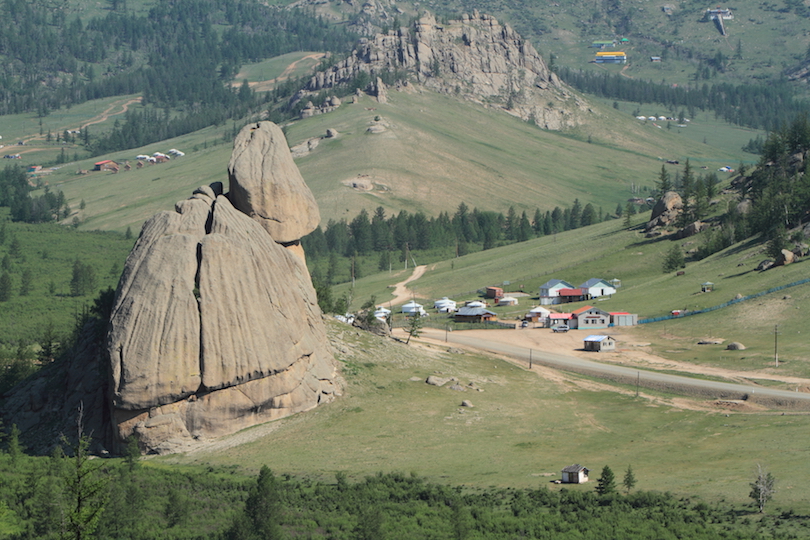
One of the most popular places to visit in Mongolia, Gorkhi-Terelj National Park’s alpine scenery is impressive. Its glorious mountain peaks are home to picturesque valleys, roaring rivers, and craggy rock formations, with charming yurt camps found here and there. As such, there are a plethora of great outdoor activities for you to try out, with hiking, rock climbing, and river rafting all being popular pastimes.
Horseback riding through the epic scenery is an unforgettable feeling and really is a must if you want to have the quintessential Mongolian experience. Although parts of the park can get busy due to its popularity and proximity to Ulaanbaatar, most of its dramatic landscapes remain pristine and untouched.
With glacial lakes, hot springs, and a Buddhist monastery also on offer, Gorkhi-Terelj National Park really is a natural paradise just waiting to be explored.
1. Gobi Desert
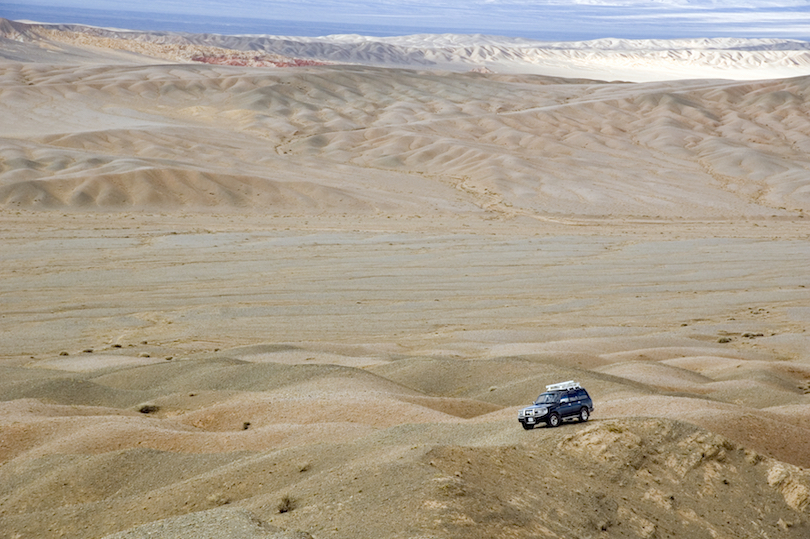
The harsh, unforgiving climes of the endless Gobi Desert certainly aren’t for the faint-hearted; that’s what makes them so exhilarating to explore. With infinite dunes, ancient rock formations, and desolate desert stretching out before you, venturing into the Gobi Desert is the adventure of a lifetime.
Tucked away among this bleak yet strangely alluring landscape are a wealth of amazing natural sights, with rugged cliffs, plunging canyons, and cavernous caves all on show alongside picturesque desert oases and saltwater rivers.
While the main attractions are the incredible singing sand dunes of Khongor and the marvelous scenery of Yolyn Am and Dungeneegyn, you really can’t go wrong in the Gobi Desert (providing you stick to the path) as everything is just so majestic.
Share this post:
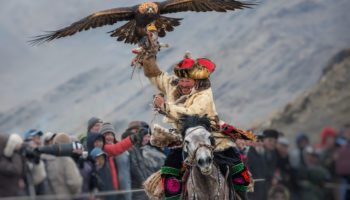
15 Best Things to Do in Mongolia
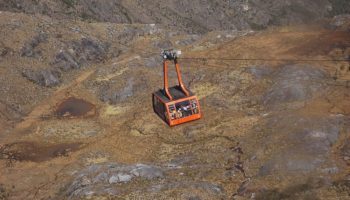
10 Top Tourist Attractions in Venezuela
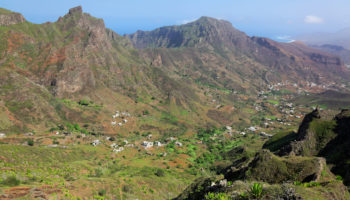
10 Best Cape Verde Islands
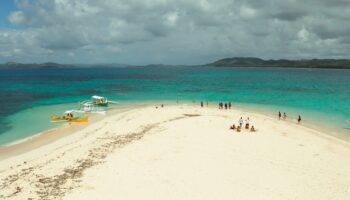
23 Most Beautiful Islands in Asia
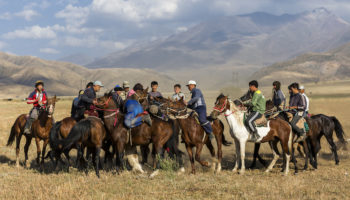
10 Best Places to Visit in Kazakhstan
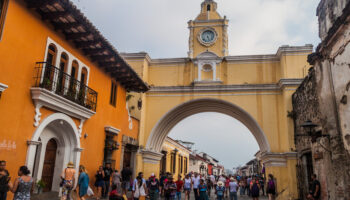
10 Best Places to Visit in Central America
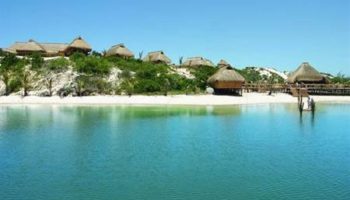
8 Best Mozambique Beach Resorts
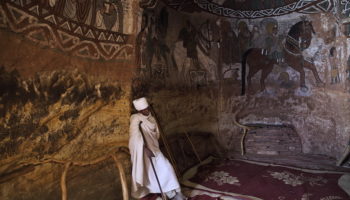
15 Best Things to Do in Ethiopia
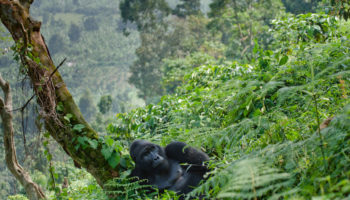
24 Best Places to Visit in Africa
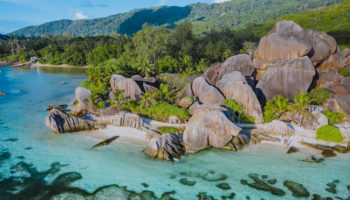
15 Best Things to Do in the Seychelles
Reader interactions, leave a reply cancel reply.
Your email address will not be published. Required fields are marked *
This site uses Akismet to reduce spam. Learn how your comment data is processed .

TOP 5 REASONS TO TRAVEL IN MONGOLIA
I. sleep under thousands of stars in a ger.
A ger or yurt, as it is sometimes called outside Mongolia, is a simple round dwelling used by many ethnic groups in Central Asia. The ger has existed for more than three thousand years; its design makes it both easy to carry and easy to build—perfect for the migratory lives of nomads. Layers of felt and canvas create a structure that is well insulated against cold or rain and yet surprisingly cool on hot summer days. Since the time of Chinggis Khan, the ger has become a symbol of the Mongolian people. Now you can experience the coziness and comfort of a contemporary ger under the bright stars of the Milky Way. Nomadic Journeys’ excursions to Jalman Meadows and Ikhnart Rocks both offer you the chance to enjoy the incomparable wilderness of Mongolia and the unique adaptability of the Mongolian ger. Jalman Meadows Ger Camp, located in the uppermost part of the Tuul River Valley, is set in a beautiful meadow teeming with summer wildflowers and fringed by scenic forests of larch and birch. Ikhnart Rocks, in the eastern portion of the Gobi Desert, is an arid upland with dramatic rock formations. The region’s full name, Ikh Nartiin Chuluu, means “rocks with plenty of sunshine.”
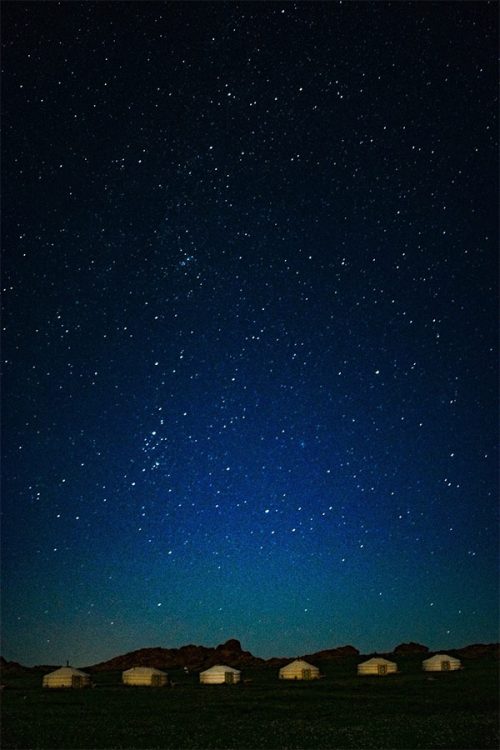
II. Travel like a Nomad
Nomadic life does not mean wandering lost in an empty wasteland. Although Mongolia’s landscape can be harsh, it is also highly varied and occasionally abundant. Mongolian nomads are pastoral herders, moving their livestock to fresh grazing land or winter shelter, as the season requires. During the height of the Mongolian empire, it was often the tribal queens who assumed the arduous task of leading tens of thousands of people and animals to new pastures. Nomadic herding is a complicated process, requiring intimate knowledge of both topography and climate. This ancient way of life continues to be practiced by many Mongolian families, with skills and knowledge passed from one generation to the next. By participating in a Nomadic Journeys trek, you too can experience the nomadic tradition, following local nomads either on foot or by horse. On these authentic excursions, all equipment and luggage is loaded onto traditional carts or trained pack animals. In the arid Gobi region as well as on the true steppe, the carts are usually pulled by camels ( Camel Trek ). In northern areas, yaks provide the pulling power ( Yak Trek ). At higher elevations, such as the remote Altai Mountains or Naiman Nuur (Eight Lakes), where the slopes are too steep for carts, camels and yaks typically carry the loads on their backs instead ( Naimun Nuur Trek ).
III. Enjoy solitude in a wild and beautiful place
The top reason many people travel to Mongolia is because it offers both a unique nomadic culture and a rich history, it is also one of the least crowded countries on the planet. The overall population density is only two people per square kilometer, with nearly one-half of the nation’s three million people living in or near the capital, Ulaanbaatar. To many visitors, the countryside seems empty, unspoiled by the advances of the modern world. Here you can enjoy the feeling of being alone in the vastness of the Mongolian landscape, and imagine what the explorers felt as they discovered new lands. 360 degrees Mongolia offers a bespoke experience with small mobile camps. You can choose to visit the varying Mongolian countryside, Siberian-taiga in the north, Gobi Desert in the south, Altai Mountain Range in West Mongolia to the vast Eastern Steppe or all four places. On these intimate and private excursions, you will find yourself far from telephone wires and power poles, tour groups and traffic jams.
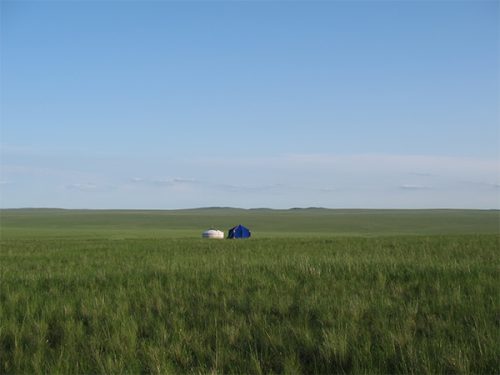
IV. Experience the ancient history of the Great Mongol Empire
The Central Asian steppes produced numerous distinct cultures over many thousands of years. Mongolia’s Orkhon Valley Cultural Landscape, a UNESCO site, is considered the cradle of many of these civilizations. Among the ruins found here are capitals of the Gok-Turk empire, the Uyghur empire, and the Khitan empire. Most importantly, the Orkhon Valley also includes the former capital of the Mongol Empire, Karakorum , as well as Mongolia’s oldest surviving Buddhist monastery, Erdene Zuu. Built in the sixteenth century, this was the center of the Gelug school of Tibetan Buddhism in Mongolia. Nomadic Journeys’ Mongolian Odyssey visits all of these historic places, along with the Gobi’s famed Bayanzag, the “Flaming Cliffs” described by American explorer Roy Chapman Andrews, whose expedition first discovered fossilized dinosaur eggs there in 1920. Important thing to do is visit Dinosaur museum in Ulaanbaatar before heading to Bayanzag.
V. Go on a natural adventure
Mongolia is a superb, Birding destination, home to more than 440 species of birds. These include globally scarce species such as Swan Goose, Pallas’s Sandgrouse, White-naped Crane, Altai Snowcock, Oriental Plover, Henderson’s Ground Jay, and Saxaul Sparrow. Raptors are especially plentiful in this vast country, with healthy populations of Lammergeier, Black Vulture, Upland Buzzard, and Saker Falcon. Anglers will appreciate the opportunity to experience one of the world’s finest Fly fishing adventures, in pursuit of the legendary Taimen as well as Amur Trout, Lenok, Grayling, and other species. Taimen are the largest members of the salmon family. Once common from the Pacific Ocean to the Balkans, the taimen’s range has been sadly reduced by habitat destruction. Mongolia is its last, best stronghold and one of the top reasons why fishermen want to come to Mongolia.
The Golden Eagle Festival in Mongolia’s far west is one of the world’s most compelling events. Since ancient times, the Kazakh nomads of this region have hunted foxes and other small mammals with domesticated Golden Eagles. This autumn gathering in Bayan-Ölgii provides a spectacular setting for the Kazakhs, an ethnic minority in Mongolia, to maintain their hunting traditions. Visiting Eagle hunters family should be in your things to do list.
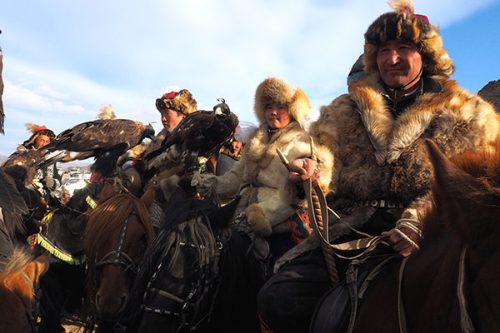
What our guests say
We appreciate your feedback about our tours and services.
Living the mongolian way
Great place to stay and experience mongolian way of living, no tv, wifi, phone. Just nature and great company of the staff and livestocks of mongolia. The toilet is a hole in the ground covered by a shed. It is clean, but can be smelly to those used to city life. Not hot water supply, inform the staff that you like to hot water half an hour earlier so that they can boil it over camel dung 🙂
Spend some days in a Ger!This trip was much more than I expected
This trip was much more than I expected. Our horses and guides were absolutely fantastic. They made us feel welcome, well taken care of, safe and secure. The scenery, the horses and our guides were all delightful. The quality of the tents and meals were above what I expected. All of the elements were there -- people, horses, scenery.
For 25 years Nomadic Journeys has been a leading tour operator in Mongolia, focusing on low impact sustainable tourism. We work with numerous community groups and conservation initiatives around Mongolia. Our philosophy is to offer a low impact travel experience, visiting different places on horse back, yak cart, and camel cart over long difficult journeys on a vehicle. Read more

Phone: +976 11 330360
Email: [email protected]
Visit our Contact page for more details
SIGN UP TO OUR NEWSLETTER
I am a travel agent I am a regular customer
Share on Mastodon
- Share full article

Why Are So Many Millennials Going to Mongolia?
In an era of Instagram tourism, some young people are searching for less curated travel experiences. So they’re flocking to the open spaces of this East Asian nation.
A view from the paved road winding west out of Ulaanbaatar, the capital of Mongolia, into the steppe. Credit... Lauren Jackson/The New York Times
Supported by

Photographs and Text by Lauren Jackson
Lauren Jackson drove for 45 hours across Mongolia, meeting fellow millennials along the way.
- Sept. 13, 2023
It was near midnight, in a storm, on a dirt road in the middle of Mongolia. Still, the river seemed manageable.
My cousin Cole Paullin and I were searching for a place to camp, and I was exhausted from a long day of fording streams in our rented four-by-four truck.
“Seems fine,” I said. “Go for it.”
Cole accelerated and the front tires plunged off an unseen embankment, slamming onto the rocks below. We were perched at a precarious angle, and the front half of the truck was submerged. Water intruded through a crack in the door, lapping onto my feet. I imagined our rental deposit draining downstream.
Drawn by the noise, two young men came over from a nearby tent camp. One waded toward the car into the waist-deep water with a message typed on Google Translate: “This is dangerous.” I was too embarrassed to be scared.
I lent him my rain jacket as he made some calls. Thankfully, there was cellular service. Within an hour, a man with a truck and a tow strap arrived. We reversed at full speed while he accelerated, extricating us from the river.
“That was Disneyland, dude,” said Cole, 27, channeling the slang of his native Los Angeles. “What a ride.”
Cole and I live on different continents — he’s in Philadelphia and I’m in London — but once a year, we convene somewhere new for an outdoors trip. This year, we decided to take a weeklong drive across Mongolia.
Over the past decade, millennials like me — those born between roughly 1981 and 1996 — have been seeking out remote places like Mongolia, while other tourists crowd Santorini, the Eiffel Tower and the Colosseum. It may be a reaction to a world that’s increasingly condensed into our phones, where the same few destinations pop up again and again on Instagram grids and travel blogs. What we have gained in accessibility, we have lost in serendipity.

The Mongolian government has been trying to capitalize on this desire for less curated travel. It has invested in a digital marketing campaign targeting people ages 23 to 40. It has also invited social media influencers to come to Mongolia and post videos of the country’s verdant valleys, Caribbean-blue lakes and orange sand dunes. According to a 2019 survey cited by Mongolia’s tourism ministry, 49 percent of visitors to the country were under 40.
Tour operators are catering to this growing interest, helping young people see the Golden Eagle Festival, an annual gathering of nomadic hunters — male and female — and their eagles; join the Mongol Rally , a driving odyssey across Europe and Asia; or ride in the Mongol Derby , a roughly 600-mile horse race.
“The world is getting smaller, and everyone’s looking for the new frontier,” said Sangjay Choegyal, a 36-year-old living in Bali who has visited Mongolia eight times. “The next place is Mongolia.”

A magnet for adventure seekers
When Cole and I arrived in Ulaanbaatar, the capital, in late July, the line for foreign arrivals crowded the new immigration hall at the airport.
Olivia Hankel, a 25-year-old woman from Oregon, had come to train for the Mongol Derby. Willie Freimuth, a 28-year-old paleontology student from North Carolina, had returned for a second year to study fossils. And Mr. Choegyal had flown in with friends for a road trip to the Orkhon Valley , a lush expanse of central Mongolia.
“When you talk about a trip to Mongolia, it always fills up pretty quick,” Mr. Choegyal said.
Last year, Mongolia had nearly 250,000 visitors, more than six times as many as the year before, when the country was emerging from pandemic isolation. The majority of those visitors were from nearby countries, including Russia, South Korea and Kazakhstan. But the number of visitors from Europe and the United States rose more than 500 percent between 2021 and 2022.
“I think you can have a much more interesting, transformative and engaging experience in a Mongolian outhouse than you can at the Taj Mahal,” said Tom Morgan, the founder of the Adventurists , a company that hosts extreme trips in the country. And, he advised, “It’s better not to plan.”
A tent with four tires
Cole and I hadn’t planned much. We arrived with only our backpacks and a rental car booking from Sixt — one we weren’t sure was real. Sixt’s Mongolian offices operate by bank transfer, and before we arrived, we had sent more than $2,000 to their account. I worried it could be a scam.
We were relieved when we arrived at Sixt and found it had our booking. Then we got the bad news: A previous group had wrecked the S.U.V. we had requested. A 3,000-mile trip on the country’s many dirt tracks had destroyed the bottom of the car. The agent offered us a Russian-made UAZ pickup truck equipped with a rooftop tent. It didn’t have a stereo and the air-conditioning was a faint stream of hot air, but it was sturdy.
We were lucky to get it. Sixt was almost fully booked — as were other providers in the city.
“We sold out three times this season. So we added more dates,” Max Muench, 31, a co-founder of the travel company Follow the Tracks , said. His company, which started running tours last year, helps clients book cars and gives them tablets loaded with maps they can use to navigate while offline. “Especially now after Covid, people want to feel a sense of freedom again,” he said. “And they’re looking for it in the vast emptiness of Mongolia.”
Nomads guided by Google Maps
We soon discovered what that emptiness looked like.
Roughly half of the country’s more than 3.2 million people live in the overcrowded capital, a tangle of roads and new high-rises fraying in every direction. But around a quarter of Mongolia remains nomadic, living on the edgeless steppe in gers, round tents made of wood, tarp, and animal skins or fabric. They move with their herds as many as four times a year.
As we drove out of the city, guided by Google Maps, the sky stretched so wide the horizon seemed to curve. A herd of horses gnawed at the grass, swishing their tails at flies. We were seeking out the herd’s distant relatives as we aimed the truck toward Hustai National Park , a refuge for what the Smithsonian calls the last truly wild horses left in the world.
After nearly an hour on a dirt road, we pulled up to a small, dusty entrance gate. I asked the national park manager, Batzaya Batchuluun, if visitors ever had a hard time finding the place. “Most people come with a guide. But young people like you are starting to show up on their own,” he said. “They have phones. They get here eventually.”
Mongolia is surprisingly connected. Despite the long stretches between villages, we got cellular internet service on much of our drive (using a Mongolian SIM card). One day as I was watching camels in the desert, I was even able to do something absurd: Try my luck with Ticketmaster for Taylor Swift’s Eras Tour tickets. (Like so many others, I was disappointed.)
The Mongolian government has been working to expand online access to citizens and tourists. An estimated 84 percent of the country has access to the internet, and gers often have solar panels, keeping each family’s cellphones charged. The government has also been working to pave the roads from Ulaanbaatar to popular destinations.
All that development has allowed young travelers to roam the country more freely, bringing a different kind of nomad to the steppe. The day after our visit to the wild horses, as we explored Genghis Khan’s ancient capital, Karakorum , we met a group of European women, friends from college on a two-week road trip. They, too, chose to eschew a guide and navigate with their phones.
“We didn’t want a trip where everything is organized for you,” Maria Galí Reniu, a 31-year-old from Spain, said. Hanna Winkler, a 30-year-old from Austria, chimed in: “On our own, we can just pull off anywhere we decide is a nice camp spot.”
A horse race and a hailstorm
Cole and I also pulled off where we liked. At night, we camped under the Milky Way, arching bright above our rooftop tent. During the day, we made lunch in golden canola fields or next to winding rivers. In Elsen Tasarkhai, a long stretch of sand known as the mini-Gobi Desert, we rode two-humped Bactrian camels.
Halfway through our trip, I persuaded Cole to detour to Tsenkher hot springs, a popular destination for Mongolians. Nearly an hour down a dirt road, we came across a crowd of children, bobbing on horses. Drawing closer, we saw they had numbers pinned to their shirts.
One girl and 41 boys, ages 8 and up, gathered for a race. The families used their cars and motorcycles to herd the horses to the starting line. Parents smiled and motioned for us to follow as they lined up their cars next to the horses. When the horses took off, we did too, speeding across the grass alongside the racers at nearly 50 miles per hour.
Just as the first horse crossed the finish line, it began to hail. What would have been a celebration turned into an exodus. Some of the riders crossed the finish line and then headed straight into the hills, braving pellets of ice.
As we drove on toward the hot springs, torrential rain overpowered the windshield wipers, and we began to slide. We passed Priuses, a favorite car in Mongolia, mired on the roadsides. Each time we forded a swollen river, the water rose closer to the cab, until we got stuck and it finally leaked in.
The storm had also flooded the hot springs. As we shivered in a tepid pool, one English-speaking boy commiserated: “Sorry you missed the hot water.”
Along came a spider
After days of slow, off-road driving, we finally arrived at sparkling blue Khuvsgul Lake — our final destination . We wanted to spend the night in a ger, so we called Erdenesukh Tserendash, a 43-year-old horse herder who goes by the nickname Umbaa. His number was on Facebook.
Umbaa, his wife and two sons welcomed us into one of his family’s tents, lit by bulbs hooked to car batteries. For dinner, the family served boiled sheep and horse meat on a communal tray with carrots and potatoes. After dinner, they cracked open the bones and sucked out the marrow, and before bed, we sipped tea with yak milk. As I lay there scrolling, in the light of my phone, I noticed something on my face and swatted. It was a spider the size of a quarter.
The next day, Umbaa took us on a full-day horse ride. We cantered across meadows of wildflowers, saw reindeer and climbed a mountain overlooking the lake, lazing in the sun for lunch, an idyllic finale to our journey.

Back in Ulaanbaatar, the wildflowers seemed far away as I stood with the Sixt agent and worried about the truck. Was there any damage from getting stuck in the river? The truck was so covered in mud and dust, it was hard to tell.
I thought back to the wrecked S.U.V. we were originally supposed to rent and braced myself to lose our deposit, more than $1,400. The agent waved away my fears. Everything was fine, he said. Getting stuck was just standard driving in Mongolia.
His shift was over, so he offered us a ride to the airport. We thought we had plenty of time to make it, but the grinding traffic in Ulaanbaatar almost made us miss our flight. It was one last reminder that in Mongolia, little goes as planned.
Follow New York Times Travel on Instagram and sign up for our weekly Travel Dispatch newsletter to get expert tips on traveling smarter and inspiration for your next vacation. Dreaming up a future getaway or just armchair traveling? Check out our 52 Places to Go in 2023 .
Lauren Jackson is a writer for The Morning newsletter, based in London. More about Lauren Jackson
Open Up Your World
Considering a trip, or just some armchair traveling here are some ideas..
52 Places: Why do we travel? For food, culture, adventure, natural beauty? Our 2024 list has all those elements, and more .
Mumbai: Spend 36 hours in this fast-changing Indian city by exploring ancient caves, catching a concert in a former textile mill and feasting on mangoes.
Kyoto: The Japanese city’s dry gardens offer spots for quiet contemplation in an increasingly overtouristed destination.
Iceland: The country markets itself as a destination to see the northern lights. But they can be elusive, as one writer recently found .
Texas: Canoeing the Rio Grande near Big Bend National Park can be magical. But as the river dries, it’s getting harder to find where a boat will actually float .
Advertisement
Discovering the Magic: Why Visit Mongolia

Mongolia, a charming country nestled between Russia and China, is a destination that often slips under the radar for many travelers. However, those who venture into this remote and enchanting land are rewarded with an experience like no other. Mongolia offers a unique blend of culture, adventure and natural beauty. Here, we’ll delve into why you should consider adding Mongolia to your travel list and explore some of the coolest things to do and experience in this extraordinary country.
Untamed Wilderness and Nomadic Culture

One of the primary reasons to visit Mongolia is its breathtaking landscapes and the nomadic way of life. Vast plains, rugged mountains and pristine lakes dominate the scenery. Travelers can immerse themselves in the nomadic culture by staying in traditional ger camps, meeting herders and experiencing the simplicity and resilience of the Mongolian people.
Adventure in the Gobi Desert

The Gobi Desert, one of the world’s largest deserts, covers a significant part of southern Mongolia. Adventure seekers can explore the stunning sand dunes, visit the flaming cliffs of Bayanzag and even ride camels through the vast, arid landscapes. The Gobi Desert provides a unique and surreal experience that few other places can match.
Discovering History in Ulaanbaatar

Ulaanbaatar, the capital city, is a blend of modernity and tradition. Visit the National Museum of Mongolia to delve into the country’s rich history, including the era of Genghis Khan and the Mongol Empire. The Gandantegchinlen Monastery offers a glimpse into Mongolian Buddhism, with its impressive architecture and serene atmosphere.
Mongolian Cuisine: A Culinary Adventure

Mongolian cuisine, while simple, is hearty and flavorful. Traditional dishes often include mutton, beef and dairy products. Khorkhog, a barbecue-style dish cooked with hot stones, is a must-try, as is Buuz (steamed dumplings) and Airag (fermented mare’s milk). Embrace the local flavors and savor the unique tastes of Mongolian cuisine.
Naadam Festival: A Cultural Extravaganza

Timing your visit to coincide with the Naadam Festival is a bonus. Held annually in July, this traditional event showcases the “Three Manly Games” of wrestling, horse racing and archery. It provides an unparalleled opportunity to witness Mongolia’s rich cultural heritage and the prowess of its athletes.
Horseback Riding Across the Steppes

Horses are an integral part of Mongolian culture and horseback riding is a fantastic way to explore the vast landscapes. Whether you’re a seasoned equestrian or a novice rider, guided horse treks allow you to traverse the plains and mountains, providing a unique perspective of Mongolia’s beauty.
Starry Nights and Nomadic Hospitality

Mongolia boasts some of the darkest skies on Earth, making it an ideal destination for stargazing. Spend nights in a ger camp, away from city lights and marvel at the Milky Way stretching across the horizon. The nomads’ warmth and invitations to stay in their houses give the event a more intimate feel.
Mongolia is a land of contrasts, where modernity meets tradition and vast landscapes captivate the adventurous spirit. From the untamed wilderness to the warmth of nomadic hospitality, this country offers an array of experiences that will leave a lasting impression. So, if you’re seeking a destination off the beaten path, where culture and nature intertwine, Mongolia should undoubtedly be on your travel list. Discover the fascinating and undiscovered gem of Central Asia, the home of Genghis Khan, where every step you take unveils a new side.
Published on January 8, 2024
The best times to visit Mongolia
Aug 27, 2023 • 5 min read
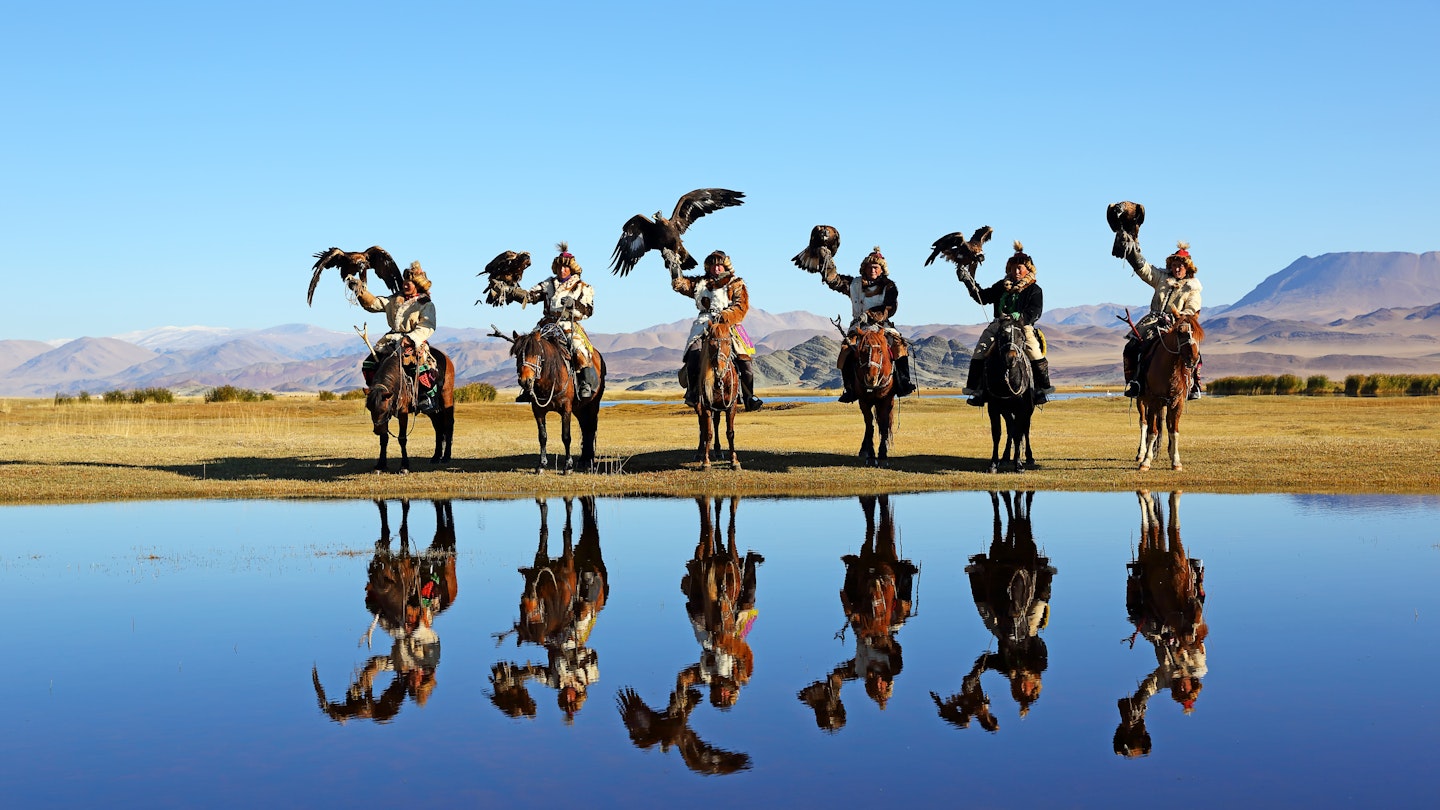
Whether you're visiting for eagle festivals or to explore the Gobi Desert, we can help you choose when to go to Mongolia © isarescheewin / Shutterstock
Famed for endless steppe vistas, fascinating nomadic culture, its thriving modern capital and stunningly diverse landscapes, Mongolia is a lot to take in. Before you decide on where to go, you’ll need to decide when to go – as the time of the year you visit will largely shape your trip.
When you weigh up those all-important variables of weather, big calendar events and peak season crowds versus low season savings, picking the optimum time to come is by no means an easy task – that’s why we’re here to help!
Ultimately, the best time to visit Mongolia is an answer that lies with you, the traveler, and what your interests are. Are you here to tick off bucket-list cultural events such as the world-renowned Naadam festival or the country’s fascinating golden eagle hunting festivals? Maybe you’re an outdoor enthusiast, here to trek on horseback or bike Mongolia’s wide-open lands in sublime weather? Or perhaps you’re more into snow sports and Mongolia’s unique winter festivals ?
Given the temperature extremes in Mongolia – peaking at 45°C (113°F) and plummeting to -40°C (-40°F) – the weather is obviously a big factor in deciding the best months for a visit. But truth be told, anytime is a good time to visit Mongolia, with each season bringing unique, memorable experiences. But if you’re looking for ideas, here are some of our favorite times to visit.

June to August brings glorious weather and the Naadam Festival
The summer is the peak season, and rightly so. This is when the weather really turns it on, making it adundantly clear why they call Mongolia “the Land of Blue Skies.” June, July and August are Mongolia’s warmest months, so this is the optimal time to hit the countryside. Under clear skies, you can experience nomadic hospitality as you traverse the grassy steppe by horse, foot, bike or 4WD before spending nights in ger (yurt) camps.
June is a particularly good time to visit, right before the main tourist season ramps up, meaning you’ll get to enjoy the landscapes with smaller crowds, and get a taster for Naadam with several smaller mini festivals. But the main event happens in mid-July, when travelers flock here en masse from around the world for the Unesco Intangible Cultural Heritage–listed Nadaam Festival – a colorful three-day spectacle of traditional Mongolian games.
These include distinctively local versions of horseracing, wrestling and archery – all traditions that date back centuries in Mongolia – set against a backdrop of much merrymaking. But this is also the time when things get really busy, so be sure to book accommodations and transport months in advance.
Also held in July is the Altai Nomad Festival in Altai Tavan Bogd National Park , featuring traditional Kazakh horse games such as kokbar , involving a tug of war with the carcass of a goat. August sees more wonderful weather, but things quieten down as the tail end of the high season approaches. At this time you can attend the low-key Danshig Naadam festival, which combines all the expected traditional sports with religious ceremonies and cultural events.
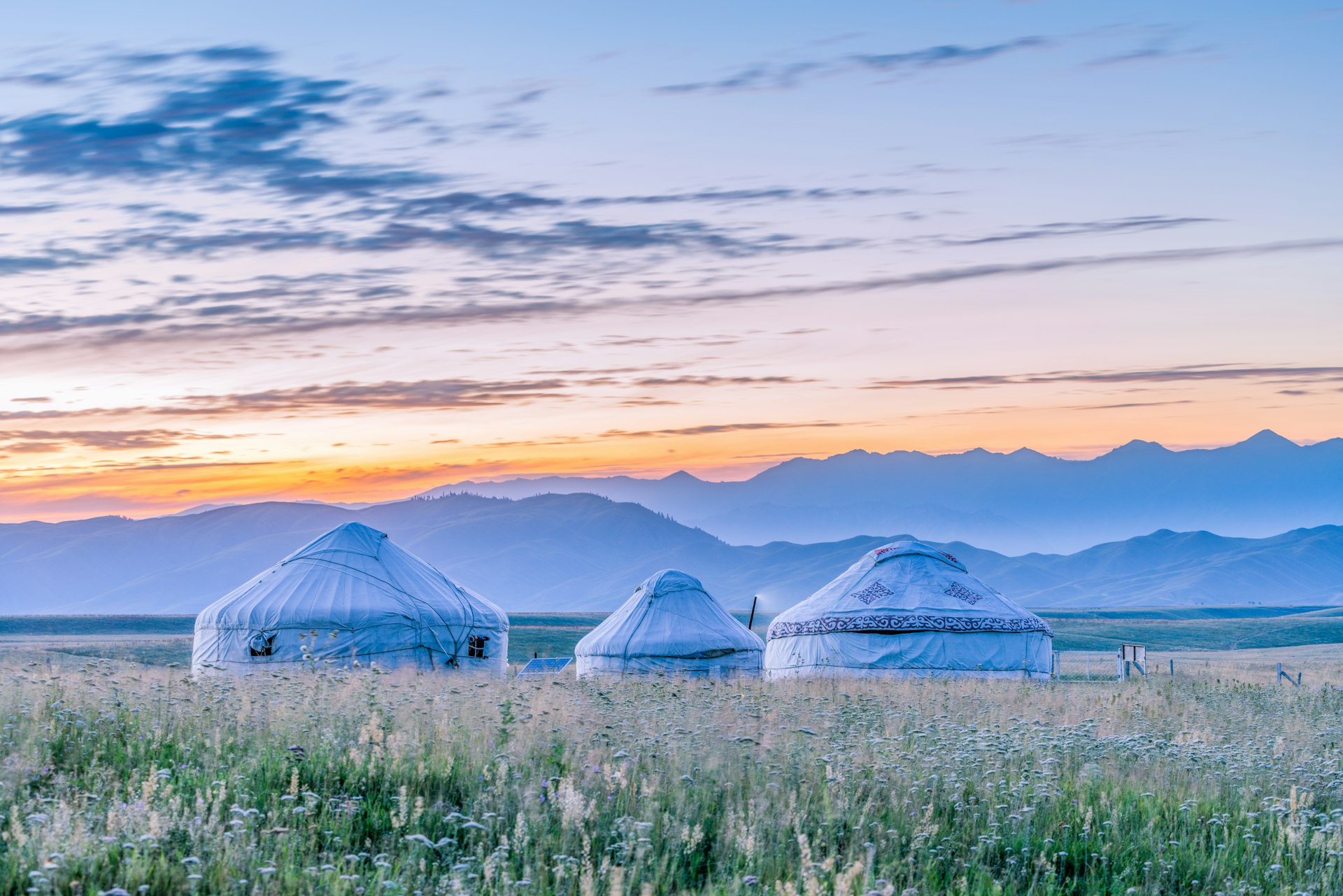
Come from April to May or September to October for eagle hunting, budget travel and fewer crowds
We’re big fans of traveling in the shoulder season, not just for the chance to experience Mongolia through a less touristy lens, but also for a more relaxed pace and lower prices. Sure, the weather can be a mixed bag (come prepared for four seasons in one hour) but in a land famed for 250 sunny days a year, you’ll still get plenty of clear weather.
Around April and May, Mongolia begins to thaw out from its winter deep freeze, as spring wildflowers bloom to color landscapes that turn progressively greener as time progresses. Many ger camps open up for the season, allowing you to enjoy Mongolia’s far-flung, empty wildernesses before tourists sweep in for Nadaam.
Late May is a good time to visit the Gobi Desert , when the storms and vicious airborne sand have subsided. You’ll also avoid the desert’s notorious freezing nighttime temperatures and scorching daytime heat. September sneaks in some warmer weather, but by October, winter is very much on the march.
But this is the time to visit if you’re here for one of Mongolia’s spectacular eagle festivals. Held in the first weekend of October, the Eagle Festival in Bayan-Ölgii is the big-ticket attraction, and you’ll be treated to dazzling displays of falconry by master Kazak eagle hunters, putting their prized birds of prey to the test in a number of competitions, from fashion parades to catching wild prey.
In late September there’s the more low-key Altai Kazakh Eagle Festival, an equally exciting event held over two days, combining eagle hunting demonstrations with horse and camel racing.
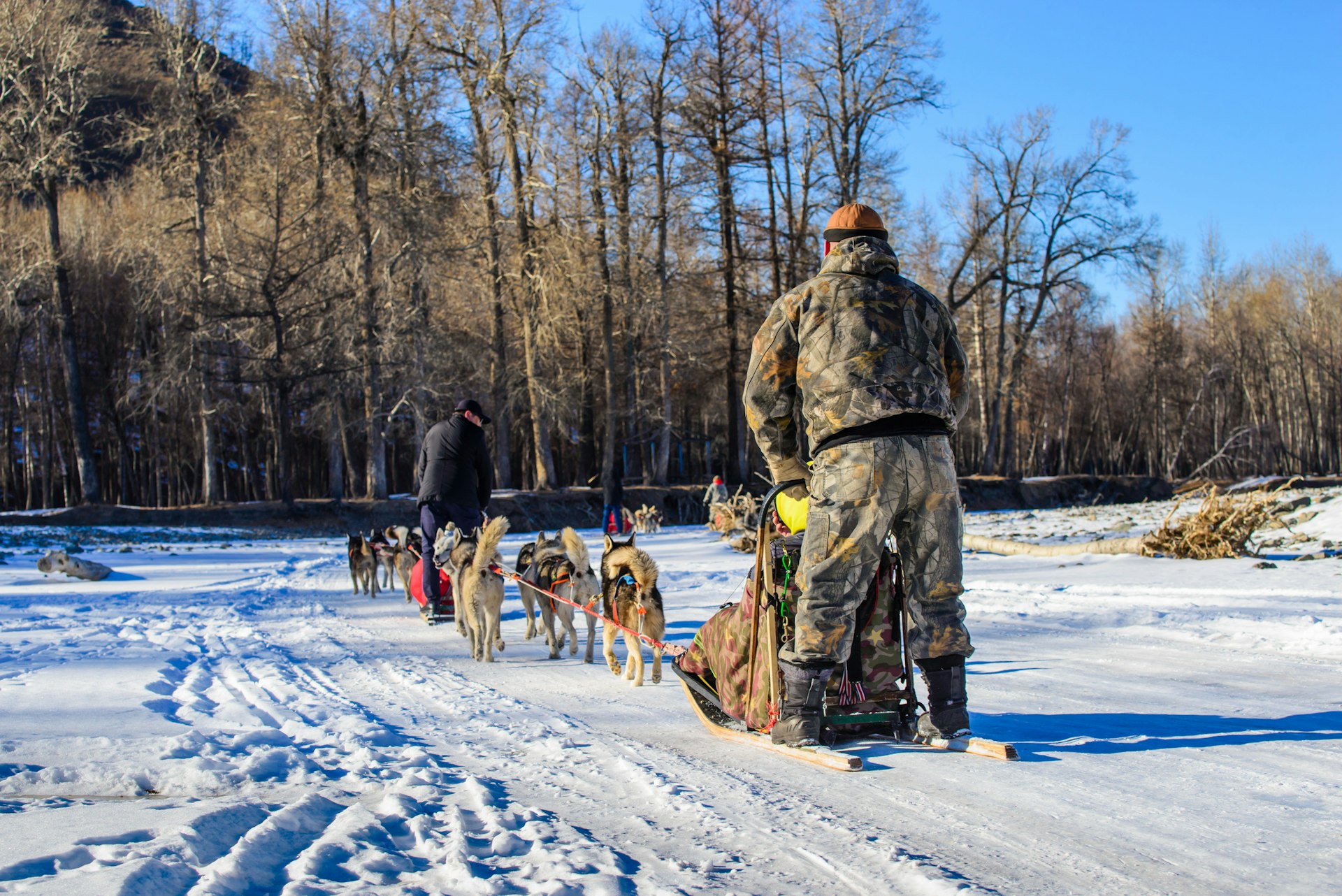
November to March brings winter festivals, snow sports and extreme cold
November is when things start to get really cold! But don’t let that stop you; instead our advice is to wrap up warm and dive in. There are plenty of highlights to take in, including cultural festivals and snow sports, and winter can bring price reductions for flights and accommodation, but not massive savings.
February is particularly good for traditional winter events, with both the Khatgal Ice Festival and Ulaanbaatar Winter Festival showcasing unique sports such as ice ankle-bone shooting (a fascinating game of skill played with animal bones), ice archery, and horse sledding competitions, alongside more familiar winter activities such as ice skating, ice fishing and dog sledding.
Tsagaan Sar, the Lunar New Year, is also in February, when you may be lucky enough to celebrate the festivities with local families. There’s also the Bulgan Camel Festival, the Gobi’s biggest event, when crowds flock to Ömnögovi for camel polo, camel races, camel shearing and other activities involving these prized beasts of burden.
November to March is also the time to get involved in snow sports, including downhill skiing at Ulaanbaatar’s Sky Resort . Dog sledding tours can easily be arranged, along with long-distance skating on Khövsgöl Nuur lake.
One word of warning, however. December and January can bring not only bitterly cold temperatures to Ulaanbaatar , but also horrendous pollution. If there are any months to avoid, we would single out January, unless you’re particularly hardy.
Explore related stories
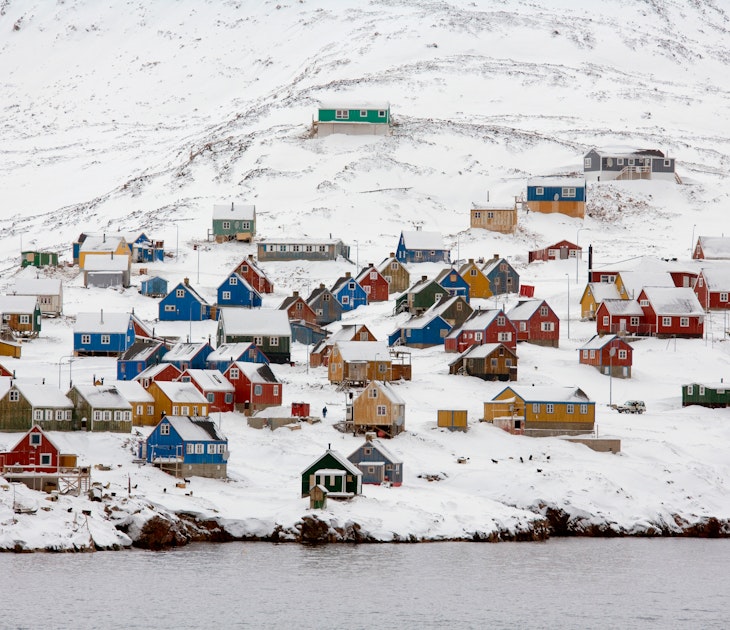
Wildlife & Nature
Dec 1, 2023 • 6 min read
How about chilling out – truly – on your next big trip? These are the coldest, most beautiful places to visit in the world.

Aug 30, 2023 • 9 min read
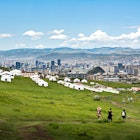
Aug 25, 2023 • 7 min read
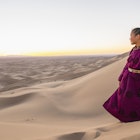
Aug 20, 2023 • 7 min read

Sep 30, 2023 • 6 min read

Sep 28, 2023 • 4 min read
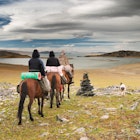
Aug 12, 2023 • 6 min read

Oct 24, 2021 • 4 min read

Oct 21, 2019 • 4 min read

Sep 23, 2019 • 7 min read

- Tour packages
- Tailor Made
- Trip Calendar
- How to get to Mongolia
- Book train ticket
- Book cheap air ticket to Mongolia
- Best time to travel
- Tourist Sim card
- Mongolia Visa information
- What to pack
- Travel Insurance
- List of Mongolian Embassy
- Company profile
- Clients Feedback
- Job Vacancy
- Terms & conditions
- Privacy Policy
- Practical Information
- Destinations
- Things To Do
- Culture, Art & History
- Nature & Geography
- People & Society

- Practical information
- Gobi Desert
- Western Mongolia
- Eastern Mongolia
- Central Mongolia
- Northern Mongolia
- Ulaanbaatar
- Around Ulaanbaatar
- Weather Forecast
How it began

Latest blogs
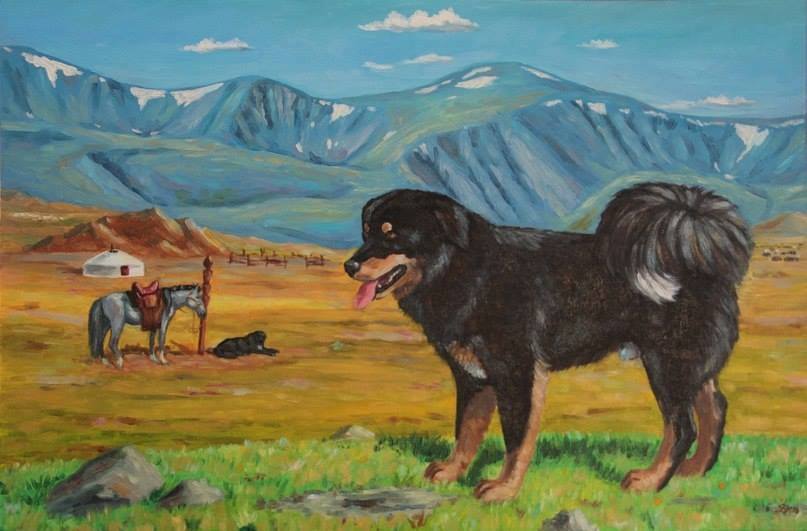
Why Travel to Mongolia?

Despite the presence of such a modern capital city, the country has not forgotten its ties to the past.
30% of the people here are nomads, their daily lives a living example of the fascinating heritage and rich culture of the land.
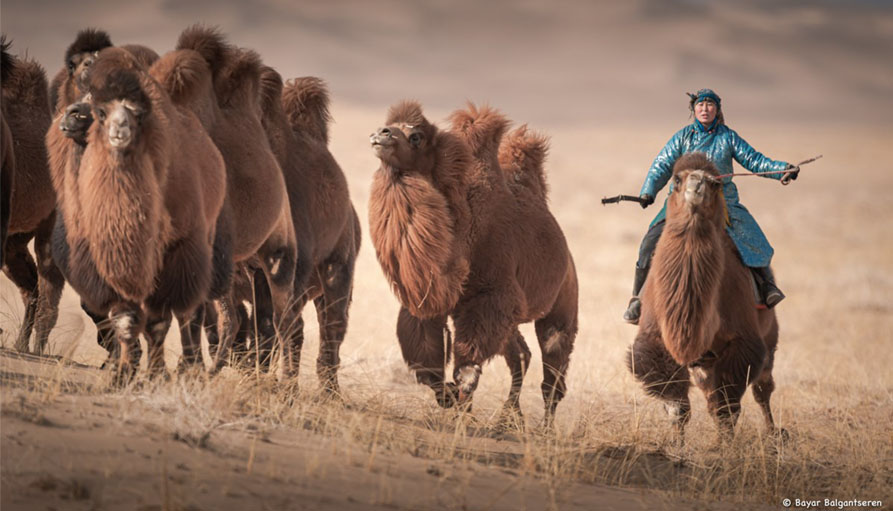
A Mongolian Herder
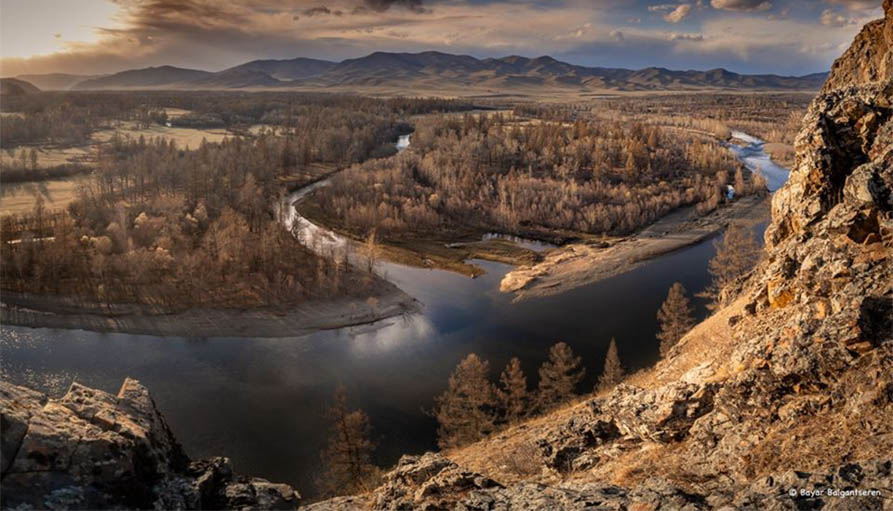
Tuul river, Terelj Area
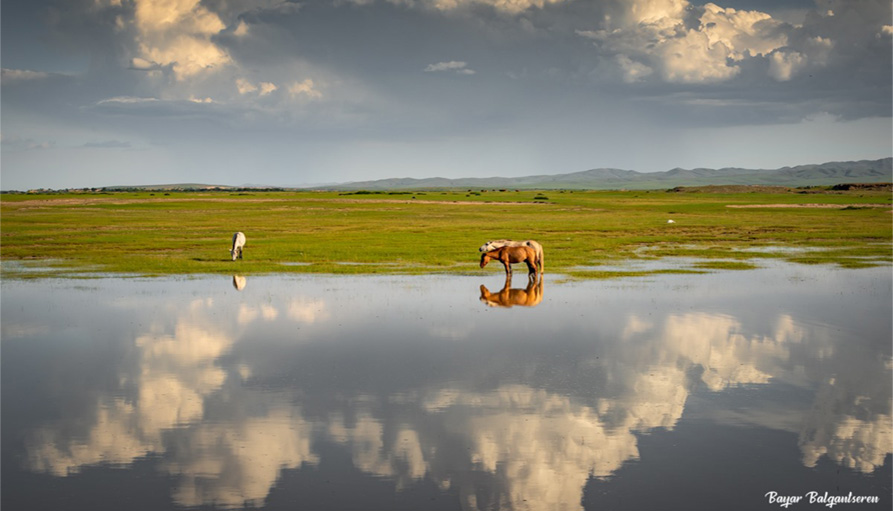
Tuv Province
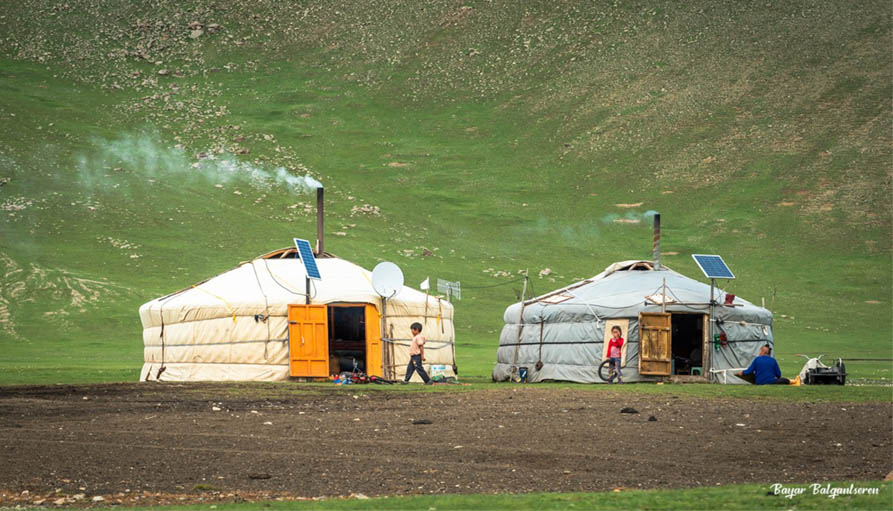
A nomad family

Introduction to Nomadic Life Tour (8 days)
Need help planning your vacation.

Related Blogs

Most Popular
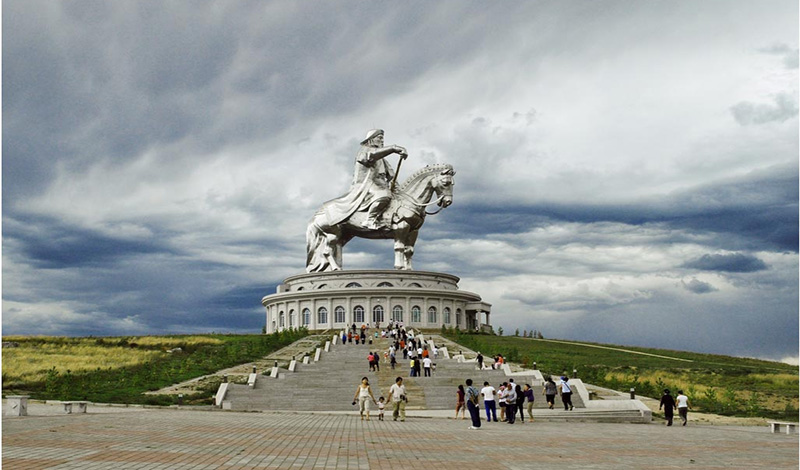
Since 2004, we have been helping people the world over to enjoy unforgettable adventures to our homeland, and we do it all with expertise and passion.
- Best seller tours
- Tailor made tour
- A day tours
- Join in tours
- Private tours
- Best Time to Travel
- Mongolian Visa Information
- Hotel booking
- Flight ticket booking
- Train ticket booking

- Skip to primary navigation
- Skip to main content
- Skip to primary sidebar
Login Signup

Moving to Hong Kong and not sure where to start? Expat Living is the essential lifestyle guide to living in Hong Kong.
Login Pelcro Shop
10 reasons to visit mongolia.
6 August, 2019 by Expat Living 3 Min Read
https://expatliving.hk/10-reasons-visit-mongolia/
Put simply, there is nowhere else on earth like Mongolia. Among the five least most populated countries on the planet, it provides the ultimate escape from the hustle and bustle of Hong Kong. We asked our friends at Lightfoot Travel to give us a few compelling reasons for adding Mongolia to our travel plans.
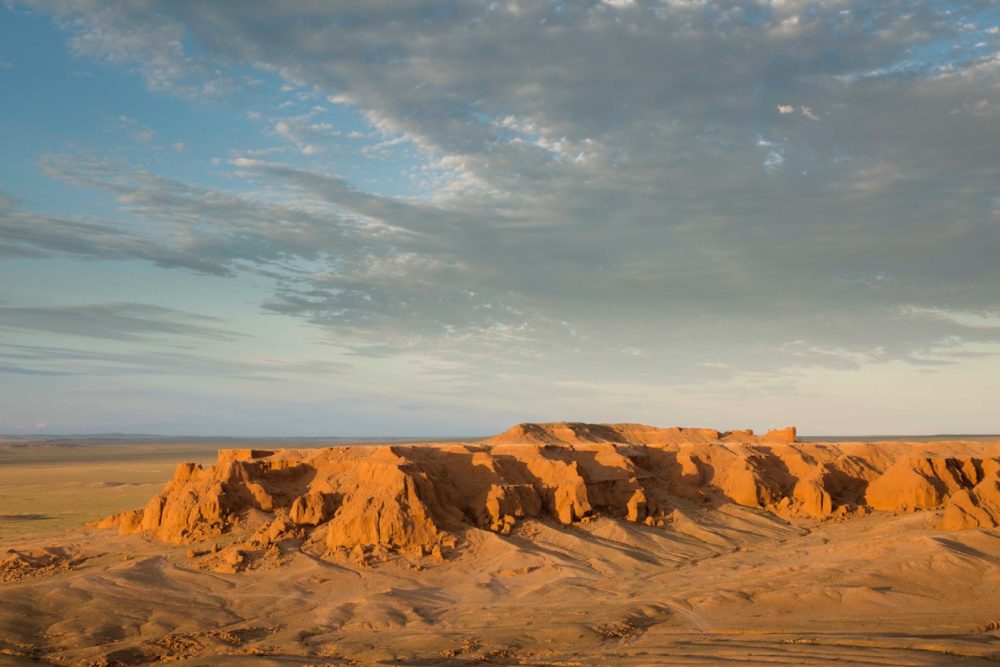
#1 Serenity and landscapes
Mongolia is renowned for its unforgiving yet stunningly beautiful landscapes. With dramatic mountains, vast grassy meadows, towering sand dunes and a startling silence in the open air, you can understand why Mongolians call their homeland the “land of the blue sky”. In the evening, as the sun bows down to the moon, the night sky reveals an incredible display of stars that seem close enough to touch!
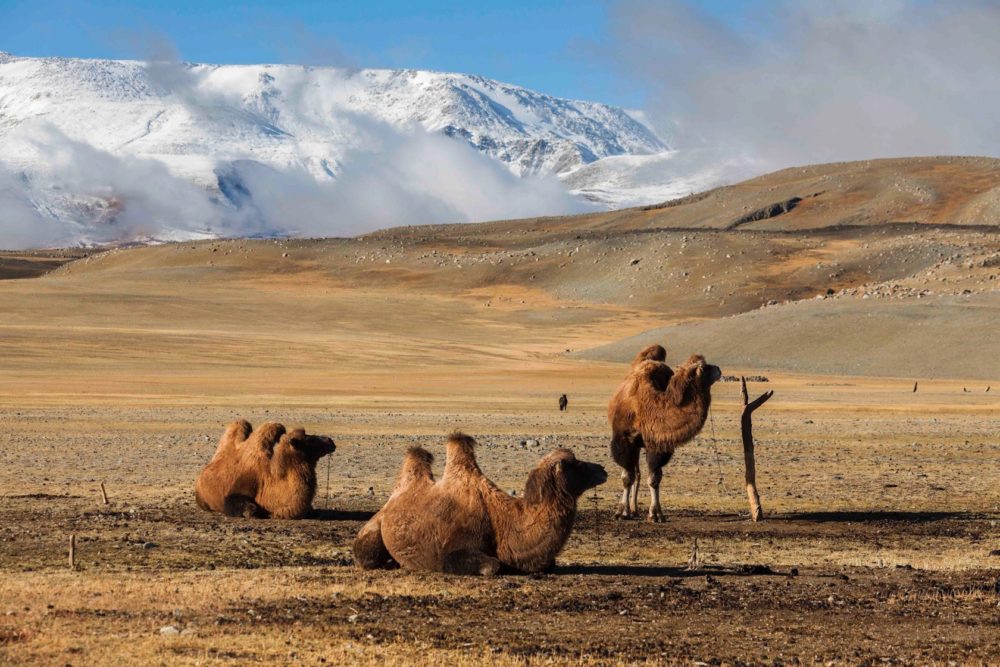
#2 Wildlife
With reindeer roaming the north, golden eagles soaring in the west and camels wandering the deserts of the south, travellers often pick which regions to visit based on the wildlife they hope to encounter. The mountains of the southern Gobi are also home to the rare and incredibly beautiful snow leopard. Intrepid travellers can trek through their natural habitat in the hopes of spotting these elusive creatures.
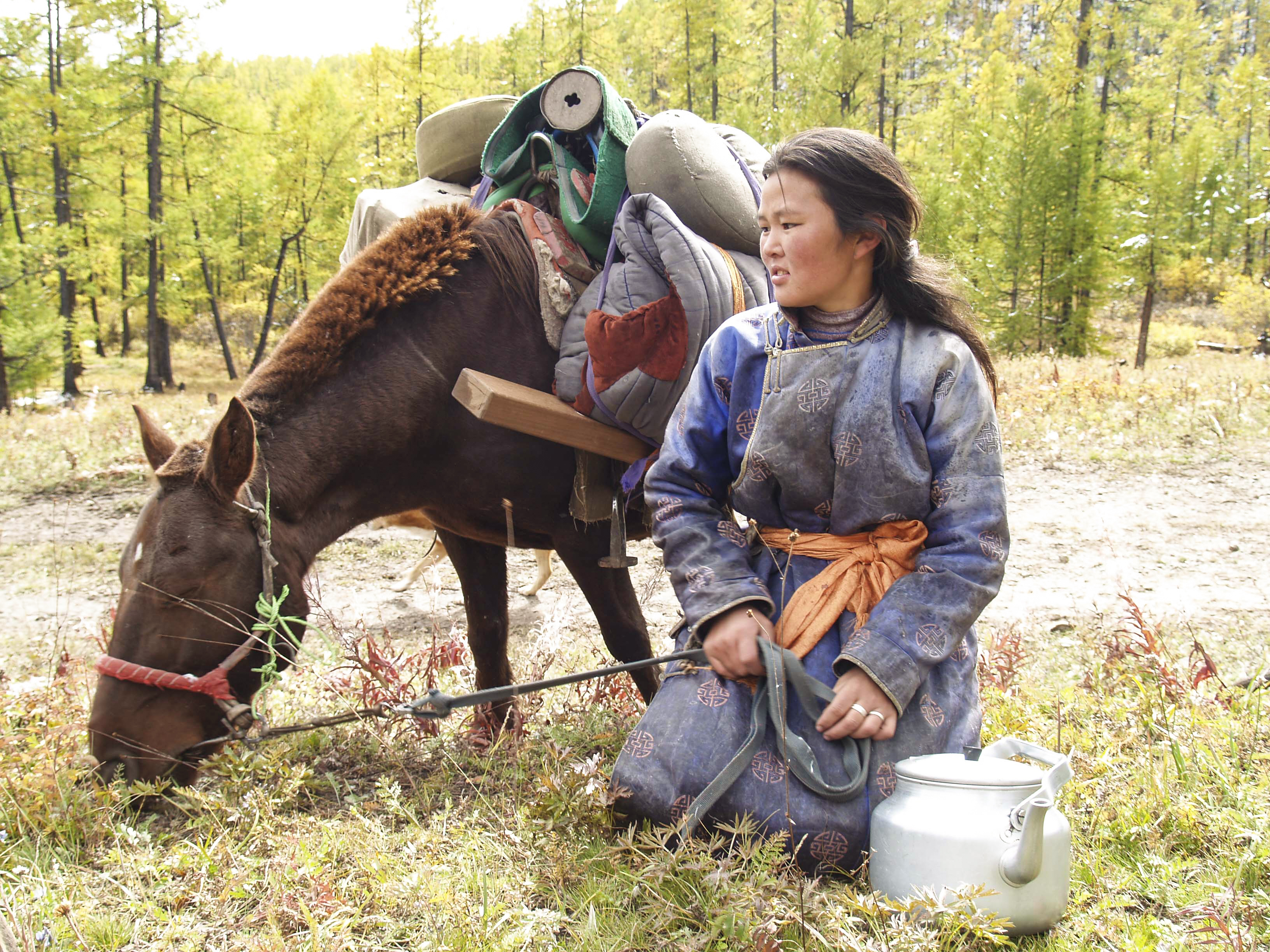
#3 Nomadic culture
While half of the Mongolian population lives in the capital, the rest lead a peaceful nomadic life, herding cattle and wildlife as the seasons change. A truly once-in-a-lifetime experience is to live alongside nomad families, getting up with them in the morning to milk the cows, collect water and help cook the day’s meals. It’s a humbling and enlightening experience that takes you back to what life is really about.
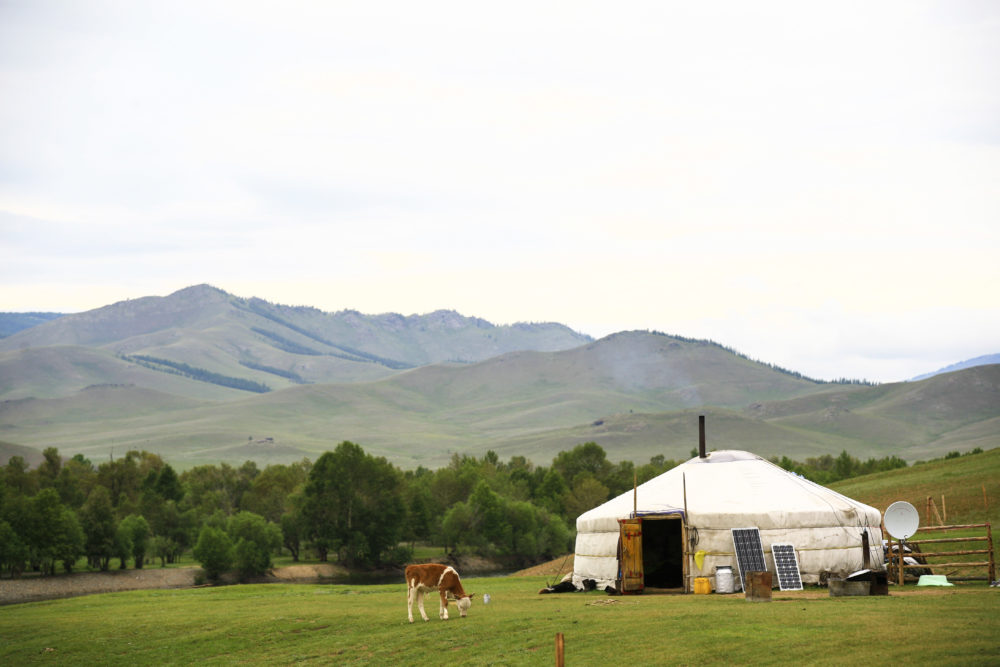
#4 Hospitality
Despite living simple lives, Mongolians are renowned for their hospitality. If nomads have a spare ger – a tent made from felt and wood – they will stay in it while hosting visitors in the main ger. They are incredibly welcoming and very proud people, and are always wanting to show off their wonderful culture.
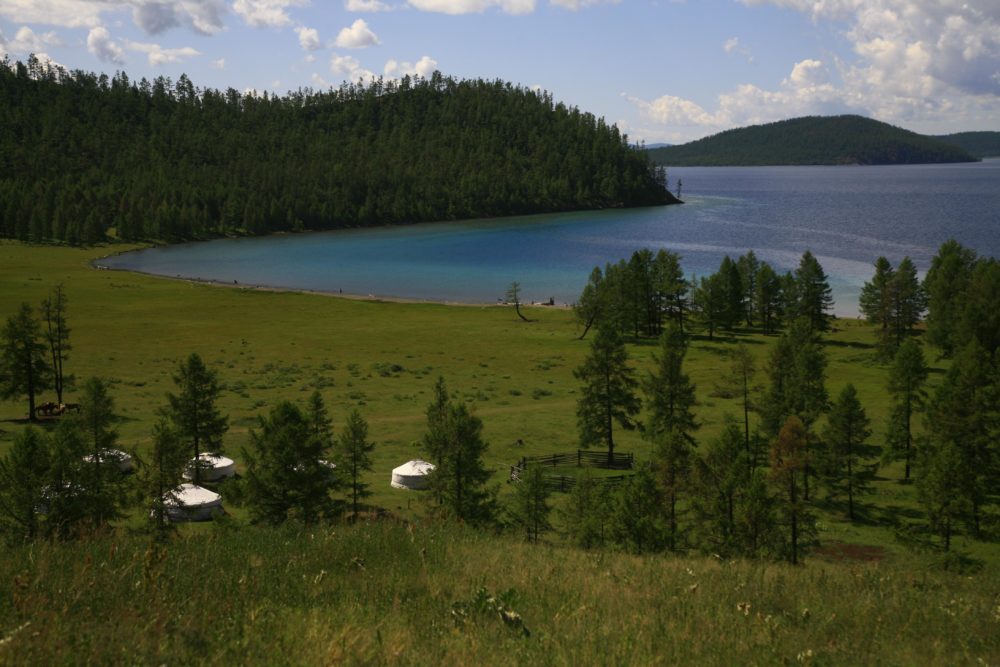
#5 No other tourists
With a population of just under three million – half of them in Ulaanbaatar – seeing other travellers (or even another person) when out in the wilderness is unlikely. Still, tourism in Mongolia is on the rise, with increased direct flights from Western countries, so be sure to visit soon to have this empty and untouched land all to yourself.
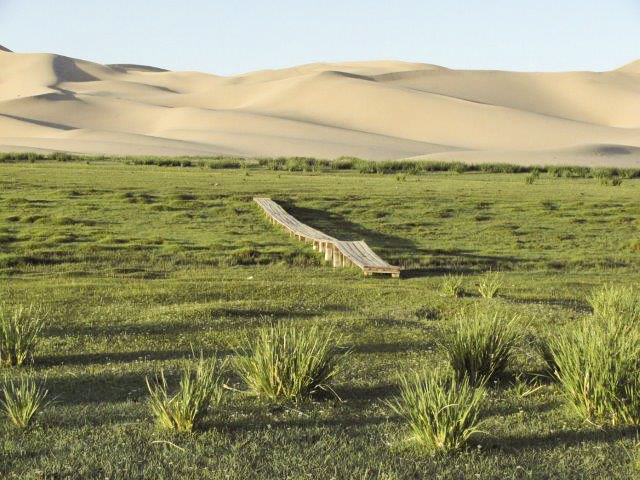
#6 The Gobi Desert
Seeing the world’s fourth-largest desert up close is reason itself to visit Mongolia. From wild roaming camels to the views at the top of the giant “singing sand dunes” of Khongoryn Els, there’s a lot to take in. Be sure to visit the Flaming Cliffs where dinosaur fossils have been found, and make sure you fit in a camel ride for an unforgettable desert experience.
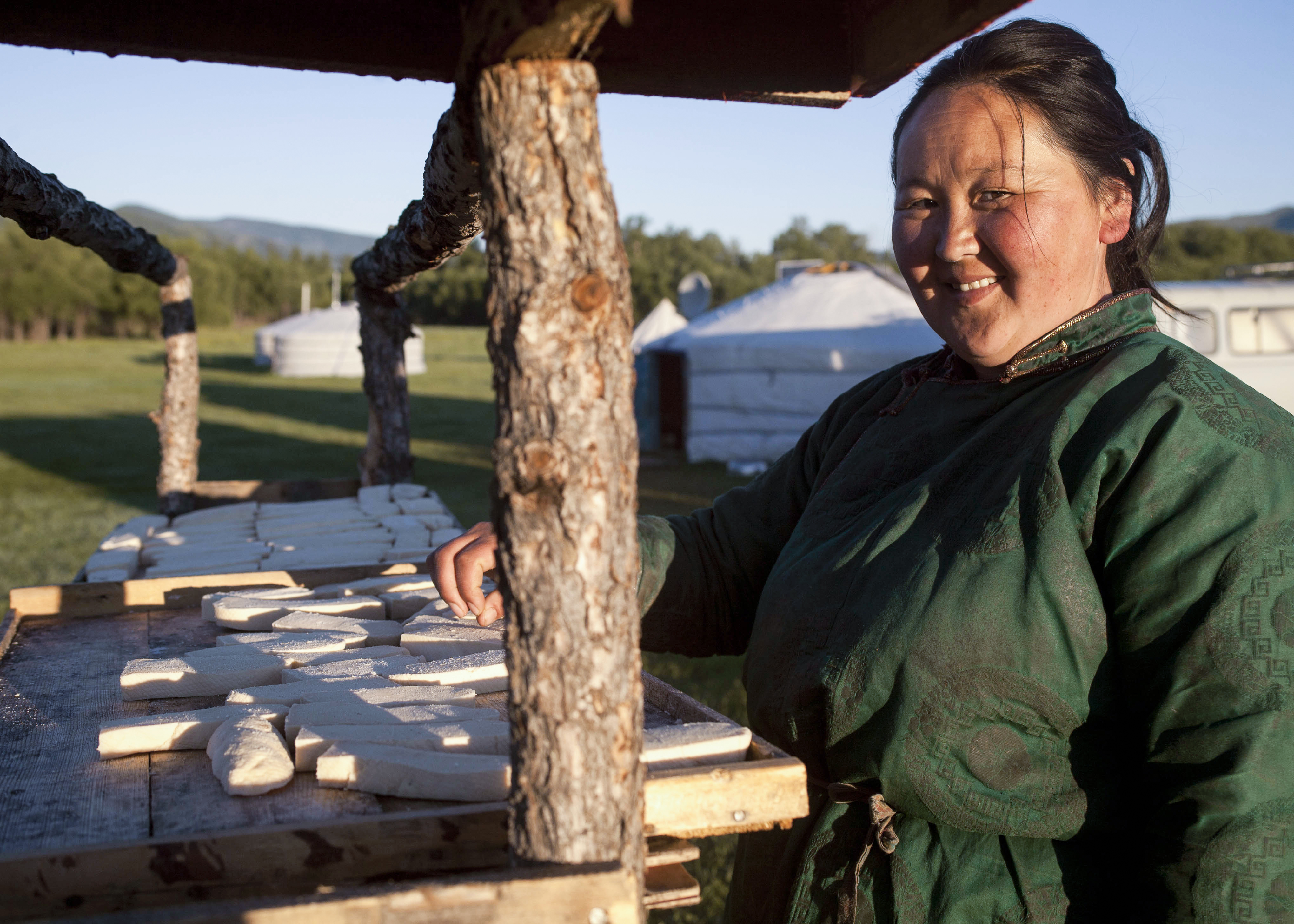
#7 Unique cuisine
While international dishes are available in Ulaanbaatar, the rural nomads rely on their livestock for meat and dairy produce. This makes up the bulk of their diet and helps them survive the harsh winters. A fun way to spend an afternoon is learning to make Mongolian dumplings with a nomad family; vegetarians needn’t worry as alternative dishes can be arranged.
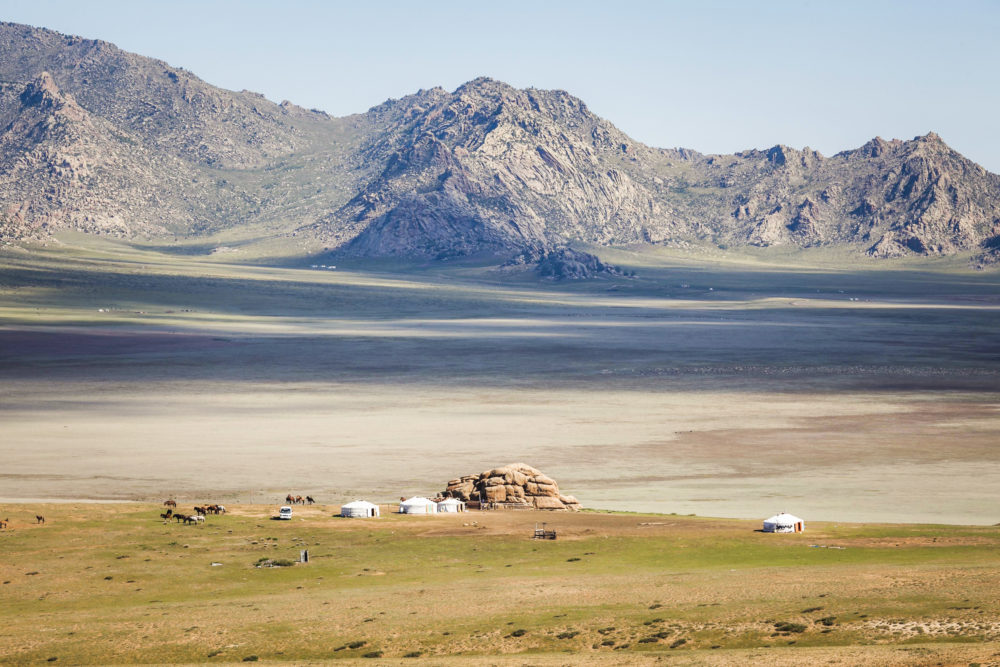
#8 Mongolian history
Genghis Khan, or Chinggis Khan to the locals, is known to most of the world as a ruthless warrior who founded an empire stretching from Asia to Eastern Europe. In Mongolia, though, he is viewed as the father of the nation. His name adorns many businesses in Ulaanbaatar. There is even a 40m-high silver statue of him riding his horse close to the capital. Travellers can climb all the way up the horse’s neck for views across the great Khan’s land.
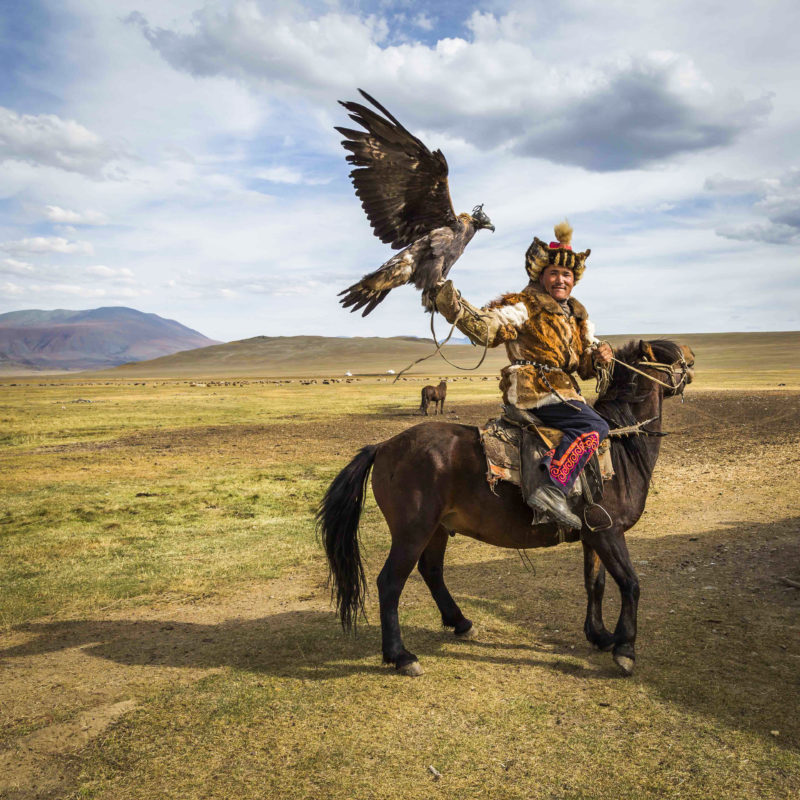
#9 Eagle hunters
Selecting chicks straight from the nest, the Kazakh people of western Mongolia, known locally as Berkutchi, train the majestic Golden Eagle to hunt prey as large as wolves. Visit the far western Altai Mountains in September and October to witness the incredible Kazakh Eagle Festival. It has been a tradition for centuries.
#10 Naadam Festival
The wildly popular Naadam Festival celebrates important and traditional aspects of being “manly” in Mongolia. The festival takes place all over the country in July, with the largest gathering in the capital. Men compete in three sports – horse-riding, wrestling and archery. Even the children get involved in the horse racing across a 20km course.
For bookings or to speak to an expert, call Lightfoot Travel at 2815 0068 or visit lightfoottravel.com
Read more: Must-see temples and places of worship in Hong Kong
Subscribe now so you never miss an issue!
Get the latest events, stories and special offers sent to your inbox.
By signing up, you'll receive our bimonthly newsletters and offers, which you can unsubscribe to anytime.
You May Also Like
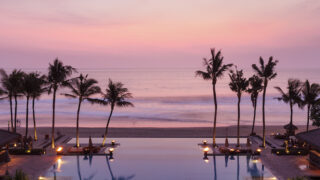
Luxury escapes to Bali, Indonesia

Work, rest and play at Shangri-La Singapore

Staying in a serviced apartment in Wan Chai
A Guide To Traveling From China To Mongolia
- Last updated May 09, 2024
- Difficulty Advanced
- Category Travel

China and Mongolia, two neighboring countries rich in history, culture, and stunning landscapes, hold endless possibilities for an unforgettable travel experience. From the bustling cities of Beijing and Ulaanbaatar to the vast grasslands of Inner Mongolia and the Gobi Desert, this comprehensive guide will take you on a journey through time and space. Whether you're a seasoned traveler or embarking on your first international trip, join us as we navigate the intricate paths that connect these two intriguing destinations, offering invaluable tips, hidden gems, and practical advice along the way. Get ready to embark on an adventure like no other as we unravel the secrets of traversing from China to Mongolia and uncover the wonders that await you.
What You'll Learn
Traveling by train from china to mongolia, crossing the china-mongolia border by road, flying from china to mongolia: air travel options, planning an overland journey from china to mongolia.

If you're looking for an exciting and adventurous way to travel from China to Mongolia, taking a train is a great option. Not only will you have the opportunity to see the beautiful landscapes, but you'll also have a chance to experience the local culture and meet fellow travelers along the way. Here's a step-by-step guide on how to travel by train from China to Mongolia.
Step 1: Choose your starting point in China
There are several cities in China where you can catch a train to Mongolia. The most popular choices are Beijing and Hohhot. Beijing is a great starting point as it has excellent train connections to other cities in China and is easily accessible for international travelers. Hohhot, on the other hand, is closer to the Mongolia border and can be a more convenient starting point if you're coming from the northern part of China.
Step 2: Check the train schedules and book your ticket
Once you've decided on your starting point, you'll need to check the train schedules and book your ticket. You can do this online or at the train station in China. It's recommended to book your ticket in advance, especially if you're traveling during peak season. Trains to Mongolia can get crowded, and you don't want to risk not getting a seat.
Step 3: Prepare your documents and visa
Before traveling to Mongolia, make sure you have all the necessary documents and visas. Most travelers will need a valid passport and a Mongolian visa. You can apply for a Mongolian visa at the Mongolian embassy or consulate in your home country or in China. It's essential to check the visa requirements beforehand and allow enough time for the application process.
Step 4: Pack your essentials
When packing for your train journey, consider the length of the trip and the season you're traveling in. Make sure to bring comfortable clothes, as you'll be spending a considerable amount of time on the train. It's also a good idea to bring snacks, water, toiletries, a power bank, and entertainment like books or movies to keep yourself occupied during the journey.
Step 5: Arrive at the train station early
On the day of your departure, arrive at the train station early to avoid any last-minute hassles. Depending on the station and the specific train you're taking, you may need to go through security checks and have your ticket and documents verified. It's always better to be early and have some extra time than to rush and risk missing your train.
Step 6: Enjoy the journey
Once on the train, sit back, relax, and enjoy the journey. Trains from China to Mongolia are usually overnight sleeper trains, so you'll have a bed to rest and sleep on during the trip. The train will make several stops along the way, giving you a chance to stretch your legs and buy some local snacks or souvenirs. Take this time to soak in the beautiful scenery and chat with fellow travelers.
Step 7: Arrival in Mongolia
After a long and exciting train journey, you'll finally arrive in Mongolia. The train will usually stop at Ulaanbaatar, the capital city of Mongolia. From there, you can explore other parts of Mongolia or continue your journey to other countries in the region.
Top Destinations to Explore in Africa with an Angolan Visa
You may want to see also
If you're planning a trip to Mongolia from China, crossing the border by road can be an exciting and adventurous option. The journey offers stunning landscapes and gives you the opportunity to explore remote areas along the way. Here's a step-by-step guide on how to travel to Mongolia from China by road.
- Choose your route: There are several border crossings between China and Mongolia, but the most popular one is the Erenhot-Zamyn-Uud crossing. This route connects the Chinese town of Erenhot with the Mongolian town of Zamyn-Uud and is well-serviced by transportation options.
- Get the necessary permits and visas: Before embarking on your journey, make sure you have all the required travel documents. Chinese citizens need a valid passport and a Mongolian visa, which can be obtained in advance from the Mongolian embassy or consulate in China. Non-Chinese citizens may also need a Chinese visa, depending on their nationality. Check the visa requirements well in advance and allow enough time for processing.
- Plan your transportation: There are various modes of transportation available for the journey. Buses and trains operate between Erenhot and Zamyn-Uud, and the trip takes around 6-8 hours. If you prefer more flexibility, you can also hire a private car or join a guided tour. Renting a car is another option, but be aware that driving in rural Mongolia can be challenging due to the rugged terrain and lack of infrastructure.
- Prepare for the border crossing: The border crossing can be a time-consuming process, so it's important to be well-prepared. Make sure you have all the necessary documents with you, including your passport, visa, and any required permits. Be prepared for potential language barriers, as English may not be widely spoken at the border. Having a written itinerary and address details can help communicate your travel plans.
- Complete customs and immigration procedures: When you arrive at the border, you'll need to go through customs and immigration procedures on both the Chinese and Mongolian sides. Fill out the relevant forms and follow the instructions of the border officials. Remember to declare any items that need to be declared, such as large sums of money or restricted goods.
- Exchange currency: It's a good idea to exchange your Chinese yuan for Mongolian tögrög at the border. While some businesses in Mongolia may accept Chinese yuan, having the local currency will make transactions easier. Currency exchange services are available at the border crossing.
- Arrange transportation in Mongolia: Once you have crossed the border, you'll need to arrange transportation to your destination in Mongolia. There are taxis and buses available at Zamyn-Uud, which can take you to nearby cities like Ulaanbaatar. If you have pre-booked accommodation, check if they offer transportation services from the border.
- Enjoy your journey in Mongolia: With the border crossing behind you, it's time to explore the vast and beautiful land of Mongolia. Whether you're heading to the bustling capital city or venturing into the remote Mongolian countryside, be prepared for an adventure of a lifetime.
Traveling from China to Mongolia by road is a unique way to experience the beauty and diversity of these two countries. By following these steps and planning ahead, you'll be well-prepared for your journey and ready to make unforgettable memories in Mongolia.
Exploring the Beautiful Bahamas: Can You Travel with a US Visa?
Are you planning a trip to Mongolia from China? Flying is the easiest and most convenient way to travel between these two countries. In this article, we will explore the air travel options available and provide you with all the necessary details to make your journey smooth and hassle-free.
Find the Best Airports to Fly Out Of:
- Beijing Capital International Airport (PEK): This is the largest and busiest airport in China, offering numerous international flights, including those to Mongolia.
- Shanghai Pudong International Airport (PVG): Another major airport in China with a wide range of international flights, including flights to Mongolia.
- Hohhot Baita International Airport (HET): Located in Inner Mongolia, Hohhot Airport offers direct flights to Mongolia, saving you time and providing a more convenient travel option if you are already in the region.
Choose the Right Airline:
- Air China: The national carrier of China, Air China offers regular flights between Beijing and Ulaanbaatar, the capital city of Mongolia.
- MIAT Mongolian Airlines: This is the national airline of Mongolia and offers direct flights between Ulaanbaatar and various cities in China, including Beijing and Shanghai.
- Hainan Airlines: Another popular choice, Hainan Airlines operates regular flights between Beijing and Ulaanbaatar.
Check Flight Schedules and Availability:
Once you have decided on the airports and airlines, check their flight schedules and availability. It is recommended to book your tickets in advance, especially during peak travel seasons, to secure the best fares and ensure a smooth journey.
Complete the Necessary Documentation:
- Ensure that you have a valid passport with at least six months validity beyond your intended departure date. Check the visa requirements for entering Mongolia, as they vary based on your nationality. Apply for a visa if necessary.
- Fill out any required travel forms and prepare any additional documents that may be needed for immigration and customs clearance.
Pack Appropriately:
- Mongolia experiences extreme weather conditions, so pack accordingly. Don't forget to bring warm clothing if you are visiting during the colder months.
- Check the baggage allowance and restrictions of the airline you are flying with to avoid any inconvenience or additional charges at the airport.
Arrive at the Airport Early:
Make sure to arrive at the airport well in advance. International flights usually require passengers to check-in at least two to three hours before the scheduled departure time.
Enjoy Your Flight:
Sit back, relax, and enjoy your flight to Mongolia! Take in the beautiful views as you fly over the vast landscapes, and get ready to explore this unique and stunning country.
Flying from China to Mongolia is a convenient and time-saving option for travelers. By following these steps and planning ahead, you can ensure a smooth and enjoyable journey to this fascinating destination. Safe travels!
Understanding Australia's Travel Visa Requirements
If you're an adventurous traveler looking to explore the stunning landscapes and vibrant cultures of China and Mongolia, an overland journey from China to Mongolia is the perfect way to experience both countries. This guide will provide you with all the information you need to plan your trip.
Choosing the Route:
There are several routes you can take to travel from China to Mongolia, but one of the most popular routes is through the Gobi Desert. This route allows you to experience the vastness of the desert and enjoy the natural beauty along the way. Alternatively, you can also choose to travel through the grasslands of Inner Mongolia, which offer a different kind of scenery and cultural experience.
Getting to the Starting Point:
To begin your overland journey, you'll first need to reach the starting point, which is usually Ulanqab in Inner Mongolia or Hohhot, the capital of Inner Mongolia. You can fly into either of these cities from major Chinese cities like Beijing or Shanghai. Once you arrive, you can either take a bus or hire a private car to reach the border town of Ereenhot, which is the gateway to Mongolia.
Crossing the Border:
Before crossing the border, make sure you have all the necessary travel documents, including your passport and visa. You'll need a valid Mongolian visa to enter Mongolia, which you can obtain in advance from the Mongolian Embassy or Consulate in your home country. Once you reach the border, go through the immigration procedures and get your passport stamped.
Transportation Options:
Once you're in Mongolia, you'll need to decide on your mode of transportation. If you're an experienced driver and adventurous, you can rent a 4x4 vehicle and drive yourself around Mongolia. However, keep in mind that the roads in Mongolia can be rough and challenging, so it's essential to have some off-road driving experience.
If you prefer a more comfortable and hassle-free option, you can hire a local driver or join a guided tour. Hiring a driver will allow you to sit back and relax while someone else takes care of the driving and navigation. With a guided tour, you'll have the added advantage of having a knowledgeable guide who can provide insights into the local culture and history.
Exploring Mongolia:
Mongolia offers a wealth of attractions and activities for travelers. Some must-visit destinations include the capital city of Ulaanbaatar, the ancient capital of Karakorum, and the stunning scenery of the Terelj National Park. You can also experience traditional Mongolian nomadic culture by staying with local families in ger camps or witnessing the Naadam festival, which showcases Mongolian sports and traditions.
Returning to China:
After exploring Mongolia, you have the option to return to China by crossing the border at Zamyn Uud or Dashrild, depending on your preferred route. Similar to the border crossing into Mongolia, make sure you have all the necessary documents for re-entry into China.
Planning Essentials:
Before starting your overland journey, it's vital to prepare and pack accordingly. Make sure to carry a sufficient amount of cash for your trip, as ATMs may not be readily available in remote areas of Mongolia. Additionally, stock up on essential supplies like food, water, and camping equipment, especially if you plan on camping in remote areas.
It's also essential to research the weather conditions and pack appropriate clothing for the season. Mongolia experiences extreme temperatures, so dress in layers and be prepared for hot days and cold nights.
In conclusion, planning an overland journey from China to Mongolia requires careful research and preparation. By choosing the right route, organizing transportation, and exploring the highlights of both countries, you can create a memorable and rewarding travel experience. Enjoy your adventure!
Traveling on a 485 Visa: Everything You Need to Know
Frequently asked questions.
The most common way to travel from China to Mongolia is by train. You can take a train from Beijing to Ulaanbaatar, the capital of Mongolia. There are also buses and flights available, but the train is the most popular option.
The train journey from Beijing to Ulaanbaatar takes approximately 30 hours. The exact travel time may vary depending on the train schedule and any stops along the way.
Yes, you will need a visa to travel from China to Mongolia. Most nationalities can obtain a visa on arrival at the border or apply for one in advance at a Mongolian embassy or consulate. It is recommended to check the latest visa requirements and regulations before your trip.
When crossing the China-Mongolia border, you will need to go through customs and immigration. You will be required to present your passport, visa, and complete any necessary customs declarations. It is advisable to check the latest entry requirements and regulations before your trip.
Once you arrive in Ulaanbaatar, you can travel around Mongolia by various means of transportation, including trains, buses, taxis, and rental cars. It is also possible to arrange guided tours or hire a driver for more remote areas. The availability of transportation options may vary depending on the location and time of year.

- Majid Rana Author

- Annie Rangel Author Editor Reviewer
It is awesome. Thank you for your feedback!
We are sorry. Plesae let us know what went wrong?
We will update our content. Thank you for your feedback!
Leave a comment
Travel photos, related posts.

Exploring the Best of Two Worlds: London or Dublin, Which City Should You Choose for Your Next Adventure?
- May 10, 2024

Paying for Your Southwest Vacations: Can You Use Travel Vouchers?
- May 14, 2024

Understanding the Basics of a Visa for International Travel
- May 07, 2024

The Most Affordable Time to Visit Florida: Uncovering the Cheapest Month for Travel
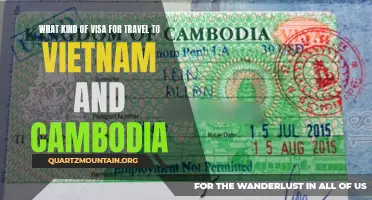
Visa Options for Traveling to Vietnam and Cambodia
- May 08, 2024
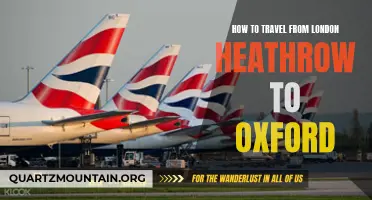
The Complete Guide to Traveling from London Heathrow to Oxford
- May 09, 2024

Why Mongolia Is One Of The World's Most Adventurous Off-Road Paradises
Quick links, what to know about visiting mongolia, what driving off-road is like in mongolia, take a guided off-roading tour around mongolia.
Mongolia is one of the most adventurous countries to visit . It is a developing and traditional country holding onto its traditional way of life. It is a country where a substantial percentage of its population remains nomadic or semi-nomadic. Outside of the capital city of Ulaanbaatar, there are few developed roads - most people just drive across off-roading tracks that stretch across the vast and sweeping steppe.
Mongolia only has very few tar-sealed roads. To explore the country, drivers need to have a great sense of direction and superb off-roading skills. Take off-roading to a new level and go horse trekking across the steppe for an extended tour .
Mongolia is a country where visitors can see a way of life that has persisted for thousands of years (although everywhere there are modern influences such as mobile phones, Instagram, and the like). It is not uncommon to see shepherds and nomads out on their horses herding their livestock just as their ancestors did while scrolling through their Instagram feeds.
- Population: 3.4 Million
- Size: 603,909 square miles
- Visa Policy: Visa Free For 30 Days (Most Western Passports)
Mongolia is a sparsely inhabited country with massive deserts, sweeping steppe, towering mountains, and the southern reaches of the massive taiga forests.
Related: Your Guide To The Countries Of Central Asia & Which To Visit
To explore Mongolia, traffic must negotiate undeveloped steppe, ford rivers and streams, cross muddy patches, and be far from any help. This would be a very difficult drive for most Western drivers and would require well-maintained off-roading vehicles. Inexplicably in Mongolia, most people buy a second-hand Toyota Prius from Japan and proceed to drive that through the mud and across rivers without getting stuck (consequently, many of the cars in Mongolia have the steering wheels on the wrong side as Japan drives on the left).
It is possible but very difficult to explore Mongolia by oneself on a self-drive tour. For first-time visitors, it is much better to explore the country with guided tours. There are plenty of guided tours of Mongolia that range from 1-day tours of the attractions just outside of Ulaanbaatar to 21 or more day adventures across the country.
Many of the tours are with the Soviet/Russian-made UAZ 452 vans that have been retrofitted to be useful for tourists and more reliable. While these basic vans have barely changed or have hardly been updated over many decades, they are cheap, rugged, and easy for drivers to fix on the fly. Some smaller tours may be offered in more comfortable Toyota Land Cruisers, while other tours that don't need to go too much off-road use Toyota Hiaces.
Related: The Incredible Story Of The Great Wall Of China (And No You Can't See It From Space)
People who are short on time can select from tours that explore the region around Ulaanbaatar. One of the leading tour companies for backpackers is Top Tours Mongolia . Among the attractions within reach of Ulaanbaatar are the massive equestrian statue of Genghis Khan and the Khustai National Park (where visitors can see some of the last of the wild horses). Those who have limited time can choose from tours like:
Taste Of Central Mongolia:
- Duration: 3 Days
- Cost: $300.00
- Group: Up to 6 People
Ulaanbaatar City Tour:
- Duration: 1 Day
- Cost: $140.00
- Group: Up to 15 People
Experience of Khustai National Park:
- Cost: $280.00
Those who have more time can explore the Kazakh eagle hunters of Western Mongolia, the Altai Mountains of Western Mongolia, the lakes and taiga forests of Northern Mongolia, the ancient capital city of Karakorum in Central Mongolia , the dazzling Gobi Desert of the south, and the reindeer herding nomads of far Northern Mongolia (it requires horse trekking to visit the reindeer herders).
Examples of extended tours include:
21-Day Big Loop Tour:
This 21-day tour includes parts of the center, west, and north of Mongolia. It includes many of the best highlights of Mongolia, like the Altai Mountains and the Amarbayasgalant Monastery and more. Notably, it misses out on the Gobi Desert.
- Duration: 21 Days
- Cost: From $2,100
- Includes: Accommodation, Meals, Guide, Transport
21-Day Treasures Of Mongolia:
This tour includes many of the attractions of the center and north of the tour above, but instead of visiting some of the attractions in the north, it explores the stunning Gobi Desert in the south.
- Cost: From $1,995
These tours can be somewhat customized, and travelers should message the travel agency before booking. The one-in-a-lifetime experience of off-roading one's way around Mongolia is one of the many reasons why Mongolia should be on any adventurer's bucket list of countries to visit.


IMAGES
COMMENTS
Top Reasons Why You Should Visit Mongolia. 1. Nomadic Culture and People. Mongolia is among the friendliest countries, with the most welcoming and warmhearted people in the world. This is one of the top reasons why people love visiting Mongolia.
5. Download podcasts and audiobooks for those long road trips. Mongolia is three times the size of France, and most roads are bumpy tracks, which translates to low average speeds even in a modern 4WD. Expect to spend hours bouncing along through vast, unchanging landscapes - beautiful but somewhat repetitive.
1. Bayanzurkh, Khövsgöl. Best place for pristine nature. The blue freshwater lake of Khövsgöl Nuur is very often the first place travelers see in Khövsgöl Province in the northern part of Mongolia. And the majority don't go beyond this corner of the province, which is a shame as there are many more incredible places in other parts of ...
With the government of Mongolia declaring 2023 through 2025 the "Years to Visit Mongolia," citizens from an additional 34 countries can now visit the country visa-free through the end of 2025.
Mongolia: Behind the scenes of our Best in Travel Video. Oct 30, 2023 • 3 min read. Mongolia has so much to offer travelers looking for wide open spaces, adventure and culture. Here's what it is like to travel there. Road Trips.
This is when most tourists visit Mongolia, so you can expect peak rates, sometimes crowded natural landmarks and museums, and full flights. The average summer temperature in Mongolia is between 25° and 32° C, with cold nights. You can comfortably wear t-shirts during the day and a light jacket when it gets dark.
Why Mongolia Should Be at the Top of Your Bucket List. ... Summer is the absolute best time to visit Mongolia (unless you really enjoy -40 C/F weather). In May you still face the risk of getting stuck in a snowstorm, but by June temperatures are warm. Rain is common, but it won't ruin your trip. ...
Naadam Festival. Naadam Festival is reason enough to visit Mongolia. The festival is a tradition and essential that celebrates the 'manly' aspects of Mongolia. The Festival is held in the month of July and is celebrated countrywide, with the largest gathering and climax happening at the capital of Mongolia.
The following are the top 10 reasons why you need to travel to Mongolia right now! 1. See the The Gobi Desert. Dinosaurs' native land where numerous dinosaurs remain including the first complete dinosaur egg was found. 2. Mongolia is one of the last remaining authentic Nomadic culture and has unrivaled hospitality.\. 3.
Budget: The cost of travel in Mongolia can vary widely depending on your travel style and itinerary. Budget accommodation and food can be found for around $20-30 per day, while mid-range hotels and restaurants can cost around $50-80 per day. Tours and activities can range from $50-100 per day and up.
The people are genuinely friendly in Mongolia because it hasn't been overrun with tourism. (I don't feel like I'm being scammed 20 times a day like I did in Vietnam.) Mongolia is still off the beaten path but has an infrastructure for tourism but hasn't been poisoned by it. It's refreshing and rare to visit a place that feels this way!
Mongolia travel is amazing, and we are going to tell you why you must visit Mongolia. Mongolia is one of the world's most sparsely populated countries and has one of the last surviving nomadic cultures in the world. More pure, authentic experiences are hard to find in a world where, nowadays, no place seems unexplored.
The Naadam Festival. Four-wheel driving might make you motion sick. Preparing for the Mongolian steppe. Mongolians love horses. Important ger etiquette you should know. The many milk products of Mongolia. 1. The Naadam Festival is not what you might expect. Many people come to Mongolia to see the annual Naadam Festival, a mix of pageantry ...
10. Central Dinosaur Museum of Mongolia. Ulaanbaatar's dinosaur museum is a fun, quirky exhibition hall where you'll find some of Mongolia's greatest archeological discoveries. From a full-size Tarbosaurus Bataar skeleton to dinosaur eggs and plenty of Protoceratops skulls, the museum is great for kids and adults. 11.
In the north of Mongolia in Selenge aimag (province), a five-hour drive from Ulaanbaatar, Amarbayasgalant Khiid is one of the three most important Buddhist institutions in Mongolia. Dating to 1727, this is the country's best-preserved Buddhist architectural complex, and it's worth timing your visit to coincide with atmospheric ceremonies of ...
We hope this list of reasons to visit Mongolia has inspired you to visit this amazing country! It's quite clear that Mongolia is the perfect retreat for nature lovers and cultural enthusiasts. Don't hold back from visiting; book that flight, change cars for horses, houses for gers, and roads for gravel dirt paths.
When it comes to its museums and art galleries, Ulaanbaatar is truly blessed. It is well worth spending a couple of days trawling its extensive collections and artifacts: the Bogd Khan Winter Palace and Mongolia National Modert Art Gallery are particularly delightful to peruse. 5. Altai Tavan Bogd National Park.
Enjoy solitude in a wild and beautiful place. The top reason many people travel to Mongolia is because it offers both a unique nomadic culture and a rich history, it is also one of the least crowded countries on the planet. The overall population density is only two people per square kilometer, with nearly one-half of the nation's three ...
Lauren Jackson drove for 45 hours across Mongolia, meeting fellow millennials along the way. Sept. 13, 2023. It was near midnight, in a storm, on a dirt road in the middle of Mongolia. Still, the ...
Here, we'll delve into why you should consider adding Mongolia to your travel list and explore some of the coolest things to do and experience in this extraordinary country. Untamed Wilderness and Nomadic Culture . One of the primary reasons to visit Mongolia is its breathtaking landscapes and the nomadic way of life. Vast plains, rugged ...
June to August brings glorious weather and the Naadam Festival. The summer is the peak season, and rightly so. This is when the weather really turns it on, making it adundantly clear why they call Mongolia "the Land of Blue Skies.". June, July and August are Mongolia's warmest months, so this is the optimal time to hit the countryside.
The fascinating Mongolian culture includes influences from both of its super power neighbours, but retains a uniqueness all of its very own. The capital of Ulan Bator is well developed and replete with modern amenities - those traveling to Mongolia can enjoy an espresso and a shiatsu massage at a 5 star hotel, drink a beer in a trendy student ...
The festival takes place all over the country in July, with the largest gathering in the capital. Men compete in three sports - horse-riding, wrestling and archery. Even the children get involved in the horse racing across a 20km course. For bookings or to speak to an expert, call Lightfoot Travel at 2815 0068 or visit lightfoottravel.com.
China and Mongolia, two neighboring countries rich in history, culture, and stunning landscapes, hold endless possibilities for an unforgettable travel experience. From the bustling cities of Beijing and Ulaanbaatar to the vast grasslands of Inner Mongolia and the Gobi Desert, this comprehensive guide will take you on a journey through time and ...
Mongolia is one of the most adventurous countries to visit. It is a developing and traditional country holding onto its traditional way of life. It is a country where a substantial percentage of ...
China used a railway to deliver troops to the Gobi Desert for its first ever joint army drill with Mongolia on Thursday, the Chinese defence ministry said, in a sign of growing strategic ties ...